- Smaller Text Larger Text
- Home /
- Blog: Cameron's Travels

How to Experience the Best of Tuscany: 12 Travel Tips for Italy’s Heartland
I love Italy. (Who doesn’t?) And after years of traveling all up and down “The Boot,” one area in particular keeps drawing me back: Tuscany, Italy’s heartland. In this country notorious for its challenging idiosyncrasies, Tuscany is the one place where everything is in perfect, serene harmony. What’s not to love? Amazing art — check. Gregarious locals — check. Epic history — check. Stunning landscapes — check. Incredible food — check. Entertaining cities — check. Gelato — super-check.

Six months ago, as I was plotting out my summer travels, I volunteered to do some guidebook-updating work in Italy: Orvieto, Assisi, and, oh, I don’t know, maybe a few other places… like, say… Tuscany?
Jennifer Madison Davis, the managing editor who keeps our guidebook production schedule humming like a finely tuned machine, eyed me suspiciously. “ Tuscany , eh?” She remembers all too well that the last time I went to Tuscany on a guidebook-updating expedition, I came home with a chapter twice as long as the one I left with…including a nine-page, fresco-by-fresco, self-guided tour of an obscure monastery tucked deep in the Tuscan hills. “Now, why might you want to go to Tuscany?”
I cut to the chase: “Look, I just want to go. I promise that I won’t get carried away. I’ll just update what’s already there. Honest!”
She went for it. And now I’m back in one of my favorite places on earth.

When I’m in the bucolic heart of Tuscany, I have trouble getting to sleep. I’m amped up, like I’m a toy-crazy little kid and every night is Christmas Eve. My head spins with the sublime experiences of the day that just ended, and my pulse quickens thinking about what tomorrow will bring. It’s like I’m on some sort of globetrotting drug…freebasing the essence of peak travel. And when I get home, it all feels like some sort of surreal fever dream. (Or maybe it’s just all the pecorino and truffles.)
Our tour company just announced a brand-new Best of Tuscany Tour for 2020. Impeccably designed by Heather Lawless and other experts and guides in our Tour Operations department, it weaves together 12 days of vivid Tuscan experiences. Comparing notes with Heather as she’s put this tour together, I’m both gratified to see many of my personal favorites on the list…and impressed by how many entirely new-to-me experiences Heather has sniffed out. I’ve led many Rick Steves’ Europe Tours, but I’ve never been on one just for fun. That’s about to change — my wife and I are signing up to be tour members on the Best of Tuscany in 2020.

Why is Tuscany my first choice for a European vacation? I think it’s because it’s so experience-rich. And, after years of visits, I’ve assembled this “best of” list — a running tally of the intensely pleasurable experiences that put Tuscany in travel’s all-time hall of fame. Here my top dozen things to do in Tuscany — whether you’re going with a tour, or on your own.
Bask in Stunning Scenery

One of Tuscany’s calling cards is its mind-bending scenery: Sumptuous, extravagantly green, undulating farm fields that look like a painting. Hillsides grooved with twisty rural roads and lined with pointy cypress trees. Stately churches, humble chapels, rustic farmhouses, and circles of trees perched just so in resplendent tableaus. But it’s not just the landscape. Beauty is in the DNA of Tuscans. One Siena native recently told me that Tuscans consider themselves the inheritors and stewards of a centuries-long legacy of beauty. Every tree that’s planted, every farmhouse that’s restored, every road that’s re-routed — it’s all carefully considered not only on practical or economic merits, but also on aesthetics.
Here’s a list of the best viewpoints in Tuscany — where you can snap postcard-worthy photos of your own.
Have a “Zero-Kilometer” Meal on a Farm

“Farm-to-table” was a thing in Tuscany centuries before it became trendy among 21st-century American foodies. Tuscans have always been keenly aware that the same produce can taste very different, depending on the specific conditions in which it’s grown — soil, sun exposure, micro-climate, and so on. Many Tuscan farms invite visitors to learn about how they make their wine, olive oil, and prosciutto. You can walk through the vineyards, check out the olive press, and step into the hut where giant ham hocks hang on racks, slowly curing in the dry air. The ultimate farm experience is having a “zero-kilometer” meal — meaning that all of the ingredients are sourced from within less than a kilometer of where they’re eaten. A meal like this is an interplay of earthy flavors, where the taste of each item enhances, and is enhanced by, the taste of every other item. At a zero-kilometer meal, you’re not just eating food. You are, in effect, eating a very specific place .
Read about a zero-kilometer meal you can experience just outside of Montalcino.
Ogle Great Art in a Forgotten Church

During the 1400s and 1500s, the Tuscan art world had a very, very, very deep bench: Michelangelo. Da Vinci. Raphael. Donatello. And many others (Botticelli, Brunelleschi, Giotto, Vasari, Fra Angelico) who don’t share their names with radioactive turtles. But many of my favorite works don’t hang in famous Florence museums; they’re hidden away in off-the-beaten-path towns and overlooked countryside churches. Two examples stick out in my mind: In Arezzo, you can step into the Technicolor apse of the town church to see luscious frescoes by Piero della Francesca. And deep in the Tuscan countryside, at the abbey of Monte Oliveto Maggiore, the cloister is gloriously frescoed with fascinating works by Luca Signorelli and Il Sodoma — offering both a lesson in the life of St. Benedict, and countless examples of two dueling artists whose egos ran amuck 600 years ago. Best of all, because 99 percent of travelers have never heard of these sights, they’re all yours.
Read more about these two overlooked Tuscan masterpieces…and why Il Sodoma may be the quirkiest character in art history.
Meet a Real-Life Artisan

Because of their deep dedication to beauty, many Tuscans have devoted their lives to mastering a craft — creating something with care and precision, while carrying on a proud aesthetic tradition going back centuries. If you take the time to slow down and seek out these modern-day masters, you’re left with indelible memories: Roberto the alabaster sculptor. Cesare the coppersmith. Adamo the vintner. Giulio the steak maestro. Nicola the gelato artist. (All of these craftspeople — and others — are recommended in our Rick Steves Florence & Tuscany guidebook ). If you want something done just right, with precision artistry and care…find yourself a Tuscan.
Here are four Tuscan artisans you can get to know in Montepulciano.
Sleep (and Eat) at an Agriturismo
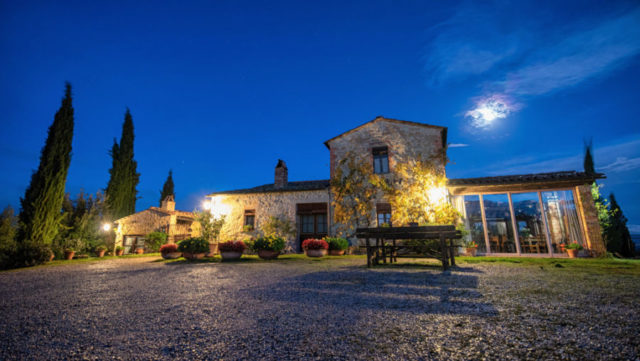
Italy has more than 20,000 agriturismi : farms that are subsidized by the government to introduce travelers to a unique pastoral lifestyle. Agriturismi are required to be working farms (that is, they must actually produce something) while also offering accommodations, restaurants, educational activities, or all of the above. Settling into an agriturismo , you meet fascinating locals and feel close to the earth. It’s like summer camp for grownups. We recommend our favorites in the Rick Steves Florence & Tuscany guidebook , and you can also find a comprehensive list at Agriturismo.it .
Read more about one of our favorite agriturismi : Cretaiole, just outside of Pienza.
Play “King of the Castle” atop a Fortified Tower
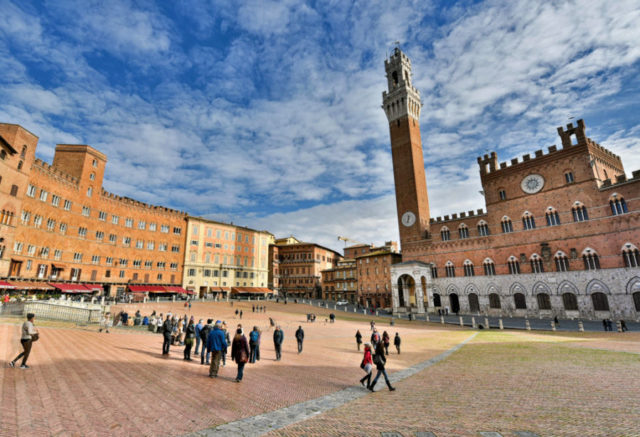
Tuscany is crazy about its towers — whether it’s the turreted townhouse of a wealthy local bigwig in San Gimignano, the fancy facade of a humble town hall in Montepulciano or Volterra, the towering City Hall of Siena, or the famously tipsy bell tower at Pisa’s Field of Miracles . Tuscany’s towers date from a time long before there was an “Italy” — when this area was a loose collection of city-states and wealthy families, all vying for the upper hand. Towers both served a defensive purpose and stood as status symbols for proud communities. That architectural legacy is a boon for today’s travelers, who enjoy climbing to the tops of these towers for views over the rooftops and rolling hills of Tuscany.
Learn more about the roots of Tuscany’s obsession with towers.
Lick Artisanal Gelato

My favorite gelato artist in Tuscany, Nicola Sgarbi, is a perfectionist…a total gelato snob. He makes several batches fresh every morning, so they’re not even available until mid-day. And then, in the late afternoon, when they’re gone — they’re gone. But if you’re lucky enough to hit his shop when he’s all stocked up, you’ll enjoy his explosively flavorful creations. Nicola goes all-in on seasonal flavors (creamy basil), surprising combinations (carrot-ginger, kiwi-spinach), and top quality. Nicola’s gelaterie — in Pienza and in Montepulciano — are just two of many great places to try top-quality gelato in Tuscany.
Get to know my favorite gelato artist, Nicola. Or study up on how to sniff out the best gelato wherever you go, anywhere in Italy.
Get to Know the Etruscans

Hold on! Stick with me. Don’t let your eyes glaze over. I know — when compared to things like gelato and Michelangelo and pappardelle alla bolognese , it’s hard to get excited about the people who lived in Tuscany 3,000 years ago. But the Etruscans may well be the most fascinating prehistoric people you’ve never even thought about. Not only did their advanced culture lay a foundation for the ancient Romans, and ultimately for all of Western Civilization. Not only did they warn Julius Caesar about the Ides of March and give their name to the region of Tuscany. But, despite all of this, the Etruscans left virtually nothing tangible behind — shrouding their distant civilization in mystery. A few tragically under-visited museums around Tuscany display what does survive, including delicate artwork (like the hauntingly beautiful statue called The Evening Shadow, or L’Ombra della Sera) and evocative funerary urns, showing Etruscans with big personalities lounging at an eternal banquet for the gods. Give the Etruscans a little bit of your touristic attention…and you may just find yourself entranced by the stories they have to tell.
Here are a few of Tuscany’s top Etruscan artifacts, and where to find them.
Sail Away to Elba for an Island Getaway

So much of the traveler’s Tuscany is rolling farm fields, world-class art, stony hill towns, and hearty, meaty cuisine. For a change of pace, consider hopping a ferry for the one-hour crossing to the little isle of Elba. I went there earlier this summer (researching a new chapter for the upcoming 18th edition of our Rick Steves Florence & Tuscany guidebook ) and was totally charmed by the place. Elba is synonymous with Napoleon, who was exiled here for 10 months after his bitter defeat. Today, touring his now-shabby residences is poignant. But there’s much more to this rocky little island: pebbly beaches, hardworking harbors, seafood dinners, and a truly terrifying gondola ride. Elba makes for a relaxing island escape from a busy Tuscan itinerary.
If you’re intrigued by the idea of splicing a little Tuscan seaside into your trip, check out my full report on Elba.
Take a Cooking Class
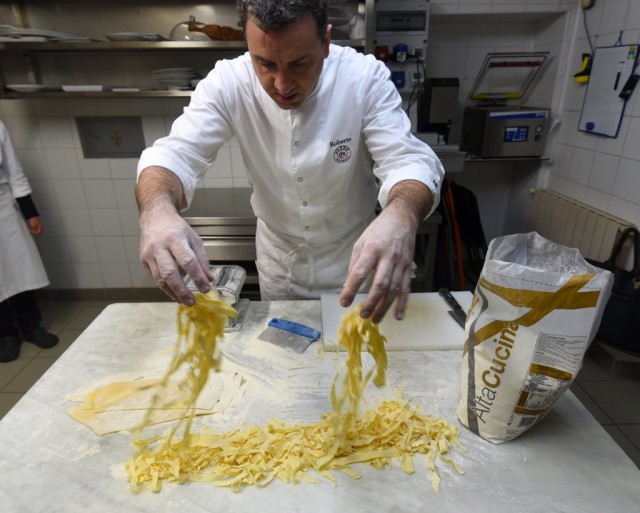
“Tuscan cooking classes” are an entire subgenre of travel. I’ve blogged more about that subject than I have about entire countries. That’s because this region has an outrageously appealing food culture — ranging from big, sloppy plates of pasta to refined high cuisine. And there’s a cooking class for every taste: hand-rolling pasta in a casual, family-friendly setting; going to the private residence of a talented home chef to assemble a seasonal feast; hanging out in the kitchen of a Michelin-star chef ; and everything in between. Also remember to look beyond the kitchen. While not technically a “cooking class,” going on a truffle hunt in a Tuscan forest — chasing after a smart-as-a-whip dog who has the scent of those precious deposits — gives you a whole new appreciation for a plate of truffle pasta.
For inspiration, here’s a rundown of my all-time-favorite Tuscan cooking classes.
Linger on a Convivial Piazza and Join the Passeggiata
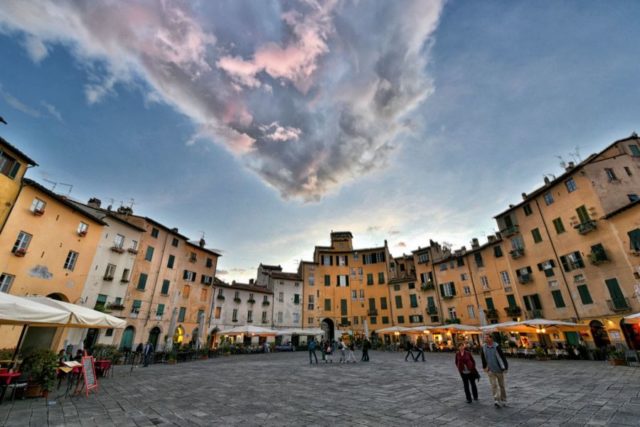
Tuscany is all about community. And there’s no better place to commune with the Tuscans than on the piazza, or main square — particularly in the late afternoon, when families are out strolling…doing those aimless laps that they call the passeggiata. Each Tuscan town’s piazza has its own special character: Florence’s is in the shadow of the towering Palazzo Vecchio. Pienza’s is a perfect Renaissance cube. Lucca’s follows the footprint of an old Roman amphitheater. And Siena’s — the best of them all — is a vast, slanted, brick-paved oblong that hosts a twice-yearly horse race. These are places where it’s actually worth paying way too much for a fancy aperitivo for the privilege of just hanging out at an al fresco table and getting serious about people-watching. Then, hop out of your chair and join the informal people parade as it promenades through the traffic-free town center. Become a temporary Tuscan. Come to understand the local saying, il dolce far niente — “the sweetness of doing nothing.”
Looking for the ultimate Tuscan piazza? Check out this “best of” list.
Visit Off-Season — and Have the Place to Yourself
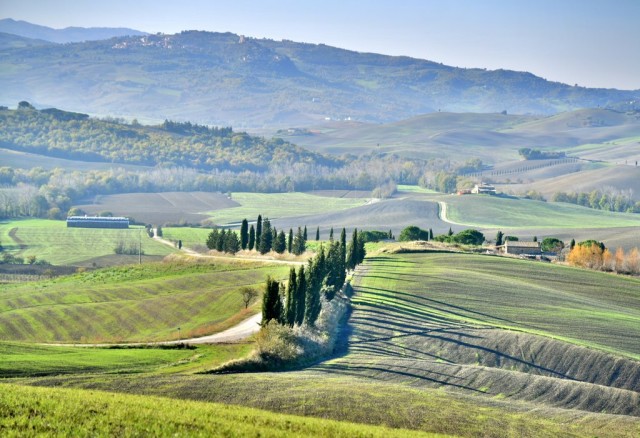
Tuscany — like other popular European destinations — can be extremely crowded. Fortunately, the region remains entertaining off-season, when things are much quieter. One of my all-time favorite trips to Tuscany came in late November . It was chilly but not cold, a crop of winter wheat blanketed the hillsides with a green vibrancy, seasonal ingredients (like chestnuts, persimmons, and truffles) infused each meal with autumnal flavors, and — best of all — we could simply show up spontaneously at museums and restaurants that would have been mobbed a few months before. While off-season travel comes with its downsides (cooler weather, earlier closing times, fewer daylight hours), visiting Tuscany outside of peak season can be a great plan for flexible travelers.
Here’s what to expect in off-season Tuscany.
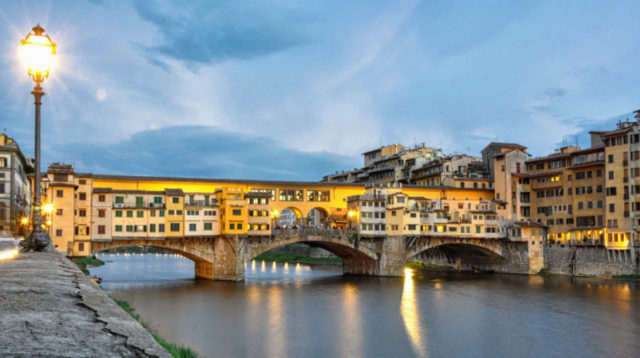
There’s so much more that I haven’t covered here — cycling around Lucca’s ramparts , taking a dip in the Roman-era hot springs of Bagno Vignoni, doing a tasting of high-end “Super Tuscan” wines at a Florentine enoteca — but hopefully this is enough to stoke your wanderlust for your next trip to Tuscany.
What have I forgotten? What are some of your favorite Tuscan experiences?
This roundup is designed to inspire you to pack your trip with quintessential Tuscan experiences. For all of the details on everything described here, check out our Rick Steves Florence & Tuscany guidebook .
Or…let someone else do all that planning. My inspiration for this piece is the arrival of our just-announced Best of Tuscany in 12 Days Tour , which weaves together, in some form or another, virtually all of the experiences I’ve described here. I’ve already signed up for one of the 2020 departures — just for fun (no work this time, I promise). Maybe I’ll see you there.
21 Replies to “How to Experience the Best of Tuscany: 12 Travel Tips for Italy’s Heartland”
Cameron, Just wondering if you, Sarah Corfield, or any of the guides (including Rick) have been to ‘Basco della Ragnaia’, just outside the village of San Giovanni D’Asso? It’s an interesting art garden of an eccentric (U.S., I think) artist, open to the public. I thought the village was fun, also.
It’s a great garden. The story behind that garden is very special. We had one of our most memorable lunch up at the castle restaurant in town.
Hi, Rick. Yes, I have been to that lovely garden! It is, as you describe, somewhat eccentric and an enjoyable place for a little walk. In fact, I went there once after a truffle hunt (with the hunter and his dog), simply to learn about the garden. Suddenly the dog got excited, started digging, and discovered a truffle right in the middle of a pathway through the park. San Giovanni d’Asso itself is a nice little town (and very striking from afar, since it perches on a little plateau). Many great truffle-focused eateries there…
My trip was in 2005, Loved it, wish I could live the there, did almost everything you suggested except cooking class, not enough time.
We stayed in an Agriturismo outside of Orvieto and had the most amazing farm to table communal meals there with guests from all over the world. Highly recommend!!
What was the name of the place you stayed? It sounds lovely. Thanks
What was the name of that farm to table? We are looking close to Orvieto!
Touring Tuscany in May 2016 was a dream…I was lucky to have a seasoned traveler to Italy with me……..trying hard to pack in Florence, Cinque Terre, followed by a leisurely week in Lucca ( followed by 5 days in Montepulciano )where we rented a lovely apartment and got to know the local baker and the veg &fruit lady…… we rented bikes and rode the rampart surrounding the town…..but the very best experience was a live concert of Puccini arias in a lovely old church ( since Puccini spent some time in Lucca….the town has claimed him as their own… with concerts one evening a week pretty much throughout the year…..front row….we could most reach out and touch the performers…..breathtakingly beautiful ! 4+ stars !
We attended that same opera while visiting Lucca. Then went on to have one of our most outstanding dinners while in Italy. It was one of our best memories of that trip.
We love Tuscany…have been to Cesare’s workshop where he made a gift for us. We stayed at a marvelous B &B in Montalcino. And a wonderful Agriturismo just outside Assisi….we had a glorious view of Assisi and could easily hear the church bells pealing. As an added bonus we were able to throw open our shuttered windows….it was April and the nights were cool…and one of the resident cats hopped through the windows and spent the night in bed with us!
I’m so excited cuz I’m booked on the September departure of the Tuscany tour. Thank you for this new tour and thanks so very, very much for all the wonderful experiences I’ve had with your tours. You have changed my life in such a wonderful way that I can’t even express. Happy Travels!!!
I want to move there! Looking into it…
Hi Steve, your Italy book recommended one of my favourite little towns, “civita di bagnoregio” if someone wants to travel off the beaten path. I found it a magical place to visit.
My wife, Sandy, and I have been to Italy several times and Tuscany is our favorite. Our last visit was in April, 2017 and we stayed two weeks in a condo located in the serene countryside near Assisi. We rented a little Fiat 500 and enjoyed day trips from our home base, buzzing along the narrow country roads throughout Tuscany and Umbria. We chose one destination per day, soaking in the scenery and ambience of each, visiting farmers markets and vineyards, and enjoying an inexpensive lunch (usually per Rick’s recommendations). Of course, we always indulged in a mid-afternoon gelato, too! During each day’s jaunt, we loved speaking with the locals in our limited Italian and they seemed to love (and get a kick out of) our attempts to do so! We usually returned late to our little condo and I cooked up the fresh veggies and pasta that we purchased for a few Euros along our journey, enjoying it with a little Tuscan vino and fragrant bread. Over dinner, we discussed our plans for the next day’s adventure. This was our favorite visit to Italy and our takeaways were: 1) spend a couple of weeks in one homebase location (if possible); 2) rent a vehicle for sightseeing in Tuscany; 3) Learn a little Italian and speak to the people you meet; 4) Try doing some of your own cooking with the amazing, fresh Tuscan produce; 5) Enjoy a daily glass of Tuscan wine and, of course, a gelato!
My wife and I have been to Siena three times, but the most memorable visit included two days before and after the New Year, especially because of the magnificent 360-degree video projection in the palazzo leading up to the New Year countdown. As fate–and the surprising Italian planning would have it–the video was completely Beatles themed, if I recall correctly. Everyone in attendance sang along to the group’s many hits and without a hint of an Italian accent. The thing that made the night most memorable, however, was that in the two or three hours before the celebration, a steady rain had been falling and we had waffled on whether to go to the party. We’ve always been glad that we decided to go. However, I’m still upset with the local guy who kissed my wife at the stroke of midnight before I did. (I just checked my records, and the end of this year will mark the tenth anniversary of that visit.)
PS: We don’t go to Europe without a Rick Steves’ book to guide us.
We have been to Cretaiole several times and it is our favorite place on earth. Isabella taught us to make pici. One visit was at Halloween, a fabulous time of year to go! The harvests and cooler air, the scent of roast chestnuts in Pienza, the warm uncrowded waters of Saturnia were unforgettable.
Tuscany and the Cinque Terre are our favorites. One night in Vernazza, we sat on the cliffs with a view of the full moon over the Mediterranean! And fireflies (none where we live) just added to the magic.
Ugh, five weeks from today I was heading to Italy to start the new Tuscany tour. Oh well. Hope to do it in the future!
Looking for recommendations for moving about Tuscany in Oct 2021. We are a group of 6 and we would like to spend 2-3 nights in area as we move from Cinque Terre to Florence. We think we’d like a driver/ vehicle so we could travel about together. To rent our own van doesn’t make sense. Also favorite lodging is appreciated.
Hello Cameron, Thank you for this delightful article. We all know how 2020 turned out but thankfully there is 2022 coming up and we signed up for this tour. I’ll be scouring more through the links you posted so we can maximize our time in Tuscany next year. Can’t wait!
Thank you Cameron..love all the information. Our 7th Rick Steves tour coming up! We just signed up for Best of Tuscany in May, 2022. We’ve been on the wait list..got in..so excited..celebrating my 71st B’day!
Comments are closed.
You are using an outdated browser. Please upgrade your browser to improve your experience.
Fall in love with Tuscany!
Ask the Tuscany Experts on our Forum
- Book your Hotel
- Rentals by Owners
- Museums & Tours
Get the lowest rate for your Hotel in Tuscany through Booking.com
Get the best deal direct from the owners on TuscanyAccommodation.com
Book your unique Tuscan Experience
Book your Tour
Book your Tickets ahead & Skip the line!
Buy Museum Tickets
- Tourist Info
- Things to Know Before You Go
17 Useful Things to Know Before Coming to Tuscany (& Italy)
Preparing for your first visit to Tuscany and Italy? We've compiled a list of essential things you should both know before coming as well as keep in mind while in Italy. These are some of the things I remember catching my notice from my first time in Italy and that I've grown used to, but that I realize are still particular to Italy at times that will help you mentally prepare before your trip.
In no particular order (read all the way to the end), here we go!
1. Forget all you think you know about Italian food
Italian food is very regional, so don't expect to find cannoli everywhere (they are a speciality from Sicily so make sure to eat lots when you go there!) or fettucini Alfredo , which many say is an Italian-American invention. You can find pasta with cream sauce in some areas, just not called by that name.
If you ask for peperoni on your pizza, you'll get sliced bell peppers, sometimes roasted, sometimes pickled (that's what they are called in Italian)! The closest equivalent of American peperoni on pizza is called " salamino piccante " and is spicier and smaller in size than what you're used to. I love it on my pizza so recommend you go ahead and try it and see what you think of it.

As far as salads go, don't expect a variety of salad dressings, you'll just find oil and balsamic vinegar (and salt and pepper) to dress up those greens.
You'll find Italian staples from bruschetta with fresh tomatoes (by the way, it is pronounced with a hard K sound like brus-ke-tta, not a soft -sh- sound like in church), delicious prosciutto on your pizza, delicious creamy spaghetti alla carbonara with pancetta and pasta al ragù (meat sauce, also called bolognese sauce).
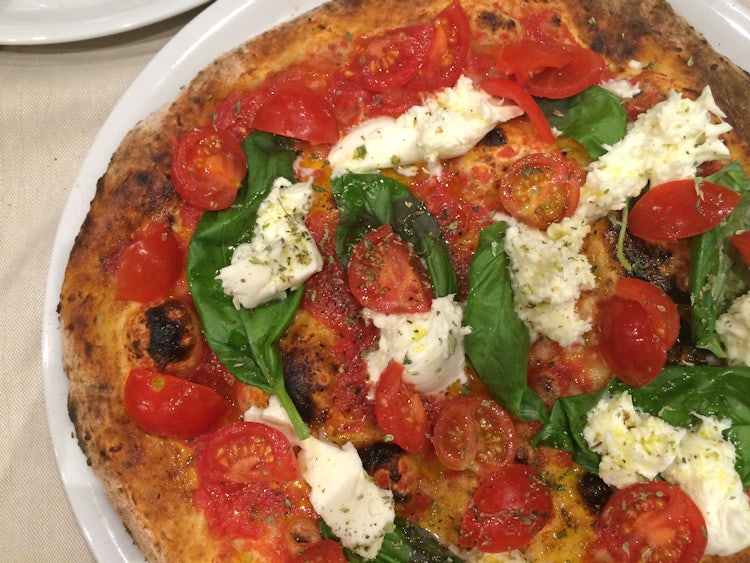
You will often find homemade fresh pasta on the menu (go for it!) and pizza can be either high or very low crust (high is Naples-style, while in Florence it is often very thin but you'll find pizzerias advertise their pizza is "Napolitan" to say they make crust thicker). Here's a bit more info on local Tuscan cuisine and another on our favorite pizzeria places in Florence .
2. Love Cheese? You'll love Italy!
Then you'll be in heaven! Italy, just like France, has many delicious cheeses , many fresh or seasoned and many types. Nothing you find back home will compare, so take advantage while you're in Italy.
In Tuscany, make sure you taste lots of PECORINO cheese , made from sheep's milk, which you can find fresh, semi-aged and aged. Each has its own flavor, so taste, taste and taste some more! Especially if you're in Pienza in the Val d'Orcia area, where it is a local specialty. Read more about Tuscan cheeses here; if you're interested in a private cheese & wine tour in the area, take a look at this one or this one (departing from Florence).
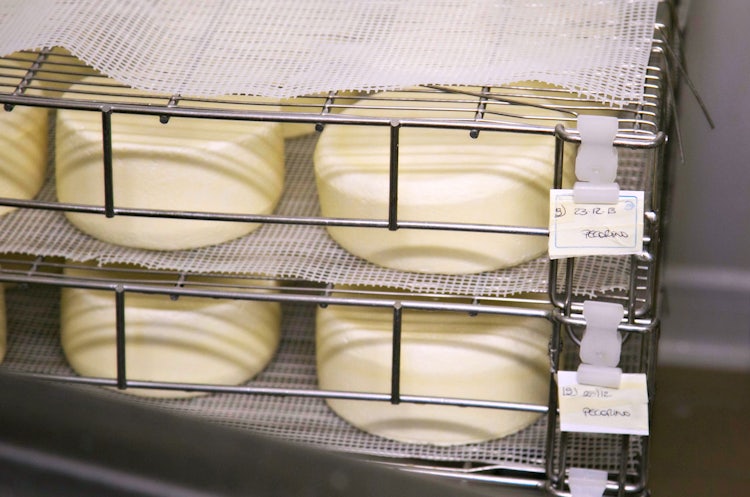
3. Love Wine? Tuscany has many, many options!
Same goes for wine - each region has many wine regions and its own specialties, so take advantage and taste the local wines wherever you are, you will likely discover something new and different you won't find back home!

There are many wine regions within Tuscany alone, so when eating out, don't ask for Chianti Classico everywhere you go. I suggest you ask for what's local in whatever area you are, so that you can try other reds (and whites) from Tuscany that you might never have tried otherwise.
Think of the Montepulciano Wino Nobile , the Brunello from Montalcino , the Morellino di Scansano in Maremma, the Vernaccia from San Gimignano , to name a few other Tuscan wine areas! There are many more!!
4. Choose Gelato wisely
You might think what can be wrong with gelato, but there really is good gelato and crappy gelato as well. You will be able to taste the difference once you have many - so we highly recommend including lots of gelato tasting while in Italy!
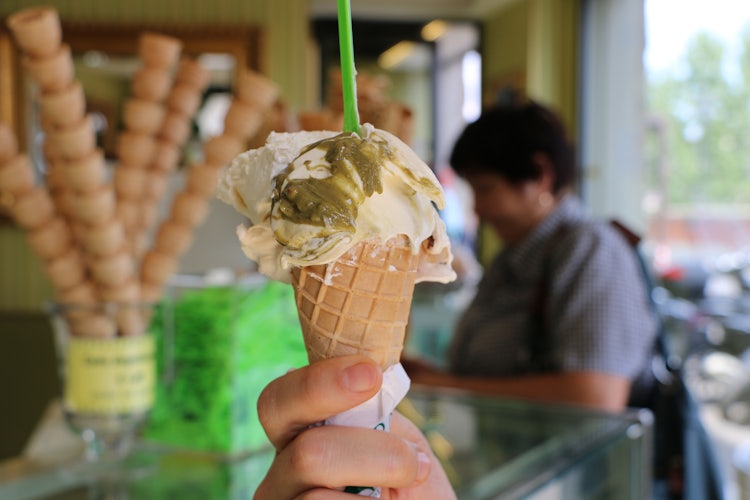
To avoid getting not so great gelato from the start, one simple thing to do from the start is to stay away from the shops with literally a mountain top of gelato. While there are many gelaterias, especially is smaller towns, who still have gelato on display, the ones in the center of Florence that cater to hundreds of tourists a day work on quantity, not on quality. Instead look for shops that say "gelato artigiano/artigianale", which means they make their gelato in the shop, with fresh ingredients. Take a look at our favorite gelato shops in Florence for some suggestions on where to go when in Florence!
5. Summer can get HOT, and air conditioning is not widely used... BUT you might not be need it!
It's important you know this - Italy can be quite hot in the summer! Especially as you plan where to go, where to stay and plan the perfect itinerary for every day you're here, it is important to take this into account. In summer, carry around water with you at all times and plan to spend the hottest hours indoors, like visiting an art museum or one of the many magnificent churches you find all over Tuscany. These are incredibly cool even with no air conditioning!
I think it is the perfect excuse to eat more gelato , of course! ;-)

In any case, as far as accommodation goes , don't worry! This is the reason why farmhouses sit atop hills . Also, thick walls keep heat out, the vantage point catches any breezes, especially in the evenings. Evenings do cool down which is when you'll be around. So even if there is no A/C at your chosen lodging, you should still be okay, being able to sleep well at night in summer - and likely needing heating in the late fall and winter.
6. Pickpockets do exist - unfortunately!
I am saying this is so that you prepare for the worst, and not fall victim to a dumb crime we could avoid if we pay a little more attention to our surroundings.
Pickpockets keep busy during the high season months , especially at crowded tourist sights and in the larger cities. Think Piazza dei Miracoli in Pisa , as we all try to pose for a photo of catching or holding the tower up (it happened to us! :-( ) or in Piazza del Duomo in Florence as you admire the cathedral.
If you use public transportation and get on a full bus with people crowded around you, be extra careful of where your wallet is (for example, keep purse in front of you, zip all the pockets up, move wallet to a front pocket) as they like to get on crowded buses and be right there next to you invading your personal space. You might not notice when they slip a hand in and take it off your person.
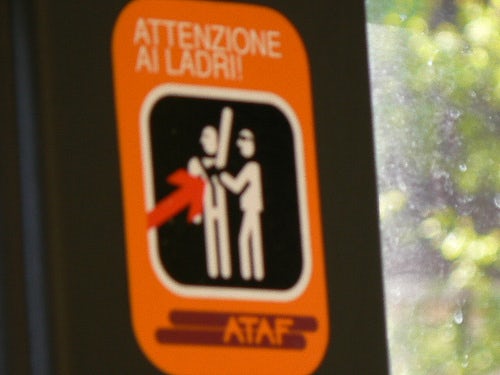
Pickpockets look for the distracted tourist, but locals are hit too. Keep your bags zipped up and close to you, not on your back while you're on a bus or do not leave bags on the ground when on a train (they can sneak from below from the seat behind you!). In general, you'll feel pretty safe in Italy and it is safe to visit but look smart and aware of your surroundings so you won't be targeted.
7. Breakfast is small and quick

Most common breakfast for Italians is a brioche or small pastry with coffee . It is also very common to eat standing up at the coffee bar counter instead of sitting down, as some places will charge extra if you sit down.
Note that a BAR in Italy is where you drink coffee, not where you go for alcoholic drinks! This is the reason why you'll see so many "bar" signs everywhere you turn! ;-)
8. Wi-Fi coverage is spotty
While Wi-Fi coverage continues to improve across all of Italy, don't expect it as a given everywhere across the country - and in many areas it is spotty even when it is. If it is particularly important to have where you are staying, make sure to ask about how good of a connection they have. We have traveled to places who say they have Wi-Fi or internet, only to arrive and find it doesn't work. Depends on the regions you find yourself in, and between larger and smaller cities. In general, in Tuscany we have found good coverage in towns and spotty coverage in the countryside. This is true for cellphone carriers as well, if you bring along your phone and plan to use bandwidth to work.
Nowadays, lots of cafés and restaurants offer WiFi, but it is often password-protected to offer it only to clients and not passerbys.
9. Cappuccinos & espressos are everywhere... and cheap!

Average cost for espressos is under 1 euro, cappuccinos under 1.50 euro - but don't expect extra flavorings or fancy drinks such as pumpkin spice lattes! If you want a latte, ask for "un caffe con latte" since just "latte" will get you a glass of milk ;-).
10. Tipping / "Coperto" at restaurants
"Coperto" is service charge for the plate/cutlery used and bread (you'll find the cost for the coperto on the restaurant menu, generally at the bottom of the first page). While coperto is required and included in your bill, tipping isn't included nor added on as on option. If you get great service, feel free to add a few euro to the total or round up on your total bill. In general, there is no set % expected for tips. A tip for service is always welcome, by locals and tourists alike and you decide what you want it to be.
If you sit down at a coffee bar, expect to pay a bit more for your coffee. A tip or coperto is not charged, unless marked as service on your menu (check before sitting down if you're interested in keeping costs down).
11. Public Transportation: Always validate your bus and train tickets

Buying bus or train tickets is not enough, as they are "open-ended" (no date on them) and not for a specific bus or train (valid for all buses or regional trains, for example). So before getting on the train or as soon as you get on the bus, you MUST "validate" the ticket by putting them in the small machines that stamp your ticket with date and time. The tickets above show bus tickets in Florence, the left one without the validation, the right one already validated (ticket price has gone up since this photo was taken to €1,50).
At the train station, look at other travelers as they head for the tracks to see where the machines are. They are generally before you access the train tracks .
On buses they are near the front and back doors . If a ticket controller comes along, on the bus and train, he wants to see that stamp on your ticket ! Otherwise, there won't be any excuses of "not knowing" and you'll be unhappy with the hefty fine you'll receive, often times the fine is requested to be paid on the spot, especially if you're a tourist.
Below is a photo of the ticket validating machines at the train station.
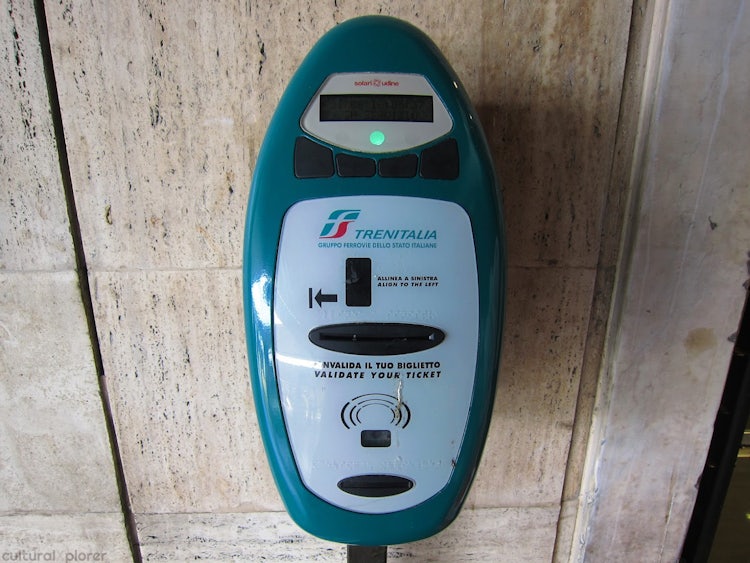
12. The "riposo / pausa pranzo" (lunch break/siesta) still exists
While this is changing in larger cities and with larger shops, which remain open with "orario continuato", smaller towns and small shops still function with a pause in the middle of the day, generally from 1-3.30/4pm. This applies to stores and shops, including clothing boutiques and hair salons, where small shop owners go home, eat with family and take a break before returning back to work. So you cannot do any shopping at these times as the shops are closed !
Shops are allowed to be open only for a limited number of hours per day, so they longer closings at lunch (when other people are working or eating) also mean they stay open longer in the evening , generally until 7.30-8pm. This gives working people the chance to get out of work and be free to go shopping. Nowadays, the pausa pranzo is more of a profitability matter than a need to relax.
Also take note that most shops are open on Saturdays, closed on Sundays and Monday mornings , reopening Monday afternoons after lunch.
13. Plan to eat late at dinner, but make sure you're on time at lunchtime!
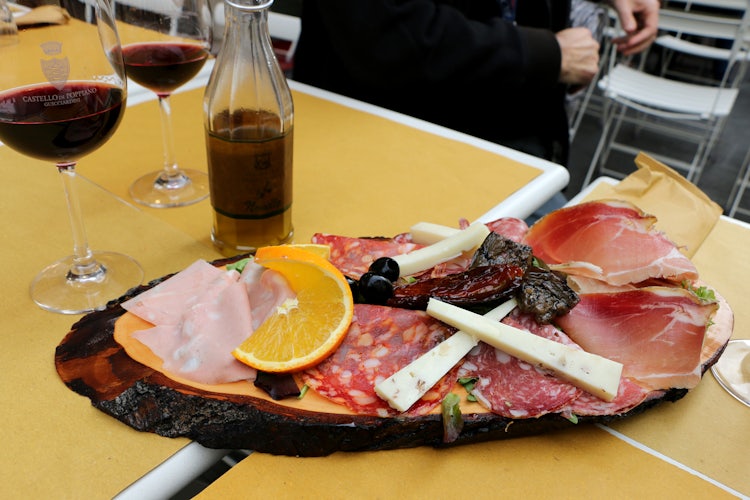
Since lunch is always around 1pm (restaurant kitchens start closing up around 2.30-3pm), make sure you are on time for lunch . Otherwise you will be going around looking for a place to eat and only find ready-made panini at bars and such. Which is fine if you wanted something like that, not if you wanted something more substantial at a restaurant.
Dinner is generally around 8pm on average and often goes late, with many restaurants and trattorie open until 11pm-midnight. Most open at around 7pm so you won't be able to eat any earlier... unless you head to the ones aimed at tourists which are open all day. We generally avoid those!
14. "Café culture" is non-existent
If you're used to going into a coffee shop and sitting for hours with a laptop to work (or just web surf), you'll find it difficult to find such spots in Italy - although there are a few, and growing. The local culture for coffee drinking (remember they are called bars) is to generally stand at the counter, drink your small amount of coffee (the cups of coffee known as espresso outside of Italy are tiny!) and then leave.
Consider that going to a bar to drink coffee is a break from work , so you don't go to a coffee shop to work !
There are many elegant coffee shops in the center of Florence, for example, that do have large seating areas that will encourage you to sit and take your time. But again, not necessarily for work purposes. Many of the ones in Piazza della Repubblica in Florence are actually "historical cafes" are date back to the times when they were social meeting places for cultural reasons, where many writers, painters and philosophers hung out to talk and discuss about their thoughts and work. They still didn't "work" there, though, it was for social gathering and while these meetings might have impacted their work, go visit them and consider this as the setting they played in the past.
Smaller towns have small bars that have tables to sit down and take your time, particularly as a social gathering place. But again don't expect to sit and work while there. Wi-fi coverage is spotty, at best, but small bars do not offer this as a service. See above for more details on that point.

15. English spoken everywhere... but a few Italian phrases will go a long way
Italians are an extremely friendly and polite people , but learning a few words in Italian will get you a long way as you travel up and down the Boot. It’s easy too!
- “ Ciao ” can be used for hello and goodbye but it is extremely informal: better to use " buon giorno " (good day) or " buona sera " (good evening) to greet and " arrivederci " to say goodbye.
- “ Grazie ” is used everywhere to say thank you and, if you're mistakenly taken for an Italian, just simply say “ Non capisco ” (I don’t understand) to let them know you are not understanding what else they were saying. You can add "non parlo Italiano" but I believe it is understood by that point.
16. Major travel hubs are Rome, Florence, Bologna and Naples
If you're traveling across Italy, plan your itinerary in a linear fashion. Most trains and buses will head to large hubs on their way elsewhere, so if you don't want to be backtracking , plan the order of your cities as best as you can, including using one as a base from which to do day trips to nearby areas. Take a look at the main rail lines below if you're getting between towns by train.

17. And finally, know that Italy is VAST & Different, no matter its size
You might think Italy looks small on a map and you can travel all around in just 7 days, but it is very different from north to south.
There are 20 regions in Italy and each one has its own specialities even as far as foods and wines go, but most of all, in its traditions. It is amazing how so many things can be the same as well as different.
There is much to explore and see around the country, and each place is packed with things to see (our whole website is just dedicated to just Tuscany for a reason! ;-) ).
So give yourself time to explore and discover each place, even roaming around and getting lost.... maybe slowing down and taking more time at each place, not trying to see everything in just a week!
If your time is limited, consider using an organized tour as a good solution to see the top sights in Italy, as it helps cut time in moving around. Consider this 6 day small group tour which includes Rome, Florence, Pisa and Venice or this 7 day tour which includes Cinque Terre, Florence, Venice and Rome. In any case, if you want to add a visit to the Colosseum in Rome, make sure to book your tickets to the Colosseum ahead of time, as well as your entrance tickets to Pompeii . They save you time by skipping the very long lines! Skipping long lines is always a good thing ;-).

Hope you've found our general tips useful - share any you found useful while traveling in Italy and Tuscany with us!
This page contains affiliate links . Read more details »
Related Sections
- Florence Tourist Info
- holiday apartments
You Might Also Like
Practical information: before you arrive, national holidays in italy, moving around tuscany by car, fines in tuscany, getting to tuscany by air, practical information & fun things to know, top experiences in tuscany.

Author: Lourdes Flores
I'm from California but have called Florence my home for over a decade. I love to explore Italy; it is a lot of fun to try to see everything like I'm seeing it for the first time, keeping you, our readers, always in mind. I enjoy sharing what I know and helping others as they make their travel plans for Tuscany through our Forum . If you have itinerary-related questions, please post them there!
You'll love reading about...

A list of practical information about money,...
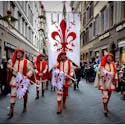
Read all about the Italian calendar and...
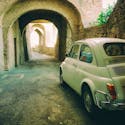
Tips and suggestions to help prepare for...
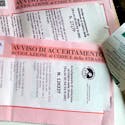
It is unfortunately very common to receive a fine while visiting...
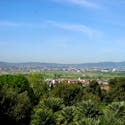
Information on Tuscany's main airports - in...

A quick review of practical information for a...
Questions? The right place to ask is our Forum *
* Questions posted on Comments above will no longer receive replies: please ask on our Forum !
Our Travel Guides
- 2024 TRAVEL UPDATE
- Work with us
- Beyond Bologna
- Italy Travel Guide
- Itineraries
- Accommodation
- Regions of Italy
- Ultimate Italy Travel Planner
- City Planners
- Essential Guides
- Italy themed gift ideas
- Trip planning services
tuscany TRAVEL GUIDE
Do picturesque Medieval towns, rolling green hills covered in vines, cypress-lined roads, and some of the most delicious food in Italy sound like your idea of paradise? Then you need to visit Tuscany.
Home to the Renaissance capital, Florence, the region is renowned for its art history, Chianti wine, beautiful cities, and charming small towns that have inspired films like Under The Tuscan Sun and a whole suite of dreamy literature. Considered by many to be ‘quintessential Italy’, Tuscany is one of Italy’s biggest regions and it offers visitors many diverse experiences from city to countryside as well as the seaside along the Mediterranean coast.
Whether you’re dreaming about a trip to visit the Leaning Tower, sipping a glass or two at a Chianti winery, or eating the famous Florentine steak, travel in Tuscany is truly a dream come true for many. Keep reading to find out how to make the most of your time there with our Tuscany travel guide.
Where is Tuscany
Tuscany is nestled in the middle of Italy and on its western border are the Ligurian and Tyrrhenian seas. including an archipelago of 7 islands off the coast. The region borders Liguria, Emilia Romagna, Le Marche, Umbria and Lazio.
Florence is the capital of Tuscany and is easily reached from Rome in an hour and a half on the fast train; from Milan in two hours; and Venice in just over two hours. When visiting Tuscany by car, it is remarkably quick to enter into the countryside from Florence – the Chianti region is just 35km away.
Map of Tuscany
Main cities and towns in tuscany.
Tuscany is the fifth largest region in Italy and is divided into different areas that each offer something new to discover from art and local traditions to wine, olive oil and the seaside. Some of our favorite Tuscan towns to visit include:
- Florence: A trip to Tuscany is not complete without passing through Florence considered to be the birthplace of the Renaissance. Art and history lovers will delight as they stroll the streets once home to Leonardo da Vinci, Michelangelo, and Botticelli, and visit the Uffizi and Accademia Galleries as well as the Pitti Palace and Boboli Gardens.
- Lucca : Encircled by Renaissance-era walls, Lucca is one of the most charming towns to visit in Tuscany (and beyond!) A trip to this gorgeous small city could include a bike ride along the walls, visiting the Piazza dell’Anfiteatro (built over an ancient Roman amphitheater), stunning villas like Villa Garzoni and Palazzo Pfanner, as well as Casa di Puccini – home to the great opera composer.
Chianti / Siena Area
- Siena : Long time rival of Florence, this medieval city is stunning in her own right. Siena is a place where traditions run deep, best embodied by the continuation of the Palio horse race that has been running since 1232! Explore the UNESCO Heritage-listed old town, 12th-century Cathedral, and of course, the Piazza del Campo where the Palio is held every year.
- Greve in Chianti : In the heart of the Chianti wine region, Greve is a gorgeous town famed for wine, extra virgin olive oil, and the truffles that grow in the surrounding countryside. Wine shopping is on the cards here, as well as a delicious lunch in one of the town’s many excellent restaurants.
- San Gimignano : Considered the ‘Medieval Manhattan’ thanks to its dozen towers still standing, San Gimignano is one of the most picturesque and atmospheric towns in Tuscany. Don’t miss climbing up one for a fabulous view! While you’re there, feast on their famous saffron, ham, with a glass of local wine – Vernaccia di San Gimignano.
Val D’Orcia
- Pienza : Cheese lovers will want to visit Pienza to try their incredible Pecorino sheep’s milk cheese! Redesigned by Pope Pius II to be a ‘utopia’, the town is full of charming cobblestoned lanes, romantic street names, and the scent of fresh cheese wafting through the air at every turn. Enjoy breathtaking views of the Val D’Orcia countryside from the Piccolomini Palace gardens.
- Montepulciano : In the heart of Tuscany’s southern wine country, Montepulciano is said to be one of the most beautiful Tuscan Medieval hilltop towns. Indulge in wine tasting of the Vino Nobile di Montepulciano and feasting of cheese, pork, thick hand-rolled pasta, honey, and lentils here.
- Montalcino : To enjoy some of the most stunning views over the Arbia, Asso, and Ombrone valleys, you can’t miss a stop in Montalcino. Covered with olive orchards and vineyards, Montalcino is known for its Brunello di Montalcino wine so plenty of tasting is recommended here.
READ: Our full guide to visiting the glorious Val d’Orcia .
Arezzo Province
- Arezzo : The setting for Academy Award winning film La Vita e’ Bella (Life is Beautiful), Arezzo is a total gem. Settled by Etruscans, it is full of fascinating history and architecture that also spans across Roman, Medieval, Renaissance, and Romanesque periods. Visit to enjoy quiet piazzas, long lazy lunches and the monthly antiques fair.
- Cortona : Made forever famous thanks to Frances Mayes’ Under the Tuscan Sun , Cortona is a sweet Medieval town with Etruscan roots and incredible hillside views across the Valdichiana valley and Lake Trasimeno. Wander its narrow streets, admire the Medieval architecture, and pay a visit to the Museo dell’Accademia Etrusca to learn more about its past.
Province of Pisa
- Pisa : Made forever famous thanks to the Leaning Tower , you can’t miss the main attraction of this city. However, you should linger a little longer in Pisa. A trip to this university city will uncover beautiful historic churches, Medieval castles, and ancient bridges across the River Arno. Strolling through the beautiful old town pre or post ‘tower-selfie’ is something many visitors miss out on in their rush to see the main attraction.
- Volterra : We think it’s impossible to visit too many pretty hilltop towns, and Volterra is a highlight. A walled town perched atop a mountain, Volterra has a long and fascinating history that dates back to before 8BC. Explore along the ancient walls and fortresses and go shopping at one of the many artisan shops in town.
Tuscan Coast
- Grosseto : The capital of Tuscany’s ‘ Maremma ’ coast, Grosetto is an interesting town rebuilt by the Medici family in the 16th century. Visit the Archeological Museum, Dante Alighieri Square, and Cathedral of San Lorenzo.
- Porto Ercole : Don’t miss this pretty seaside town in the Maremma along the Monte Argentario peninsula. Enjoy swimming and boat trips, exploring Spanish forts and indulging in the delicious seafood-focused cuisine.
- Capalbio : A charming town on the border of Tuscany and Lazio, Capalbio is also known as the city of artists. Don’t miss the Tarot Garden full of gigantic, grotesque statues created by Franco-American artist Niki de Saint Phalle. It’s also particularly famous for its wild boar sagra (food festival) in September.
- Elba Island : Enjoy sparkling blue waters, and nature on this little piece of Tuscan paradise. Devoid of the crowds that flock to the more well-known coastal areas of Italy, you can enjoy some tranquility and gorgeous beaches here.
Top things to do in Tuscany
Whether you are a foodie, wine connoisseur, history buff, art lover, beach goer, or nature enthusiast, there is truly something for everyone in Tuscany. Here are some of the best things to do when traveling in Tuscany:
Taste the celebrated local wines
Home to some of the best known wine in Italy, wine tasting is one of the best things to do in Tuscany. Visit the Chianti region to try the famous Chianti Classico wines made with Sangiovese grapes or head to the Val d’Orcia to try Brunello di Montalcino or Vino Nobile di Montepulciano.
Enjoy a stroll along the vines, and pay a visit to the cantina (cellar) to see how wine is made, before sampling the wine. Be sure to make an appointment to visit a winery in advance as you can generally not just turn up unannounced in Italy. An exception to this is Marchesi Antinori where you can drop in for a tasting at their futuristic wine room. Or, better yet, relax while everything is taken care of and consider joining this popular small group wine tour from Florence .
Explore Tuscany’s many Medieval towns
There are endless beautiful Medieval towns to visit in Tuscany so be sure to add some to your itinerary. Sweeping views over vineyards and olive groves are guaranteed, as is delightful meandering along cobblestoned paths, fantastic local food and popping into artisan workshops. If you’re not planning to drive, consider joining a day tour like this day trip from Florence to explore some of the top towns in Tuscany plus have lunch at a winery.
Relax at a thermal spa
Did you know Tuscany is famous for its healing thermal spas? The most famous to visit is Saturnia where thermal warm water cascades down the slope of a hill into gorgeous pools of 37°C water for you to bathe in. Besides the free baths, you can also visit many luxury thermal spa hotels in and close to the Val d’Orcia area like the Terme di Saturnia Resort .
Explore the best art galleries in Florence
If you’re a lover of art, then you really cannot miss a trip to Florence. Start with the world-renowned Uffizi Gallery, home to Botticelli’s “Birth of Venus”, statues by Michelangelo and more. Next, you’ll want to visit the Galleria dell’Accademia where you’ll find Michelangelo’s original and magnificent statue of David. Get the most out of your trip with a guided tour with LivTours .
Go truffle hunting
Try your luck finding the elusive white or black truffle when in Tuscany! The best area in Tuscany for truffle hunting is near the town of San Miniato. Try this tour that includes a delicious truffle- laden lunch after your hunt in the area. In fact, the town hosts a spectacular truffle sagra (festival) every weekend in November which is well worth the trip.
Bike around Lucca’s Renaissance city walls
Lucca is a jewel of the region and easily reached from Florence by car or train. Do as the locals do whilst there and hire a bike for the day to ride around the city walls and take in the gorgeous views with the wind in your hair. Try this bike tour that includes some stops to sample typical cuisine too!
What to eat and drink in Tuscany
Tuscany is home to many delicious specialties, but some favorites you can’t miss include:
- Bistecca alla Fiorentina: Perhaps the most famous food in Tuscany is Florentine steak. This cut of beef comes only from the white Chianina cows found in Val di Chiana, is served on the bone and is dry-aged for between 15 to 20 days. Florentine steak must be served rare for the ultimate mouth-watering experience.
- Lampredotto : Florence’s favorite street food is a panino filled with the fourth stomach of a cow and a zesty salsa verde
- Cinghiale pasta : wild boar pasta served with long pappardelle noodles.
- Ribollita : a hearty Tuscan bread and vegetable soup, including locally grown cavolo nero (black kale)
- Finocchiona Salami: Tuscany is known for its spectacular cured meats, but perhaps the best is the finocchiona – a pork salami flavored with fennel.
- Schiacciata di Uva: Look out for this treat during the harvest season (September-October). It’s a fluffy bread made with focaccia dough and small, sweet, black grapes called uva fragola .
- Castagnaccio : A Fall/Autumn favorite, this chestnut flour cake is made with new olive oil, raisins, and pine nuts and is both gluten-free and vegan-friendly.
- Extra Virgin Olive Oil: Peppery Tuscan EVOO is revered throughout Italy. If you are lucky enough to travel to Tuscany in Fall/Autumn, look out for ‘olio nuovo’ or new oil that has just been pressed for the best olive oil tasting of your life.
- Chianti Classico: Tuscany is known for many wines, however, Chianti Classico is the most quintessential. Don’t miss tasting some on your trip.
LISTEN: Our episodes on the mouthwashing dishes of Tuscany in Spring and Winter .
Where to stay in Tuscany
There are many different accommodation options available in the region including hotels, apartments, B&Bs, and agriturismi (farmhouses). Tuscany is no stranger to tourism, which means that there are well-established facilities built up in the region to suit a range of group sizes, budgets, and accommodation needs.
Florence makes for a great base to explore Renaissance art as well as day trips into the Chianti countryside. Whether you’re driving, going with a tour group, or taking public transport, you can also easily visit Siena, the Val d’Orcia, Pisa, Lucca, and Arezzo for the day from here.
We like the St Regis Hote l for 5-star luxury or try a more budget-friendly option that’s extremely well located like Hotel Perseo . Take a read of our article on where to stay in Florence for more ideas.
If you’d like to immerse yourself in the countryside for a few days, then consider staying in the Chianti or Val d’Orcia areas. Castellina in Chianti, Pienza, and Montepulciano all make wonderful bases for exploring wineries, and hilltop towns. Consider staying at a winery like Querceto di Castellina or an agriturismo like Merigge Montepulciano for a more immersive experience.
Lucca is another excellent base to escape the crowds with easy access on the train to Florence. From here, you can explore the Garfagnana area too with a car. Find our recommendations in our guide on Where to stay in Lucca .
Siena is perfectly placed for visiting the southern part of Tuscany, the Val d’Orcia, if you prefer to have city accommodation and are prepared to drive as this area is not well serviced by efficient public transportation.
For those looking to soak in what life in a real Tuscan town is like, consider basing yourself in beautiful Arezzo instead. It’s well connected by train and lacks the crowds of Florence and Siena.
When to go to Tuscany
Spring is a wonderful time to visit Tuscany as the countryside turns green and temperatures are pleasant for exploring (46-66°F or 8-19°C). Enjoy new season artichokes, fresh fava beans, fresh cheese and plenty of food festivals like the cherry sagra or the frog festival.
Summer in Tuscany can get very hot with temperatures easily reaching 86F(30C) and beyond. Florence gets particularly hot and humid during this time, so staying outside the city and having access to a swimming pool or the beach is a good idea.
Fall/Autumn is a wonderful time to visit as the region comes to life with the harvest season . If you’re a foodie, you’ll enjoy truffles, porcini mushrooms, saffron, new wine and extra virgin olive oil as well as a suite of sagre or food festivals. Look out for the sagre (food festivals) in Panzano and Greve where the towns are decorated with flags and colorful decorations, as well as the Pecorino di Pienza festival dedicated to the delicious sheep cheese.
The wintertime in the region can get very cold and even snow with temperatures around 38-42°F (3.5°C – 5.5°C). During the festive season, there are wonderful Christmas markets held all over the region, particularly in Florence, Siena, and Arezzo. Prices are a little cheaper and crowds a little thinner too after the new year.
How to get to Tuscany
It might surprise you to learn that the main airport in Tuscany is Pisa and not Florence. Florence is a very small airport that doesn’t have great connections so consider flying into Pisa instead from abroad or other major Italian cities.
Traveling by train to Tuscany is easy from the major Italian cities. Take the high speed rail services and you can be in Florence in 90 minutes from Rome, 2.5 hours from Venice, under 2 hours from Milan and around 40 minutes from Bologna.
If you’re driving, you can reach Florence from Rome along the A1/E35. The average travel time ranges between 2 hours and 30 minutes and 3 hours and 15 minutes depending on traffic. From Milan, you’ll travel south along the A1 with travel time around 4 hours. From Venice, the trip is a little shorter around 3 hours along the A13.
How to get around Tuscany
Florence is best explored by foot and a car will only frustrate so it’s best to leave this parked during your stay in the Renaissance city.
There are reliable and fast regional train routes to Lucca, Arezzo, and Pisa. Florence to Lucca takes around 1 hour and 40 minutes, whilst Pisa and Arezzo are quicker and take less than an hour by train. Getting to Siena however, takes about two hours so is much slower via train. Book your train tickets in advance online with Omio .
It’s best to hire a car to explore the countryside including the Chianti, Val d’Orcia, and Maremma regions. We recommend renting your car with Autoeurope or Car Rental by booking.com from the airport (Pisa or Florence) to avoid navigating through sometimes stressful driving in the city centers. Read our driving tips for Italy for more information.
For those not wanting to drive, consider hiring a private driver or joining a tour to experience the best of the countryside.
Let’s go to Tuscany!
Are you inspired to visit after reading our travel guide to Tuscany? If you would like to learn more about this gorgeous region of Italy, have a listen to our podcast episode about the Chianti region , exploring Florence , visiting favorites like Pienza , as well as going off the beaten track to the Garfagnana area , the coast of the Maremma , enchanting Arezzo and other secret towns under the Tuscan sun .
We have a wealth of further information available on our site to read including articles on best agriturismi in Tuscany , hidden gems in Florence , best museums in Florence , and Florence highlights . And on visiting the popular historic cities like Lucca and Siena .
Want to discover Tuscany with us? For a deeper local connection, why not join one of our Tuscany small group tours .

©Shaiith/Getty Images

Check out this year's Best in Travel winners
With its lyrical landscapes, world-class art and a superb cucina contadina (farmer's kitchen), the Tuscan experience is perfectly in symbiosis with the land.
Attractions
Must-see attractions.
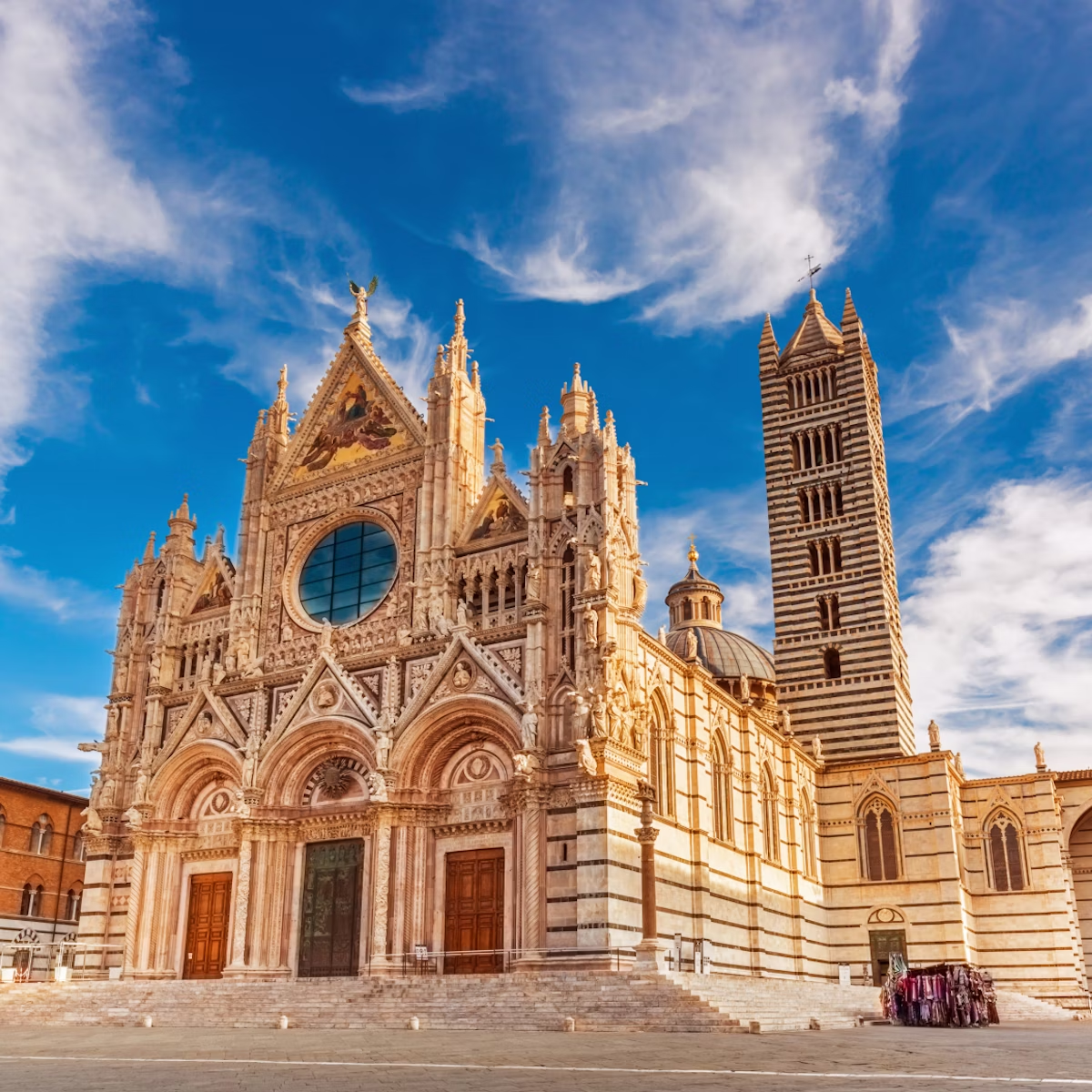
Consecrated on the former site of a Roman temple in 1179 and constructed over the 13th and 14th centuries, Siena's majestic duomo (cathedral) showcases…

Museo Civico
Entered via the Palazzo Pubblico's Cortile del Podestà (Courtyard of the Chief Magistrate), this wonderful museum showcases rooms richly frescoed by…
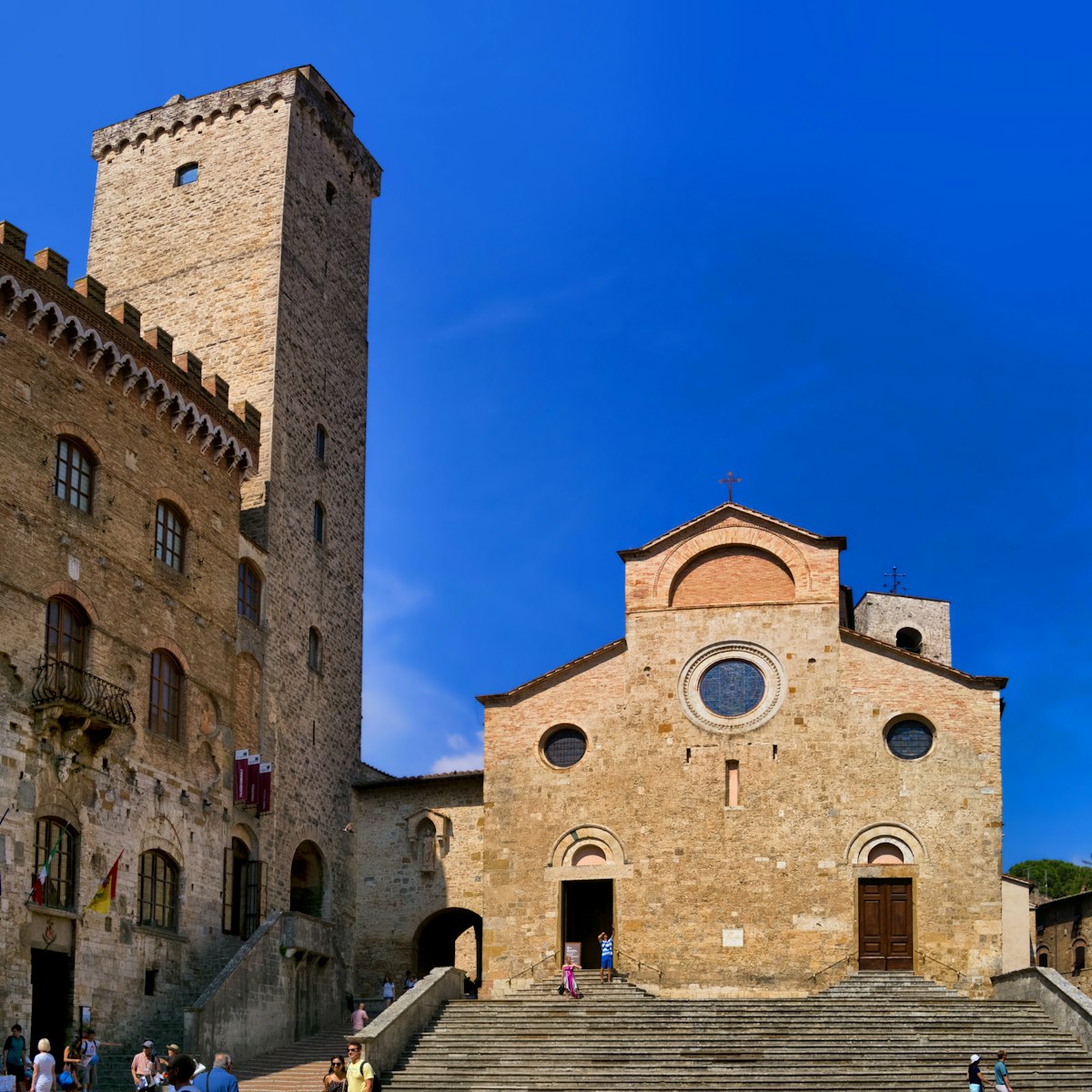
San Gimignano
Parts of San Gimignano's Romanesque cathedral were built in the second half of the 11th century, but its remarkably vivid frescoes, depicting episodes…
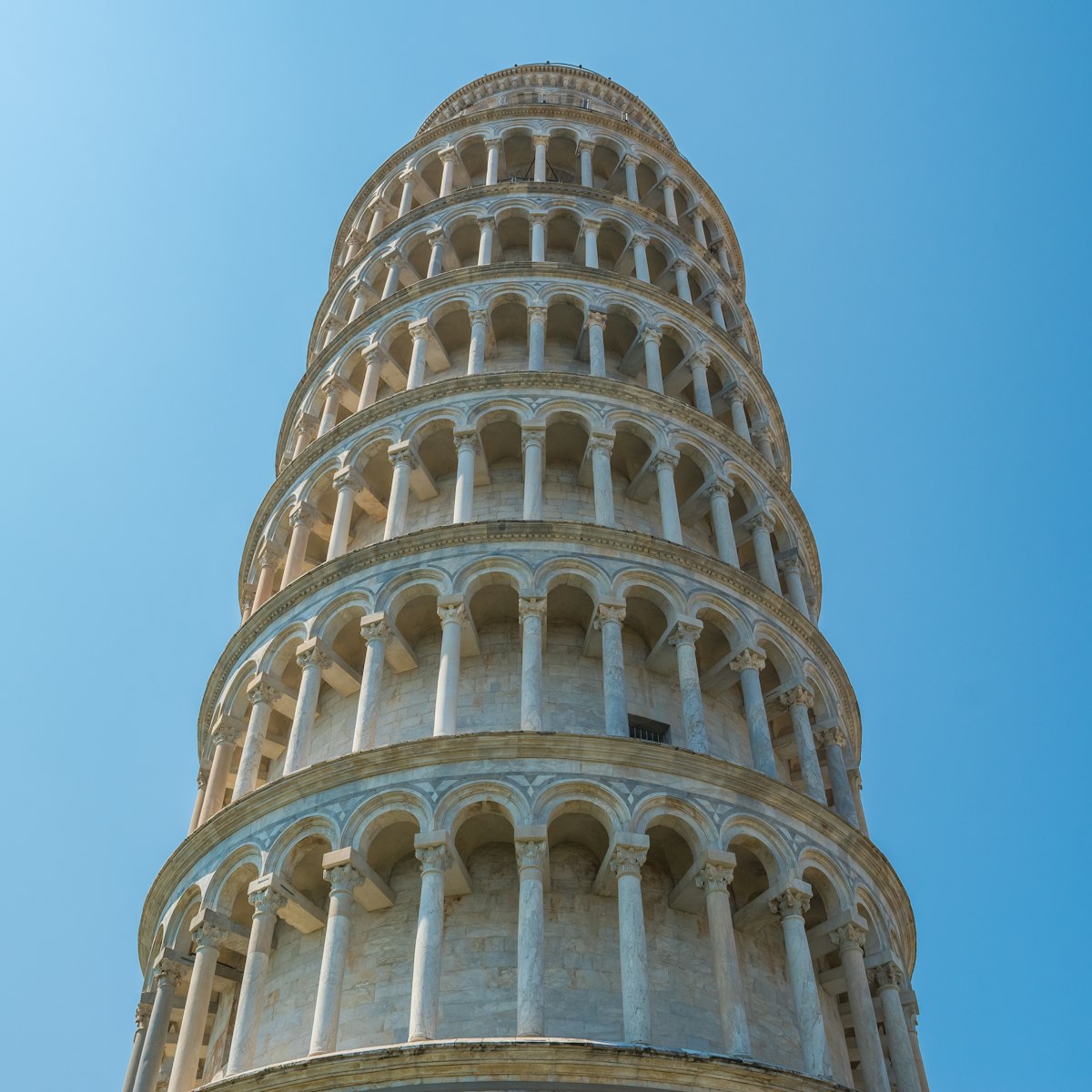
Leaning Tower
One of Italy's signature sights, the Torre Pendente truly lives up to its name, leaning a startling 3.9 degrees off the vertical. The 58m-high tower,…

Cappella Bacci
This chapel, in the apse of 14th-century Basilica di San Francesco, safeguards one of Italian art's greatest works: Piero della Francesca's fresco cycle…

Complesso Museale di Santa Maria della Scala
Built as a hospice for pilgrims travelling the Via Francigena, this huge complex opposite the duomo dates from the 13th century. Its highlight is the…
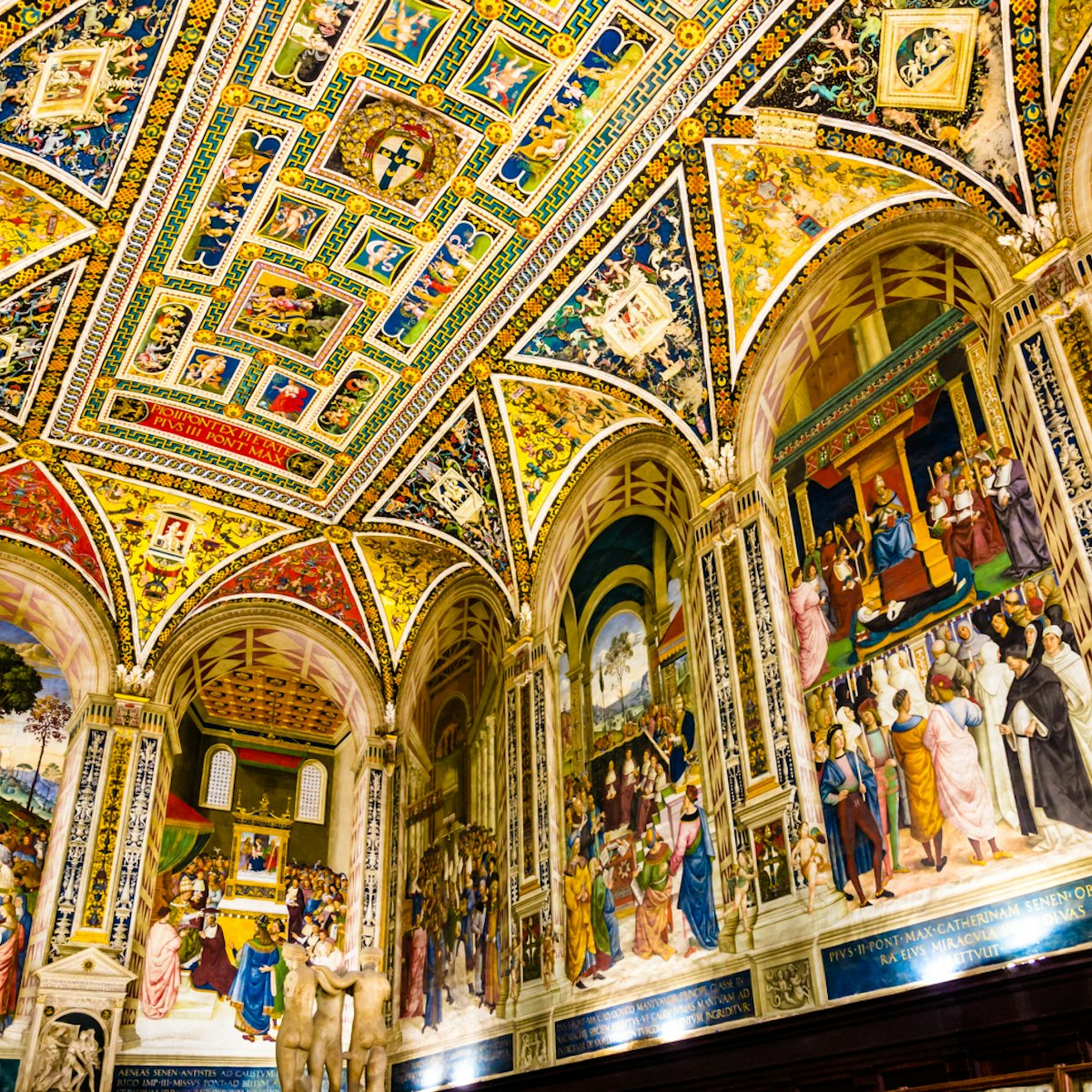
Libreria Piccolomini
Cardinal Francesco Todeschini Piccolomini, archbishop of Siena (later Pope Pius III), commissioned the building and decoration of this hall off the north…

Pinacoteca Nazionale
Siena's recently renovated art gallery, housed in 14th-century Palazzo Buonsignori since 1932, is home to an extraordinary collection of Gothic…
Plan with a local
Experience the real Italy
Let a local expert craft your dream trip.

Latest stories from Tuscany
Filter by interest:
- All Interests
- Adventure Travel
- Art & Culture
- Beaches, Coasts & Islands
- Food & Drink

Sep 3, 2024 • 12 min read
Whether it’s your first trip to Italy or you're coming back for more, we have the right itinerary for you.

Apr 7, 2024 • 10 min read

Mar 27, 2024 • 5 min read

Jul 15, 2021 • 2 min read

Sep 24, 2020 • 2 min read

Aug 19, 2020 • 5 min read

Aug 7, 2020 • 2 min read

Jul 3, 2020 • 2 min read

May 29, 2020 • 2 min read
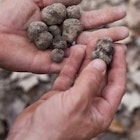
Apr 23, 2020 • 2 min read
in partnership with getyourguide
Book popular activities in Tuscany
Tuscany and beyond.

Tuscany, Italy Travel Guide

Courtesy of Peter Zelei Images | Getty Images

Why Go To Tuscany, Italy
When the film adaptation of Frances Mayes' "Under the Tuscan Sun" came out in 2003, the idea that Tuscany was indeed a place of romance, chianti wine, olives, aromatic cooking and, of course, sunshine was deeply embedded in our brains. Today, many travelers visit this glorious region in northwest Italy to escape the hustle and bustle of Rome or Milan and instead take in the Italian countryside. The combination of castles-turned-wineries-turned-hotels, elegant cypress trees, cascading hills and sprawling vineyards is simply heavenly.
Time seems to slow in this effortlessly idyllic place. And what better way to unwind than by savoring a glass of vino or eating homemade gnocchi under the Tuscan sun?
Find Flight and Hotel Deals
Navigate forward to interact with the calendar and select a date. Press the question mark key to get the keyboard shortcuts for changing dates.
Navigate backward to interact with the calendar and select a date. Press the question mark key to get the keyboard shortcuts for changing dates.
- # 1 in Best Wine Vacations
- # 1 in Best Destination Wedding Spots in Europe
- # 4 in Best Honeymoons in Europe for 2024
See All 4 Rankings
Best of Tuscany, Italy
Best hotels in tuscany, italy.
- # 1 in Rosewood Castiglion Del Bosco
- # 2 in Toscana Resort Castelfalfi
- # 3 in Castello di Casole, A Belmond Hotel, Tuscany

Best Things to Do in Tuscany, Italy
- # 1 in Florence
- # 2 in Siena
- # 3 in Lucca

Popular Tours

Tuscany Day Trip from Florence: Siena, San Gimignano, Pisa and Lunch at a Winery
(16226 reviews)
from $ 117.85

Small-Group Wine Tasting Experience in the Tuscan Countryside
(5062 reviews)
from $ 99.89

Skip the line: Uffizi and Accademia Small Group Walking Tour
(2518 reviews)
from $ 143.38
Tuscany, Italy Travel Tips
Best months to visit.
The best times to visit Tuscany are between late September and October and between April and May. During these months, travelers will find comfortable temperatures and fewer crowds at the major sights. As expected, summer ushers in high temperatures and heavy crowds. If you want Tuscany all to yourself, visit during the winter low season, but expect the cold and lots of rain.
What You Need to Know
Take a cooking class You can bring home some cooking skills if you take a class at traveler-recommended schools like Tuscana Saporita and Chef Paolo Monti's Cucina Italiana .
Take your time — the locals do Tuscany, like the wines it produces, should be savored. Life moves at a very slow speed. Try and relax, and if you can, spend at least a week here.
Public transportation is rough Thanks to the rolling hills, getting around the Tuscan valley with public transportation is tough. The best way to get from winery to winery is with a car (hired cars are readily available). If you're feeling brave, you can always rent a Vespa — just be careful, roads are narrow and windy.
Learn Italian English isn't as widely spoken as it is in other Italian cities. Knowing a few key Italian phrases will help, plus the locals love when tourists try to speak Italian.
How to Save Money in Tuscany, Italy
Stay in an Agriculturismo Instead of staying at a fancy (and expensive hotel), consider staying in an agriculturismo — or an authentic Italian farmhouse, villa or winery. Most offer all inclusive deals that are incredibly cheap.
Bike or walk Taxis and public transportation get expensive. Many of the towns in Tuscany are small and easily walkable.
Skip the menu touristico Many restaurants — especially the touristy ones — will offer all fixed-price menus for tourists, except often times these are more expensive than ordering al la carte. Not to mention, you should probably just skip the restaurants offering menu touristicos altogether.
These are the types of sunsets you'll see in Tuscany.
Explore More of Tuscany, Italy

Things To Do
Best hotels.

You might also like

# 1 in Best Places to Visit in October

# 6 in Best Beaches in France

Napa Valley
# 1 in Best Day Trips from San Francisco
If you make a purchase from our site, we may earn a commission. This does not affect the quality or independence of our editorial content.
Recommended
The 26 Best Beach Resorts in the World
Marisa Méndez|Erin Vasta|Rachael Hood|Catriona Kendall September 5, 2024

30 Fun Fall Weekend Getaways for 2024
Holly Johnson August 29, 2024

The 19 Best Fall Family Vacations for 2024
Amanda Norcross August 27, 2024

The 28 Best Water Parks in the U.S. for 2024
Holly Johnson|Timothy J. Forster May 8, 2024

The 18 Best Napa Valley Wineries to Visit in 2024
Lyn Mettler|Sharael Kolberg April 23, 2024

The 25 Best Beaches on the East Coast for 2024
Timothy J. Forster|Sharael Kolberg April 19, 2024

The 50 Best Hotels in the USA 2024
Christina Maggitas February 6, 2024

The 32 Most Famous Landmarks in the World
Gwen Pratesi|Timothy J. Forster February 1, 2024

9 Top All-Inclusive Resorts in Florida for 2024
Gwen Pratesi|Amanda Norcross January 5, 2024

24 Top All-Inclusive Resorts in the U.S. for 2024
Erin Evans January 4, 2024

- Skip to main content
- Skip to primary sidebar
- Skip to footer

8 Steps For Planning an Epic Trip to Tuscany
Sean Finelli Last Updated: November 14, 2022
Planning a trip to Tuscany? Lucky you! It’s one of the most scenic and peaceful places most of us mortals will ever visit. Tuscany is an incredible destination that absorbs your anxiety and turns it into vino! But, where do you start? Here are eight steps to planning your ideal Tuscany trip.
Pro Tip: Planning what to do on your trip to Florence? Bookmark this post in your browser so you can easily find it when you need it. Check out our guide to Tuscany for more planning resources, our best Florence and Tuscany tours for a memorable trip, and how to plan a day of wine tasting in Tuscany .
Step by Step Tips For Planning Your Trip To Tuscany
Planning a trip can be daunting. Not to worry—we’ve got you covered. This article is composed of two parts. The first will cover some basic facts about Tuscany and the second offers some actionable tips on how to plan including where to stay, what vineyards to visit, and how to get around. Enjoy!
Step 1: How Long To Go For
There are three options for visiting Tuscany, really. You can do a day trip, spend a few days there (four days of your 10-day Italy trip, for example), or spend your entire trip in Tuscany. Don’t worry, I will make deciding easy. Ask yourself these questions to narrow it down.
Have you ever been to Italy?
If you’ve been to Italy’s main cities already, you should gravitate towards the option of a few days in Tuscany or your entire trip there. If this is your first visit to Italy, then choose a day trip or spend a maximum of a few days of your trip there.
Are you willing to rent a car and drive in Tuscany?
If you’re willing to rent a car in Tuscany and have visited the main cities of Italy on a past trip, I recommend doing a week in Tuscany, which could be your entire trip. There are such a variety of towns to visit and plenty to keep you occupied.
Take a day trip if you don’t like the idea of renting a car. Our Chianti Wine Day Trip from Florence is a top-rated option. If you have decided on a day trip, the good news is that your journey ends here and the planning is over!
If you don’t want to rent a vehicle but want to spend a few nights in Tuscany, maybe two or three, there are some great accommodations right outside Florence. We share some great vineyards with hotels and accommodation in this article.
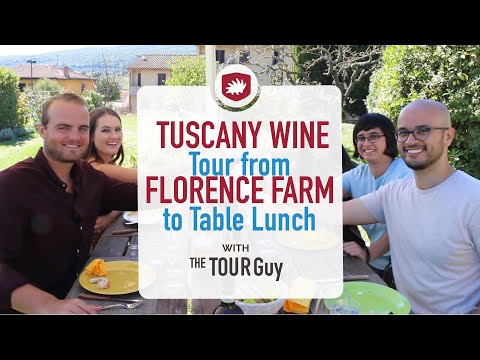
Step 2: Start in Florence
Florence is a great starting point. You’ll probably arrive in Italy via Rome, but I don’t recommend driving in Rome if you’ve not been before. You can take a train to Florence in less than two hours and navigate easily from there.
Florence is an amazing city that is always worth another visit. It’s full of wonders like the Uffizi Gallery , which I visit every time I’m in Florence if only to see the Birth of Venus .
There is an international airport in Florence and, as mentioned, many fast trains arrive in the city from Rome, Naples, Venice, Bologna, Milan, and Torino. It is the perfect jump-off point for a visit to Tuscany, especially Chianti, which is very close. If you’re willing to rent a car you can pick it up at the Santa Maria Novella station and easily get out of the city using your phone’s GPS.
You’ll have to decide if you want to spend the night in Florence or not. If you don’t, schedule to pick up your rental car early. Ask if you can leave it in the garage for the rest of the day and leave your bags inside the car while you sightsee.
Travel Hack: If you can find wi-fi, you can use your phone even on airplane mode. Pull up your map and search for directions. Hit “go” when you’re ready, then keep your phone on airplane mode and leave wi-fi. Your GPS will still work, and you shouldn’t be eating away at your roaming data. Be sure to turn that off in your settings. You won’t be able to search for a new destination when you leave wi-fi, but your GPS pin will work all the same.
Tours of Chianti and Florence
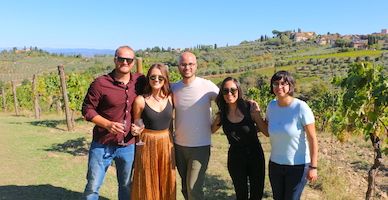
Top-Rated Experience
Chianti Day Trip from Florence with Vineyard Lunch
Want to have an epic experience in Tuscany? Remove the guesswork and the hassle of transportation by joining us on a day trip to Chianti from Florence. You’ll enjoy time in the enchanting cities of Siena and San Gimignano with lunch and wine tastings too. Make your Tuscany day trip one to remember!
Best-Selling Tour
Florence in a Day Combo Tour with David & Uffizi
This tour is your best value in Florence. See Michelangelo’s David statue in the Accademia Gallery with a licensed guide before exploring the Uffizi Gallery. You’ll also have plenty of time to see the outside of the Florence Cathedral, Baptistry Doors, Ponte Vecchio, and more. All your skip-the-line admissions are included along with an English-speaking guide.
Not ready to book a tour? Check out our Tuscany guide for more info.
Step 3: Rent a Car
As a rule of thumb, the most beautiful and well-preserved areas are the least connected by train or highways. For me, I would not travel to Tuscany without renting a car. Does that make you nervous?
You can rent a car from any online agency and they’re pretty much all the same. I wouldn’t stress much about being charged extra for scratches you aren’t at fault for. I’ve rented dozens of cars in Italy and have never been charged extra due to a false accusation.
In general, a small cross-over SEO is a good option for two people. If you are driving with kids, look at the larger SUVs or a station wagon. A station wagon may not sound sexy but they are pretty popular in Europe and easy to drive.
Step 4: Decide on Mobile Roaming Data
Traveling abroad with mobile usage turned on used to be the key to bankruptcy, but today it’s actually affordable. AT&T charges $10/day and some carriers charge nothing.
With AT&T, the only one I am familiar with, you just have to tell them you are traveling and they will only charge you if you go off airplane mode. If I’m in a city with wi-fi, I keep airplane mode on. If I’m renting a car and using my phone to navigate, I turn data on.
Step 5: Get Advice
We want to be your end-all source for advice on traveling to Tuscany and we make it as free as we possibly can. All our tours are designed to make your trips memorable and stress-free, so you can enjoy being in Tuscany without worrying about any details. Check out our Florence and Tuscany tours .
There is also a wealth of free information on our online Tuscany guide to help you plan. If you’re looking for a more customized experience, we offer trip planning services through Finelli & Shaw.
Step 6: Book Your Stay in Tuscany
Again, if you can’t make time to stay in the countryside, our Chianti day trip visits Tuscany for a full day and includes lunch in the vineyard. Here’s a quick guide on where to stay in Tuscany based on the number of nights you have.
Two to three nights
If you’re going to spend two to three nights in Tuscany, you’ll want to pick one destination and spend your time there. We have a great article on the best vineyards to stay at in Tuscany . If you’re renting a car, think about staying at Fonte de’ Medici or near Montalcino. Medici Villa is a great option if you’re not renting a car.
Four nights or more
If you’re going to spend more than four nights or possibly a week, you should move around a bit. With some money set aside to buy wine, possibly €50 to €150 per day, you could explore some really cool areas and have a great experience. Here are the areas I would dive into:
- Montalcino and Val d’Orcia
- Chianti Classico (specifically near Tignanello)
- Bolgheri (where Sassicaia is made)
Step 7: Don’t Ask “How Much For a Tasting”
I will rarely walk in and ask, “how much does a tasting cost?” On your trip to Tuscany, be prepared to buy wine. If you have a great budget, ship some home.
If not, plan to buy a few bottles per person at each vineyard and they’ll normally waive any tasting fees. When staying in Tuscany, you may well be consuming a bottle of wine per day minimum, so it’s better to stock up!
Step 8: Be Spontaneous
It almost always pays to plan ahead, but you can leave yourself some wiggle room to be spontaneous. You can stop by most vineyards unannounced in the summer to have a tasting.
If you have a phone plan working in Italy, you can call ahead by 20 or 30 minutes to see if you can stop by, but I have also popped in unannounced. That said, vineyards prefer a little notice.
It’s better to call the day before if there’s a vineyard you really want to visit, but you can fill in the blanks around that stop. That said, when you see a beautiful road that you simply must drive down or a vineyard calling your name, then you should change your plans and follow your dreams!
Not ready to book a tour? Check out our article on the best Florence tours to take and why .
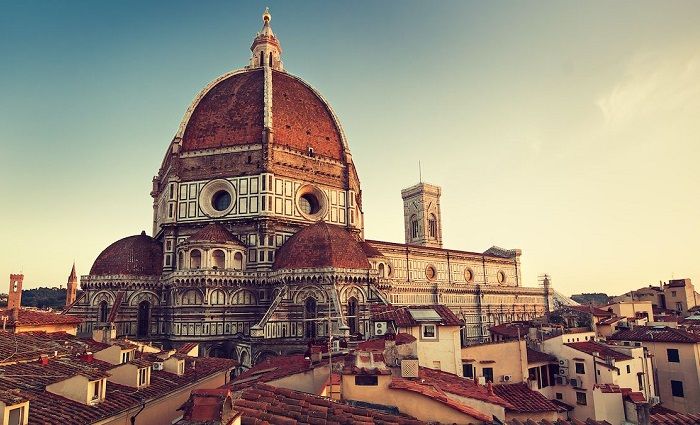
Where To Stay in Florence
Florence has a small historical center packed with iconic landmarks to explore. Plan where to stay in the best neighborhoods in this beautiful city.
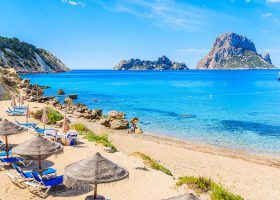
About Sean Finelli
Sean is a co-founder and owner of The Tour Guy and its subsidiary The Roman Guy. He studied finance and statistics, but that is his "Dr. Jekyll" side! His "Mr. Hyde" is in love with travel, art, history, and culture. Sean has read libraries of historical text and believes that all internet content should come from books. A practice he follows!
Reader Interactions
Comments (2).
July 28, 2021
Do you have any ideas of a location to stay in Tuscany and be able to stay in one place but take day trips? If so I would appreciate your suggestions. Will be in Tuscany at last 5 days
July 29, 2021
I prefer the area surrounding Siena. I just wrote this article on places to stay near Siena . The countryside there, especially near Montalcino , is so beautiful.
Montalcino is more remote, but if you are ok with 2 hour drives it’s perfect. You’re near Siena, Florence, Orvieto, and a ton of other cities. To answer your question, I would stay near Siena if you want a great balance between beauty and proximity and near Montalcino if you want to be in the most beautiful place in the world.
Leave a Comment Cancel reply
Your email address will not be published. Required fields are marked *
- Travel Blog
- In The Press
POLICY & TERMS
- Cancellation Policy
- Terms & Conditions
- Privacy Policy


Tuscany Itinerary: See the Best Places in One Week (+Map & Tips)
By Author Jurga
Posted on Last updated: July 4, 2023
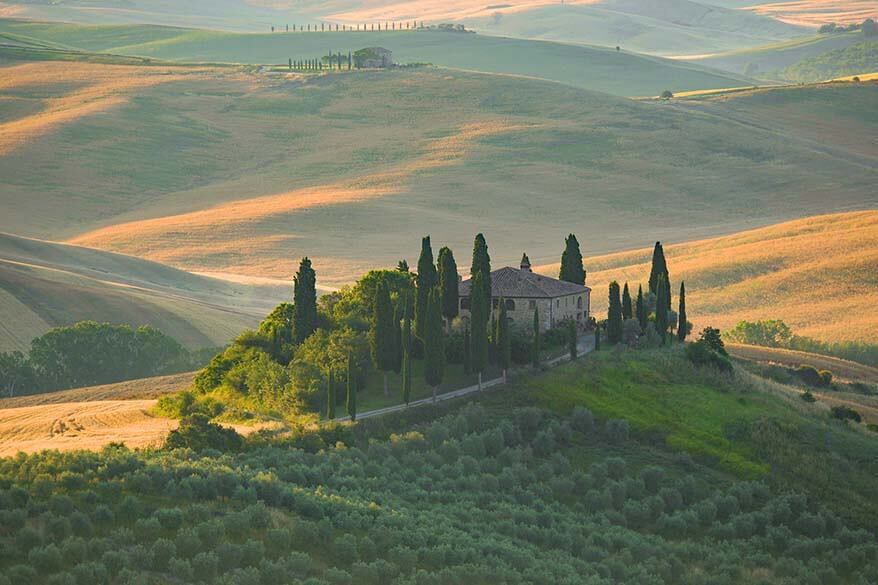
Planning a trip to Tuscany and not sure where to start and what’s the best Tuscany itinerary?
In our previous post, you could read about some of the most beautiful towns in Tuscany . In this article, you can read how to combine all those beautiful places (and some more) and create the perfect Tuscany trip itinerary that allows you to experience the very best of this picturesque region in one week.
How many days do you need in Tuscany
While you can see the main cities in 3-4 days, I recommend at least one week for Tuscany . This will allow you to see not just all the highlights of the best towns of Tuscany, but also to get a glimpse of the beautiful Tuscan countryside.
Below, you can find our suggested Tuscany itinerary that shows you where to go and what to see if you have one week in Tuscany. Read on!
How to see the best of Tuscany in one week
This Tuscany itinerary starts and ends in Florence. However, you can start and end in other towns and combine this trip with a visit to the other regions (e.g. Cinque Terre or Bologna ). This is really just meant to show you what’s possible and how to plan your time in Tuscany.
In order to see the very best of Tuscany and to experience some of its stunning landscapes, it’s best to visit the region by car. On the other hand, you don’t really need a car in the cities. Train connections between major towns in Italy are really good. So if you want to, you can visit some of the most beautiful towns using public transport only.
While this Tuscany itinerary is made assuming that you have a car, you can easily adapt it to your needs and your way of traveling. Just use this itinerary as a guide to the best places in Tuscany, how much time you need at each place, and how to best plan your trip.
At the bottom of the article, you can also find a map indicating all the places mentioned in this Tuscan itinerary. Read on!
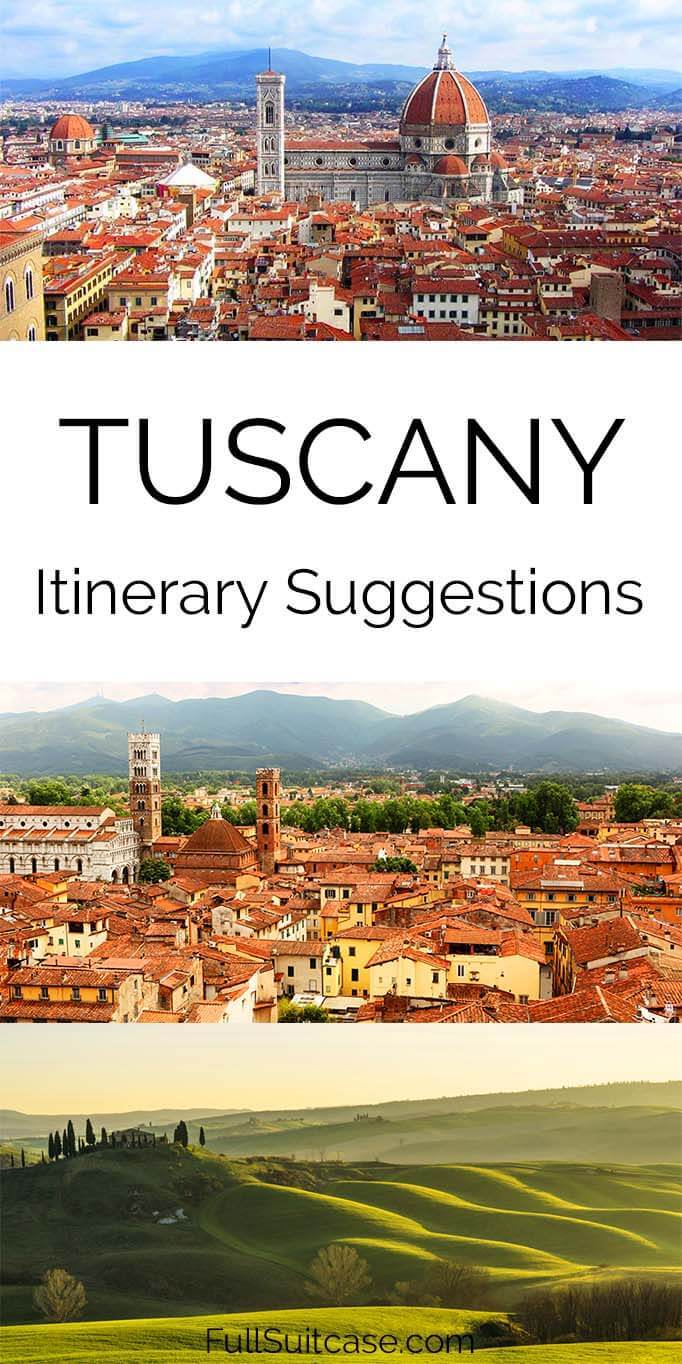
One Week Tuscany Itinerary
Day 1 – florence.
Florence is one of the most beautiful cities in Italy and is not to be missed in any Tuscany itinerary.
One full day is the minimum that you need in order to see the main highlights of Florence . You can find more information, tips, and advice for visiting Florence in some of the more detailed guides to the city on our blog.
Not to be missed in Florence is the Cathedral (you can climb the dome of the Duomo as well), Ponte Vecchio, Accademia Gallery, Uffizi Gallery, and Palazzo Vecchio. If you have just one day in Florence, stroll the old town, check out the market, and walk to Piazzale Michelangelo for the best sunset view in Florence. Alternatively, have a drink at one of the best rooftop bars in Florence .
Stay in Florence for at least one night, in order to take full advantage of your time here. If you are traveling by train, I recommend a hotel close to the railway station. We recently stayed at Hotel Croce di Malta , an excellent mid-budget 4*hotel with a lovely rooftop terrace. If traveling by car, keep in mind that parking in the city is very expensive.
TIP: If you only have limited time and want to see the best of Florence in one day, be sure to book priority tickets for ALL the places you absolutely want to visit inside.
LEARN MORE: One Day in Florence
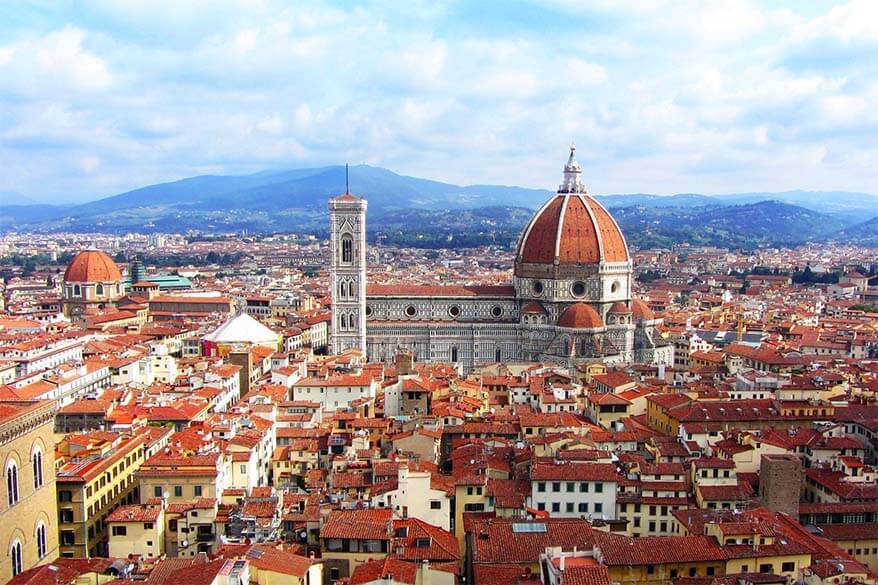
Day 2 – Florence to Siena
Leave Florence early in the morning and drive to Siena. Via Chiantigiana road SR 222 from Florence to Siena is very scenic, so you may want to take this road rather than a highway.
Spend the rest of the day exploring the beautiful town of Siena. Must-see in Siena is Piazza del Campo with its Palazzo Pubblico and the Mangia Tower, Siena Duomo (Cathedral), and the picturesque streets of the Old Town.
TIP: Stay in Siena for 1 or 2 nights. Albergo Chiusarelli is one of the best picks in towns in terms of price/location/quality.
LEARN MORE: Best Things to Do in Siena
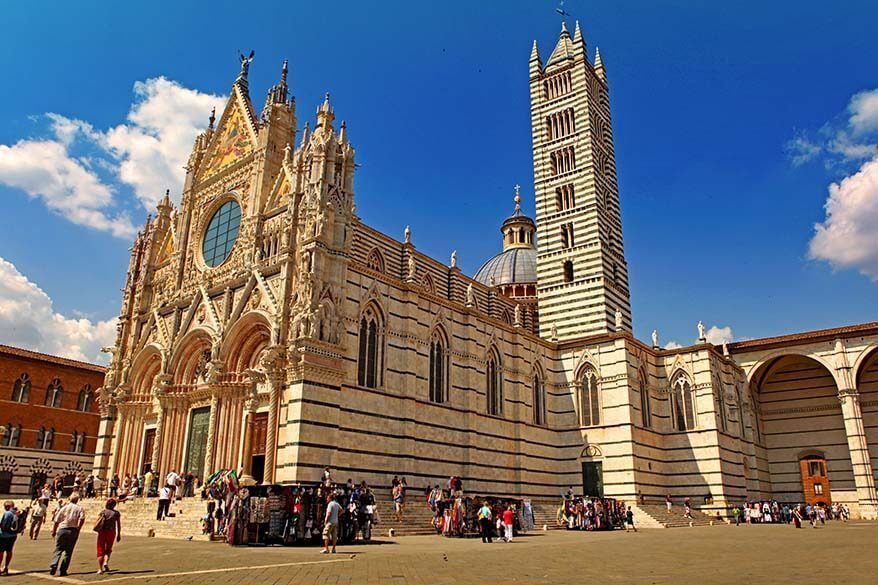
Day 3 – Val d’Orcia – Tuscan countryside
Here is a scenic road trip suggestion through the picture-perfect Tuscan countryside – Val d’Orcia – that you can take as a day trip from Siena.
If you have the time, you may want to spend a couple of days in this area, but one day is sufficient to drive through the scenic Tuscan countryside.
From Siena take the road SR2 to San Quirico d’Orcia. From here continue East along the SR146 in the direction of Montepulciano. This is the most scenic road in Tuscany – the one with the typical Tuscan landscapes you see in travel magazines and on postcards.
Take your time to explore Val d’Orcia and visit at least a couple of charming little towns in the area: Pienza , Montepulciano , San Quirico d’Orcia , Monticchiello , Montalcino … Also the Abbey of Sant’Antimo is worth a visit.
With just one day in this region, I think I’d focus on Montepulciano, Pienza, and the countryside of Val d’Orcia.
TIP: If you are in Siena without a car, the best way to explore the Tuscan countryside is by taking an organized tour, e.g. this wine tour that brings you to Montalcino, Pienza, and Montepulciano from Siena .
READ ALSO: Best Things to Do in Montepulciano

Day 4 – San Gimignano and Volterra
San Gimignano and Volterra are both relatively small towns and their proximity to each other means that you can easily visit them in one day.
San Gimignano , famous for its fourteen medieval towers has a tiny but very picturesque Old Town. It can get extremely busy during the day, so I recommend going there first thing in the morning.
One of the main places to see is Piazza della Cisterna. You can also climb to the top of the Torre Grossa.
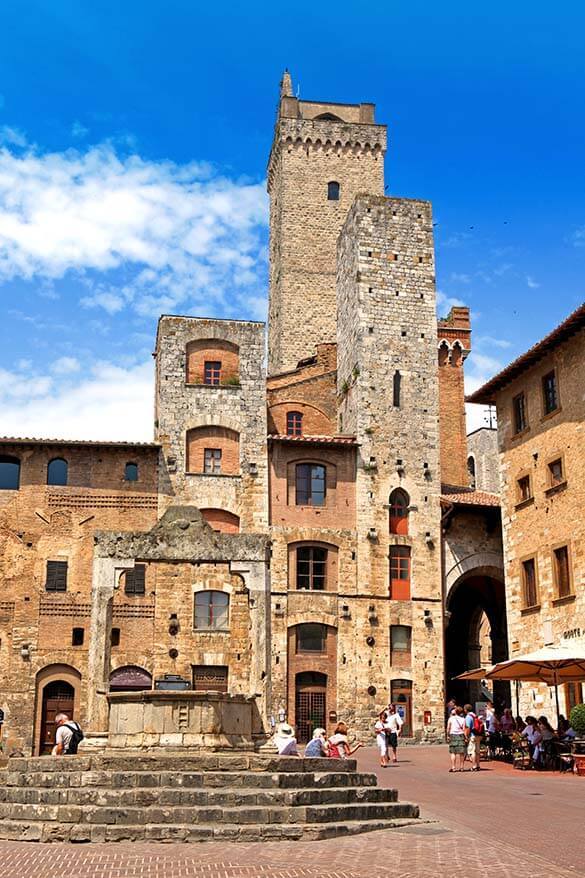
Volterra has a great atmosphere in the evening, so it’s best to visit it later in the day. It’s a charming medieval town and it’s nice to just stroll the streets, check out some souvenir shops, and have a nice Tuscan dinner.
In my previous post, you can read more about what to see and do in San Gimignano and in Volterra .
TIP: One of the nicest and good price/quality hotels in Volterra is Hotel La Locanda . If you are on a tighter budget but want something really special, stay in Chiostro Delle Monache Hostel Volterra . It’s located in the 15th-century Franciscan monastery, has a great location, and free parking.
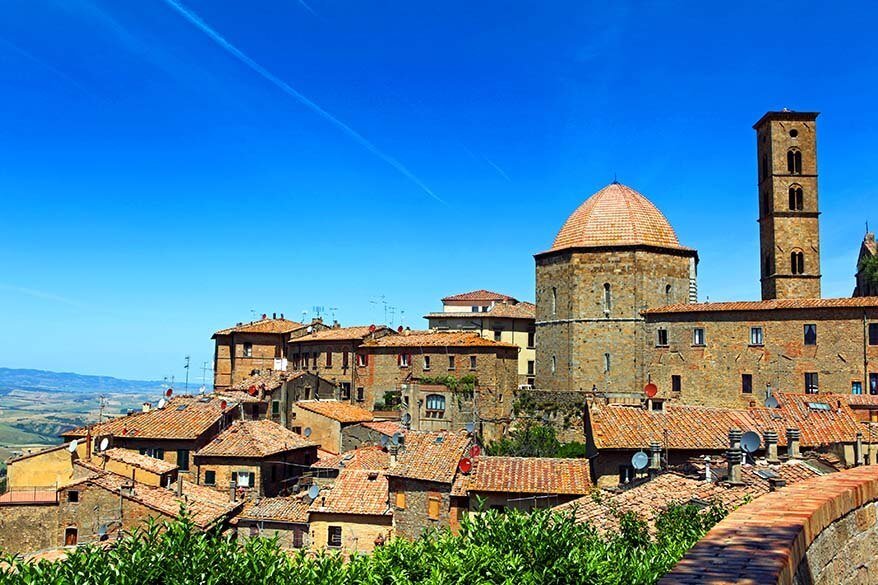
Day 5 – Pisa
Take your time to explore Pisa . Don’t limit your visit to the leaning tower of Pisa only! In fact, the leaning tower of Pisa is just one of the many monuments of Miracle’s Square. The Cathedral and the Baptistery are very impressive as well.
Pisa town center has no crowds and is very picturesque as well. Stroll the Arno River promenade and check out the Borgo Stretto, an old shopping arcade with many restaurants, cafés, and shops.
TIP: If you are touring around Tuscany by car, I’d advise not to stay in Pisa. Instead, drive to Lucca after you visited Pisa and stay there for two nights. Lucca has such a great atmosphere and several really nice hotels. They are located inside the city walls and so parking is not free (but possible). Check out Hotel Palazzo Alexander or Hotel Alla Corte degli Angeli .
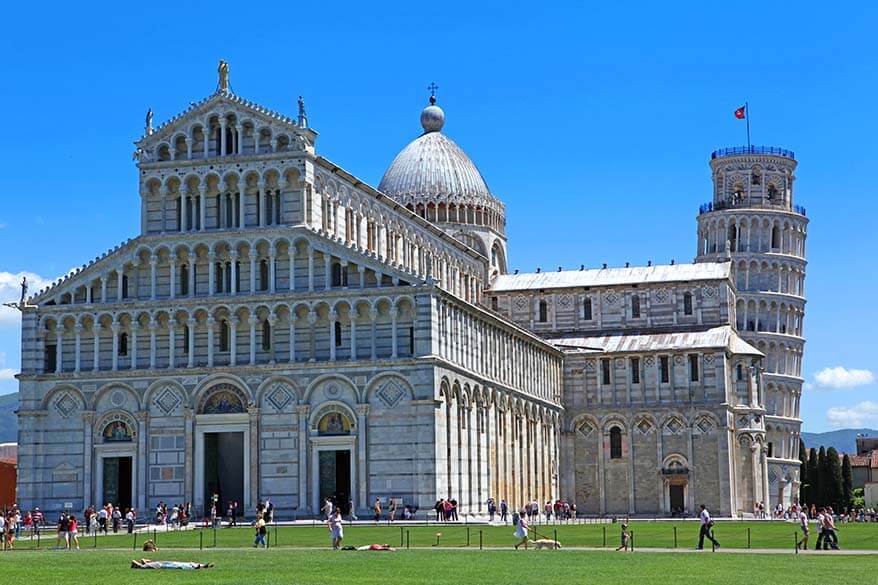
Day 6 – Lucca
Lucca is our favorite town in Tuscany. You can see the main highlights in just one day, but you definitely won’t regret it if you choose to stay a bit longer.
The main landmark is the city walls of Lucca which you can explore on foot or by bike. In fact, the best way to see Lucca is by taking a self-guided bike tour .
Piazza dell’Anfiteatro is another must-see in Lucca. Make sure also to climb at least one of the towers -Torre Guinigi or Torre Delle Ore for the best views in town. Here you can read more about what to see and do in Lucca .
TIP: Take a food tour in Lucca – it’s a great way to explore the town and taste some of the typical local specialties.
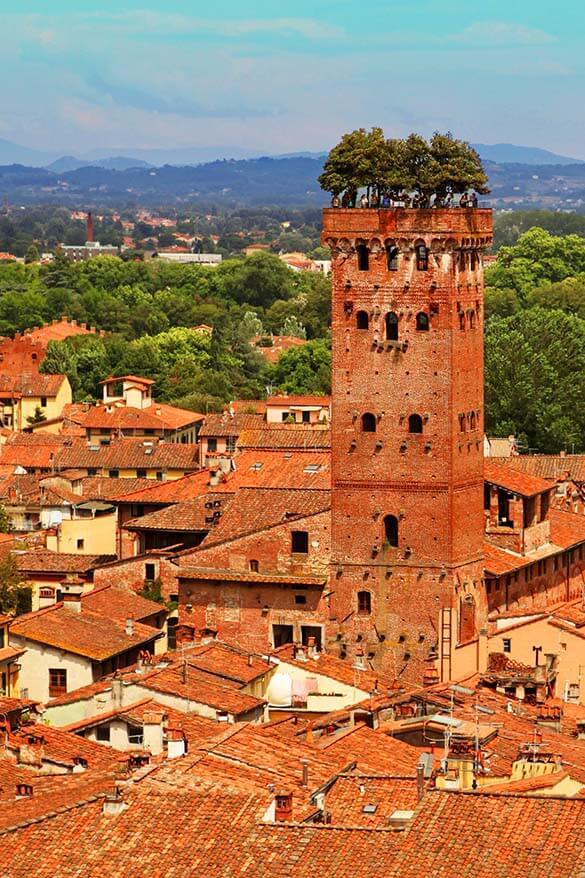
Day 7 – Collodi, Pistoia, Prato, or the outskirts of Florence
There are several nice towns that you could visit between Lucca and Florence. Collodi, Pistoia, and Prato are all worth a detour.
We liked exploring the outskirts of Florence as well. You’re hardly out of the city, but the scenery is amazing. Take a road from Florence to Fiesole for stunning views and a beautiful Tuscan landscape.
Alternatively, you could easily visit Bologna. It’s located in the nearby Emilia Romagna region (so not in Tuscany), but is more than worth a visit if you find yourself in this part of Italy.
READ ALSO: Florence to Bologna Travel Info & Itinerary + Best Things to Do in Bologna
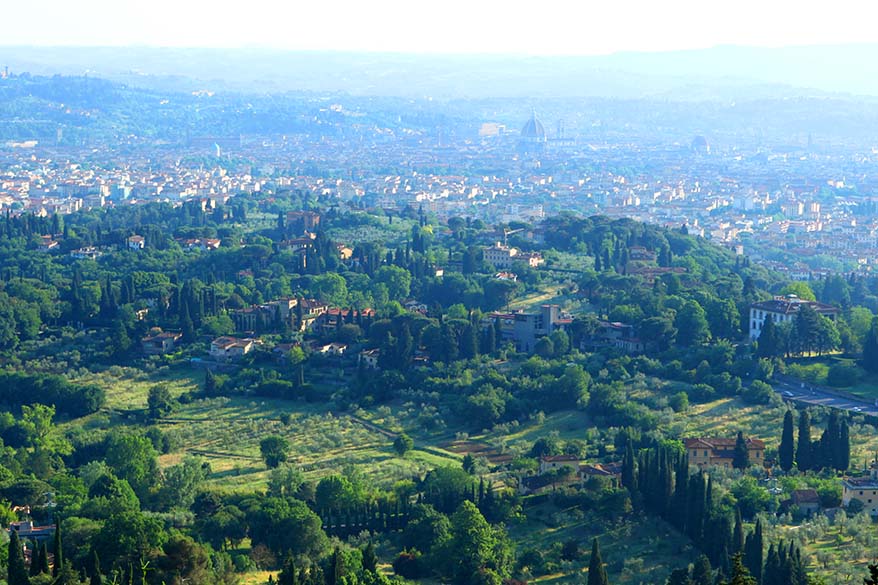
Where to stay for this Tuscany itinerary
Many people ask what’s the best area to stay in Tuscany . The answer really depends on what kind of trip you are planning.
If you are thinking of making a road trip in Tuscany , you can find my suggestions for hotels in each town in the day-to-day Tuscany itinerary above.
If, however, you don’t like changing hotels and packing your bags every day, you can also stay at one central location in the Tuscan countryside and take day trips from there. Sometimes you’ll need to drive an hour, sometimes two, so it’s not perfect, but it might still be easier and more relaxing, especially if you are traveling with kids.
TIP: If you want to stay in just one place for sightseeing, the best place to stay for exploring Tuscany would be the area close to Volterra or San Gimignano. It is very centrally located in Tuscany and is therefore ideal if you are looking to stay at just one hotel and explore the region by taking day trips. Here you can find the best deals for accommodation in Volterra and hotels in the San Gimignano area .
In fact, a few years ago we did just that when we were visiting Tuscany with our kids. We stayed at just one hotel in the Montaione area for 12 days and combined relaxing days by the pool with sightseeing. It worked well for us. You can read more in our best of Tuscany – itinerary from one central location post.
On our most recent trip to Tuscany, we were focusing on the area around Siena and Val d’Orcia, plus a few other places in Umbria too. For that, we opted to stay at this beautiful country house in Bettole.
There’s really not one ‘best’ spot to stay- Tuscany is way too big for that. So it all depends on which places you decide to visit.
Without a car: If you are not renting a car, the best places to stay for exploring Tuscany are either Florence or Siena. They both have good railway connections to the bigger towns and also a big choice of organized tours to the smaller villages in the countryside.
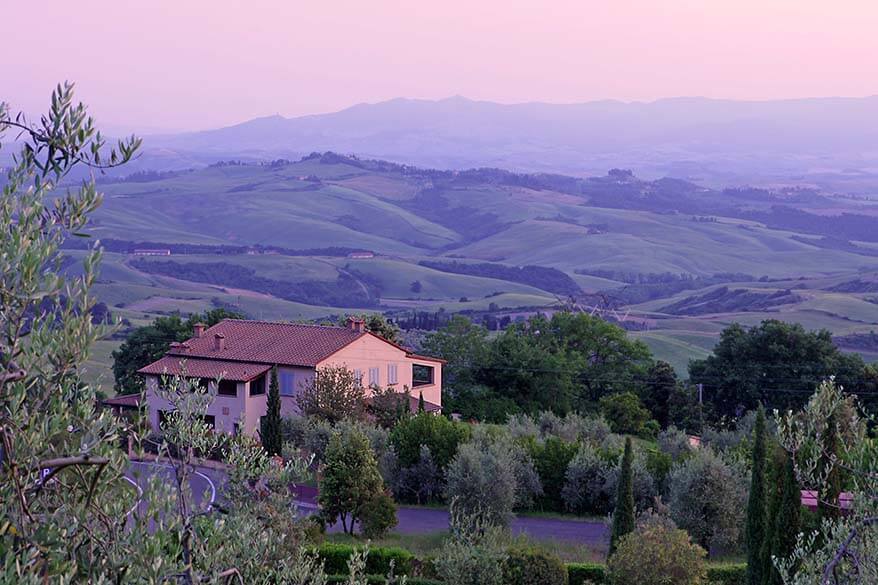
One week Tuscany trip itinerary map
Below, you can see an overview of this suggested Tuscany itinerary on the map.
Start in Florence, drive down to Siena, then on to San Gimignano and Volterra. Continue your trip towards Pisa and Lucca, and end in Florence.
Alternatively, continue to Cinque Terre, which is just a short ride from Pisa. Here you can find more information about how to see the best of Cinque Terre in one day .
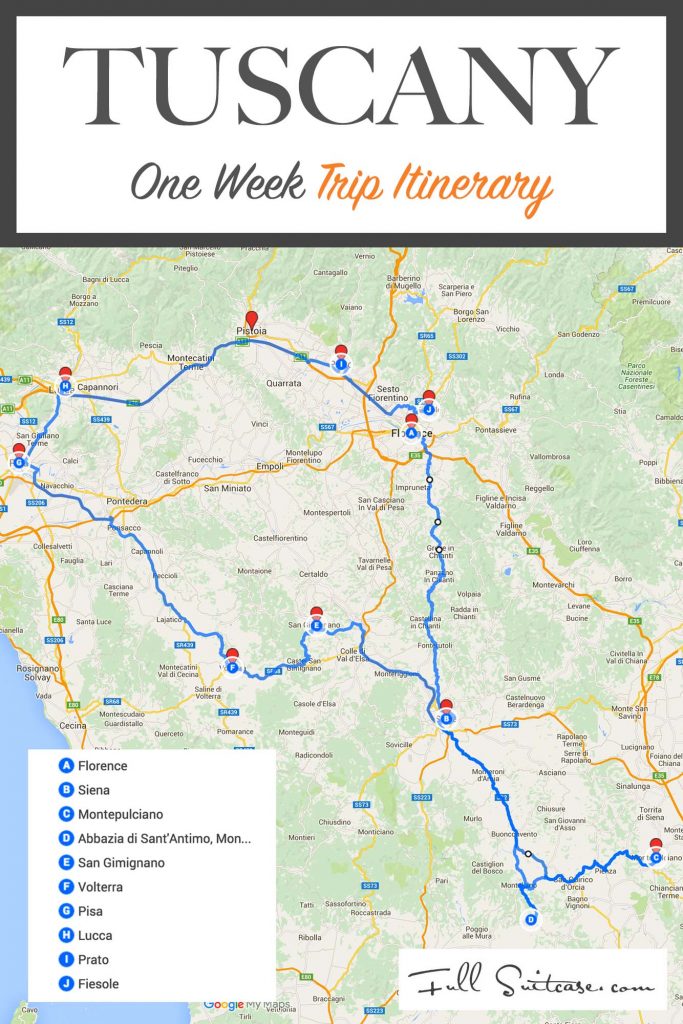
Best Time to Visit Tuscany
Tuscany is a beautiful destination that has something to offer at any time of the year. That being said, the best time to visit Tuscany is in late spring or in early autumn. The very best months for sightseeing in Tuscany are May and September.
In the summer months, it’s very hot here. So if you are visiting in July or August, you may want to concentrate on the Tuscan countryside. A popular thing to do is rent a villa with a pool and make an occasional day trip to one of the smaller towns in the area.
Whereas the weather in late fall, in winter, and in early spring is more suitable for visiting the big cities rather than touring the countryside.
READ ALSO: Best Time to Visit Europe
So, this is our suggested Tuscany itinerary for up to one week. If you are planning a trip to Italy, make sure to check our Italy travel guide for more tips and travel advice for a big variety of popular destinations in Italy.
Alternatively, check our selection of articles below for more tips for a variety of destinations in Italy.
More tips for some of the most visited destinations in Italy:
- Best Things to Do in Rome
- Best Things to Do in Venice
- Best Things to Do in Milan
- Best Things to Do in Naples
- 2 days in Rome
- 1 day in Milan
- 1 day in Venice
- 1 day in Cinque Terre
- Tips for Visiting Rome
- Best Things to Do at Lake Como
- Bellagio, Lake Como
- Best of Lake Garda
- Best of the Italian Dolomites
- Emilia Romagna Region
- Hiking in the Dolomites
- Tips for Visiting Cinque Terre
- Amalfi Coast Itinerary
- Italian Riviera
- Best Day Trips from Naples
READ ALSO: Best Places to Visit in Italy
If you found this Tuscany itinerary helpful, don’t forget to bookmark this post and share it with your friends. Are you on Pinterest? Pin this image!
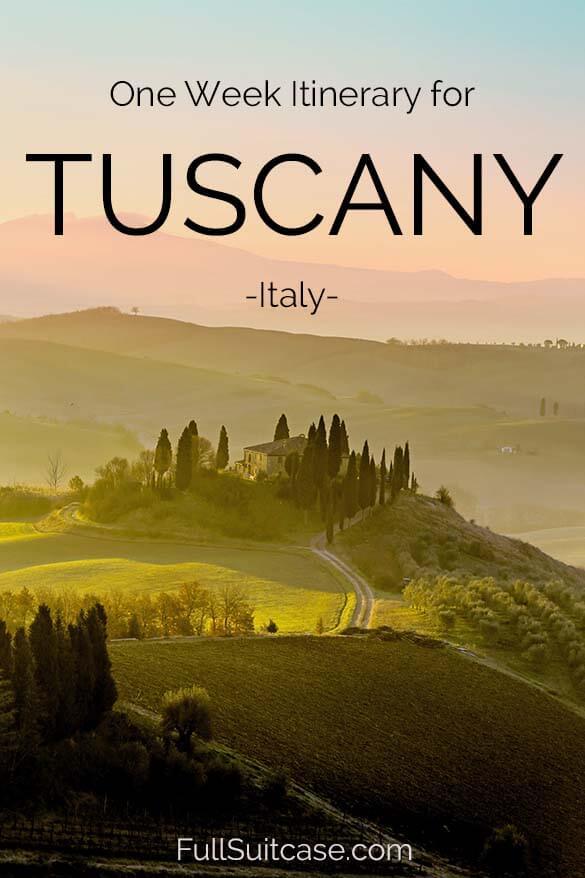
This site uses Akismet to reduce spam. Learn how your comment data is processed .
Kathy Stern
Sunday 28th of July 2024
Hi Jurga, I'm a bit overwhelmed trying to map out or visit to Italy We have seen the main cities in Italy. We have rented a villa in Crotona for 6 night and plan to rent a car from where ever we should fly into from the united States. Cortona will be our base in Tuscany. We would love to see the Chanti area ,Seina, Pienza, Montepulciano and Florence all returning to each day. We also would like to go to Cinque Terre and The Amalfi Coast with Capri. How would you lay out this itinerary? The order and what mode of transportation would be preferred? We do not plan to have a car on the Amalfi coast as I hear it is difficult to drive. We plan to use ferries to get around there. Would Lake Como be out of the way or could we incorporate it in. We could spend 2-3 weeks. Thank you for you help, Kathy
Monday 29th of July 2024
Hi Kathy, you can visit many places in Tuscany from Cortona, but if you also want to go to e.g. Cinque Terre, I would do that separately since it's a bit too much of a drive for a day. The same with Lake Como, which is even further away. One of the options would be to fly to Milan, visit Lake Como for a few days, then drive down to the Cinque Terre area and spend a few days on the Ligurian Coast, and then on to Cortona. After that, return your rental car either in Rome or Naples or so and explore the Amalfi Coast and Capri using boats and transfers or public transport. Depending on where you drop off your car, you can take a train e.g. from Florence or Rome to Naples. You can then fly out of Naples or take a train to Rome and fly from there. If you absolutely have to start in Cortona, then you could drive to Cinque Terre for a few days after that, followed by Lake Como. Then drop off the car in Milan and travel by train from there to the south. We have tons of articles covering all these areas and even transportation options from Naples to the Amalfi Coast etc., just use the search function on the blog. Good luck with the planning.
Tynes Quarles
Friday 21st of June 2024
Jurga, Just read your Tuscan itinerary and it's almost exactly like what I was looking to plan for next year. I was thinking of leaving Florence in the morning and taking the Via Chiantigiano geting to Siena that evening. The next day is exploring Siena and spending another night there. The next day is the Val d'Orcia to Montepilcino and spending a night down that way somewhere. The next day is spending a little more time in that area before heading up to San Gimignano/Volterra. One day there before heading to Lucca via Pisa. After a day or so there, I think heading over to Cinque Terre and doing your one day hike and 2nd day exploration of Portovenere sounds perfect. Leaving Cinque Terre, I'll head back to Florence arriving a day early so I can spend time up in the hills around Fiesole. I plan to rent a car, so we'll then turn it back in at the airport and regretfully head home. Any additions/subtractions/suggestions you can make would be much appreciated.
All the best,
Saturday 22nd of June 2024
Hi Tynes, your plan sounds good. It's just that you don't absolutely have to make a road trip and change hotels every day. You could also stay somewhere close to Siena/San Gimignano for a few days before moving toward Luca/Pisa/Cinque Terre area for a few days. But if you don't mind changing hotels, your plan sounds just fine. As for additional suggestions, unfortunately, I really have no time to help our readers with more detailed itineraries. There's so much to see and do in Tuscany. Here are some nice places you may want to add to your plan since you will be nearby: Pienza, San Quirico d'Orcia, Cipressi di San Quirico d'Orcia, Montalcino, Crete Senesi (on the road between Asciano and Taverne d'Arbia near Siena). Good luck with the planning and don't forget to spend some time in Florence itself! You can easily fill 3 days there too.
Monday 26th of February 2024
What a fantastic blog! This has really inspired me! I am thinking to visit Florence and Tuscany for a week in mid-June.
After 2 nights in Florence, and having a car, what town would you recommend to stay as a base and then do day trips? In terms of day trips, a must visit for us are Sienna, Lucca and Volterra. And definitely a winery but without driving to it. Advice very welcome!
Tuesday 27th of February 2024
Hi Teddy, if you want to visit Sienna, Lucca, and Voltera, you could stay somewhere in the middle between all these towns and make sure there's a winery nearby. I quickly checked something for you in the San Gimignano area which is very central and fits your criteria. There are several wineries that you can visit in that region and many accommodations, so you can find places to stay within walking distance to one or the other winery if you like. For example, this agriturismo (Capanna 1826) is just near this vineayrd. From what I read in the reviews of this accommodation, they even include a visit to their vineyard for free if you stay there. But there are many more options. You just have to do a bit more research and see what's available for your travel dates. If you don't mind taking a taxi to one or the other vineyard, then it will be easier. Just pick a hotel you like and then see what wineries there are nearby. Also, the San Gimignano area is just one of the many, so it's just a suggestion based on the info you gave. If you are traveling in June, I'd book your accommodations asap.
Ann Marie Pugliese
Friday 6th of October 2023
Hello, this blog seems very helpful. I am traveling to Italy for the first time with 9 family members for 2 weeks in June. We were trying to fit in so much, but don't think it's feasible with so many people. Was hoping to visit Venice, Tuscany, Rome and The Amalfi Coast. Also, we are planning to stay in Air bnb's along the way. Just not sure if we should travel to each area and stay for 3 days or find 2 central hubs and take day trips? Any insight you can offer would be greatly appreciated. Thanks!
Monday 9th of October 2023
@Jurga, THANK YOU SO MUCH!! Greatly appreciate the information!!
Sunday 8th of October 2023
Hi Ann Marie, since these areas are located quite far from each other and each has so much to offer, I think that staying in each place for a few nights is indeed better than looking for two base locations. You could start with 4-5 days in Sorrento (from where you can easily visit Amalfi Coast, Capri Island, Naples, Pompeii, etc.), then move on to Rome for 3-4 days. From there, take a train to Florence which is a good base for Tuscany, Cinque Terre, and also Bologna. Depending on what you want to see, you could stay here for 4-5 days. And finally, take a train to Venice and stay there for 2-3 nights. You can find lots of information for all these destinations on our blog. See an overview of all articles on our Italy travel page. This 2-week Italy itinerary might also be helpful - just to see what's possible and how you could structure your time at some places. For Amalfi Coast, take a look at this guide. Good luck with the planning!
Sunday 18th of June 2023
Hi, I am considering a 3 night stay in Florence next Summer followed by a week in self catering accomodation somewhere on the coast (we will not be driving, therefore, will be making use of public transport when we transfer from Florence to our second destination). We love Sorrento, Taormina and the Lake Garda towns and are wondering where on the coast (quite manageable by train from Florence), would have a similar vibe / buzz (i.e lively atmosphere) to these places? We would obviously fly into Florence but would be happy to go home from a different airport.
My other option is to follow on from Florence with a week in self catering accomodation (definitely with a pool to cool off), within walking distance of one of the cities / towns in the region - but I'm having difficulty deciding between Siena. Lucca and San Gimignano (or somewhere else with a Sorrento type 'feel' to it!!).
Any suggestions / advice would be gratefully received
Many thanks, Becs
Tuesday 20th of June 2023
Hi Becs, as you can imagine, there are too many options for me to give you any kind of reasonable suggestion. :) Also, there are two coasts - with places like Rimini or Ravenna to the east or the Cinque Terre area, Ligurian towns, etc. to the west. I assume you mean west? Without a car, by the sea, you could split your stay between the Cinque Terre area and Italian Riviera (e.g. Portovenere or Monterosso al Mare for a few days followed by a few days in Rapallo or St Margherita Ligure. If you are looking for a bigger city - check out Genoa. If you rather stay in central Tuscany, then Siena is definitely a lot better than San Gimignano - in terms of transport, things to do, etc. San Gimignano is a tiny village. Lucca is also very nice but not as centrally located as Florence or Siena for all the most popular places. Bologna is amazing too, btw! You can also just stay in Florence the whole time and make day trips. It also depends so much on what exactly you want to see. Good luck! Whatever you choose, you can't really go wrong - the whole area has so much to offer.
SIGN UP FOR FREE SHIPPING ON YOUR FIRST ORDER

- Log in or Sign up
- Limited Edition
- Recipe & Gift Boxes
- Member Picks
- Giada's Favorites
- Giadzy Pasta
- Subscriptions
- Recipe Boxes
- Pasta Night
- Gluten-Free
- Easy Cooking
- Short Pasta
- Sauces & Passatas
- Whole & Sun-Dried
- Spreads & Preserves
- Jams & Honeys
- Breads & Crackers
- Truffles from Alba
- Spices & Herbs
- Rice & Grains
- Chocolate & Candy

- The Magazine
- The Membership

Guide to Tuscany
The rolling hills of Tuscany are Giada’s favorite place to recharge, and the landscape might be Italy’s most idyllic backdrop for a countryside escape. At the heart of the region is its capital, Florence, considered the cradle of the Renaissance thanks to its rich history as a center of art and architecture. Its rugged countryside is equally breathtaking, with scenic valleys dotted with rustic villas, medieval fortress towns, and sun-drenched vineyards and olive groves that we can thank for some of the best Italian wines and olive oils. In addition to Chianti wine, full-bodied reds such as Montalcino and Montepulciano are produced here, along with rich olive oils known for their gentle bitterness and herbal flavors.
One of Giada’s favorite Tuscan towns, Montalcino, is known for its brunello wine, so drink up! It’s also home to great restaurants and shopping. Southwest of Florence, picturesque San Gimignano is a small, walled medieval town in the midst of the rolling hills of Tuscany. Another medieval city, Siena is one of the region’s more crowded destinations but still retains lots of charm (and if you’re searching for somewhere with a bit of nightlife, this is it). Meanwhile, quaint Pienza, with its urban garden-lined alleys of brick and cobblestone, can be combined as a day trip with Montepulciano, a city on a hill that you can only hike up to or reach by bus (cars need to be parked outside of the city’s walls).
Here is our guide to exploring Tuscany, from the art and culture of Florence to the rugged countryside of our favorite small towns.
Getting Around
In the northern part of the region, Florence and Pisa have the largest international airports serving Tuscany (Amerigo Vespucci Airport in Florence and Galileo Galilei Airport in Pisa). Direct flights to Florence are available from the U.S., and most major carriers fly into Pisa through Europe or the U.K.
Tuscany is a sprawling region with small towns scattered throughout the countryside some are worth exploring for a few days, and others make for a quick day trip. Because it’s such a large area, the best way to get around Tuscany is by car. Rent a car from the airport or train station when you arrive to make your way across the region, or book a private driver to take you from place to place (we like mydaytrip.com for easy door-to-door service). Or if you prefer, you can choose a city like Florence to make your home base and design your itinerary around day trips. If you’re feeling adventurous, zip around the countryside in an Ape (these small three wheeled vehicles are iconic in Italy!).
Florence: Eat
all’antico vinaio.

Back in the day, Florence was a workers’ town, where cheap, filling food like sandwiches was in high demand. The panini here are still the best in Italy, both for their variety and the speed with which they’re constructed. Get the la Favolosa here, piled with salami and a pecorino cheese spread on freshly baked schiacciata bread (like focaccia, but risen longer for more flavor).
Il Latini
View this post on Instagram A post shared by Il Latini
Dinner at Il Latini is always a party - tables are long, banquet style arrangements, so you'll almost definitely be seated with strangers who'll quickly become friends. And while you can order a la carte, it's best to put yourself in the kitchen's hands and go with the set menu. You'll end up with 5-course meal served family style that is crowned by a glorious bistecca Fiorentina that's bigger than the plate it's served on.
Trattoria Cammillo

4 Leoni
View this post on Instagram A post shared by 4 Leoni
Florence: Do
madova.

Leather goods are a Florentine tradition—fitting for a city that specializes in beef! There are many quality glove makers in town, but this 100-year-old institution at the base of the Ponte Vecchio is the best of the best. Let the experts measure your hands to find the perfect fit, and on't leave without trying a pair made from cinghale, wild boar leather, which feels like unbelievably soft suede.
Mercato Centrale

Officina Profumo-Farmaceutica Santa Maria Novella
View this post on Instagram A post shared by Officina Profumo-Farmaceutica Santa Maria Novella
Uffizi Gallery
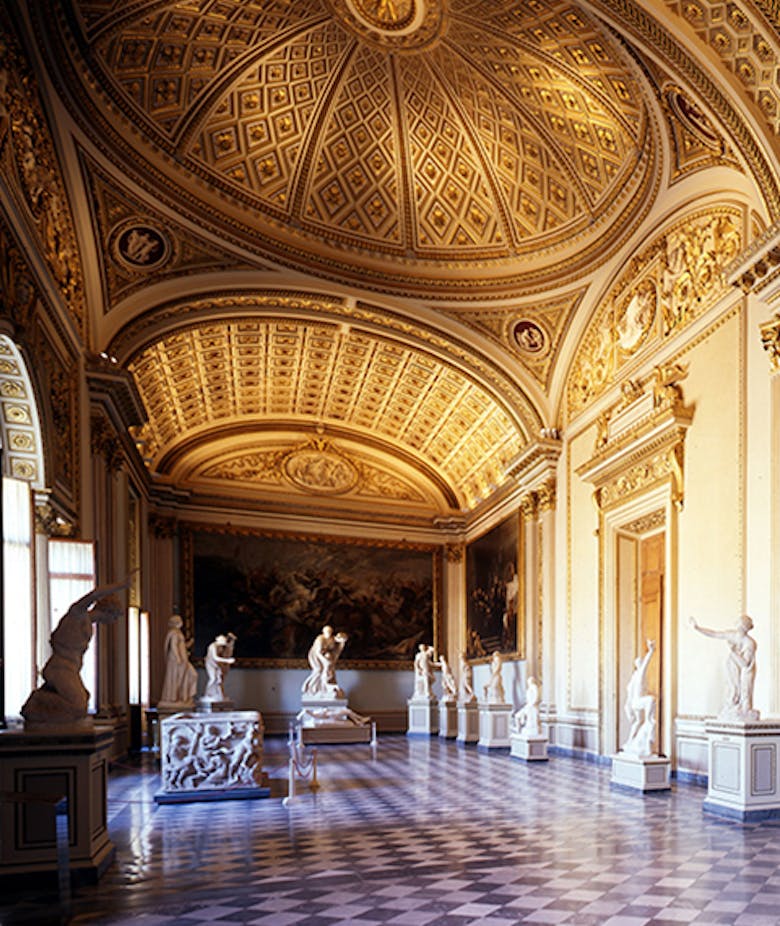
Florence: Stay
portrait hotel.
View this post on Instagram A post shared by Portrait Hotel
One of two sister properties that flank the Arno river owned by the Ferragamo family, this hotel is just as stylish as you would expect. Rooms are sleek and minimal, filled with luxurious touches like cashmere blankets and a high quality hair dryer and straightener in the bathroom.
Helvetia & Bristol

La Taverna di San Giuseppe

In a rustic, 12th-century building, this beloved taverna serves traditional Tuscan dishes like ribollita, pappa al pomodoro, handmade pici, and cinghiale (wild boar) when it’s available. Be sure to book in advance, as it’s ever-popular with locals and travelers alike.
Osteria Le Logge
View this post on Instagram A post shared by Osteria Le Logge
For more than 45 years, this osteria just steps from the Piazza del Campo has been serving refined Tuscan fare in a warm, casual room that was once a grocer’s shop. The owners run a winery in Montalcino, so be sure to sample some of their brunello alongside the other lovely Tuscan wines in their cellar—in this case, an ancient Etruscan cavern.
Pizzeria Poppi
View this post on Instagram A post shared by Pizzeria Poppi
This small counter-only pizzeria is famous for ciaccino, a local focaccia that’s baked thin in large rectangular trays and stuffed with mozzarella and prosciutto cotto. Though it looks unassuming from the outside, one bite will have you in gooey, cheesy bliss.
Ristorante Gallo Nero

This warm, romantic restaurant is tucked away on the ground floor of what used to be a 13th century palace and feels like you're eating in a medieval wine cellar. The artfully presented dishes are definitely a step up from traditional Italian spots, and the pastas are wonderful. It can also be a really nice reprieve from the crowds!
Aloe&Wolf

Fashion lovers come to this boutique for a treasure trove of vintage designer clothing and accessories. This isn’t any ordinary thrift shop! You’ll love the unique, high-fashion finds you’ll end up taking home with you.
Duomo di Siena

Locals know that this cathedral is the grandest in all of Tuscany (yes, even more impressive than Florence!). One look at its dramatic black-and-white striped marble interior modeled on the city’s crest and you’ll agree; it’s a marvel of medieval artistry from floor to ceiling. Be sure to set aside plenty of time to explore every corner of this cathedral complex, or you’ll miss precious details like the altar sculptures by Michelangelo. If heights don’t daunt you, take the guided “Gate of Heaven” tour, which gives a rare bird’s-eye view of the frescoes and stained glass from walkways that are tucked under the roof.
Piazza del Campo

This grand, central public space outside the city government building is one of the most unique in Italy. Its odd shell-like shape paved in red bricks that are divided into pie slices is a symbolic reference to the Noveschi (the Nine), the group of powerful oligarchs who ruled Siena at the height of its influence. The palazzos that line the square were the homes of these important families; by careful agreement, no one building is any taller than the others, signifying that they held power equally.
Via di Città

The town of Siena was masterfully planned from start to finish as a grand display of power and precision. Walk along this main artery that symbolically connects religion and politics (it runs from the government seat in Piazza del Campo to the grand cathedral complex) to wonder at the vision of the medieval leaders who made it happen. In between lie the grand palazzos of many important families, the stone facades of which you can admire as you stroll and shop.
Siena: Stay
grand hotel continental siena.
View this post on Instagram A post shared by Grand Hotel Continental Siena
This opulent hotel in a 16th-century palazzo might just be the most luxurious place to make your home base in Tuscany. With four-poster beds and lush tapestry canopies in most rooms, you’ll feel like a member of the Italian nobility yourself, especially when you sample the daily wine tastings in the underground cellar.
Pienza: Eat
fredo gelateria.

In the center of town, this shop makes the most delicious artisanal gelato from premium ingredients all sourced by hand from local farms and orchards. Any fruit flavor is not to be missed! Not in the mood for a frozen treat? They also make delicious traditional Tuscan pastries like pane dei santi, a rich bread enjoyed in the fall around All Saints’ Day.
Piccolomini Cafe

This charming cafe in a quaint plaza makes for a great lunch spot with lots of outside seating. The best time to come is for aperitivo hour when you can enjoy an Aperol spritz or negroni and snack on homemade focaccia and cheese. For a traditional meal, order the pici, a thick hand-rolled pasta from Siena that looks like oversized spaghetti.
Podere il Casale

This organic cheese farm is home to an exceptional farm-to-table restaurant that uses fresh ingredients from their garden and the animals on the farm. Take in the stunning views of the Val d’Orcia—a valley with rolling hills that’s been designated a UNESCO World Heritage Site—from the panoramic terrace. If you’d like to make a full day of it, Podere il Casale also offers cooking classes and activities like pizza and pasta making, bread baking, cheese making demos, and truffle hunting.
Palazzo Piccolomini

This lavish palace was once the summer home of Pope Pius II. Today, it holds a ground-floor museum that shows how the 15th-century pontiff lived (spoiler alert: very well!), a small wine shop with a great selection of local wines, and a stunning rooftop garden that offers incredible views of the Orcia Valley below.
Officine 904
View this post on Instagram A post shared by Officine 904
Visit this family-run fashion shop for unique and trendy bags, purses, wallets, and more made from the high-quality soft leather for which Tuscany is known. Partners in life and business, Paolo Porcu Rodriguez and Silvia Pavanello are the visionary artisans behind the studio and all their timeless design.
Pienza: Stay
Montepulciano: eat, agriosteria tenuta astrone.

This cute farmhouse restaurant south of Montepulciano is known for its Tuscan burgers, which arrive deconstructed with the lettuce, cheese and bread on the side. They cook the meat in terracotta pots, which change color in response to the heat of the flame. It’s a visual way to tell how the meat inside is cooking, an ancient local method of cooking that’s fascinating to watch.
Godimento Di Vino

The name of this restaurant means “Enjoyment of Wine,” and that’s certainly what you’ll do as you browse the extensive cave filled with local vintages. Located in a rustic stone building on a winding, quiet side street, this cozy spot serves classic Tuscan fare for which the knowledgeable staff is always ready to recommend the perfect pairing.
Montepulciano: Do
avignonesi winery tour.

Vino nobile de Montepulciano is a sangiovese-based red blend that, along with its cousins chianti and brunello di Montalcino, helped make Tuscan wines the international powerhouse they are today. Though they are primarily made with the same grape, the unique conditions of each small town and the methods used by local winemakers can change the final product dramatically. Montepulciano’s version is medium-bodied but can age well for decades, striking a lovely middle ground for red wine fans. Taste it and other local wines (dessert wine lovers must try their vin santos!) at this gorgeous, welcoming winery.
De’Ricci Cantine Storiche

As a center of wine production since the Etruscan era, it’s no surprise that Montepulciano was built on wine—literally! Below the streets of the town are a network of caverns built into the stone centuries ago to age and store wine at the perfect temperature year-round. Many of the wineries in town offer tours and tastings; this one is the most stunning, with a vaulted ceiling of terracotta bricks reminiscent of a grand cathedral and a labyrinth of ancient tunnels.
Fortezza Medicea

This 13th-century fortress was once a defensive structure for the Medici family as they consolidated their power across the region; today, it serves a much more friendly purpose as the headquarters of the local wine consortium, which manages the production of vino nobile de Montepulciano, among others. Learn about this beloved local wine and taste plenty of samples, then head outside to stroll the manicured, shady gardens that overlook the Val d’Orcia below.
Palazzo Comunale

If you’ve traveled through Florence on your way to Montepulciano, the design of this local town hall might look familiar: It was modeled after the Palazzo Vecchio in the capital city on the order of Cosimo de Medici. Turn left in the building’s courtyard to enter the bell tower, from which you’ll get amazing views of the valley that extends below you. A terrace level is accessible by elevator, but if you can brave the narrow stairs from the terrace up to the top of the belfry, you’ll be able to see all the way to Siena.
Piazza Grande

One of the few truly flat spaces in this extremely hilly town, this central piazza has been the heart of life in Montepulciano since the Middle Ages. It’s bordered by the duomo, town hall, and the palazzos of several formerly prominent families, all of which are breathtaking to see. On one side, you’ll see a stone well topped by a griffon and lion, the coat of arms of the powerful Medici family (if you’re traveling through the region, you’ll spot this symbol in many places!).
Montepulciano: Stay
monteverdi.

About a half-hour drive south of Montepulciano, this hotel nestled in the hills of Tuscany is Giada’s happy place! Monteverdi has a little bit of everything: a great spa to relax in, culinary classes where you can learn how to make pastas with their in-house chefs, an art gallery, and scenic hiking trails. Sign up for an on-property cooking class with chef Giancarla at their Culinary Academy.
Montalcino: Eat
il giardino.

Run by a husband (the manager) and wife (the chef), this intimate restaurant’s arched interior and neutral tones set the tone for a cozy meal. The pastas and plates here like pistachio-crusted lamb chops and stuffed rabbit are a bit more refined and elegant than traditional Tuscan restaurants, and they also offer an extensive wine list. Order a local rosso di Montalcino or brunello di Montalcino wine with your meal!
La Sosta

This charming wine bar and restaurant in the heart of town is steps from the medieval fortress. Be sure to sit outside on the back terrace for the best panoramic views. In addition to an excellent wine selection, they have an amazing blanched green bean salad with walnuts that's lightly dusted with an anchovy-and-caper dressing—it was so good, Giada went back for it again the next day!
Locanda Demetra

This farm-to-table restaurant and cooking school owned by three siblings has a covered outdoor terrace overlooking the Tuscan hills, making it a great place to unwind and enjoy an Italian lunch at a leisurely pace. They make a delicious brunello jam from their grapes, which are unique to the Montalcino area.
Ristorante Taverna del Grappolo Blu

This cozy restaurant is our pick for a classic Italian meal where you can enjoy Tuscan charcuterie, pasta, and wines. Inside has a rustic ambiance, while outdoors, you can grab a cozy bench for two with a view of the Tuscan countryside.
Porta al Cassero
View this post on Instagram A post shared by Porta al Cassero
If you're looking for a quick and casual meal, this osteria offers a menu of salami and cheeses to start and traditional Tuscan dishes like pici with ragu, polenta, wild boar and bean stew, or roast rabbit. Come here for a simple homestyle lunch!
Montalcino: Do
casanova di neri.

Visit this winery to learn about the unique wines you can find in Montalcino, from brunello to rosso and toscana. On weekdays, you can take part in a wine tasting experience in their farmhouse. Not only are the folks here generous with their wine pours, the professional staff are generous about sharing their knowledge, too. You'll walk away feeling like an expert about wines of the region.
Farmacia Salvioni 1905

This old (founded in 1905!) but beautiful historic pharmacy sells its own cosmetics line that started in the same laboratory where brunello wine was created. Browse products like serums, creams, perfumes and supplements featuring natural ingredients like grape extract and plant stem cells, then head out the back of the shop for a surprise: a small terrace with a stunning Tuscan view!
Montalcino 564

Owned by a husband-and-wife duo who run several shops around Montalcino, this is an Italian fabric store that also doubles as a wine shop. It’s a great place to buy souvenirs like home accessories, and the owner can make anything you want out of his gorgeous textiles made from linen, hemp and natural cotton. It’s a great place to bring home one-of-a-kind keepsakes like tote bags or towels that you’ll be able to use every day.
Villa i Cipressi

This estate farm started producing honey more than three decades ago, and expanded into grape and olive vineyards to make brunello di Montalcino, rosso di Montalcino and grappa di brunello and extra virgin olive oil. Visit the winery to learn how they make these regional wines, and see the apiary to learn about the honey production process and taste all the types of local honeys they offer!
Montalcino: Stay
villa palazzetta.

This stunning villa overlooking Montalcino and its valley is elegant and homey all at once. Nestled in the Tuscan hills, the property has its own vineyard and an olive orchard but is less than a 10-minute walk to the historic center of town. You'll want to spend all day by the pool with its incredible views of Val d'Orcia!
San Gimignano: Eat
gelateria dondoli.
View this post on Instagram A post shared by Gelateria Dondoli
Rightfully famous for its innovative flavors, this gelato shop run by the charismatic Sergio Dondoli is a must-visit in this picturesque town. Sample saffron and pine nuts, grapefruit and sparkling wine, chocolate with cherries and chili, and many more flavors, all made with local raw milk and hand-picked fruits and nuts from across Italy.
Ristorante Il Pino
View this post on Instagram A post shared by Ristorante Il Pino
On a quiet side street near the arch of Porta San Matteo, this lovely family-run restaurant has been around since 1929 and is known for traditional Tuscan dishes prepared with local ingredients. Dine by candlelight in the warm, rustic setting with exposed bricks, medieval arches and original cross-vault ceiling from the 1200s. Beef is their specialty, so be sure to order the carpaccio and bistecca alla fiorentina!
Osteria del Carcere
View this post on Instagram A post shared by Osteria del Carcere
At this cozy, welcoming wine bar, enjoy casual snacks like Tuscan salumi and cheeses, bruschette, and warming soups, all paired with local wines. Ask the friendly staff for a recommendation—they’ll be sure to pour you something utterly delicious!
San Gimignano: Do
camminamento delle mura.

San Gimignano is one of the many Tuscan towns surrounded by an ancient fortified wall, a remnant from the turbulent medieval era when warring families fought for control of the region. Recently restored after an earthquake, this walkway atop a section of the town’s walls offers magnificent views of the countryside.
Torre Grossa

In the Middle Ages, wealthy families in San Gimignano each built their own towers to show off their power—at one time, there were 72 towers looming over the small city. Today, just over a dozen remain, but the tallest is this one attached to the local town hall. Climb the 218 steps to the top for a panoramic view of the vineyards and rolling hills surrounding this picturesque town.
Visit a Local Artisan

The main street of San Gimignano is lined with tons of wonderful artisans’ shops, from leather goods to ceramics, carved alabaster from nearby Volterra, and, of course, lots of delicious food and wine to take on your travels. Stroll up the pedestrian walkway and pop in wherever catches your eye—we guarantee you’ll find some memorable souvenirs.
San Gimignano: Stay
hotel la cisterna.

Set in a 14th-century building in the historic heart of San Gimignano, Hotel La Cisterna overlooks the ancient Piazza della Cisterna. Choose a room with a memorable view of the medieval piazza or the endless Tuscan countryside—you can’t go wrong either way. As a bonus, the hotel’s on-site restaurant, Le Terrazze, is the only eatery in the piazza with a panoramic view. From April through October, they also run a bar on the terrace that opens in the afternoon. It’s one of Giada’s favorite spots for an aperitivo!
Hotel L'Antico Pozzo

This elegant, 18-room boutique hotel is full of charm and tucked away from the crowds touring San Gimignano (fun fact: It’s owned by the same family as Ristorante Il Pino around the corner). Descend the stone staircase into the lobby and continue deeper to discover their underground cellars. The hotel’s medieval structure has been well-preserved and beautifully furnished to offer comfortable, traditional-style guestrooms. Room types here are named after Italian poets; the spacious, high-ceilinged Dante Rooms are our favorite.
Travel With Us
Unlock this and more than 20 other travel guides and itineraries curated by Giada when you join The Membership
Already a Member? Click here to login
Get a taste of the region

Tuscan Sweet Mustard Large

Organic Fagioli Cannellini Beans

Tuscan Pepper Jelly Mostarda Small

Italian Pine Nuts

Tuscan Salt Blend

Organic Hulled Farro

Organic Pappardelle Pasta

Tuscan Grill Herb Blend
More from tuscany.
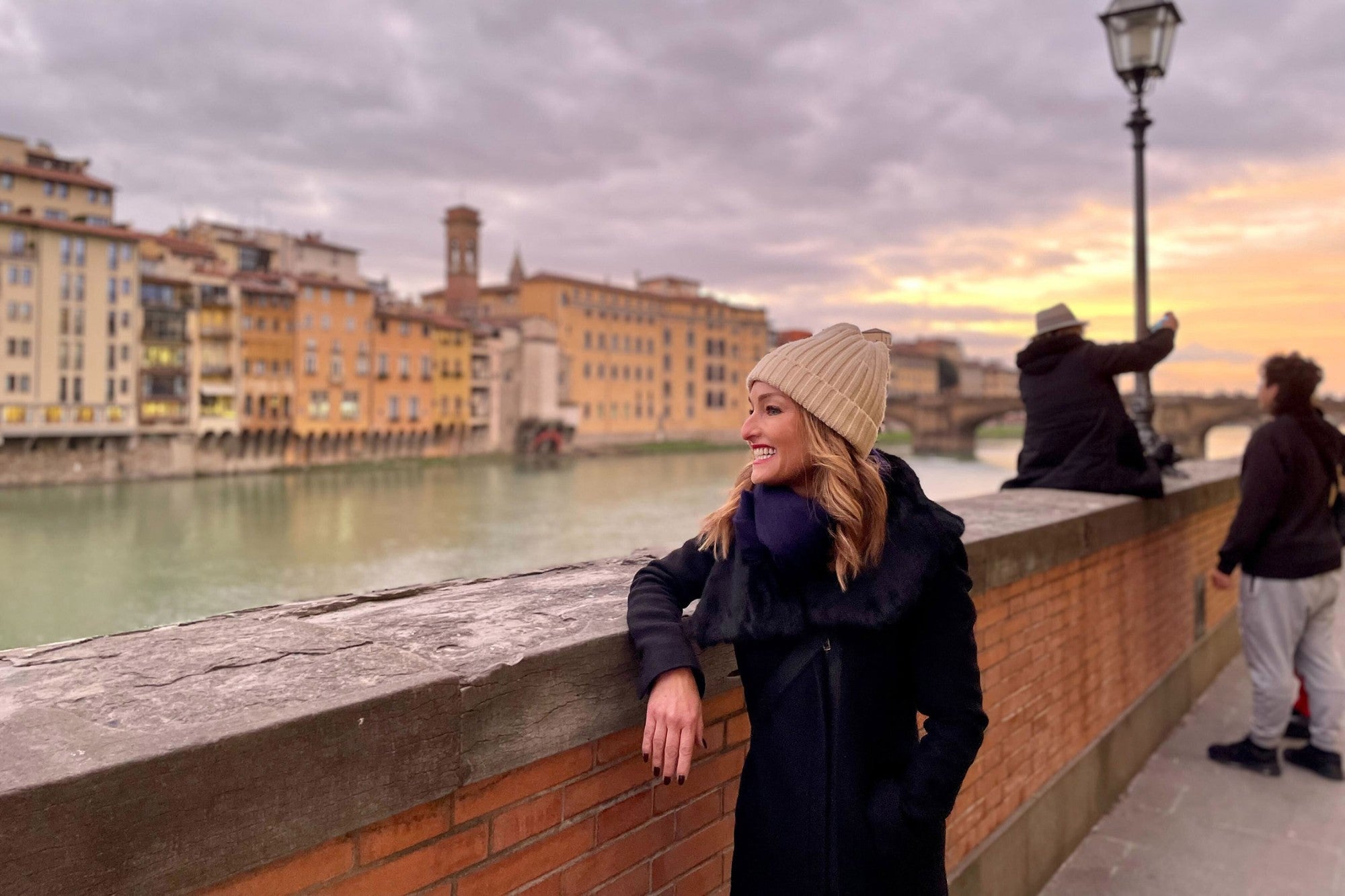
Giada's Guide to Florence
Making Florence your home base? See the rest of Giada's recommendations on where to eat, do and stay in Florence
© 2024 Giadzy Privacy Policy Terms of Use Giadzy is a registered trademark. All rights reserved.
Join us and get nice things
Free stuff and general goodness
*By completing this form you're signing up to receive our emails and can unsubscribe at any time.

A Local’s Guide to Travel in Tuscany

Tuscany, the most famed region in Italy and a place visited by millions of people every year, really needs no introduction. Featured in countless films and often used as the postcard image of quintessential Italy, Tuscany is squarely on the tourist map for just about everyone.
And that’s for good reason; because this is a truly spectacular region!
Tuscany has just about everything that you could ask for from a vacation destination: majestic UNESCO world heritage cities and towns, a to-die-for countryside, lovely mountains and fabulous beaches, and globally-renowned culinary and enological traditions. Simply put, we’ve got it all here!
And when it comes to culture, Tuscany is a fabulous part of Italy to discover. Tuscan, the region’s dialect, is very similar to Latin, and today’s standard Italian language was born from it. This is largely thanks to the writings of local artists like Dante Alighieri, Francesco Petrarca, and Niccolò Machiavelli.
On top of that, this was also the cradle of the Italian Renaissance, with Florence having been the epicenter. If you’re interested in art and history, few places in Italy can beat Tuscany.
So, if you’re looking to sample great food and wine, enjoy beautiful scenery, walk through history in medieval towns, and maybe even hit the beach for a bit, Tuscany has got you covered. No matter your tastes, travel style, or interests, Tuscany has something to offer.
More Tuscany travel info:
If you could use some one-on-one help planning your trip to Tuscany, schedule a Tuscany travel consultation with one of our Local Experts!
Private guided tours in Tuscany
7-day Tuscany itinerary
Chianti Classico travel guide
Val d’Orcia travel guide
Guide to Florence
Guide to Siena
Guide to Cortona
Guide to Montepulciano
Guide to Lucca
Guide to Pisa
Click here to see all of our Tuscany guides & itineraries
Table of contents
Where is tuscany, best time to visit, how long to spend here, how to get to tuscany, where to stay in tuscany - best bases.
Transportation and how to get around
Is Tuscany expensive? Average travel costs
Paying for things and using credit cards, what to do in tuscany.
Best places to visit in Tuscany
Tuscany itineraries - from 5 days to 2 weeks
Plan your itinerary with local help.

If you could use some help planning your Tuscany itinerary, schedule a Tuscany travel consultation with Serena, our Montepulciano-based Local Expert!
These are one-hour Zoom calls where you’ll get to chat with Serena about the trip you’re planning and she’ll share her tips and advice, answer your travel questions, and help you perfect your itinerary.
Guided Tours in Tuscany

If you’re looking to hire a guide for tours or experiences while in Tuscany, you have loads of great options: hilltop town tours, day trips into the countryside, wine tours, gastronomic experiences, truffle hunting, hikes, city walking tours, and on and on.
City tours of Florence
If you’re looking for city tours in Florence, our recommended guide is always Francesca Zambini . She’s a Tuscan native who’s been guiding for over a decade and splits her time between Tuscany and Rome (where she also runs tours).
Day trips, wine tours, and outdoors adventures in Florence and Chianti
For everything from hiking to cycling, Cinque Terre day trips, and wine tours in Chianti, Florence-based guide Stefano is an outdoors enthusiast and sommelier whose goal is to help travelers see an authentic slice of Tuscany.
Walkings tours, day trips, and food/wine-focused tours in the Val d’Orcia
For walking tours of places like Siena and Montepulciano as well as wine tours, hilltop town hopping, and unique gastronomic experiences in the Val d’Orcia, our go-to is always Serena Baglioni . She’s a local guide based in Montepulciano who organizes fun and unique experiences in her gorgeous region.
Tuscany is located in central Italy, about a 2-hour drive north of Rome at its southernmost point, and an hour south of Bologna in the region’s north. It is bordered to the northwest by Liguria, to the north by Emilia-Romagna, to the east by Marche and Umbria , and to the south by Lazio (where Rome is).
The western edge of Tuscany, runs all along the coast, from the Tyrrhenian Sea in the south to the Ligurian Sea in the north. Along much of the region’s northern border, you will find the Tuscan-Emilian Apennine Mountains, along with the Apuan Alps in the northeast.
Tuscany is a fairly big region for Italy (about 8,900 square miles), which means that there is a lot to see and do, and there is much more to it than just its (beautiful) countryside and the (magnificent) city of Florence.
Scattered all throughout Tuscany you will find fortified hilltop towns, mid-sized cities, beaches and coves, mountains, parks, and hot springs. Ready to start discovering it? Then keep reading!

The best time to visit Tuscany is indisputably late spring or early fall, especially the months of May and September. These are the periods when traveling in Italy is most enjoyable, and Tuscany is no exception.
Visiting in late spring and early fall
In late spring, the temperatures are already warm but not excessively hot, so it’s perfect for visiting historic towns, the countryside, and also the coast.
Besides Florence, which is crowded all year round, late spring isn’t packed with tourists, so you will surely enjoy your time there. Italians are still at work/school, so prices for accommodation and other attractions haven’t yet skyrocketed. Plus, most restaurants on the coast and less touristy areas/towns will already be open since they usually open up right after Easter (which is in late March or until mid-April).
Similarly, September also has great weather, lower prices, and less crowds. On top of that, seasonal venues (beach clubs, for instance) are still open and going full swing, before things die down toward the end of the season and everyone closes up shop for the winter.
If you can swing it, there’s no question that late spring or early fall are the perfect times to travel in Tuscany.
Visiting in summer
In summer, the weather is roasting hot in the cities and towns, while the coast overflows with vacationing Italians and foreign tourists. This is especially true from mid-July to the end of August.
Prices are incredibly high and availability is limited pretty much everywhere, so you need to reserve way in advance for hotels, rental cars, restaurants, and even entrance tickets to popular museums and historical sites.
Now, if summer is the only time you can come to Tuscany, don’t despair! While it’s not the ideal time to visit, it’s not as if every town, beach, or vineyard is going to be permanently packed.
You can always find hidden places that the masses have yet to discover, and if you visit popular locations early in the day or later in the evening (before the day trippers have arrived or after they’ve left), you can still enjoy beautiful places in Tuscany without being constantly shoulder to shoulder with others.
If visiting in summer, you just need to plan ahead, make reservations in advance, and visit the right places at the right time.
Visiting in winter
Visiting Tuscany in winter isn’t an outright bad idea either. While entrance tickets for museums and monuments are the same all year long, hotels and car rentals are much more affordable than at other times of year. If you’re looking to save money, this is the ideal time to travel in Tuscany.
November, January, and February are the least busy times to visit the region, which all makes it the ideal time to travel through the beautiful hilltop and art towns, which are packed throughout much of the rest of the year.
However, just be aware that it’s pretty chilly at this time of year, the weather is unpredictable and can often be grey and rainy, and trips out to the countryside or coast aren’t especially pleasant.
There is much more to see in Tuscany than just Florence and the Chianti hills. Tuscany is rather big, and it’s home to many historic sites and art towns (which are towns of great artistic/historic importance). The Tuscan coast is also stunning, with not one but two beautiful islands that you can travel to.
For the most part, it’s also quite easy to get from one place to another since the distances are pretty manageable by train or car, and there are good public transit connections for major destinations. Thankfully, you will never have to sacrifice entire days to travel, and will instead be on the road for at most a few hours before reaching your intended destination.
Even so, to appreciate Tuscany properly and to really get a feel for the region, you will need to slow down and take your time. This is especially true if your itinerary includes Florence, as that will take up a minimum of two days.
5 days - for a decent introduction
You need at least 5 days in Tuscany in order to appreciate the region and see a bit of what it has to offer. Remember, this is a region filled with beautiful hilltop towns, renaissance cities, coastline, mountains, and world-renowned wine country, so it has a lot to offer you.
While many people come in to Florence for 2 days, and then tack on a day trip out to the Val d’Orcia or Chianti area and call it a day, that’s not recommended - you’d simply be missing too much of what makes this region special.
To do things the right way, dedicate 5 days to Tuscany, and spend 2 of them discovering the renaissance jewel of Florence, then venture out to the Chianti countryside to visit wineries, thermal baths, or the coast, and give yourself a day or two to road trip between a few of the region’s beautiful hilltop towns.
Doing all of that in 5 days won’t be especially relaxing, but it will allow you to actually see Tuscany and begin to understand what the region is all about. 7 days would be better, as that would give you time to slow down and enjoy yourself a bit more, while having an extra day for Tuscany’s natural areas and another one to visit more of the historic towns dotting the entire region.
7 days - enough time for a solid itinerary
A 7-day trip to Tuscany gives you enough time to check off many of the highlights, while also spending some time enjoying the region’s gorgeous countryside. It’s not enough days to see the entire region, but it will let you beyond just the surface.
With 7 days, you could spend a pair in Florence, go wine tasting in Chianti, enjoy Siena, and then hop around the hilltop towns of the Val d’Orcia before finishing your trip in Pisa.
Depending on what your interests are, you could trade out a day in the Val d’Orcia for a day spent visiting places closer to Florence like San Gimignano and Monteriggioni. For your final day, if Pisa doesn’t appeal you could consider Lucca or Cortona instead. With 7 days, you have some good options.
For a detailed one week plan, check out our 7-day Tuscany itinerary .
10 days - the ideal visit
With 10 days in Tuscany, you can fully experience the region and see it in all its glory. This is the perfect amount of time to spend here. With a week and a half, you can do everything mentioned above, visiting art towns to your heart’s delight, making a trip to the gorgeous city of Siena, spending plenty of time in Florence, and then heading out into the countryside for a few days discovering the hills and wineries of the Chianti or Val d’Orcia regions.
You’ll likely even have time to spend a coupe of days beach hopping along the Tuscan coast, visiting seaside cities like Livorno, and quiet coves lined with pine trees.
To really mix things up, you could shorten your time visiting the hilltop towns or cities of the region, and add on visits to the islands of Elba or Giglio.
With 10 days, you can thoroughly discover this region. There are countless ways to spend a week and a half in Tuscany, and the beauty of this is that you will never run short of things to do and places to visit. Your only challenge will be deciding where you want to spend most of your time!

Tuscany has two cities with international airports: Florence and Pisa.
Florence’s airport is called “Amerigo Vespucci Airport” (FLR), and it’s located about 10 kilometers northwest of the city. This airport is small but efficient and hosts flights from cities around Italy and Europe. If you are traveling from the US or elsewhere in the world, you will probably need to fly into Rome or Milan instead.
From Florence’'s airport, you can take a tram into the city, and then from the central Santa Maria Novella train station you can transfer to virtually anywhere in Italy, with high-speed connections to Milan, Rome, Bologna, Naples, La Spezia, and other destinations.
Pisa International Airport’s (PSA) official name is Galileo Galilei Airport, and its distance is only 6 kilometers from the town center. Flights here depart to/from other Italian cities and some European destinations.
From the Pisa airport, you can easily arrive into the city center with the Pisa Mover, a high-speed monorail train that gets you into the city in just 5 minutes. Then, from the Pisa train station, you can catch trains to many other destinations in Tuscany, including Florence.
Arriving by train
Tuscany’s major towns are incredibly well-connected by trains with other parts of the country. You can easily arrive into many different cities and towns in Tuscany from Rome, Bologna, Milan, Turin, La Spezia, etc. Many of these routes are served by high-speed trains. You can also travel to and throughout the region by Intercity and Regional trains, which are slower but cheaper.
Of course, the central hub for all of Tuscany is the city of Florence , which has high-speed train connections with almost every other major city in Italy. In many cases, if you’re traveling to Tuscany from elsewhere in Italy, you will probably first arrive to Florence’s central Santa Maria Novella train station, and then catch a connecting train on to your final destination in the region.
You’ll usually find multiple daily departures from Florence to many other Tuscan cities and towns. For information on trains and timetables, check the Trenitalia and ItaloTreno websites.
Most trains in Italy are operated by the national rail service, Trenitalia . However, depending on where you’re coming from, the private train company Italo , which exclusively operates high-speed trains on Italy’s most heavily used routes, may also be an option.
Taking a ferry
For those of you who are coming from Sardinia, Sicily, or Corsica, you can also arrive to Tuscany by ferry, into Livorno, the largest port in the region. From Livorno, it’s an easy train ride on to other destinations in Tuscany.
Where to buy train and bus tickets
In general, we recommend booking your public transport tickets directly with the service provider. That said, when you’re trying to see all your options and compare routes and prices, it can be a real hassle to have to look up each individual company.
Omio is an aggregator that shows options for public transport routes all over the world. When you do a search, you’ll be able to see all your options for trains, buses, flights, and even ferries along with a host of different companies that provide the services.

If you’re planning to stay in Tuscany for anything more than 3 days, you should split your time between a few different bases, so that you can see different areas of the region and minimize time spent driving or taking the train out to places of interest.
For stays of 3 days or less, however, and especially if this is your first time in Tuscany, you should almost certainly base yourself in Florence. More on that below.
Florence , the birthplace of the renaissance, is a gorgeous city and a must-visit for anyone traveling to Tuscany. Florence is iconic, and the city is filled with more world-class museums, galleries, churches, gardens, and gorgeous buildings than you could possibly visit in a single trip.
Is it touristy? Yes. Is it still worth visiting? Absolutely yes! As long as you know what to expect and have a good plan for your visit, you will have a great time in Florence. Millions of people come here for a reason!
Florence is also an ideal base because being Tuscany’s biggest city, it offers a huge selection in terms of accommodation, restaurants, tours/experiences, nightlife, and cultural offerings.
From a purely practical standpoint, Florence is centrally located within the region, it’s extremely accessible without a car, and it’s the central train hub for all of Tuscany, meaning that you can get almost anywhere else you want to go quickly and easily from there.
One quick transport note: if you plan to rent a car for your trip, wait to get it until you’re done visiting Florence, or drop it off before you arrive in the city (if you’ll visit Florence at the end of your trip) as parking in the city is an absolute nightmare.
Staying in Siena is a great idea if you want to be in a city, but close enough to the Chianti and Val d’Orcia regions to easily visit them as day trips. Siena is also a beautiful city in its own right, and is well worth a full day’s exploration. A bustling university town, it’s got plenty of great restaurants and bars where you can enjoy a fun night out.
Siena is also known for its many antique shops and a weekly market, the Mercato delle Merci, which is one of the largest in Tuscany.
The city isn’t especially big (only about 50,000 residents), so you won’t find quite as many hotel options as in Florence, but there should still be plenty of places to choose from at all price levels.
One important thing to know is that the towns and countryside outside of Siena (Val d’Orcia, Chianti, etc.) are not very well served by public transportation, so you will really need to have a car if you choose to stay here and want to visit the surrounding area.
Monteriggioni/the province of Siena
Now, if you’re interested in staying in the countryside amongst the smalls towns of rural Tuscany, the province of Siena is your best option. This area is gorgeous, it’s got tons of wineries, and is bursting with “agriturismi” (elegant farmhouses converted into hotels, many with pools and excellent on-site restaurants), which are wonderful accommodation options.
The town of Monteriggioni is one excellent countryside base. Here, you can visit the local castle, admire stunning views, do all sorts of outdoor activities (from horseback riding to e-biking), and quickly travel to Siena and other points of interest.
The Maremma Coast
On the Maremma coast, which begins a bit south of the city of Livorno and continues down into the region of Lazio, you can stay in charming towns like Grosseto, Orbetello, Follonica, or Porto Santo Stefano.
Porto Santo Stefano is a particularly beautiful town, beloved by the rich and famous, which boasts a bubbly atmosphere in a Mediterranean setting. The town doesn’t offer cultural attractions, but it has stunning beaches and coves. The surrounding area is especially verdant, so it’s also a great place to enjoy scenic walks in nature.
Since the main attractions in this area are the beautiful beaches, many of which are not served by public transporation, you will need to have your own car in order to really experience what makes the Maremma Coast so special.
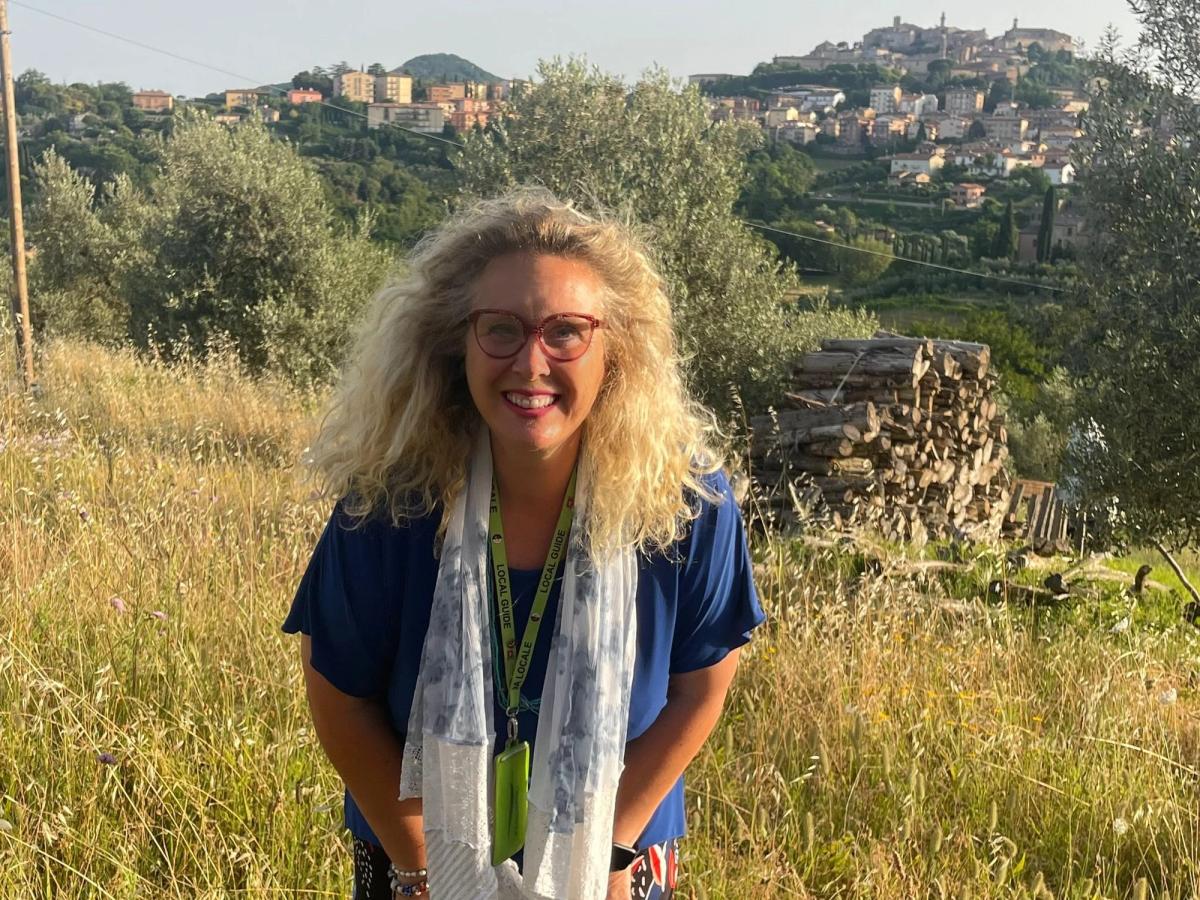
Connect with Serena in Tuscany for help perfecting your itinerary, answers to all your travel questions, and fabulous local tips for a better visit!
Renting a car & driving in Tuscany

Renting a car in Tuscany is extremely straightforward. You’ll find rental car offices in major cities like Florence, Siena, and Pisa, as well as at the airports. All of the major international rental car companies can be found here, along with a few local options, and you can pre-book your car online and pick it up when you arrive.
The price per-day for renting a manual-transmission compact car is usually around €30.
Now, regarding driving in Tuscany, Italy is somewhat infamously known for having aggressive drivers, so you might be intimidated by the thought of driving here.
However, Tuscany's peaceful landscapes (which is where you’ll likely be doing most of your driving) are lightly trafficked and the locals in those rural areas usually drive quite reasonably. Driving in the Val d'Orcia or Chianti hills is largely a stress-free experience.
If you are visiting the Argentario Coast during the peak of summer, you will certainly find traffic, but drivers will be mostly laid-back and in no rush, as the area is heavily frequented by people on vacation.
Driving within the cities or in the narrow winding roads of the hill towns can be a bit more stressful, but there’s really no need to use your car within a city or town, so once you park it, you won’t have to worry about repeated trips into heavy, impatient traffic.
Renting a car
For the largest selection of cars and agencies, you should plan on renting in either Florence or Pisa. This is where Tuscany’s two main airports are, so you have the most cars and usually also the best prices.
In Florence, you can rent directly at the airport, at Santa Maria Novella train station, or in a few downtown locations. In Pisa, all the rental agencies are at the airport.
You also have a few rental agencies in Siena, a couple in Arezzo, and a few in Chiusi (near to Montepulciano). If you’re coming off of a cruise ship or ferry, the port city of Livorno also has lots of car rental agencies.
Where to book a rental
To check prices and book, I recommend using DiscoverCars . It’s a car rental website taht includes offerings from all the major international rental companies as well as lots of smaller local agencies, which often have much better pricing. You can often find great deals.
I use it myself and have always had good experiences.
Check car rental prices on DiscoverCars!
Road conditions
Most secondary roads in the region are two-lane country roads, and they might not always be perfectly paved.
Medieval towns and villages have tiny and tight roads inside the centers. Mostly uphill, these streets are challenging to navigate. They are usually one-way roads, but this isn’t always true, so you might have to stop, pull over, and let the a passing car go by before you can drive on.
Manual transmission cars
In Italy, it is still popular to drive manual transmissions cars, so if you are not used to it, make sure to select a car with an automatic transmission when booking your rental car (just note that the price might be higher).
ZTLs - traffic limited areas
Some town centers, especially historic ones, have ZTL (Limited Traffic Zone) areas that only residents can drive through. If you drive into a ZTL area, you will almost certainly receive a fine, so always be on the lookout for the signs alerting you to them.
You will see a “no traffic” or ZTL sign at the entrance(s) to the town, so you will know when you can’t proceed with the car.
Finding parking in small towns is often quite difficult, so it’s can be more convenient to leave the car outside the center of Medieval towns and then walk in.
Usually, there will be municipal parking lots right outside of the medieval walls. Many of these are metered, so you’ll need to pay a small fee.
When parking on the street , you will see different strip colors on the curb. White strips mean that the park is free (unless differently specified on street signs), blue strips mean you have to pay, and yellow strips mean you can’t park there.
To pay for parking, you will need to look for parking meters along the curb.
International Driving Permit
An International Driving Permit (IDP) is legally mandated in Italy. Online sources will tell you that it’s not necessary and that you won’t be asked for it when renting a car.
While they are right that rental agencies rarely request to see it, some do, and the police can fine you if you don’t have it.
Public transportation in Tuscany
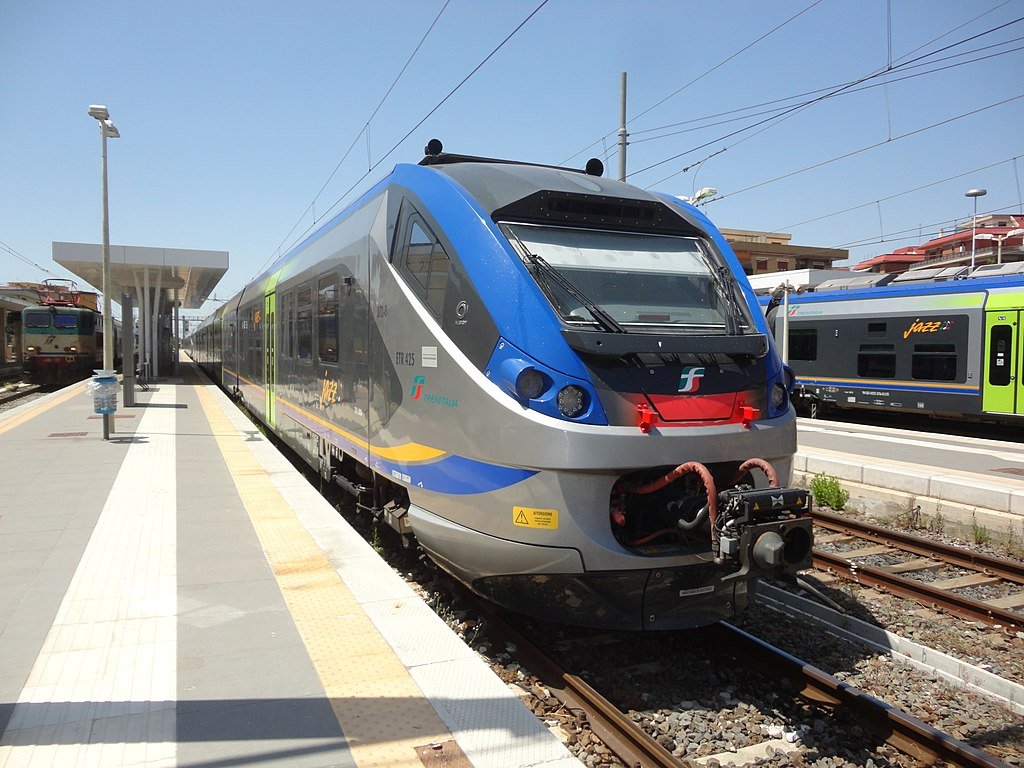
A “Regionale” train. Photo: CAPTAIN RAJU , CC BY-SA 4.0 , via Wikimedia Commons
Tuscany is overall well-connected by public transit. Trains and buses operate all over the region, but trains mainly link art cities and the centers along the coast. Regional and local trains are operated by the national rail service, Trenitalia .
When it comes to traveling within Tuscany, you can easily bounce between the major cities of the region by train. If you intend to only visit big cities like Florence, Siena, and Pisa, there’s no need to have a car, and it would actually probably be inconvenient to get one.
However, if you plan to visit the countryside, the coast, or smaller towns, you will very likely find that having a car is the most convenient option. Public transportation does not cover rural areas and it’s very slow and indirect for many art/hilltop towns, so unless you want to spend a lot of time waiting around on buses, you’re really better off renting a car.
Train travel
Train travel in Tuscany is affordable and efficient, and the major cities and towns are quite well connected. The biggest downside is that many small towns that you may be interested in (like San Gimignano), don't have train stations. Instead, they will need to be reached by bus, or a combination of bus and train.
While most of the main cities/towns have a train station directly in the city center, the hill towns represent an exception to this: they usually don’t have train stations at all, but even when they do have a dedicated station, it will often be located a couple of kilometers outside of the town center.
This is because you can’t run train tracks up hills that steep! In these cases, you’ll have to catch a local bus or get a taxi to take you into the center of town from the train station.
Schedules and frequency of train departures
For routes between popular destinations and big cities, trains depart more or less every hour, with more frequent departures during the peak hours. The frequency of departures varies significantly from one destination to the next, but generally speaking, trains depart as early as 7 am and as late as 11 pm.
Types of trains
In Italy, there are three types of trains:
Trenitalia Frecce fleet - these are high-speed trains that make very few stops between their starting and ending destinations
Intercity , which travel between the country's major cities and towns, making more stops than the high-speed trains, but still not too many
Regionale - slower trains that make a high number of stops within a region
Intercity and Frecce trains assign a specific seat with your ticket, and for popular journeys and/or during busy periods, it’s not uncommon for them to sell out. So, you should always reserve tickets in advance if possible. This will also usually be cheaper than buying at the last minute.
Regionale trains, on the other hand, don’t assign you a specific seat with their ticket (which means you can sit where you prefer or find an empty seat), and as such, never sell out. The certainly can get packed though!
For traveling between the cities and towns within Tuscany, you will likely mostly be relying on Regionale trains, and since they don’t sell out, you can always buy those tickets directly at the train station shortly before your train’s departure. Tickets are also available on the official Trenitalia website/app though.
You also have a company named Italo Treno that runs a network of high-speed trains (similar to Trenitalia’s Frecciarossa fleet) on some of Italy’s most heavily traveled routes.
Validating tickets
If you purchase a physical ticket at the train station, you will need to validate it before boarding the train. There are dedicated machines where you can do this at the station and along the platforms, but if you can’t find them, ask the personnel at the ticket office. If you don’t validate your ticket, you may get ahttps://trainline.tp.st/HluOWC3ghefty fine.
There is no need to validate website-purchased tickets; just show the ticket on your phone to the “capotreno” (train conductor) when asked and you will be all set.
Cost of tickets and booking in advance
Trenitalia train tickets can cost as little as 3€ for local travel, and 50€+ for longer-distance, high-speed train rides. Keep in mind that if you book your long-distance train tickets well in advance, they will be cheaper.
For short routes, there really isn’t a need to buy in advance as the price doesn’t change much. On holidays or at exceptionally busy times of year, you should reserve in advance though just to make sure you get a seat.
In Tuscany, public buses fill the gap that the trains don’t cover, connecting the cities to smaller towns and rural villages. Buses are even cheaper than trains, with tickets costing as little as 1,20€. Bus tickets can be purchased in local kiosks/shops (called "tabacchi" in Italian), inside train stations, and directly onboard from the driver (although they don't always have tickets up for sale).
To validate your ticket, there is a dedicated machine inside the bus, usually in the front, where the driver is.
Bus companies and schedules
The main bus companies in Tuscany are Autolinee Toscane , Sitabus , and Tiemme . You also have Flixbus .
Bus schedules change throughout the year, and it might be challenging to find the updated one, so if you can’t find good information online, it’s best to go to Tourist Infopoints or ask at the "tabacchi" where you are purchasing the ticket. Google Maps is usually quite accurate with bus schedules as well.
In general, the first bus ride from any regularly-serviced destination usually departs around 6 am, and the last trip will be between 10 pm and midnight (depending on how frequented that bus line is, of course). Buses travel between towns on many different frequencies, and you can find them as often as every 10 minutes, or only every couple of hours.
Where to book train and bus tickets
For local buses, you can buy tickets at any bus station, at “ Tabacchi ” (little shops that sell miscellaneous goods, newspapers, and tobacco products - you’ll find them in every Italian town and city). sometimes at bars/cafe, and often aboard the bus.
For longer distance buses and trains, it’s ideal to book directly with the service provider, but the website/app Omio is also very convenient to use.
Taking ferries on the coast
To reach the islands of Giglio and Elba, you’ll need to take a ferry. Elba's ferries depart daily from the towns of Piombino and Livorno. The companies that operate the route are Toremar and Moby. Tickets cost around 20€ one-way and without a vehicle on board.
The ferries to Giglio Island depart daily from the town of Porto Santo Stefano. This route is operated by the Toremar and Maregiglio companies, and a one-way ticket costs around 15€, again, without a car.
Speaking of cars, non-residents cannot bring theirs onto the island during high season, so be aware of this if you’re considering taking your car with you.
Taxis and ride-sharing apps
Ride-sharing apps are illegal in Italy, so these are never an option here. As such, taxis are your only choice. You will find taxis lined up in dedicated locations at airports and train stations, and will usually need to wait in line to take one.
Otherwise, you can google "taxi" followed by the city/town you are in to find the local taxi company that services that town/area. To book a ride, you will usually need to call the company directly.

Compared to other regions in Italy, Tuscany is rather pricey. This shouldn’t be a much of a surprise though, as this is a premier tourist destination that welcomes millions of visitors every year.
Here are some rough prices for typical expenses:
A night at a hotel: 80€ to 150€
An average meal: 15€ for daily lunch specials (typically a main dish, a drink, and coffee or dessert), and 20 to 50 euros for dinner, depending on how fancy the place is and whether you want wine and multiple courses.
A glass of wine: 3€ to 9€
A coffee: 1-2 euros for an espresso or cappuccino at a non-touristy bar/cafe
Renting a car: 30€ per day (potentially much more in the high-season, or if you need an automatic)
A taxi ride within a city/town: 10€ to 25€
Short-distance bus/train ticket: 3€ to 10€
Long distance bus/train ticket (but still within the region): 10€ to 25€
Entrance tickets: 0€ to 25€
There is a wide range of costs here. Local museums or lesser monuments and attractions will usually not cost more than 10 euros, while visiting places like the Accademia Gallery, Uffizi, Siena Duomo Complex, and other premier destinations can cost around 20 euros.
Wine tastings at a winery: 10-20 euros (this usually includes multiple tastings and some light snacks)
Bike/E-bike rental in the countryside: 50 to 100 euros for the day
Guided tours (private and group):
Half-day private guided tour: approximately 250 euros
Full-day private tour: 400-600 euros.
Small group tours: 40-80 euros per person.
Credit cards
When in Italy, you can pay with both debit/credit card and cash. You can use your card to pay in most places in Tuscany. Just note that some smaller bars can ask you to pay cash if you are consuming a meal that costs less than 5€.
So it is advisable always to have some euros in your wallet. You will find ATMs in every town, but the withdrawal of money might apply some fee.
Tipping is not customary in Italy. However, it is sort of expected by foreigners (and especially from North Americans), and it is appreciated by those working in hospitality.
You can only tip in cash, and how much to tip really depends on you. In general, you should tip a few euros for a short and/or undemanding service (like a drink at a bar). In this case, you usually leave the change if you pay cash. You should tip more for ongoing services (like a week-long cleaning service).
Tuscany is best known for Florence, wineries, and its lovely Renaissance towns where famous artists and scientists lived, from Leonardo Da Vinci to Michelangelo. This is a big region though, and there’s much more to it than just that, so there’s a lot to see and do here!
Here, architectural wonders and artistic masterpieces mingle with beautiful landscapes made up of green hills, cypress trees, vineyards, and olive groves.
An agricultural powerhouse, Tuscany produces excellent-quality olive oil and wines, both which are key-ingredients of the many delicious local dishes made here. As such, food and wine tasting are very popular here.
For scenic drives, rolling hills, and bucolic countryside, the Chianti region and the Val D’Orcia (a UNESCO heritage site) are simply unbeatable.
Heading toward the coast, idyllic beaches with crystal-clear waters backed by coastal plains, such as in the Maremma region, are perfect for snorkeling, boat tours, and other water sports.
And last but not least, Tuscany has two incredible islands that should be on everyone’s bucket list: Elba and Giglio.
For some more ideas, here’s a quick list of some interesting things to see and do when visiting the region:
Visit charming hilltop towns like Cortona , San Gimignano, Montepulciano , and Lucca
Hit the beach - the Argentario area is the best one, also for snorkeling
Go for wine or olive oil tastings in the Chianti region
Hike in the Apennines or Monte Capanne
Explore the heart of the renaissance: Florence , Pisa , and Siena are the best places to do it
Go truffle hunting in San Miniato
Ride e-bikes through the hills in the Val d’Orcia
Tour Fortezza delle Verrucole (a scenic castle in Garfagnana)
Relax in nature in Parco Naturale della Maremma
Join a food tour in Florence
Soak in hot springs in Bagno Vignoni, Monte Amiata, Saturnia, Parco dei Mulini, or countless other great spots
Take a pasta cooking class. Everyone does it for a reason - it’s good fun!
Ride a Vespa through the countryside - Toursity? Yes. A blast? Also yes.
Learn about marble in Carrara
Go bird-watching at the Laguna di Orbetello
Walk a section (even if just for a morning) of the Via Francigena pilgramage route
Rent a bike (or e-bike) and enjoy quiet roads and stunning views in Chianti or the Val d’Orcia

Best Places to Visit in Tuscany
Tuscany is truly blessed with an abundance of wonderful places to visit and things to do. With an incredible number of beautiful towns, great beaches, lovely countryside, and pristine nature, you could spend weeks here and still not see everything.
So, we could easily list 100 “best places to visit”, without exaggerating. However, no one has unlimited vacation time (or money), so you probably won’t be able to see all those places. As such, below is a list of 20 destinations that we think are well-worth visiting whether this is your first time in the region or your tenth.
1. Florence

One of the most visited cities in the world, Florence is packed with astonishing artworks and architecture dating back to the Renaissance. Lying on the Arno River, Florence was home to incredible artists of the likes of Da Vinci, Michelangelo, and Botticelli, who worked to make the city a renowned art capital.
Elegant palaces, incredible museums, and centuries-old churches are not all you will find in Florence. The city is also popular for its culinary traditions and cutting-edge shopping opportunities.

This picturesque town, founded by the Etruscans over two millennia ago, lies 70 km south of Florence. Siena might be small but is full of cultural landmarks and architectural marvels.
From the famous shell-shaped Piazza del Campo to the black-and-white-marbled Duomo, Siena is mainly known for the horse race called “Palio di Siena”, which is held twice a year (in June and August).

Worldwide known for the iconic Leaning Tower, Pisa boasts many other artistic and architectural treasures. One of the richest cities during the Middle Ages, here you can marvel at Romanesque buildings, Gothic churches, and Renaissance squares - with Piazza dei Miracoli being particularly beautiful.
Pisa is also a university town, so it has a lively vibe and hosts great bars, cafes, and cultural events.

Lying very close to Pisa, Lucca has among the best-preserved city walls in Italy. Surrounded by green hills, the walls have been turned into a pedestrian promenade that you can walk to circle this enchanting Tuscan town.
Besides the city walls, Lucca is home to elegant squares, centuries-old churches, and a couple of still-standing lofty towers.
The town is popular in Italy for hosting the Lucca Comics & Games, the country’s biggest comic event held annually between October and November.
5. San Gimignano

You will spot San Gimignano from a distance: the hilltop town is characterized by 14 tall medieval towers that create a unique skyline. Once in number 72, the towers were commissioned by powerful families to show off their wealth.
Climb the towers for breathtaking views of Tuscany hills. The “Town of Fine Towers”, as San Gimignano is called, also has a couple of excellent museums and Gothic and Romanesque buildings lining the streets and main square.
6. Val d’Orcia

Tuscany is beloved for its rolling hills, and the Val d’Orcia is quintessentially Tuscan in this sense. This fertile area extends from the hills south of Siena to Mount Amiata.
Visiting pretty medieval towns like Pienza, Montalcino, and Castiglione d’Orcia are just a few things you can do in the valley. And of course, visiting the wineries is an ever-popular activity.
Relaxing walks among olive groves, tall cypresses, and vines make the area perfect for discovering Tuscan nature.
The dreamy landscapes of the Val d’Orcia have been used for shooting scenes in many movies (like “Gladiator” and “A Midsummer Night’s Dream”, just to name a few).

Sitting on a sloping hillside, Arezzo was once one of the 12 towns of the Etruscan League. With a long and rich history, the city delights visitors with many churches and archeological museums.
Among the city’s highlights is the central Piazza Grande with the Vasari Loggia, the Palazzo della Fraternita dei Laici, Arezzo Cathedral, and Corso Italia, lined with boutiques and shops selling antiques.
Many scenes of the award-winning movie “La Vita è Bella” were shot in Arezzo’s historic center.
8. Parco Naturale Migliarino San Rossore Massaciuccoli
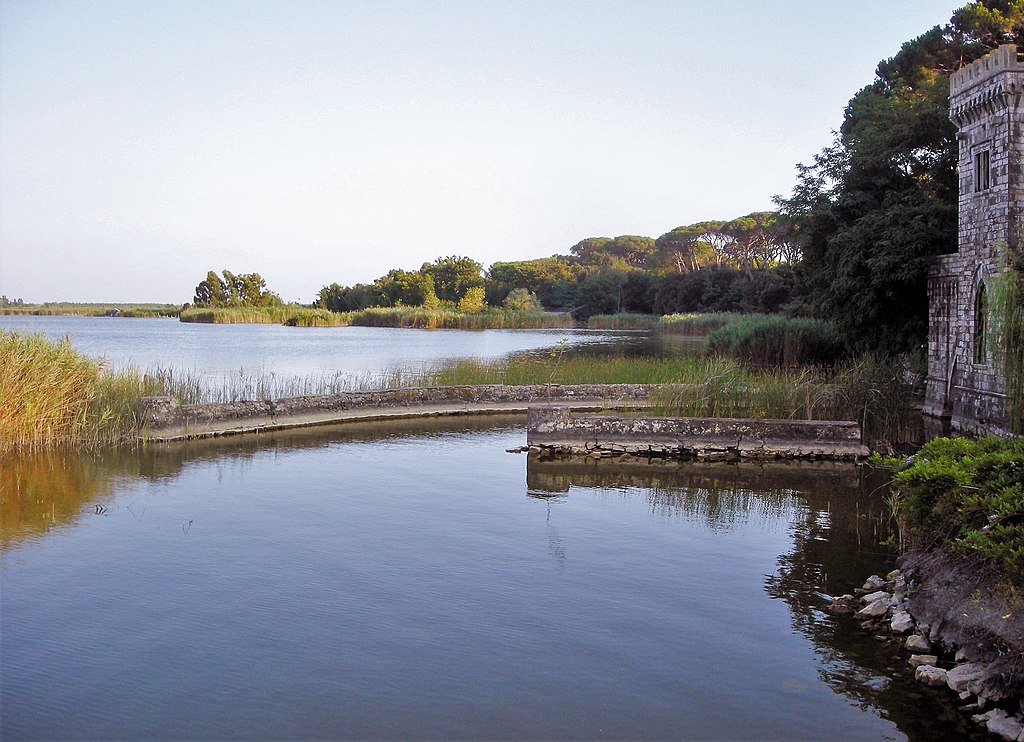
A little inlet on Lake Massaciuccoli. Photo: Albarubescens , CC BY-SA 4.0 , via Wikimedia Commons
The Migliarino Nature Park is a protected area that stretches from Pisa to Lucca. It covers 230 square kilometers and encompasses many habitats, including pine forests, wetlands, and coastal dunes.
The Migliarino Nature Park is perfect for discovering Tuscany’s natural beauty and biodiversity. The area also boasts the lovely Lake Massaciuccoli, which can be explored by bike or walking.

Located in the Province of Arezzo, Cortona is set atop a hill full of Medieval and Renaissance buildings. Cortona’s main draw is the surrounding countryside, where the popular movie “Under the Tuscan Sun” was shot.
Besides the stunning landscape, Cortona has a rich history and heritage that can be discovered by visiting the Museum of the Etruscan Academy, as the town was once part of the Etruscan League.
10. Hot Springs

The Terme di Saturnia
Tuscany has many natural hot springs, some of which are pretty popular (and busy), while others are still under-the-radars. You will find both hot springs enclosed in spa centers and beautiful outdoor hot springs, which are free to visit.
The most famous hot spring in the region is the Terme di Saturnia, which has become pretty busy. If you prefer a less-frequented but just as scenic, head to the Bagni San Filippo, in the namesake village. Here, the small thermal pool is hidden within the forest, and it is characterized by candid-white rocks that create a snow-like covered landscape.

A gorgeous beach on the island

The town of Portoferraio in Elba.
Elba is an island surrounded by the sparkling Tyrrhenian Sea. Famed for being the place of Napoleon’s exile, the island is much more than sun-kissed shores, beautiful beaches, and coves for a beach getaway.
Elba’s coastline is dotted with lovely towns where you can delve into the island’s cultural heritage, such as Portoferraio and Porto Azzurro.
The inner part of the island is home to fertile vineyards, and Monte Capanne, with a height of 1,018 meters, makes for an ideal hiking spot.
12. San Miniato
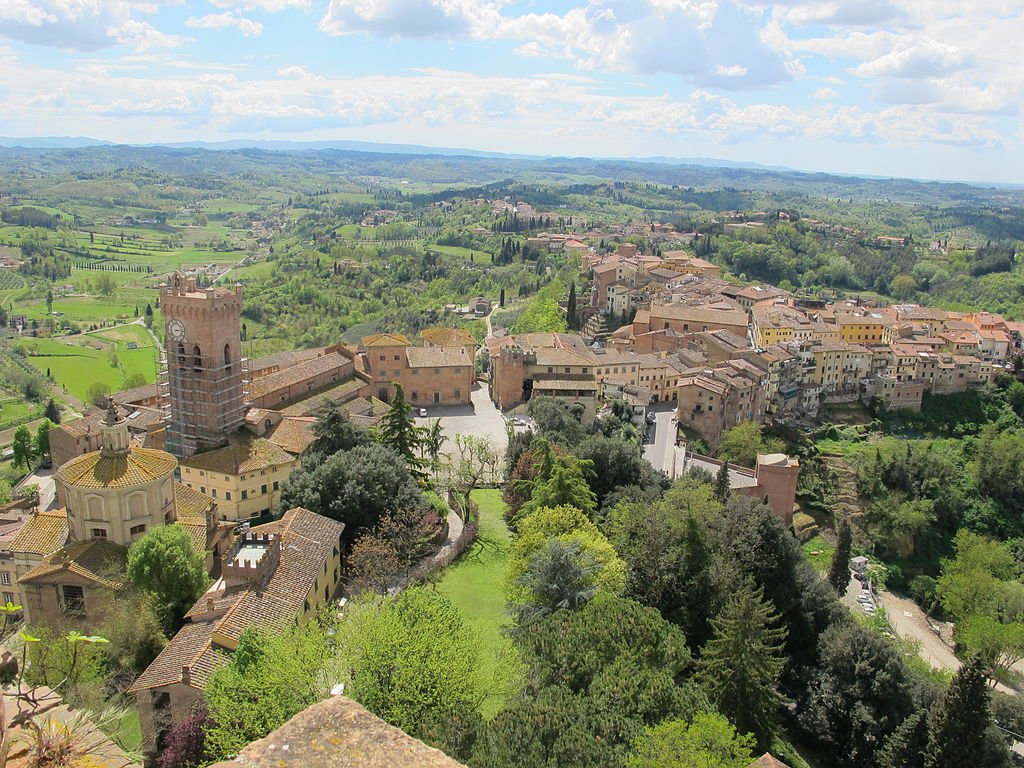
Photo: I, Sailko , CC BY-SA 3.0 , via Wikimedia Commons. Cropped from original
A quaint village in the province of Pisa, San Miniato is the place to be to taste one of the food products you can find in Tuscany: the rare white truffle. To this incredible food is dedicated a whole cultural event, the “Mostra Mercato di Tartufi”, hosted every November. In San Miniato, you can do truffle tastings and also participate in truffle hunting.
The village is also lovely to explore by foot, and its most stand-out feature is the medieval Piazza del Seminario.
But there’s more: San Miniato is one of the stops of the historic Via Francigena.

Connect with Serena in Montepulciano for help perfecting your itinerary, answers to all your travel questions, and fabulous local tips for a better visit!
13. Chianti Region

Gorgeous scenery in Radda in Chianti
Another unmissable area of Tuscany for any food lover is the Chianti region . Kilometers of rolling hills with fertile vineyards create not just a wonderful landscape to discover by bike or motorbike, but it is also where the world-famous Chianti wine comes from.
Having a wine tasting in the Chianti hills while sampling local foods and meeting local winemakers is a must-do experience in the area.
14. Porto Santo Stefano

Located in the Argentario Peninsula, Porto Santo Stefano is a semi-island tied to the mainland. All around Porto Santo Stefano are striking coves that will be the joy of beach dwellers. Some coves are private, while others can only be reached by boat or with a short hike. One of the best coves is Cala Gesso, which is a perfect snorkeling spot.
The town is also one of the main seaports of the area, with a bubbly atmosphere and daily transfers to reach Giglio Island.
15. Giglio Island
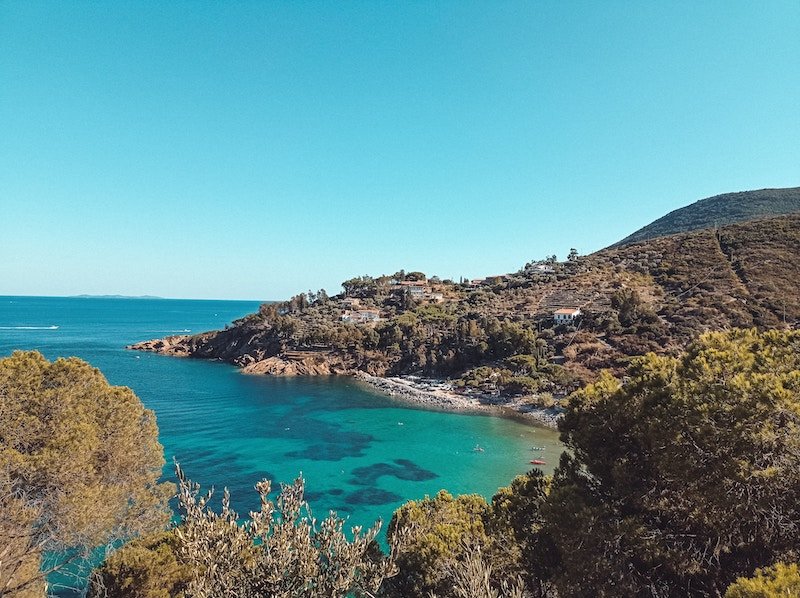
Giglio Island lies within the Arcipelago Toscano National Park, just 16 km from Porto Santo Stefano.
This Mediterranean island offers visitors natural beauty and rich history. The narrow streets of the main town of Giglio Porto are lined with artisan stores and outdoor restaurants.
The island is home to stunning beaches for swimming and snorkeling - don't miss Campese Beach and Cannelle Beach.
Another highlight of Giglio Island is the town of Giglio Castello, on the island's highest point, where you can visit the medieval fortress Rocca Aldobrandesca to marvel at 360-degree landscape views.
16. Volterra

Volterra is one of the larger hill towns in Tuscany. Located between the Era and Cecina valleys, Volterra is enclosed by double walls of Etruscan and Medieval times. If you like narrow streets, ancient walls, and a towering fortress, you will surely love this town.
Volterra is particularly known for the craftsmanship of alabaster, and you can purchase decorative objects in the many artisan shops in town or visit the interesting Ecomuseum of Alabaster.
17. Monteriggioni
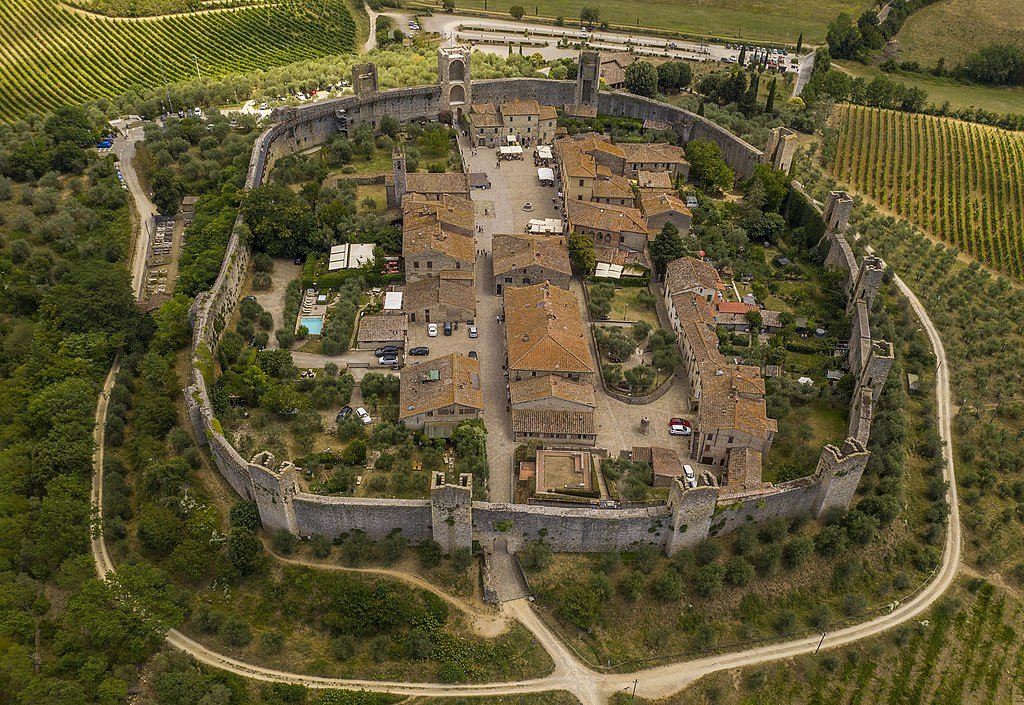
Photo: Maurizio Moro5153 , CC BY-SA 4.0 , via Wikimedia Commons. Cropped from original
Another walled town in Tuscany, Monteriggioni's main feature is the 13th-century castle that overlooks the entire landscape. You can walk on the medieval walls that are part of the castle to have a bird's eye view of the Chianti countryside. The town also has 15 still-standing medieval towers, two impressive doorways, and charming little streets.
Monteriggioni is located along the pilgrimage route known as Via Francigena, and it was featured in two famous movies, "The English Patient" and "The Gladiator".
18. Orbetello

Orbetello is a seaside town in the Argentario, with a lovely center with shops, restaurants, and a lively weekly market selling local food products. But Orbetello is much more: the town boasts a lagoon, which makes the area geographically unique. The Laguna di Orbetello is rich in fauna of all kinds, which is protected by the WWF.
The lagoon is surrounded by a cycle-pedestrian path that you can go through to admire pink flamingos, white herons, and flocks of coots.
19. Livorno

Livorno is an important port town in Italy, where ferries depart for many other parts of Italy, including the Elba Island in Tuscany.
Embellished during the Renaissance by the Medici family, in Livorno, you can visit many attractions like a castle (the Fortezza Nuova), the beautiful Terrazza Mascagni (a sea view terrace), and the Nuova Venezia (the streets surrounding the castle, which are lined with canals).
20. The Tarot Garden
Tuscany has an unusual attraction, The Tarot Garden. This artistic garden is located right outside the village of Capalbio, and it was created by the mind of artist Niki de Saint Phalle.
The park houses installations representing the 22 major arcana of the divinatory tarot, which are made of iridescent mosaic tiles and metal. The artist took almost 20 years to complete this project, and this magical attraction is open from the beginning of April through mid-October.
5-day itinerary - Art towns
Days 1-2: Florence
Day 3: Pisa and Lucca (day trip from Florence)
Day 4: Siena
Day 5: San Gimignano, Monteriggioni, Colle di Val d’Elsa (day trip from Siena)
7-day itinerary - Art towns and the Chianti area
Day 6: Chianti region
Day 7: Arezzo and/or Cortona
10-day itinerary - Art towns, the countryside (Chianti and Val d’Orcia), and the coast (Argentario and Giglio Island)
Day 5: Chianti region
Day 6: Val d’Orcia with Montepulciano
Day 8: Terme di Saturnia
Day 9: Argentario (Porto Santo Stefano and Porto Ercole)
Day 10: Giglio Island
2-week itinerary - The best of Tuscany (art towns, islands, Argentario, hot springs, and the countryside)
Day 4: San Miniato
Day 5: Elba Island (ferry from Livorno)
Days 5-6: Porto Santo Stefano & Porto Ercole
Day 7: Giglio Island
Day 8: Bagni San Filippo
Days 9-10: Val d’Orcia with Montepulciano
Day 11: Cortona or Arezzo
Day 12: Siena
Days 13-14: Chianti region

- Chat with a local expert
- 1 hour planning session
- Get pro tips & hidden gems
- Personalized to you

At Go Ask A Local we connect independent travelers with in-destination Local Experts for personalized travel planning that goes way beyond the highlights. Whether you’re planning a DIY trip and just want some expert advice on your plan or are looking for a fully tailor-made trip, our Local Experts can help you plan better!
One-week Serbia Road Trip Itinerary - By A Local
A local’s guide to travel in madeira.
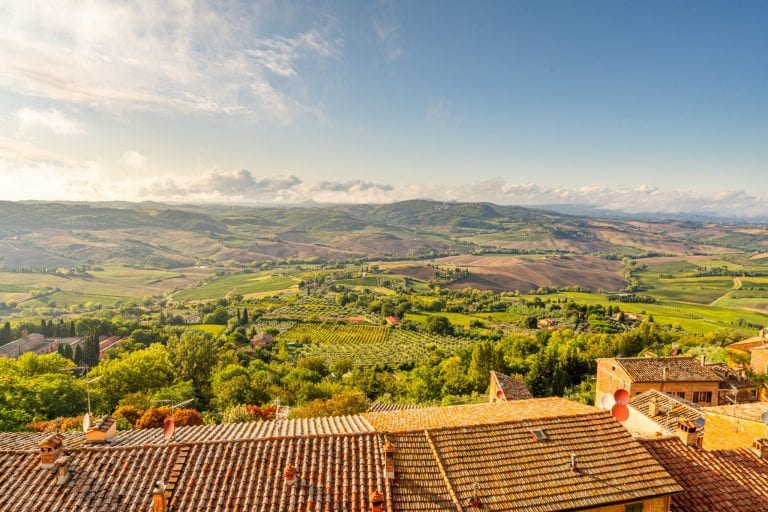
The Perfect Tuscany Road Trip Itinerary (+ Driving Tips!)
Planning the perfect Tuscany road trip itinerary is no easy feat–but it’s well worth getting right.
If you’re dreaming of delicious Italian food, of romantic sunsets and Tuscan wines, of rolling hills peppered with vineyards as far as the eye can see, of hilltop villages and of Renaissance art, this Tuscany itinerary has you covered.
We’ve put this ultimate guide to planning a Tuscany road trip after spending several months traveling in the region over a period of years, often on road trips.
We’ve explored Tuscany by car, train, and tour, in large multigenerational family groups and as a couple, in tiny towns and in the fabulous cities of Florence and Siena.
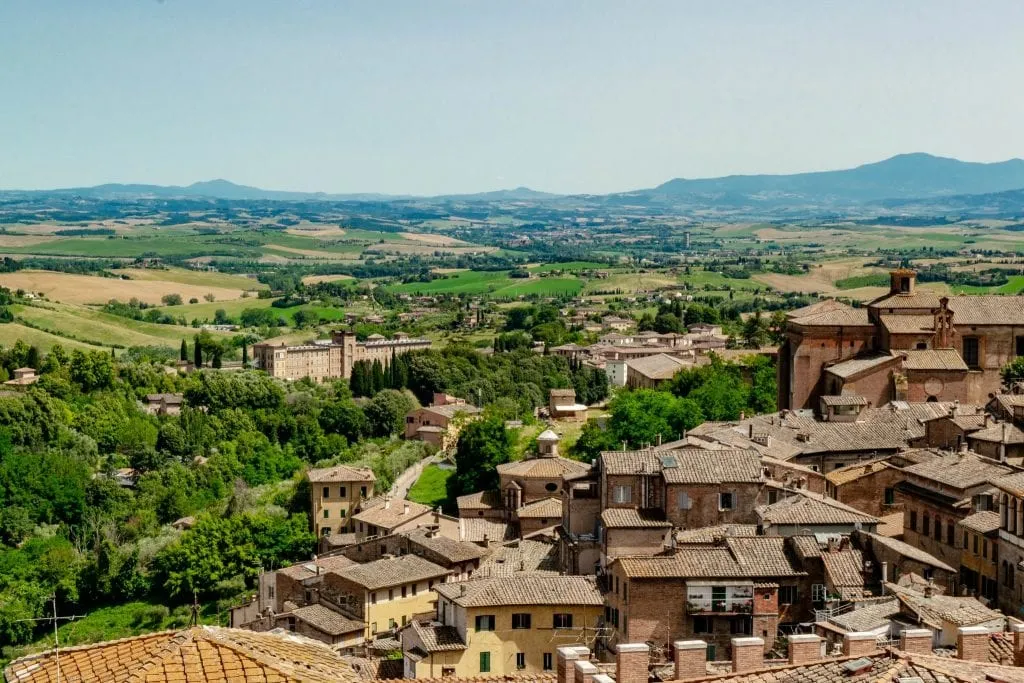
Some links in this post may be affiliate links. If you make a purchase through one of these links, we may earn a small commission at no extra cost to you. Please see our disclosure policy for more detail.
We’ve visited museums, gone horseback riding, zipped along countryside roads on a Vespa, and taken quiet strolls down deserted country lanes. We’ve taken food tours and wine tours, and stopped at more than our fair share of vineyards and restaurants independently, too.
Suffice it to say, we absolutely adore traveling in Tuscany, and this Tuscany itinerary is put together based on our detailed experiences traveling in the region as well as additional research.
We want to help you plan your perfect Tuscany road trip itinerary, especially if it’s your first time in the region.
Here’s what we suggest.
Table of Contents
How We Structured This Tuscany Road Trip Itinerary
How long will this tuscany itinerary take, getting around during your tuscany road trip, will this tuscany itinerary work without a car, the ultimate tuscany road trip itinerary, other destinations to add to your tuscany road trip itinerary, tuscany road trip itinerary map, the best time to visit tuscany, useful travel tips for driving in tuscany, what to pack for your tuscany road trip.
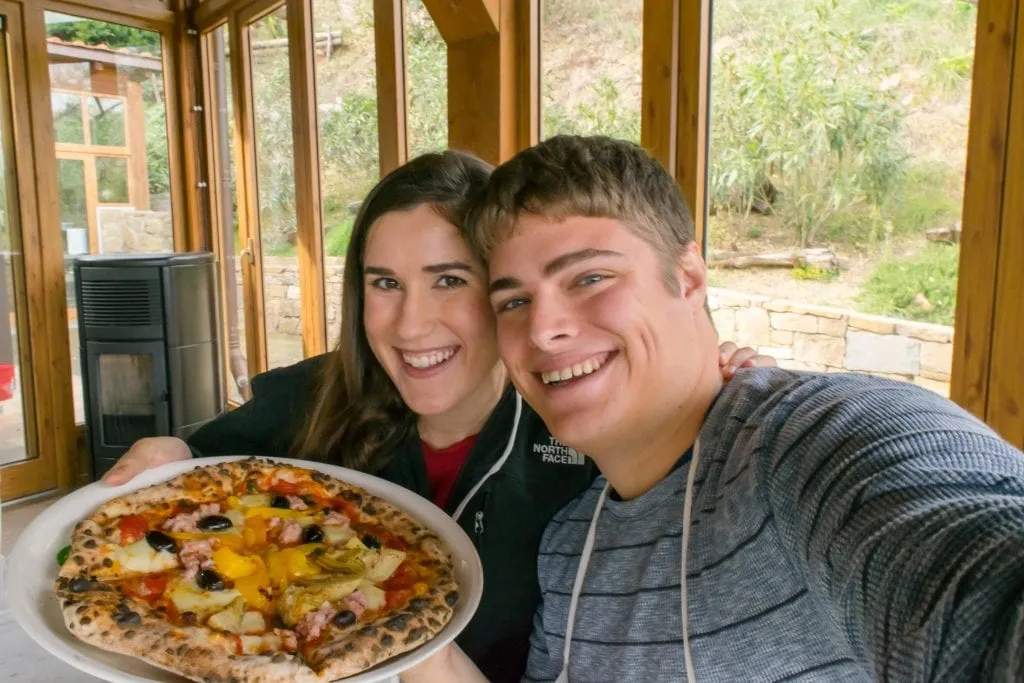
We structured this Tuscany road trip itinerary as a loop beginning and ending in Florence.
It’s designed primarily for first-time visitors to the region who want to soak up the classic Tuscany experience: think rolling hills, golden light, scrumptious wine, picturesque hilltop villages, and some of the best food you’ve ever eaten in your life.
… But that being said, even longtime lovers of Tuscany will find something for them here (just ask our extended family).
With this Tuscany itinerary, you’ll visit some of the most iconic places in the region, while also peppering in stops at smaller towns and attractions that would likely go unnoticed if you stuck to exploring via train.
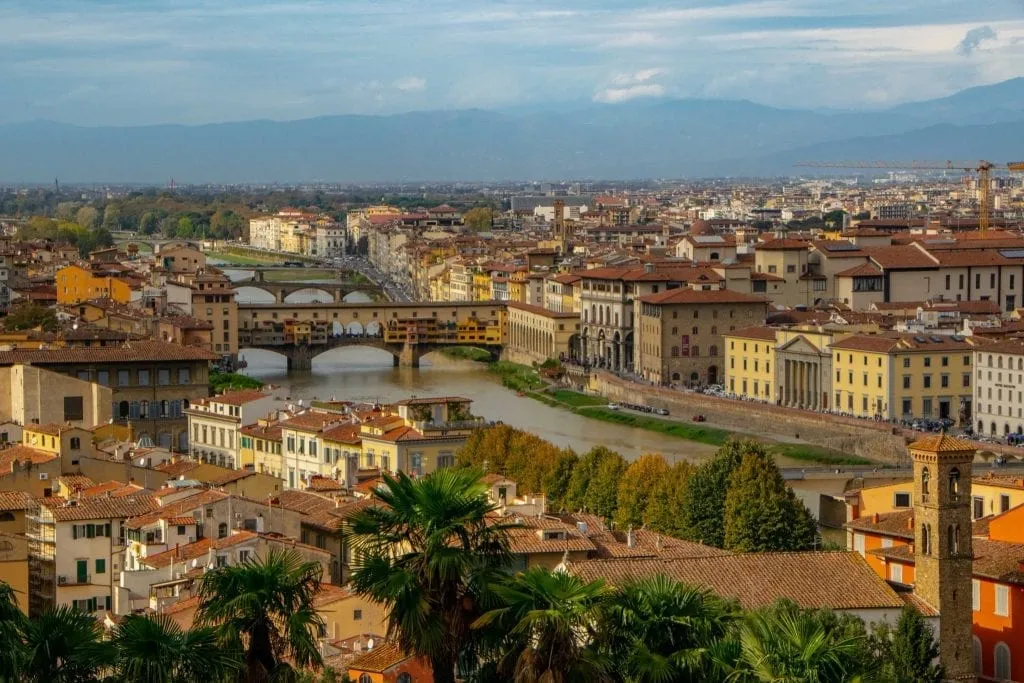
Is it a cop-out to say that this Tuscany road trip will take as long as you have?
Perhaps, but whether you have 5 days in Tuscany, a week in Tuscany, or a month in Tuscany, this circular route will provide an excellent backbone to your Tuscany road trip.
If your trip is short–say 5 days in Tuscany or less–you’ll be able to shorten your stays in some towns (in a pinch, for example, Pisa and Lucca can be combined into one day), and with a longer trip to Tuscany, you’ll have a chance to adopt a leisurely pace and add in more excursions like wine tasting or days spent at one of Tuscany’s saunas.
Ideally, I would say that this Tuscany road trip would be spread across roughly 10 days to 2 weeks in Tuscany, but of course, that won’t always be possible–especially if you want to see more regions of Italy during your trip!
If you do have a longer trip to Tuscany planned, we recommend taking a look at some of the additional Tuscany road trip destinations that we’ve outlined below the main itinerary and seeing what other spots catch your eye.
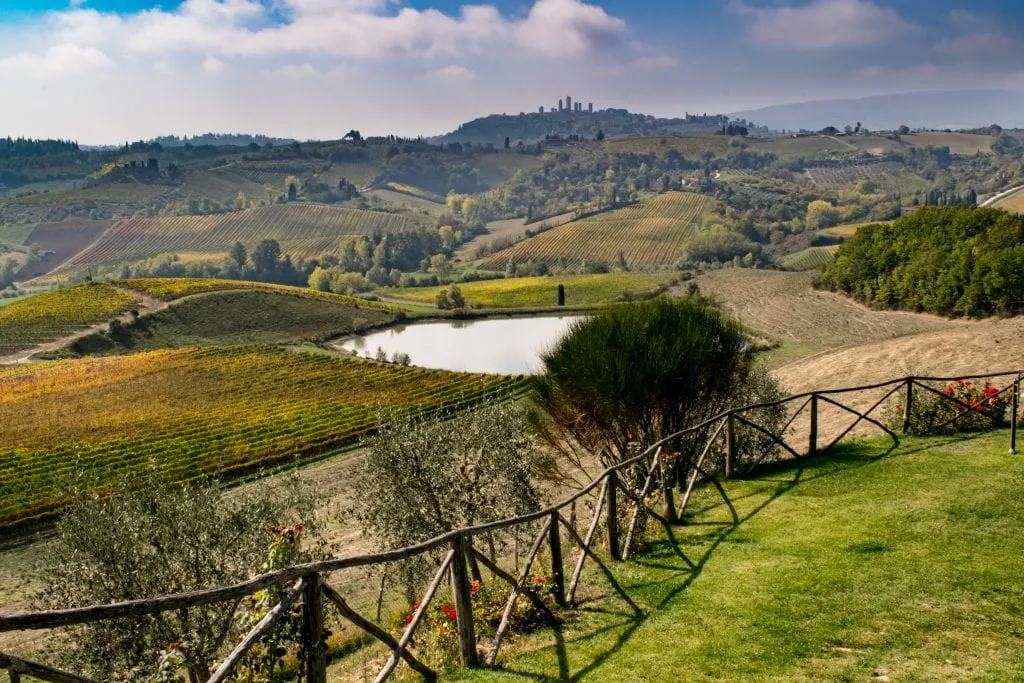
For most people, of course, taking a Tuscany road trip will require renting a car.
We’ll cover some tips and tricks for renting a car here below the Tuscany itinerary (or you can use the table of contents section at the bottom of the introduction to this Tuscany travel blog post to navigate there!), but here’s the short version: we recommend renting a small car in Tuscany through Discover Cars , which will allow you to compare prices and inclusions of multiple companies at the same time and choose the best car for you from there.
We also recommend renting your car only after you leave Florence, which we’ll cover a bit more below, so you likely won’t need one for every day of your trip to Tuscany!
Check rates & book your rental car with Discover Cars today!
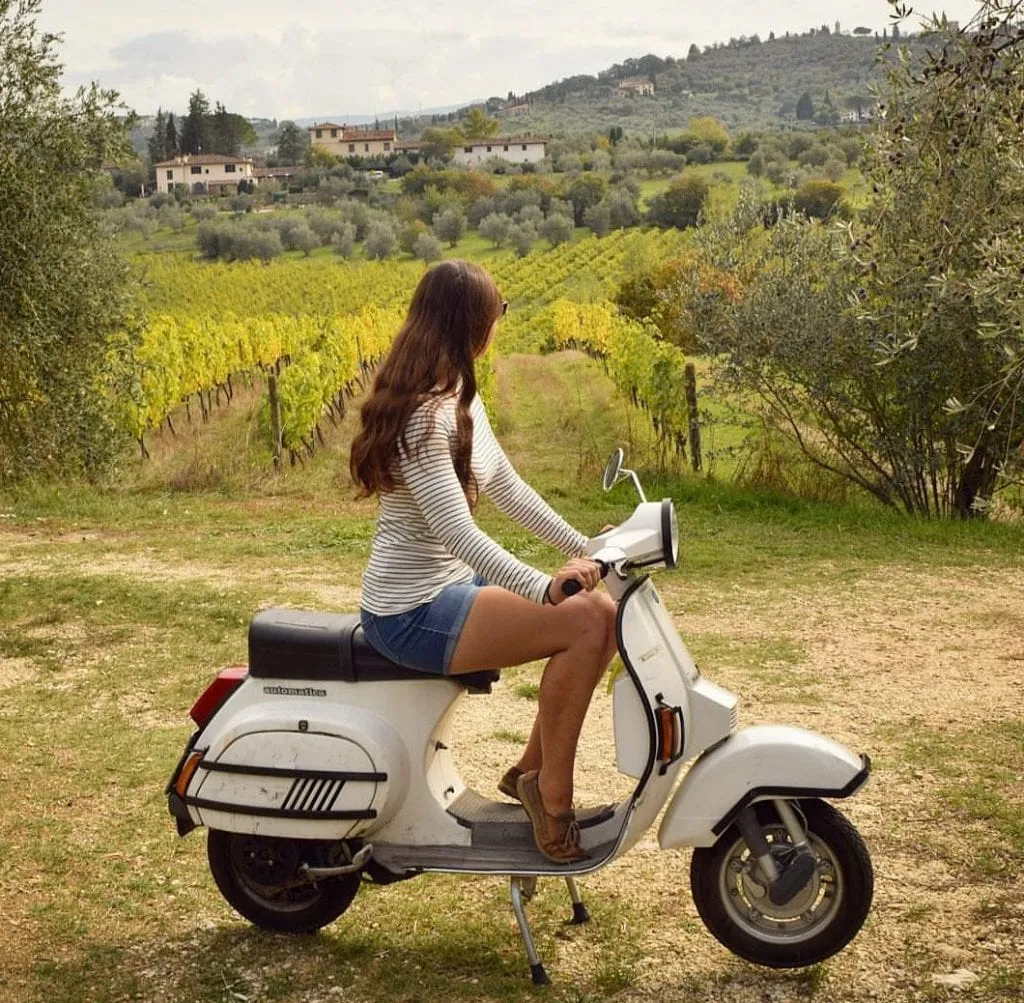
Short answer? Yes, it can.
Through a combination of trains, buses, and carefully selected guided tours (we recommend several reputable ones in our Things to Do in Florence post ), this Tuscany itinerary can be completed without a car, though the logistics will be challenging in certain places.
That being said, there’s something very special about taking a Tuscany road trip, and by not driving, you will lose out on the charm of seeing some of the smaller towns at night, miss some of the prettiest vistas, and have a little less freedom in planning your trip.
However, we completely understand that not everyone planning a Tuscany itinerary can or would like to drive, and we fully believe you can have a deeply fulfilling trip to Tuscany without a car–we’ve done it several times ourselves.
And, while you will lose some freedom, you’ll also gain a bit of peace of mind, as driving in Tuscany is certainly not the most carefree driving in the world!
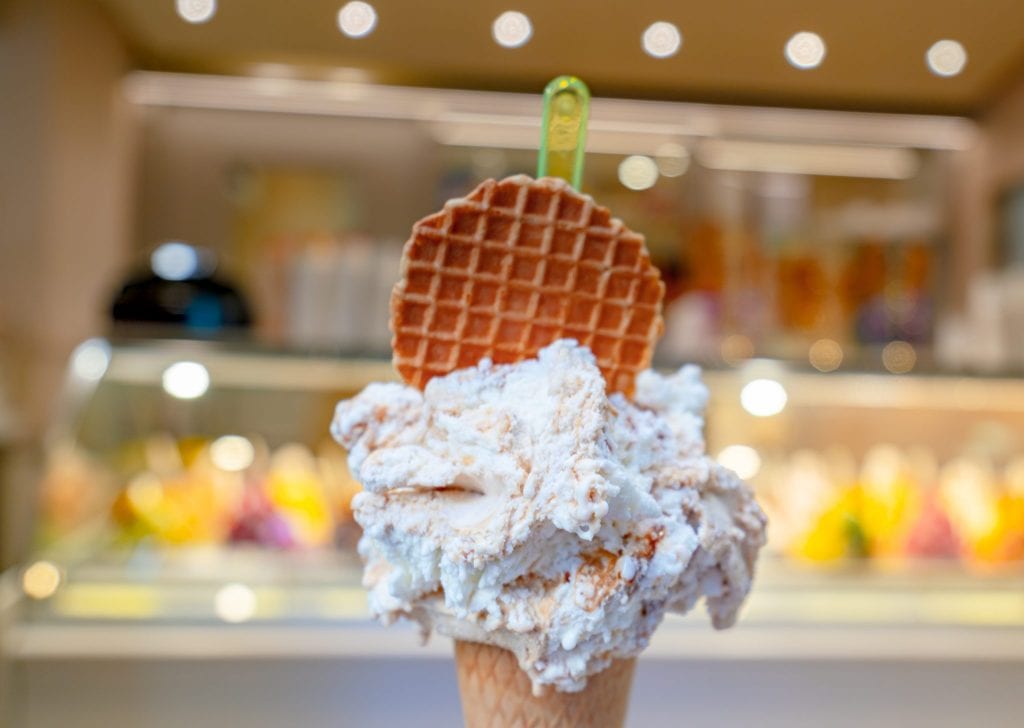
Start your Tuscany itinerary in Florence.
As the capital of Tuscany, Cradle of the Renaissance, and home to the biggest airport (and train station) in the region, there’s no better place to start your Tuscany itinerary than in Florence.
Ideally, we recommend a minimum of two full days here, which will give you enough time to explore all of the major sights.
Marvel at the art in the Uffizi Gallery, soak in the views from Piazzale Michelangelo and more, (window)shop for gold jewelry on the Ponte Vecchio, eat your way through Mercato Centrale, stand in awe of the Duomo, and visit Michelangelo’s masterpiece David in the Galleria dell’Accademia.
We’ve created several guides to Florence based on our six weeks or so spent exploring the city, including a one-day itinerary and a two-day itinerary , so be sure to check those out for more detail.
For this Tuscany road trip itinerary in particular, though, we have a crucial piece of advice regarding driving: don’t pick up your rental car until the morning you leave Florence.
Having a rental car while in the city is not only unnecessary, it’s an absolute burden. Driving in Florence’s historic city center is extremely limited, and you’ll save both money and headaches by ditching the car until you’re ready to hit the countryside.
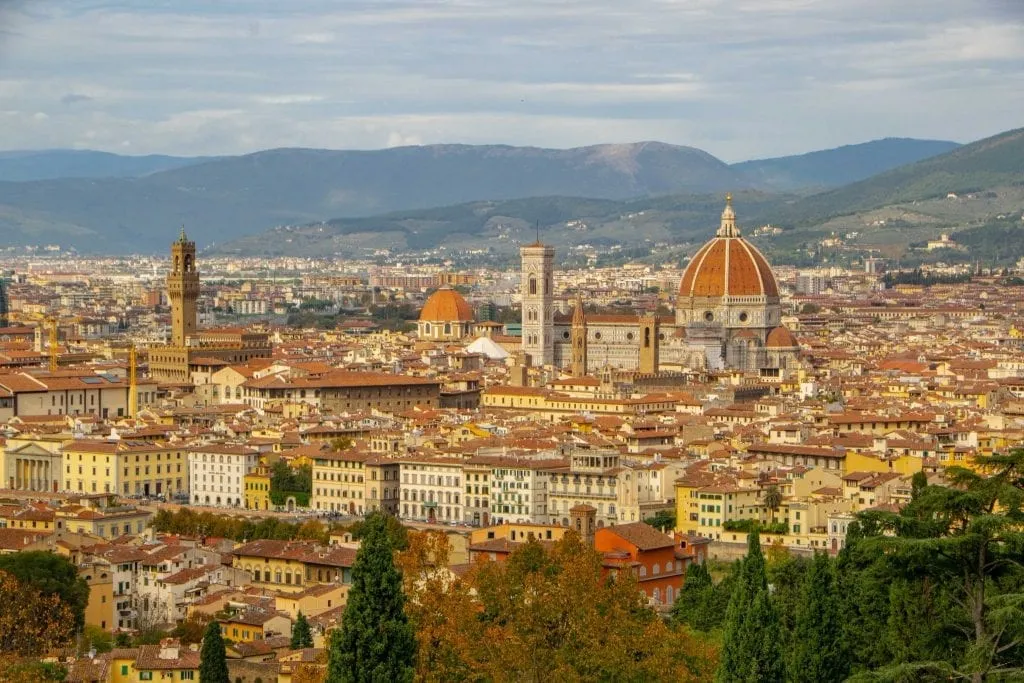
Where to Stay in Florence
B&B Le Stanze del Duomo — Though Florence hotels can be a bit pricey and stretch the definition of “budget”, B&B Le Stanze’s beautiful rooms and impeccable location in Florence will be sure to have you swooning!
Check rates & book your stay at B&B Le Stanze del Duomo!
Bargello Guest House — Located in the heart of Florence, this property is only a short (read: less than 5-minute) walk away from some of Florence’s highlights like the Palazzo Vecchio. Staying here, you’ll be within easy walking distance of the best of what Florence has to offer.
Check rates & book your stay at Bargello Guest House!
Hotel Lungarno — Nestled right against the Arno River and home to one of the best views of the Ponte Vecchio in Florence (not to mention some of the best views of the rest of Florence from their top deck), Hotel Lungarno is our personal “if we ever really want to splurge” hotel in Florence. You can’t go wrong using Hotel Lungarno as your base for one day in Florence!
Check rates & book your stay at Hotel Lungarno!
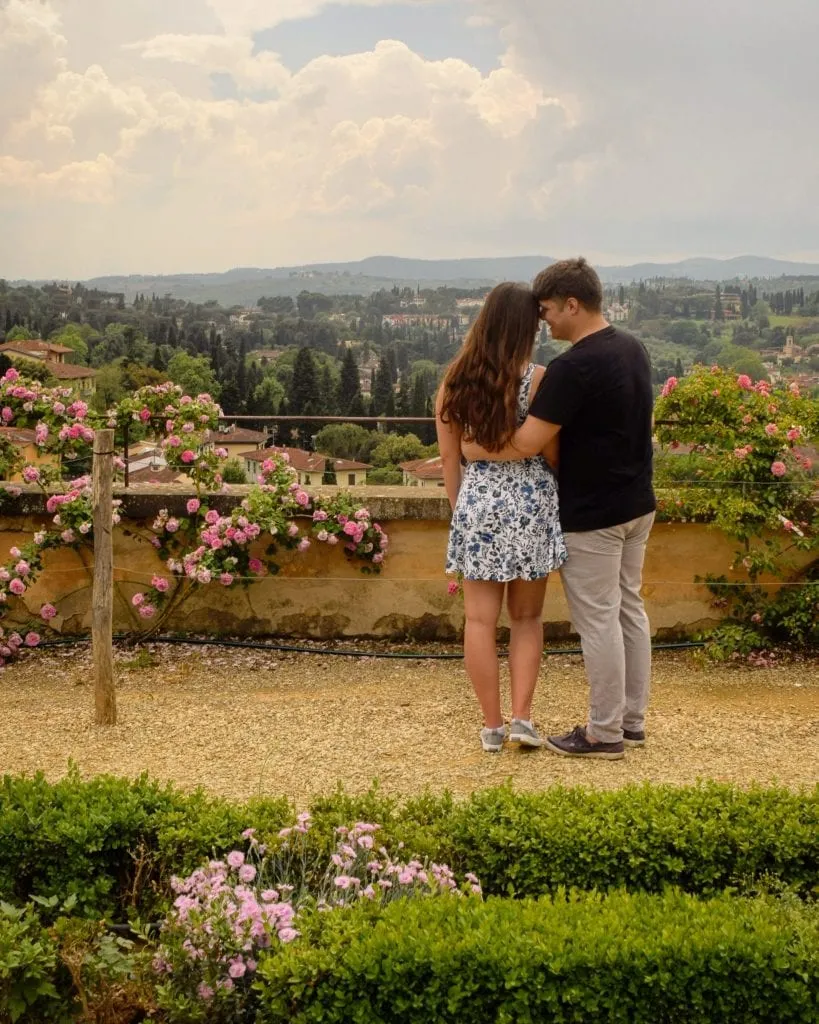
Start your Tuscany road trip and drive to Lucca.
Laidback and charming, colorful Lucca is the perfect first stop on your Tuscany road trip and an excellent place to grow accustomed to the ins and outs of driving and parking in Tuscan towns.
Lucca is not too big, not too small, and parking is fairly easy to find right outside the city walls.
It also happens to be a gorgeous, relaxing city that is a fantastic place to soak up the ambiance of Tuscany.
While you’re there, be sure to check out the beautiful Piazza dell’Anfiteatro, which, like Siena’s main piazza, is actually an oval rather than a traditional square, and to stroll along the tops of the city’s 16th-century fortifying walls, which are completely accessible to the public.
Don’t miss a climb up Torre Guinigi, either–not only does it boast incredible views of Lucca, but it’s home to several oak trees that are growing in the sky!
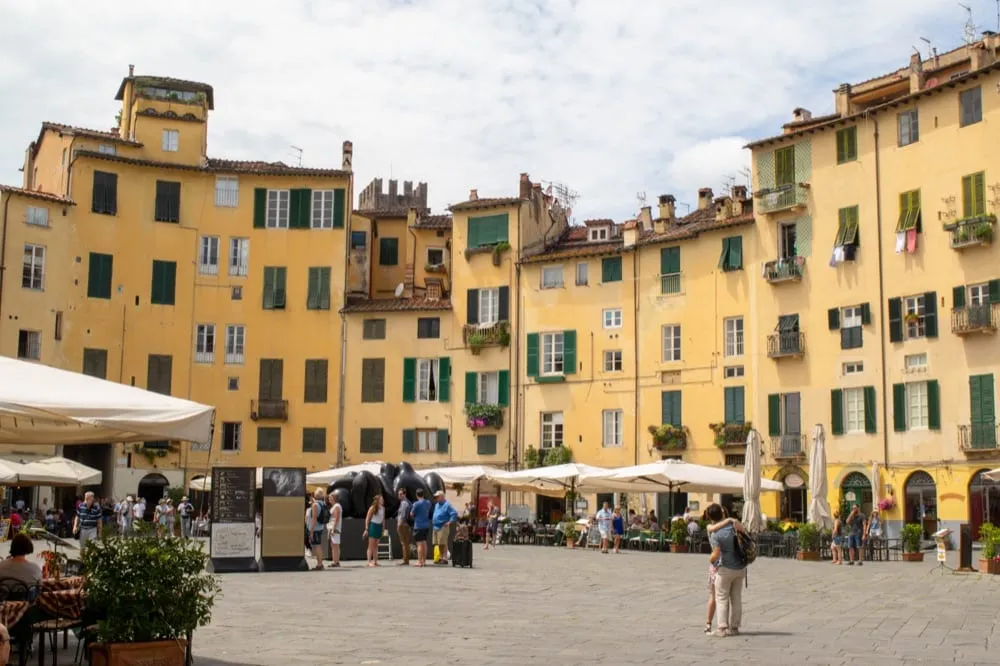
Stop by Pisa.
I’ll be perfectly honest: of all the places we recommend or mention in this Tuscany itinerary, Pisa is the one I’m least in a hurry to get back to.
It’s generally far more crowded than most of these other destinations–even the very touristy ones–and outside of Pisa’s famous tower and surrounding historic complex, the town is not exactly known as one of the most beautiful or interesting Tuscan villages.
It is, however, incredibly famous, and the Leaning Tower of Pisa itself more than lives up to expectations. The Leaning Tower of Pisa is truly stunning, and far more opulent and beautiful in person than I expected before laying eyes on it for the first time.
If you’d like to see it, we recommend stopping by for half a day on your Tuscan road trip, checking out the tower itself as well as the nearby Duomo and baptistery, and then moving on.
If you’d like to tour the interior of any of the structures, including climbing to the top of the leaning tower, we absolutely recommend booking skip-the-line tickets in advance .
Book your skip-the-line tickets to visit the Leaning Tower of Pisa now!
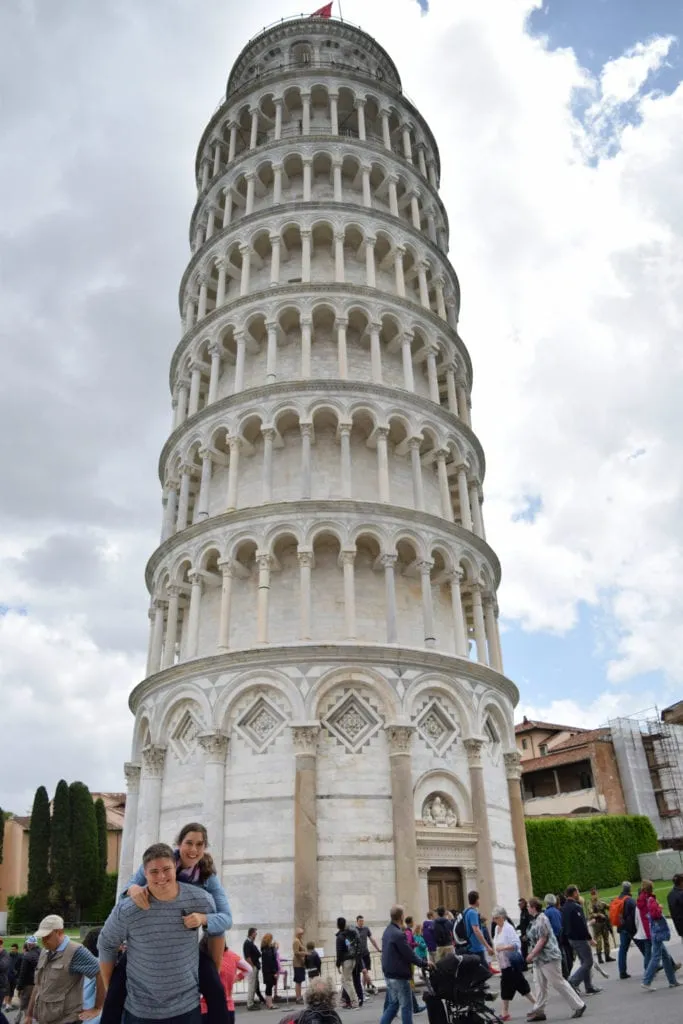
Make your way to San Gimignano.
Known for its stunning towers (14 of an original 72 remain), long history of wealth due to its prime location along a Roman trading route, gorgeous city center, beautiful views, and convenient location that is roughly equidistant from Siena and Florence, it’s safe to say that San Gimignano is both incredibly popular and well worth visiting.
We adore this beautiful hilltop town, and highly recommend spending at least one night either in town or nearby if you can, in order to enjoy the city without the crowds of day-trippers that tend to take over the streets during the day.
Don’t forget to make time in your schedule for a scoop (or several scoops, let’s be real) of gelato from the world-famous Gelateria Dondoli: as one of the best-known and most acclaimed gelato shops in Italy, it’s a safe bet that whatever you order is bound to impress.
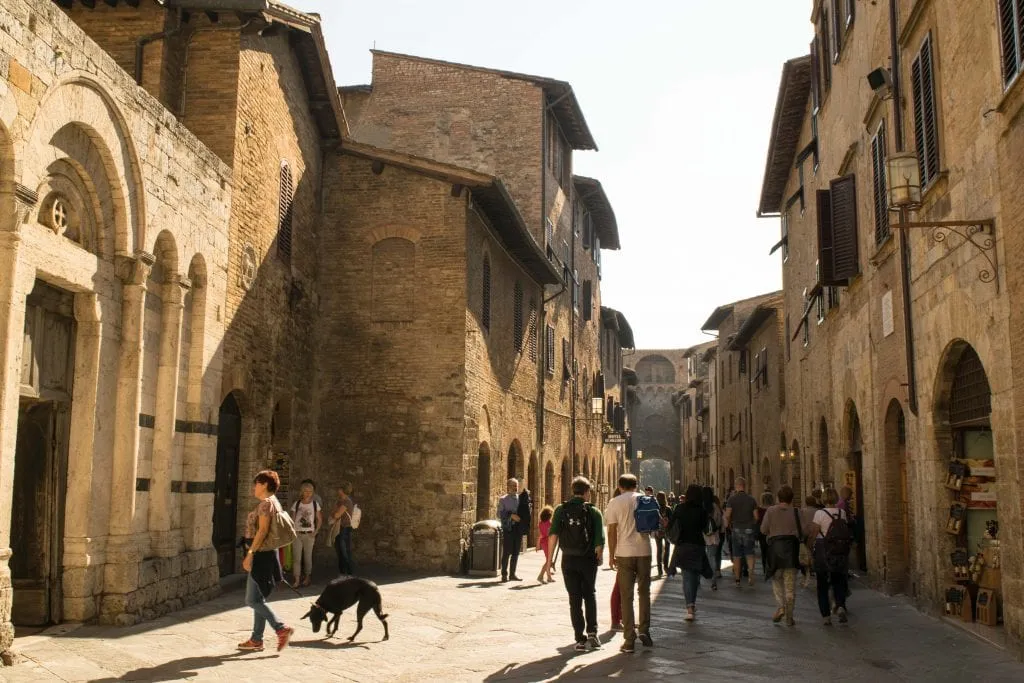
Head to Siena.
While today Florence is significantly better-known than Siena, that was not always the case: beautiful Siena was once the military rival of Florence, and the history of the Middle Ages in the region is dotted with stories of their back-and-forth battles.
Today, Siena is known for its Palio di Siena horse race that takes place bi-annually in the oval-shaped Piazza del Campo–when you stand in the middle of the piazza, be sure to picture 20 horses running at full-speed around a packed crowd–it’s truly impressive.
Siena is packed full of interesting things to do: it’s home to arguably the most beautiful Duomo in Tuscany (don’t forget to check out the Piccolomini Library while you’re in there!), and we absolutely recommend taking the Porta di Cielo, aka Gate to Heaven, tour of the cathedral’s roof if you can–it’s magnificent.
At least once during your trip, climb to the top of one of Siena’s monuments for an epic view–the Torre del Mangia in Piazza del Campo is a popular choice, but personally, we love that the view from the top of the Opera della Metropolitana includes stunning views of the Piazza del Campo from a bit of a distance.
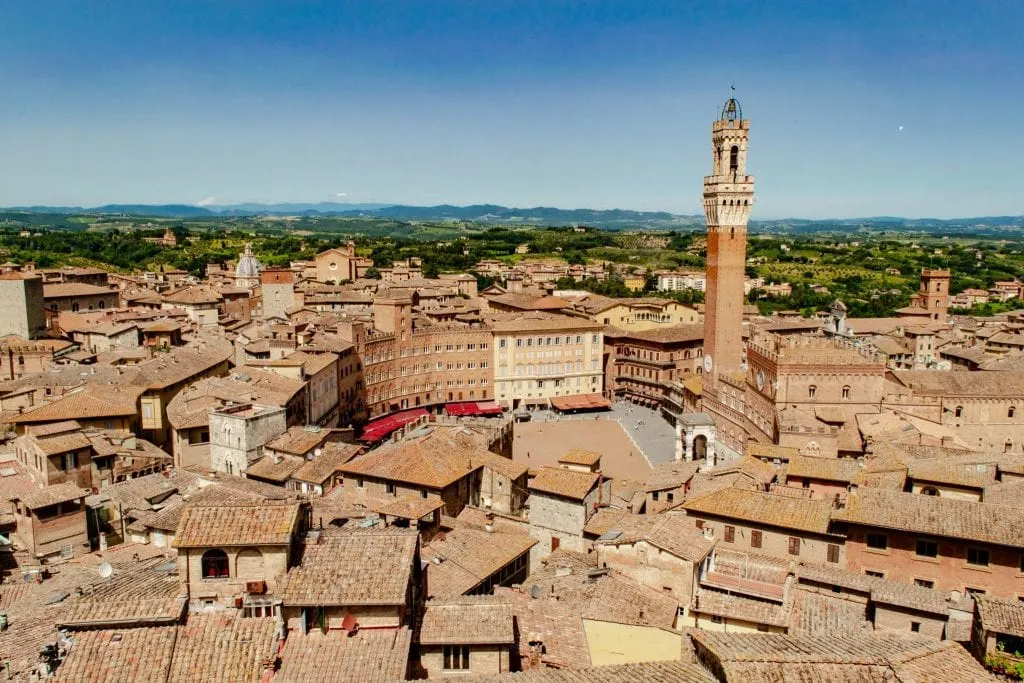
Spend some time in Val d’Orcia and soak up the Tuscan countryside.
Of all the scenic places in Tuscany, Val d’Orcia might just be the most beautiful of them all.
This UNESCO-recognized valley is home to the Tuscan road trip views of your fantasies, and it truly has to be seen to be believed.
If you have the time in your Tuscany itinerary, we recommend booking at least a couple of nights in a nearby country villa or agriturismo in order to slowly savor the beauty of the region, but if not, even an afternoon drive here is well worth the trip out.
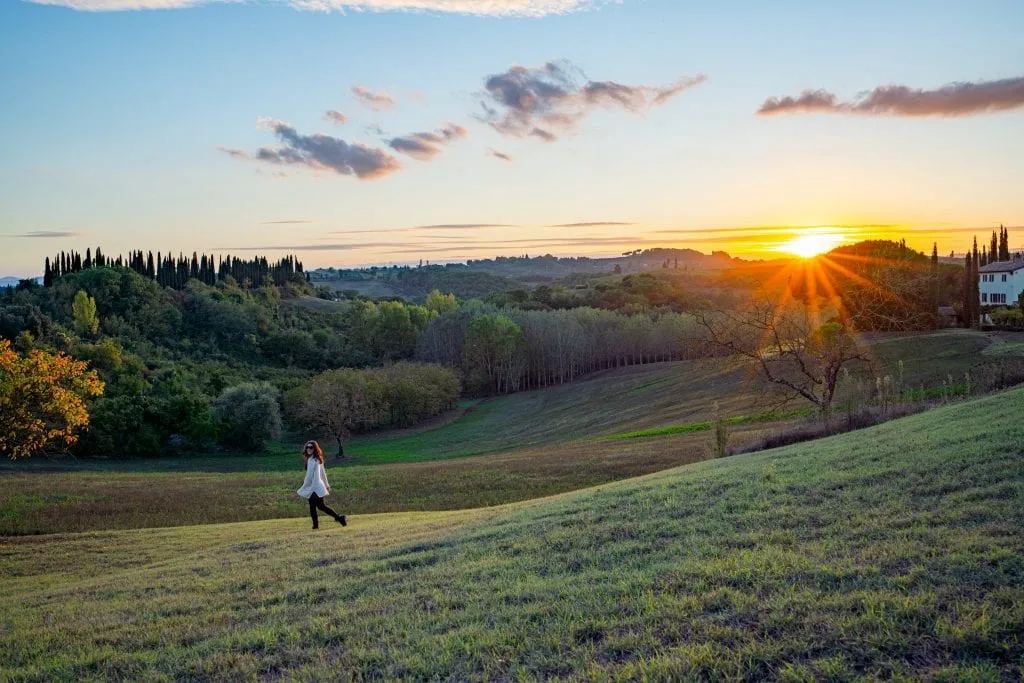
Marvel at the beauty of Montepulciano.
Tiny, gorgeous, and home to arguably some of the best countryside views of all the villages in Tuscany, it’s impossible not to be charmed by stunning Montepulciano–and that’s even before you start sipping its world-famous wine.
While it doesn’t take terribly long to explore a village this size on your Tuscany road trip, Montepulciano has one of those peaceful atmospheres that you just want to savor.
While you’re there, be sure to stop by the beautiful Piazza Grande, admire views of the nearby Church of San Biagio that is located just outside of town, and to taste the local wine, vino nobile di Montepulciano .
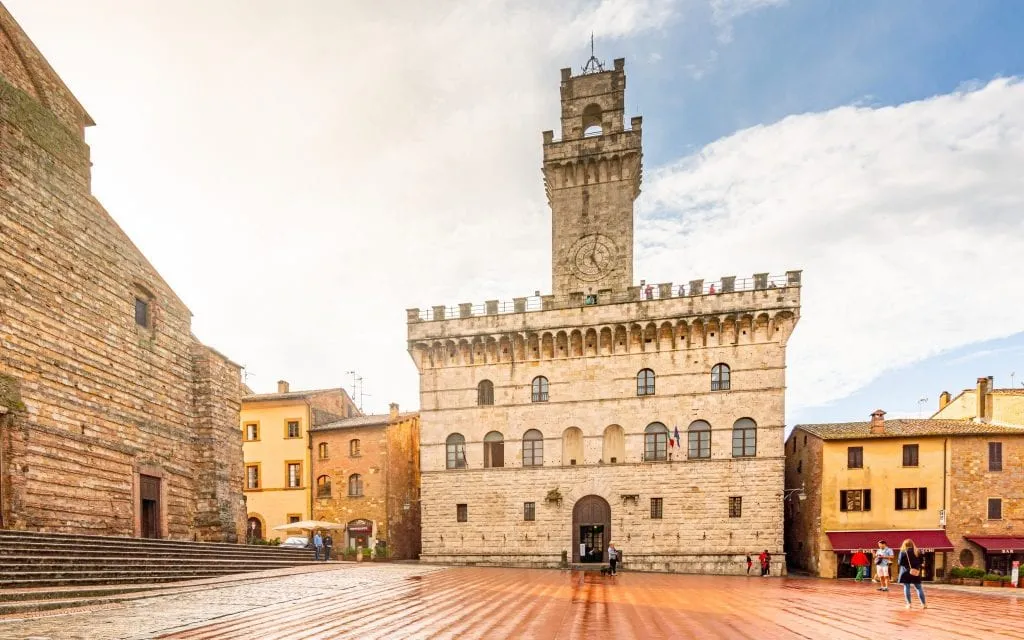
Pay a visit to Arezzo.
As you turn back north toward Florence to start to wind down your Tuscany road trip, be sure to check out the beautiful city of Arezzo.
Often overlooked on Tuscany road trips, Arezzo is a delightful city that is well worth the time it takes to visit.
Home to Roman ruins (including the remains of Arezzo’s very own Colosseum), sweeping views of the countryside from the Medici fortress, some impressively well-preserved fifteenth-century frescoes, and a large number of antique shops just waiting to be perused, Arezzo is an excellent addition to any Tuscany itinerary.
Be sure not to miss a chance to climb the clock tower at Palazzo della Fraternita dei Laici right off the main square (Piazza Grande)–the views from the top are absolutely sublime, and it is our personal favorite spot in Arezzo.
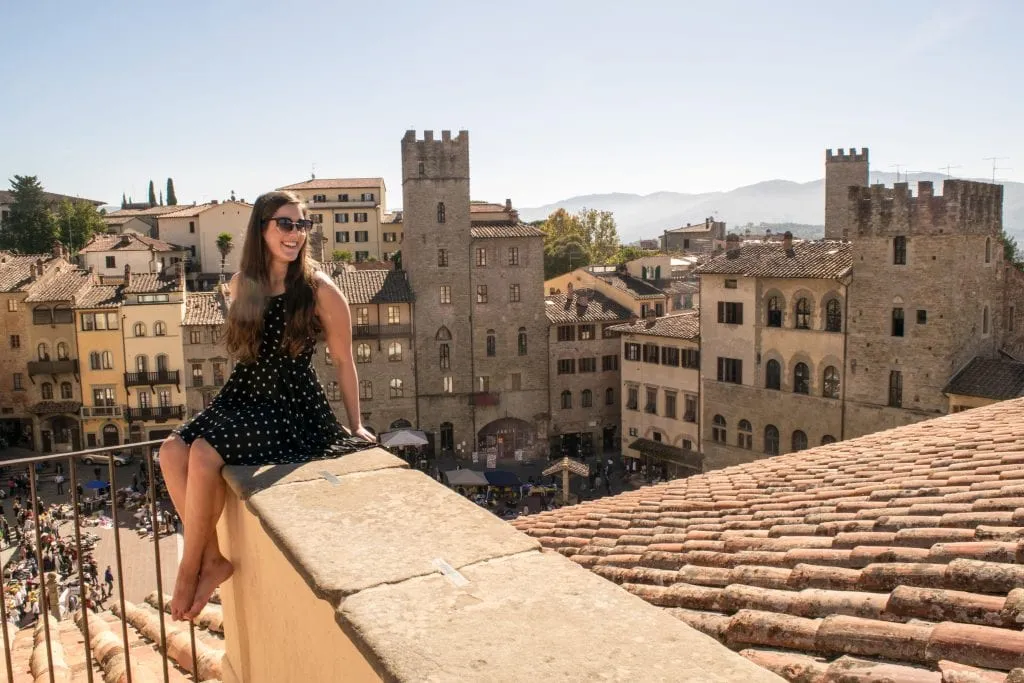
Drive back to Florence & say goodbye to Tuscany.
As your Tuscany road trip winds to a close, head back to Florence to drop off your car, say goodbye, and–depending on time–perhaps visit one or two more sights in the Cradle of the Renaissance as well.
While we’ve set up this Tuscany itinerary to act as a loop, if you’re going to be flying out of Italy (or continuing your Italy travels outside of Tuscany) in a different location, you can also consider dropping off your car in Rome, Milan, Bologna, or even Venice–but keep in mind that you will likely incur a one-way drop-off fee for doing so, so be sure to budget for that if needed!
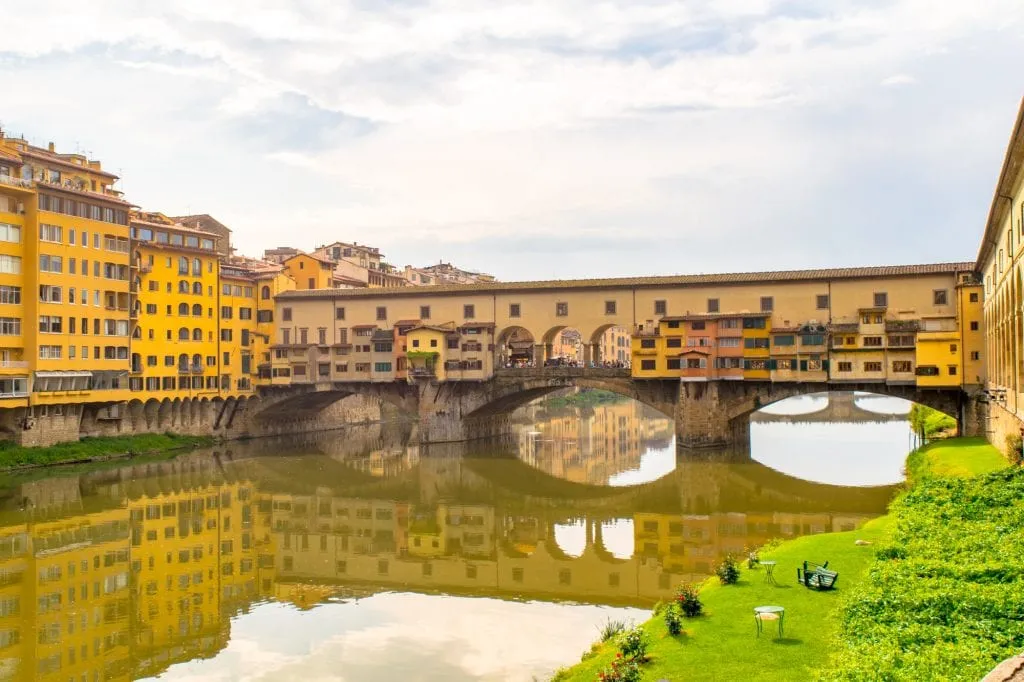
While this Tuscany road trip itinerary gives a solid outline of the region and is a delightful trip all on its own, for those with a bit of extra time in the area (or those who like to move at a very fast pace), there is an unlimited number of additional destinations you could add to your trip, both in Tuscany and in its surrounding regions of Umbria, Emilia-Romagna, and Liguria.
We’ve outlined a few of each here to give you some ideas as you plan your trip to Tuscany!
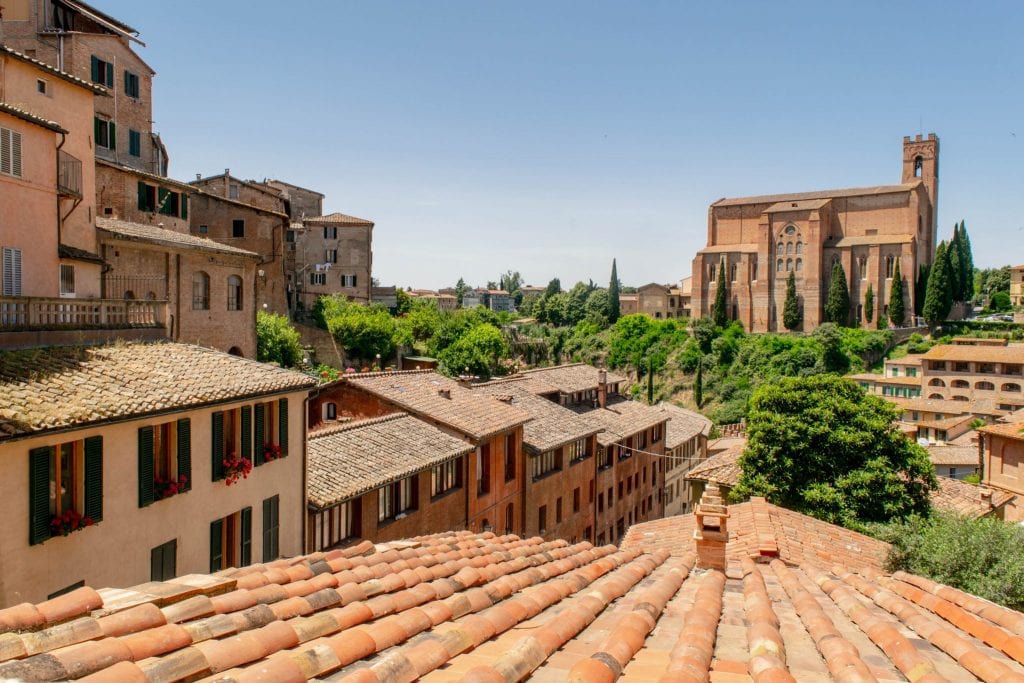
Within Tuscany
The most famous of all of Tuscany’s hot springs has emerged from comparative obscurity into being a full-blown famous photography location in recent years, but there’s no doubt that it’s still a dream to visit–if you have time during your Tuscany road trip to make the trek out there and you’re a fan of hot springs, it’s definitely worth a visit.
Dating back to the Etruscan period and nestled on a hill high above the sweeping Tuscan landscapes it overlooks, the walled city of Volterra is absolutely worth visiting as part of your Tuscan road trip itinerary.
The ease of accessing it paired with its beauty make this one of the first towns we would recommend if you are looking for additional stops along your road trip in Tuscany.
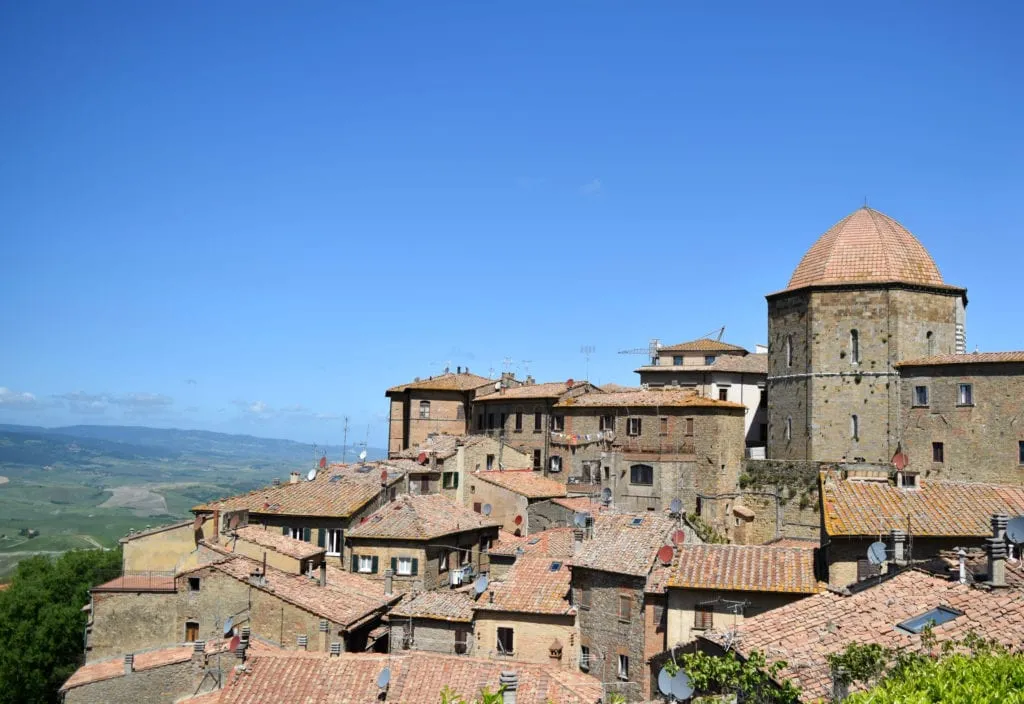
Cortona is perhaps best known for the famous book/movie that is based there, but even without the fame brought by Under the Tuscan Sun , this tiny Tuscan town is still a fabulous place to visit!
I’ll be honest: a trip to Elba is a bit of a stretch for all but the longest trips to Tuscany, but it bears mentioning simply for the fact that Elba is Tuscany’s very own island–and “Mediterranean island” is just not what you normally associate with a trip to Tuscany.
Whether you want to scuba dive, enjoy delicious seafood, lounge on the beach, or chase down the island’s interesting history (Elba was the first place Napoleon was exiled to, though he escaped a little under a year later), there’s no doubt that Elba makes a unique addition to any Tuscany itinerary.
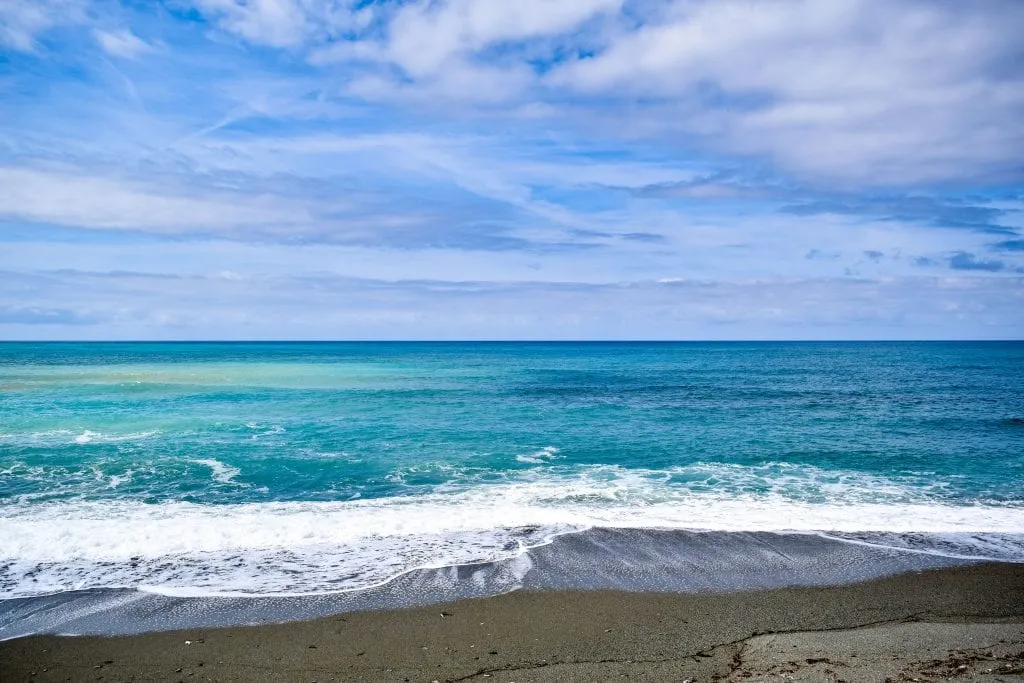
Easier to access than Elba but equally focused on all things coastal, the seaside city of Livorno is the perfect Tuscany road trip destination for anyone looking to enjoy a little sea and sun as part of their trip to Tuscany.
Best known for its delicious Brunello di Montalcino wine, the hilltop town of Montalcino is a delightful slice of Tuscany that is easy to access from Siena and Val d’Orcia.
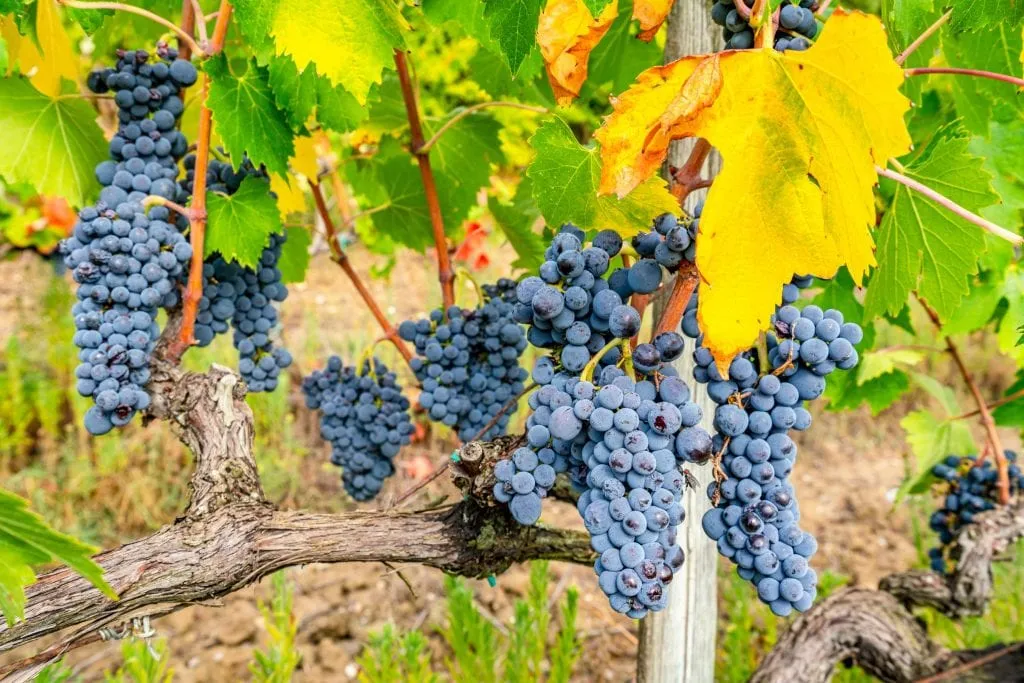
Outside of Tuscany
Cinque terre.
Of all destinations outside of Tuscany that people tend to be eager to add onto their Tuscany trip, Cinque Terre almost always falls near the top.
We’ve visited this sensational collection of Ligurian fishing villages twice as part of a Tuscany road trip, as well as on a standalone visit, and we can attest that they are well worth the trouble if you have time in your itinerary.
We absolutely do not recommend driving into the villages, however–instead, drive to the train station at La Spezia or Levanto, park your car, and then take the train into the villages from there.
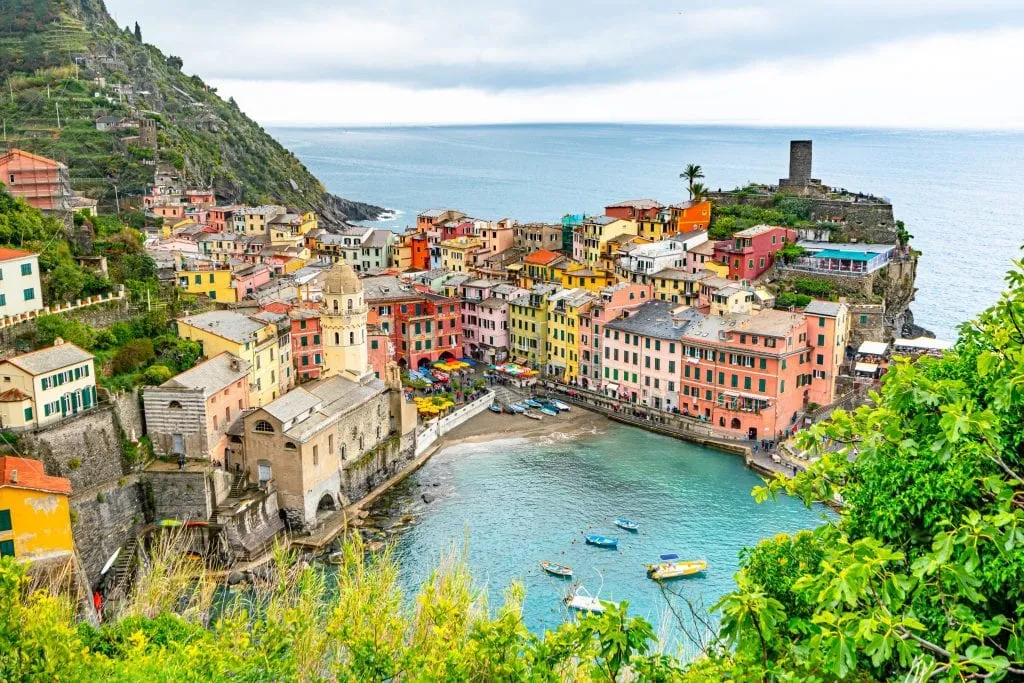
Known, above all else, for its food, Bologna is the perfect location for foodies to flock to if they’re looking for some truly epic cuisine during their road trip.
Bologna is the capital of Emilia-Romagna, the region that is home to so many of the things us foreigners tend to associate with Italian food: tagliatelle al ragu (aka spaghetti bolognese), mortadella (aka bologna), parmigiano-reggiano , traditional balsamic vinegar, and more.
Once you get done eating, Bologna has plenty of other sights to explore, as well–but the food alone is worth visiting for.
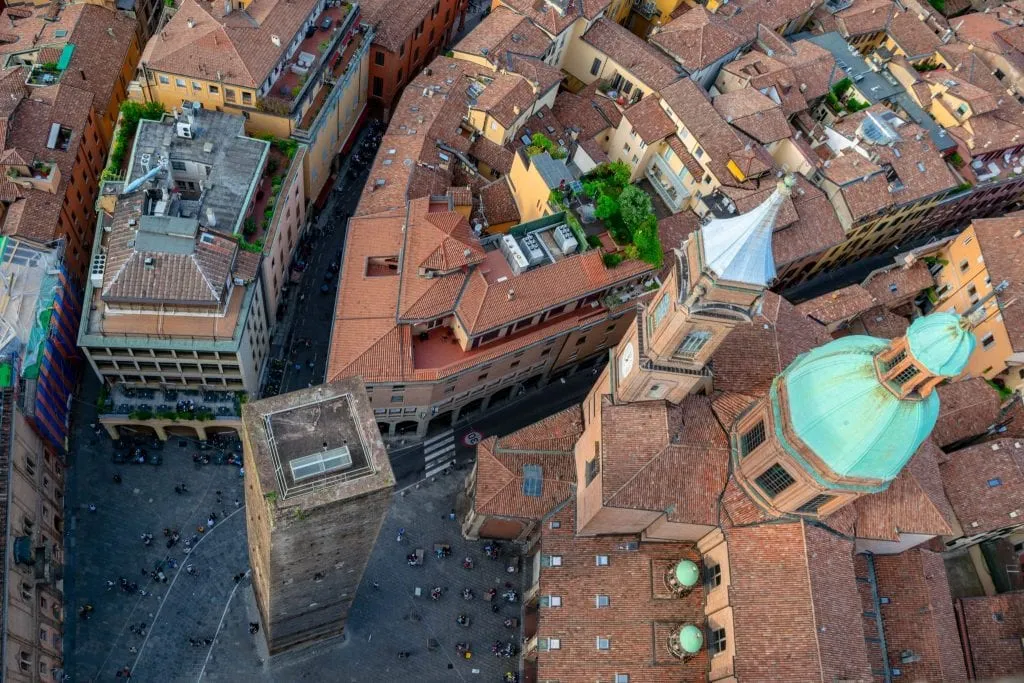
Set on a hilltop overlooking sweeping views of the Umbrian countryside, Orvieto is as historical as it is picturesque: dating back to the Etruscans and once (briefly) the home of the pope, whether you’re looking to dive deep into the history, enjoy the tasty Orvieto Classico wine, or simply admire the magnificent vistas, Orvieto has something to offer.
We adore this little village–be sure to check out the Duomo, the views from the Torre del Moro, and the underground while you’re there, among plenty of other fun things to do.
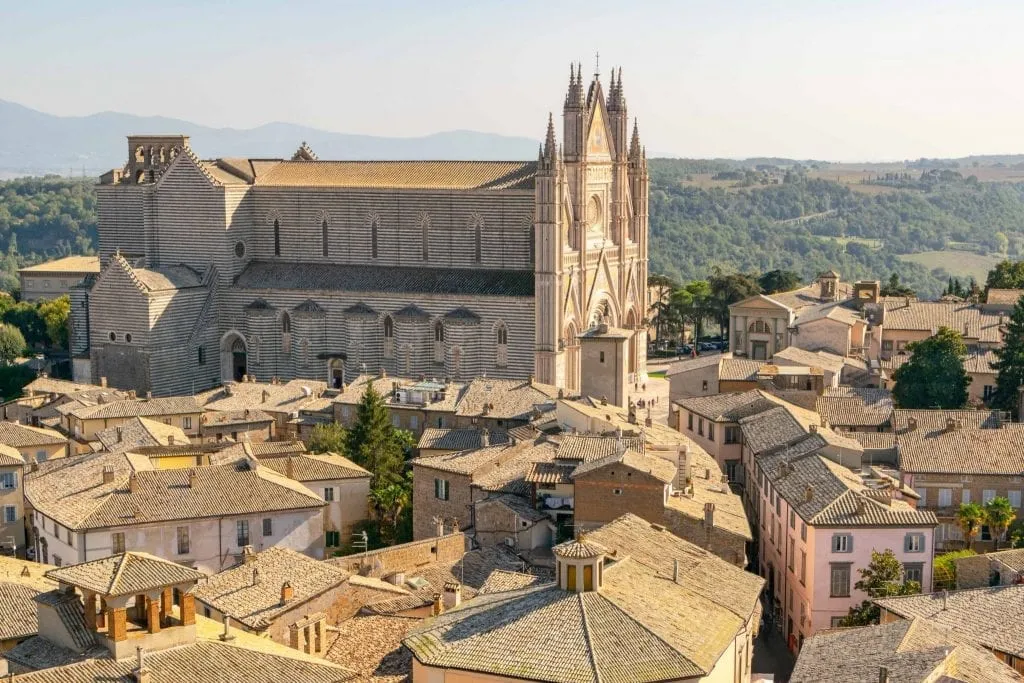
As the location of the birth, work, and death of St. Francis, Assisi is an enormously popular pilgrim destination among Catholic travelers–but even if you’re not Catholic, this small Umbrian town has plenty of history and beauty to offer.
St. Francis was the founder of the Franciscan Order–a name you’ll see pop up a lot in Italy–and is also one of the patron saints of the country.
In Assisi, you can tour the enormously impressive Basilica of St. Francis while learning about the life and history of the saint.
Take This Map With You! Click each highlight to pull up the name of the destination. To save this map to “Your Places” on Google Maps, click the star to the right of the title. You’ll then be able to find it under the Maps tab of your Google Maps account! To open the map in a new window, click the button on the top right of the map.
Ultimately, Tuscany is a beautiful destination year-round, and you can never go wrong with a visit.
Spring in Tuscany brings beautiful flowers but plenty of rain, summer brings lots of tourists but also long days and sunshine.
Fall brings the harvest and temperamental weather, and winter brings cold, gray weather but also low prices and a distinct lack of crowds.
If you ask us, though, our favorite time to take a Tuscany road trip will always be in the fall, particularly late September through mid-October.
True, it’s hardly offseason (in other words, there will be plenty of other tourists around), and there’s a good chance of experiencing a cold and/or rainy day or two–but the changing colors across the countryside, the incredible food that is freshly harvested, and the crisp chill that sweeps through the air each evening as the heat dies down for the year give the region a magical quality that we will never tire of experiencing.
We’ve spent at least part of the last few autumns in Tuscany, and we see no reason to stop that tradition anytime soon.
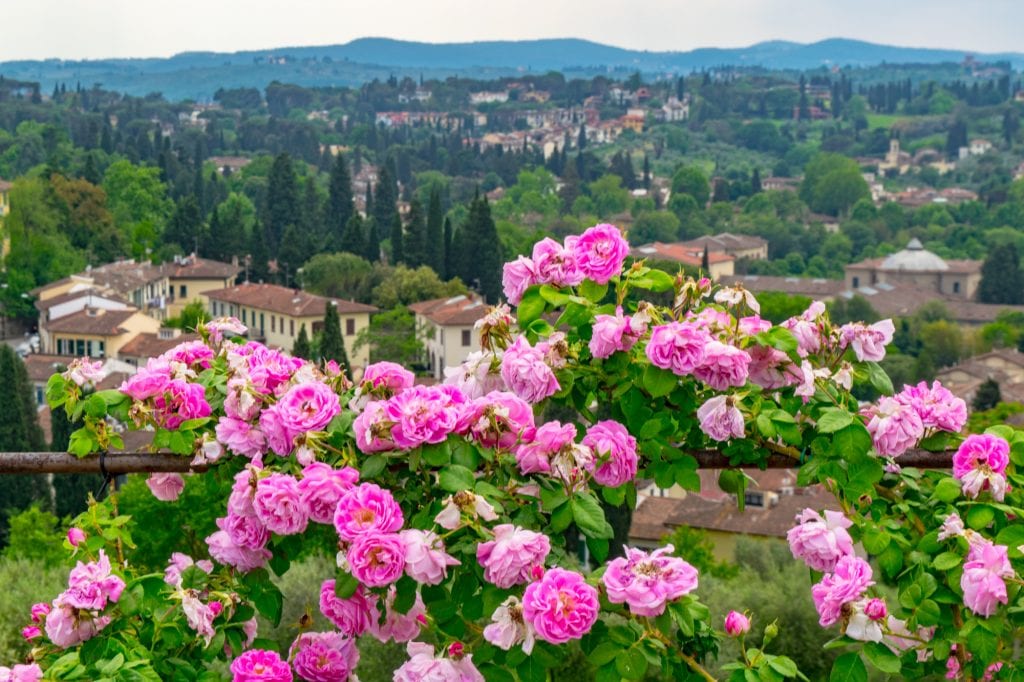
While driving in Tuscany is not the most difficult driving you’ll encounter in Italy (looking at you, Rome and Sicily), it definitely has its quirks!
Here are a few tips we recommend keeping in mind as you plan your Tuscany road trip itinerary.
Make sure you have access to a GPS for your Tuscany road trip.
This is absolutely imperative, in our opinion, and can make the difference between an insanely stressful Tuscany road trip and a fairly laid-back one: whether you purchase an international cell phone plan through your carrier before leaving for Tuscany or you purchase an Italian SIM card on the ground, you’ll 100% want to make sure you have cell phone data–and therefore GPS–with you as you drive.
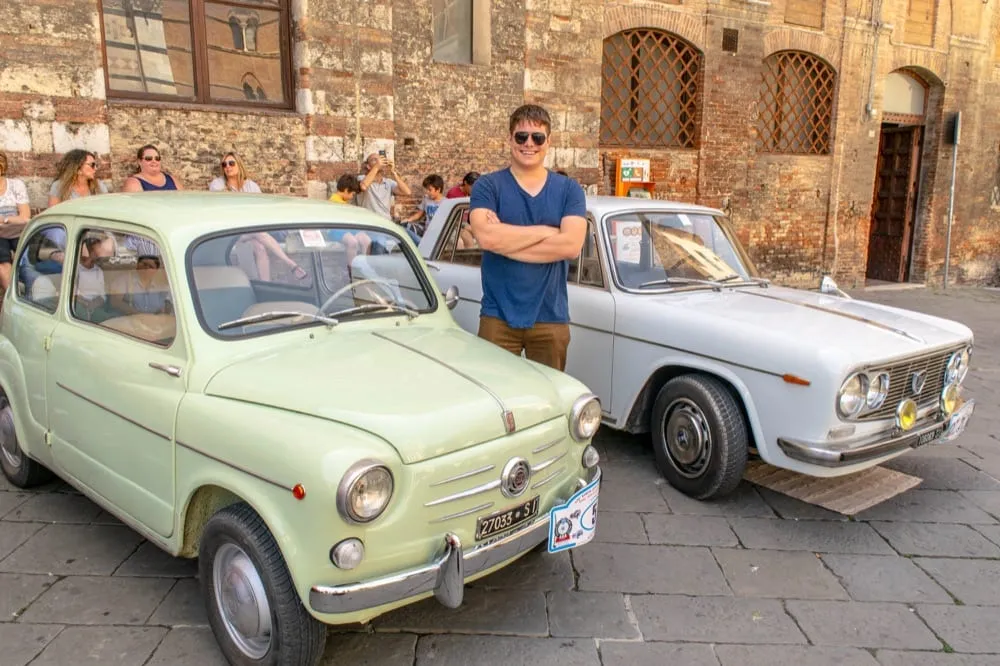
Shop around for your rental car.
I’m almost 100% certain that we’ve used a different rental car company every time we’ve rented a car in Italy–that’s how much the prices can vary depending on your time of travel, pickup and dropoff locations, size of the vehicle, and more.
We recommend searching for your car via Discover Car Hire , which will allow you to check out the rates of several different rental car agencies in Tuscany at once and compare prices and inclusions side-by-side.
Shop for your Tuscnay rental car with Discover Car Hire today!
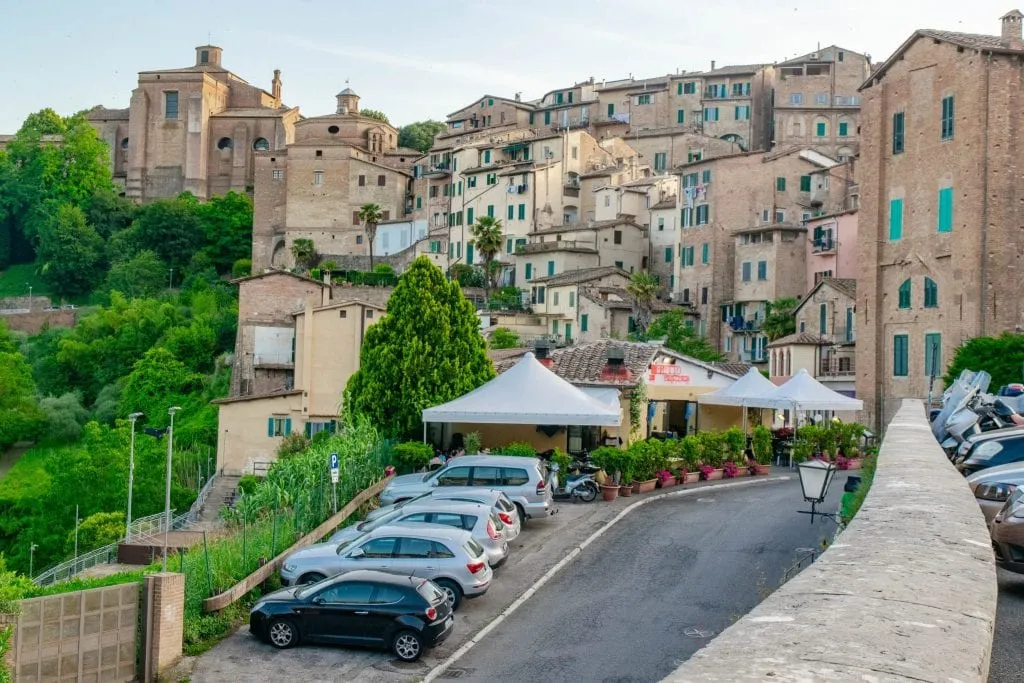
Buy the insurance–you won’t regret it.
Ultimately, this is up to you–I know some people prefer not to buy additional CDW insurance (aka the insurance that covers damages to the actual car you’re driving, as opposed to your liability to anyone else) on trips–but we buy it every. single. time. in Tuscany and have no regrets.
I don’t want to overstate things, because driving in Tuscany isn’t exactly like driving in the Wild West–but let’s just say that the roads are often tiny, the buildings very close, the parking lots cramped, and the other tourists’ rental cars parked nearby are frequently scratched and dinged in a way that while not horrendously damaging, is definitely something a car rental company would love to charge you for if it happened on your watch.
The peace of mind is absolutely worth it to us–you can price it for yourself when shopping on Discover Car Hire , or purchase a travel insurance policy through that includes car rental insurance (but be sure to double-check the policy, because only some policies cover it).
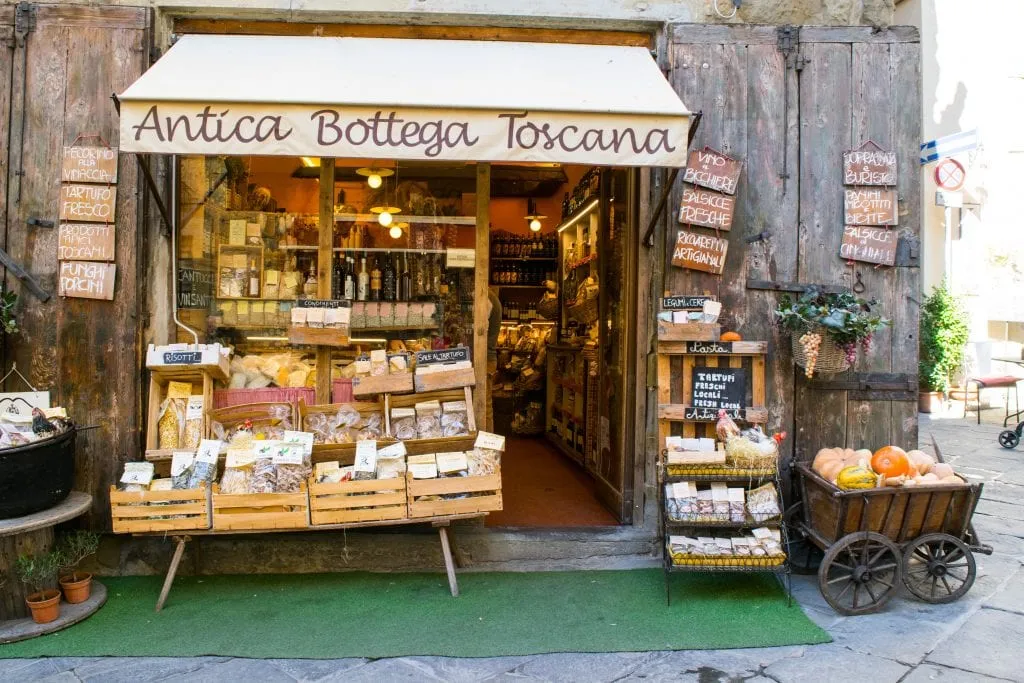
You need an international driving permit to rent a car in Tuscany.
Technically, you always need an international driving permit to rent a car in Italy, and that includes in Tuscany.
You can pick this up before you leave home from AAA, and it’s very easy and cheap to do–just a bit annoying, as it’s one more thing to add to your to-do list before leaving for your Tuscany road trip.
Now, that being said–will your rental agency always ask for it? No. Will the police always ask for it? No.
Is it worth the risk of being refused a rental car or getting a ticket over $25 USD and a bit of hassle? Not in my opinion.
Rent the smallest car possible.
Not only is it cheaper, which is always excellent, but a smaller car in Tuscany is also much easier to drive.
While the highways in Tuscany are pretty standard, this-could-be-anywhere highways, the small country roads, parking lots near villages, and dirt roads leading to vineyards and villas can be incredibly narrow–which, naturally, does not stop them from being used for two-way traffic (you’ll probably end up pulling over to let someone maneuver past you at least a couple of times during your Tuscany road trip).
Be sure to account for how much space you’ll need for luggage, especially if you have three or more people in your group, but other than that–the smaller, the better.
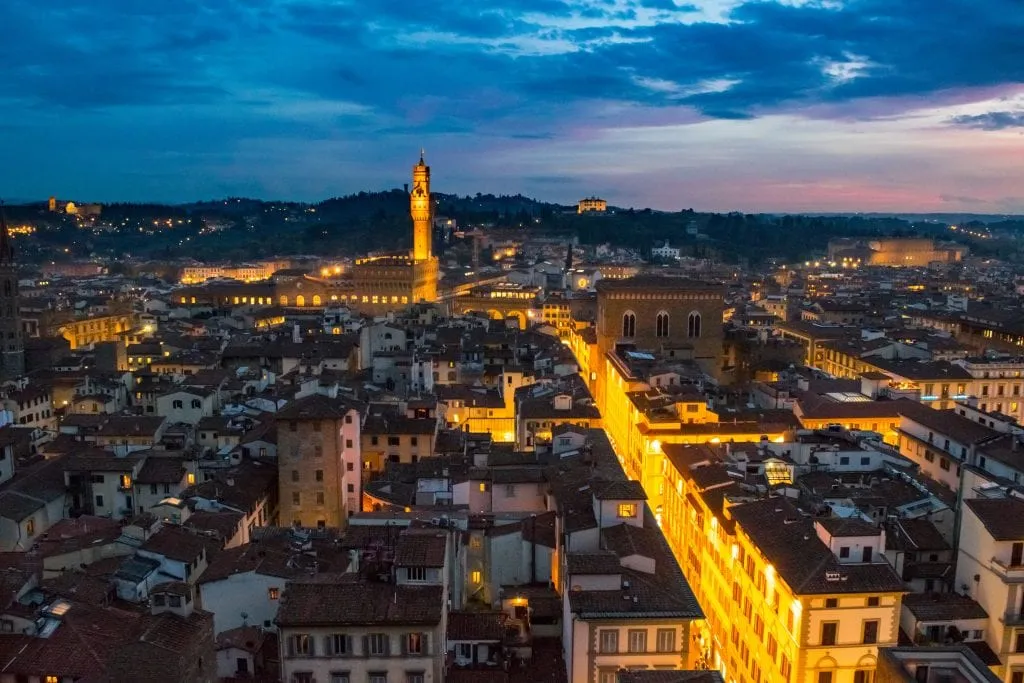
If you get a ticket, you probably won’t know it right away.
Traffic citations in Tuscany are generally captured via camera, so if you get one, you probably won’t know it right away.
Instead, your license plate will be captured, the ticket will be sent to the owner of the car (ie, your rental company), and then your rental company will forward it onto you.
Unfortunately, that means you won’t be 100% sure you didn’t have any infractions during your Tuscany road trip until several weeks after you get home.
You will encounter toll roads in Tuscany–so carry cash.
Most toll roads in Tuscany will accept credit cards, but it’s always best to have small bills/coins of cash on you–just in case you run into a cash-only booth (or you need a last-minute coffee and/or gelato, which are also very important parts of any Tuscany road trip itinerary).
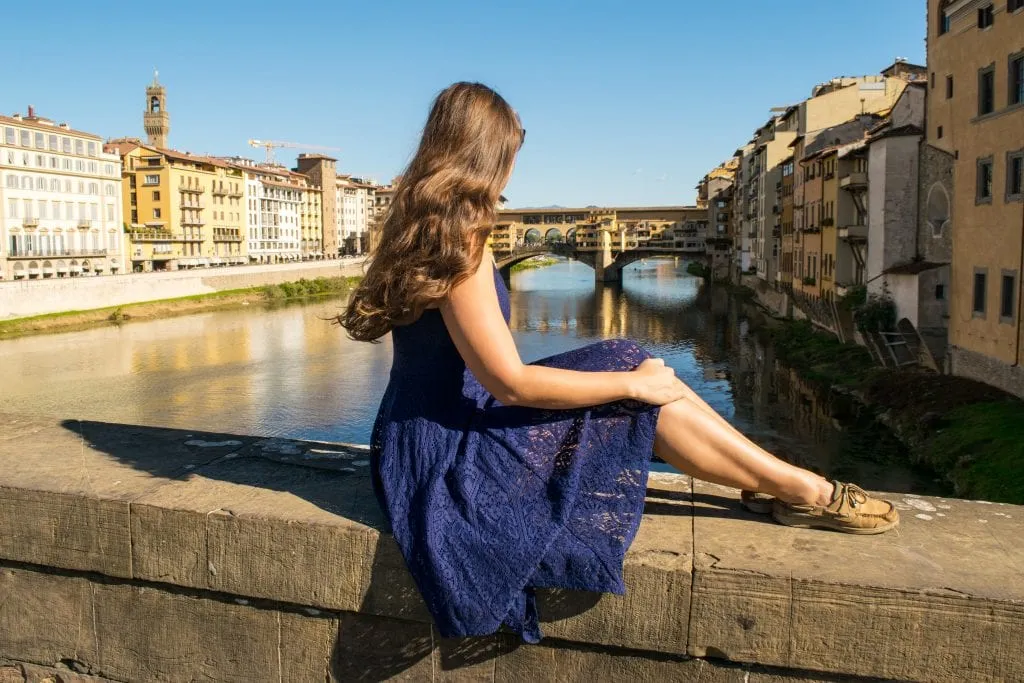
Be prepared to park and then climb up to towns.
Tuscany is known for its delightful hilltop towns, full of winding, narrow streets and plenty of foot traffic.
Combine the above description of Tuscany that we all know and love with the very concept of a Tuscany road trip, and an obvious question emerges: where are the cars?
Usually, they’re in parking garages built literally under the hilltop towns or on the outskirts of historical centers… which means you often have to walk up steep hills in order to reach the center.
Some cities, like Siena, have escalators installed to help alleviate this problem–but in general, be prepared for a little bit of a leg workout when visiting small towns in Tuscany!
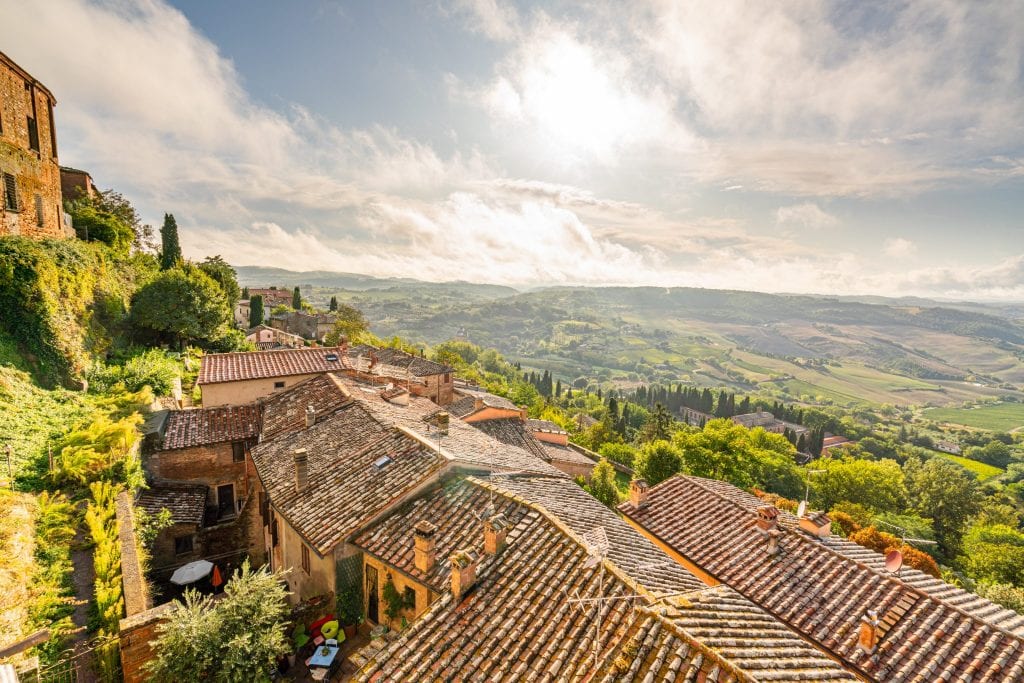
Avoid ZTL zones like the plague.
Essentially, ZTL zones are restricted access zones that dot most of Italy’s historic city centers, including in Tuscany.
If you drive into one, even accidentally, you’re risking a big ticket (and we’ve definitely had to call tiny Tuscan police stations to help some of our family members pay them off months after the fact).
Avoid them by parking on the outskirts of historical centers and by doing your research ahead of time, which leads me to…
Whenever possible, figure out where you’re going to park next before leaving.
This is one of our favorite tricks to keeping stress levels down when driving into a new town in Tuscany: know where the public parking lots are and, when heading out for the day, put your directions on for that particular spot rather than just the town.
This will absolutely cut down on the risk of accidentally driving into a ZTL zone (and therefore getting a ticket), and also make the trip into town much less stressful.
Now, in the interest of full disclosure, this doesn’t always work–occasionally the parking lot you have picked out will be full, or you’ll luck out and find street parking along the way–but in general, it will definitely make your life easier during your Tuscany road trip.
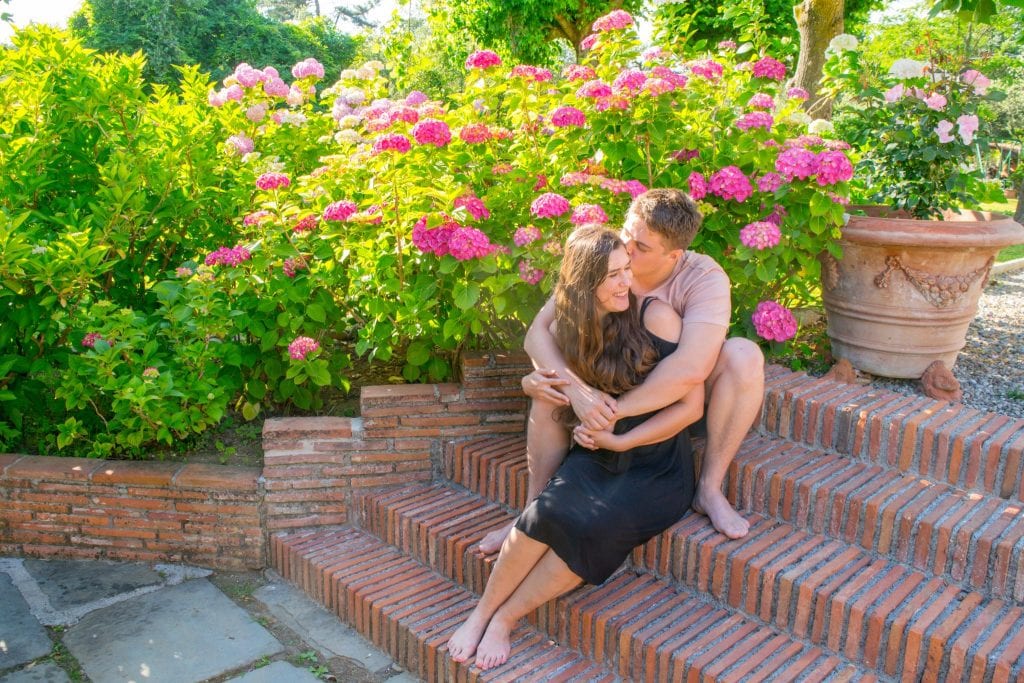
Travel Insurance — We don’t ever suggest traveling without travel insurance–anything can happen, and this is definitely a case of better safe than sorry. We use and recommend Safety Wing for trips to Tuscany.
International Driving Permit — If you’re coming from outside the EU and plan to rent a car in Tuscany, you’ll need to make sure to acquire an International Driving Permit in your home country, before coming to Italy.
It is required for all car rentals in Italy, and while the rental company may not ask, it’s not worth the risk of being refused a car once you arrive or getting a fine if you’re pulled over to be without one. Play it safe and if you plan to drive during your trip, add getting an International Driving Permit to your pre-Tuscany planning!
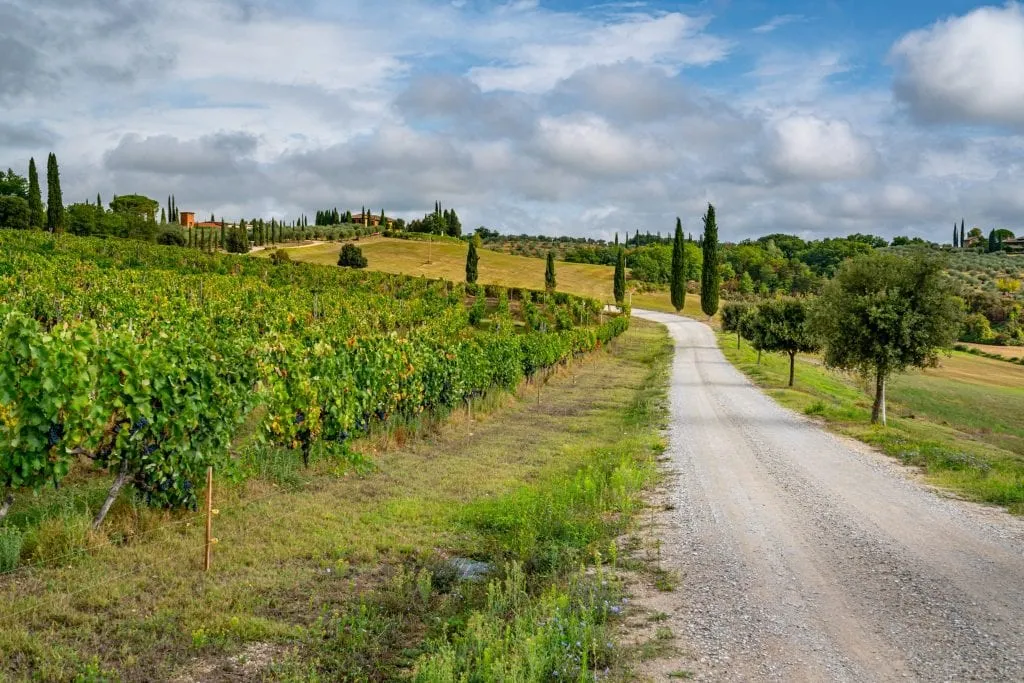
About Kate Storm

In May 2016, I left my suburban life in the USA and became a full-time traveler. Since then, I have visited 50+ countries on 5 continents and lived in Portugal, developing a special love of traveling in Europe (especially Italy) along the way. Today, along with my husband Jeremy and dog Ranger, I’m working toward my eventual goal of splitting my life between Europe and the USA.
67 thoughts on “The Perfect Tuscany Road Trip Itinerary (+ Driving Tips!)”
I love this website It has convinced my husband and me to go on a driving tour of italy! I actually have a question. How do you know or find out where is the ZTL zones so you can avoid them? Thanks! Ilene
So glad to hear that, Ilene! Hope you guys have a great time!
Your GPS can help you avoid the ZTL zones, but the biggest thing is paying very close attention to the signs, as they’ll be marked there. As a general rule, historic centers of cities are ZTL zones, so it’s safest to avoid those entirely and park outside the center before walking into the town!
Hi Kate, Do you have any recommendations for accommodations on the Tuscan itinerary? We would be going in Sept 2022.
Hi Sabrina!
Yes, absolutely. We have several properties linked in this post, but if you’re looking for specific towns/cities, we also have recommendations in each of our independent city guides.
Hello, You guys look like you have a great life! My husband and I are older than you but have retired a bit early so we can travel while we are still able to move about. We have traveled quite a bit independently throughout the years so we are comfortable going to new places. Your blog is great and has so much useful information. Thank you for putting all of your knowledge out there. I know it’s a lot of work to do so. If you don’t mind me asking…we were told you have to have a permanent address at least 6 months out of the year for tax purposes. How do you get around that? Don’t mean to overstep. Thanks!
Thank you so much, Joanne! We really appreciate it. :-) Residency requirements vary by state, but we maintain a technical permanent address in our home state of Oklahoma where we pay our taxes, maintain our businesses, keep our driver’s licenses up to date, etc. Most nomadic travelers have a similar setup for logistical purposes!
Hello, thanks so much for this post. It’s so helpful! My partner and I are going to copy this for our holiday in June this year. I was just wondering if you could tell me which towns you stayed overnight in? Grazie, Olivia
So glad it was helpful, Olivia! Where to spend the night really depends on your specific taste, but from this itinerary, we’ve stayed overnight in Florence, Siena, and Arezzo. We’ve also stayed in countryside villas near the Val d’Orcia and Lucca.
Since you’ll be driving, we 100% recommend staying in the country at least once–Tuscan villas and agriturismos are absolutely amazing. For staying in the towns themselves, make sure your hotels have parking, but other than that, any and all of them make a great place to spend the night.
My daughter and I just booked a rental car for our trip to Tuscany this summer thanks to your post. I was nervous about driving but you laid it all out perfectly, thank you. We’re going for her graduation present and it’ll be the first time in Italy for us both. Bookmarking your site now for when the trip gets closer. Thanks again!
That’s amazing to hear, thank you Susan! Comments like this never fail to make my day, we are ALL about making sure your trip goes perfectly! Hope you guys have a fantastic time, and congratulations to your daughter on her graduation!
Hey, this has been quite useful. Im planning my road trip, but im going clockwise on this route. Since i live in The Netherlands, i will drive in from the north, Florence and start here and after Pisa-Lucca, the last stop instead of heading back to Florence is Cinque Terre, to enjoy a bit of the coast. I will take the advice of leaving the car in La Spezia, but if you had to choose to spend a night in Cinque Terre, which woudl you guys recommend, Vernazza or Manarola?
Glad to hear it, thanks Rodolfo!
Which village is best for spending the night in Cinque Terre is definitely a matter of preference, and Vernazza and Manarola happen to be two of my top 3 favorites (the other is Riomaggiore). You can’t go wrong with either, but I’d recommend Vernazza if you’re looking for something smaller, and Manarola if you want to have access to a wider variety of shops and restaurants. Manarola is a more popular (read: crowded) sunset spot, but both places will quiet down considerably once the day trippers head home.
Wonderful, informative article! I am so glad I found your website. We are hoping to be able to visit Tuscany in summer 2022. Italy is our favourite country, but we haven’t been to Tuscany or Cinque Terre, so I really appreciate the wealth of information on your website!
Thank you so much, Cheryl! So glad to hear that. :-) Hope you guys have an amazing trip to Tuscany and Cinque Terre!
Hi! I just came upon your site when doing a search for info on an upcoming trip. My husband and I are planning a trip for the end of Oct. We will be renting a car in Florence, spending about two days driving through Tuscany and returning the rental in Rome. I know that’s way too short to do Tuscany justice, but we have a commitment in Venice prior to Florence, and are bookended with a fixed return date from Rome. Where in Florence would be our best choice to rent a car so we can get on the road to Tuscany easily? Same question for returning rental in Rome without having to deal with city driving. Lastly, we are doing some basic research in Tuscany in order to maybe get a place there down the road. Should we consider spending our two nights there in Lucca? Thanks so much and I will definitely be following your adventures!
Hi Rohini! There are so many places to rent cars in both cities it’s really impossible to say–I’d keep an eye out for the best deal and then look carefully at the directions. Unfortunately, some city driving is probably unavoidable if you want to make it all the way from Florence to Rome, but you can limit it based on your schedule.
If you’re just going to relax, Lucca is a great choice! If you want to compare possible areas to own a property in Tuscany though, I’d probably recommend one night there and one night in the Val d’Orcia area. You may also want to consider a look at Siena, depending on whether you want to be close to a city or not.
Hi Kate. Thanks for your quick response! This is very helpful info. I had read somewhere that Tiburtina station in Rome is a good spot for rental return since it would not involve going into the city to return. Would you say that is the case? Once again, thank you for your help!
Hi guys, I imagine you’ve had some ups and downs in your travel in the last 2 years because of Covid. I really hope you’ve been able to stay safe and still continue some of your adventures. I found your site and am really keen to follow your path around Tuscany when my husband and I go this year. I looked up your destinations and would really encourage you to look into coming to Australia and New Zealand some time if you can. Down Under is a wonderful place and New Zealand has just about everything you could ever want to see in a really small country! Thank you for your really helpful and informative site. Take care.
Yes, there have been many ups and downs over the last couple of years for sure, but luckily things are mostly up right now! We’ve decided to base ourselves in Portugal for the next little bit to enjoy lots of Europe throughout 2022. :-) Knock on wood, but hopefully our next Tuscan road trip is just around the corner!
We’d love to head down to Aus and New Zealand one day! No plans at the moment, but you never know. :-)
Hope you guys have a wonderful trip!
Such a great and helpful Itinerary, thank you!
We’re planning to visit late September and I am nervous about the driving portion – what location would you recommend for pick up, outside of Florence? We’re hoping to get a drive to our first destination (open to anywhere) and then pick up a car – appreciate any extra tips you might have! I was surprised to not see any mention of Greve as a stop, have you been? This was what I thought was my main stop in Tuscany but I am now rethinking everything! :D We have 5 nights in Tuscany (counted Florence separately as a stop when we head North) and prefer to not spend too much time in the city and want to visit many wineries and enjoy the local food! If you have any very specific favorite wineries to stay at or places to dine, I would love to hear about them!
Thanks again for such a detailed post! I have a lot to consider :)
Thanks so much, Cait!
There’s never enough time for all the towns, lol, but if you want to swap in Greve you absolutely can! We haven’t been ourselves yet but generally speaking there’s no such thing as a “wrong” Tuscan town to visit. ;-)
If you want to pick up a car outside of Florence, I’d recommend taking a look at Siena. By the time you get into the very small hilltop towns like San Gimignano, etc, there may not be car rental agencies available (or if they are, it’ll just be an office and they’ll need to drive the car itself to you from a bigger city–which often comes with a fee).
Have an amazing trip!
Hi, I am planning a vacation trip to Rome (5 days) and from there a road trip (5 days) to the Tuscan area. I’ve been already to Florence and Pisa. I will like to know cities or towns with good food and scenery off the beaten path. Thanks so much for your time and sharing your knowledge.
It depends on how you define off the beaten path, but just about everywhere in Tuscany is further off the path than Florence and Pisa! And virtually everywhere in Tuscany has great food. :-)
Arezzo, Volterra, Pienza, Montepulciano are all delightful, some more commonly visited than others. Montalcino is tiny but beautiful.
We also love Lucca, it’s much quieter in many ways than Florence or Siena.
A common theme is that if you spend the night in any of these places, they will get much more peaceful and quiet if you spend the night, as the day-trippers will head home.
Some of the spa towns other than Saturnia can feel off the beaten path, such as Bagno Vignoni. They’re popular, but more catered to tourists from nearby.
Wonderful article – thanks!
Planning Sept trip – 4 days Rome, 2 days Florence, 3 days Venice (as of now)
Considering adding a Tuscany component but limited to time. Any suggestions to condensing to 2-3 days as a loop or feasibility of starting in Florence and ending in Venice?
Any input greatly appreciated.
Happy to help, Richard!
With a 2-3 day driving loop from Florence, I’d recommend driving to either the Val d’Orcia (so towns like Montalcino and Pienza) or a nearby base like Montepulciano, and then basing yourself there for a couple of days. You can drive between a handful of close-together towns, see the landscape, enjoy an agriturismo, do some wine tastings, etc, all within a close distance.
Driving from Florence to Venice isn’t a go-to suggestion of mine since you don’t need a car in either city, but we’ve actually made the drive ourselves as part of a family trip and it was lovely! Bologna, Ferrara, and/or Padua are easy stops right along the route.
If you wanted to take a couple of days between the two cities, a loop through Parma, Modena, Reggio-Emilio and Bologna would put you in the heart of Emilia-Romagna, which is the origin of some of the most beloved Italian foods (traditional balsamic, parmigiano-reggiano, etc).
It’s not the most efficient way to get from Florence to Venice of course (that’d be the high-speed train), but if you want to make a trip of it, you’ll have fun!
If you do want to consider renting a car in Florence and dropping it off in Venice, though, be sure to ask your rental company if they allow it and what fees they would charge before making any plans.
One of my stops is in Luca and the hotel and parking garage are in the Atlantic. How do I get a permit to drive through it.
I think you may have a typo in there, but I’m assuming you mean you have a hotel booked in the historic center of Lucca? If the hotel offers private parking on-site, you can give them your license plate number and they’ll be able to make arrangements for you.
If they don’t have parking, you’ll likely need to park outside the walls and walk into the center to reach your hotel.
Hope that helps!
The parking os not on-site but within the walls.
So you are saying that all I need to do is call either the garage or hotel with my rental car license number and they would be able to get me a permit to drive inside the walled city to get to the hotel and garage?
In your case, I’d contact the hotel and ask where they recommend you park, and then if you head to the garage inside the walls, look at the map to confirm the directions to access it.
Essentially, your goal is to avoid the ZTL zones, which trigger an automatic ticket (and technically two–one for entering the zone and one for leaving it). Unfortunately, since all of the traffic controls are done by camera, you’ll have no sure way of knowing at the time you park if you’ve crossed the boundary.
The public parking within the walls should have a way to access it without passing through a ZTL zone, the concern is taking a wrong turn, etc. If you do need to pass through a ZTL zone (generally speaking in Italy), hotels within the walls can get access for their guests but I’m not sure if yours can since they don’t have on-site parking. These rules also vary from city to city in Italy.
Generally speaking, in the case that you do get access to a ZTL zone to access hotel parking (I know yours doesn’t have it, but just generally), you won’t get a paper permit or anything like that. It’s all done by license plate and camera.
Hi Kate! What an insightful article. I am planning a trip to Itlay in August for 12 days with a girlfriend who has never been to Italy. We are landing in Rome, spending 3 days there, and making our way to Florence by train. We will have 6 days in the Tuscany region and plan to rent a car after reading your article. This is what I am planning for our road trip and what your feedback. Would love to know if you can recommend an amazing winery with meals and wine tasting at one of our stops. I have taken suggestions from your blog on places to see and things to do at each stop:) Am I packing in too much? Day 1 – Florence to Lucca to San Gimignano spend the night here Day 2 – San Gimignano to Siena to Val D’Orcia spend 1 or 2 nights here Day 3 or 4 – Val d’orcia to Montepulciano to Montalcino (not sure about Montalcino) Day 4 – Drive to Saturnia from the last destination and head back to Florence
Hi Gira! All of the places you have mentioned are wonderful, but yes, I’d highly recommend cutting a few places from your list in order to savor the others more!
Driving, parking, walking into historic centers, etc, all eat up quite a bit of time.
I’m assuming you’re planning a couple of days in Florence on days 5-6. Ideally, I’d recommend only changing your “base” one other time. Montepulciano is a convenient spot as you can reach the Val d’Orcia, Montalcino, etc, from there. Siena is another fantastic option, but it’s definitely a small city, not a tiny town.
Saturnia is pretty far out of the way from everything else on your list, so unless it’s your dream destination in Florence, I’d consider trimming that. :-)
Hi, Your article is very informative. Thanks. One question, I understand that leaving anything in the car in Italy is not a good idea as it can be stolen. What about these small towns in Tuscany? Is it risky to leave luggage in the trunk when parking there, too? Thanks
That’s essentially down to your personal risk tolerance. Many people leave luggage in the car when they have no other good option if it is kept out of sight in a locked trunk.
Obviously, there’s always a small risk with that, but it’s a fairly common practice.
The most important thing is to make sure nothing visible is left behind.
Thank you for such a insightful article, it has definitely helped to make a road trip through Tuscany feel less daunting!
Are there are places on your list that are more or less English friendly? We will obviously try to learn what we can in Italian, but it is always helpful to know :)
My husband and I previously visited Florence and did a day trip to Pisa, Siena, and San Gimignano. The scenery was so breathtaking it quickly made a road trip through Tuscany a MUST on our bucket list! Having already visited those places (wouldn’t mind visiting San Gimignano again!), what would be your top picks for 5-6 nights (not including Florence but starting from there)? I would love to make a stop at Saturnia if time allowed. Thank you SO much for your suggestions!
Hi Samantha,
Thank you so much! Glad we can help. :-)
Unless you go exceptionally off the beaten path, you won’t have any problem using English (plus body language/hand signs/etc) in Tuscany, so don’t worry! Definitely learn what Italian you can, but Tuscans are very friendly and exceptionally used to foreigners.
Since you guys have already done quite a bit in the northern part of Tuscany, I recommend heading to the southern part! Montepulciano, the Val d’Orcia (including towns like Pienza and Montalcino), Cortona, and Saturnia, make a great loop.
You might also look at taking a day trip to Civita di Bagnoregio, Orvieto, Perugia, or Assisi. Those places aren’t in Tuscany but are wonderful, and depending on your itinerary might make fun additions.
This is so helpful Kate, THANK YOU!!!! This will be my first time in Italy, I’m traveling solo, and I’ve never driven outside of the U.S. before, so I’m thinking I’ll stick to trains to get around this time (which I know will limit how much flexibility I have). Are any of these towns easily accessible by train from Florence (and/or each other)?
Happy to help, Tara!
Yes, Lucca, Pisa, Arezzo, and Siena are all easy to get to by train.
The smaller hilltop towns are generally harder to access without a car, and many don’t have train stations. You can technically get to Montepulciano by train, but the station is outside of town and you’ll need to catch a bus or taxi to get all the way there.
If you want to visit a few of the tiny hilltop towns, I’d recommend signing up for a day trip one day–we link a some popular ones in this post: https://www.ourescapeclause.com/best-day-trips-from-florence-italy/
Generally from Florence, you can find either day trips that focus on the north (San Gimignano is a common stop) or the southern Val d’Orcia towns. They’re a great way to see harder-to-access spots while letting someone else deal with the driving and parking!
Thanks so much for responding and for the additional tips! <3
Hi Kate! Thank you, thank you, thank you for the wealth of information. Very helpful for our upcoming visit!
Any possibility of emailing you directly with a few more questions?
Thanks, Lori and Steve, USA, coming in October for our 60th birthday’s!!!!
Yes, of course!
We’re not travel agents and don’t plan/book trips for people, but we’re always happy to answer a few questions and point travelers in the right direction. :-)
Happy early birthdays!
Hello again, We will only have about 4 (3 full) days and nights to explore Florence and Tuscany. We hear that Florence is not terribly large and is very walkable? Would it be practical and safe to utilize motor scooters to do so? The countryside is a PRIORITY, but we are considering not venturing too far from the city to limit travel time. We’d like to spend at least one night in the city, and at least one in the country. And we very much want to explore a couple of very small villages. Suggestions?
Would you recommend purchasing train tickets in advance, or is it really not necessary? Likewise for renting a car, and making hotel reservations (First week of October).
For the train tickets–it depends. For high-speed trains across long distances, like from Florence to Venice, yes, absolutely book in advance. The prices increase dramatically as you get closer to your dates.
For regional/slow trains, like taking a day trip from Florence to Lucca, there’s no need to book in advance.
What gets a bit confusing is that some lines, like between Rome and Florence, have both high-speed trains (essential if you’re making a day trip, as it takes under 2 hours), and regional/slow trains, which depending on the exact timetable can take anywhere from 3-5 hours or so.
If you want an overview of what’s available, we recommend using Omio to search for tickets and compare prices/timetables.
For hotels and a rental car, yes, you’ll want to book in advance. It’s not as urgent as in, say, July, but to get maximum availability it’s best to be prepared, especially if you have special requirements for your rental car such as wanting to rent an automatic.
I hope that helps and that you guys have a great time! October is our favorite month to be in Tuscany. :-)
My daughter & I will have 5 days in Tuscany, have a rental car & want to visit mostly hill towns. Our hotel is outside Florence. We’d like to drive to Cortona then to for wine tasting, then to Monticchiello for a 7:30 dinner at Daria & spend night. Is this possible? Where do I find city maps?
I think you mean you plan to spend the night in Monticchiello? If so, yes, that will probably work well. Cortona is a bit out of the way as far as Tuscan hill towns go, but it’s very popular!
For city maps, your hotel will usually offer one, especially if you ask. For towns that you just take a day trip to, the easiest way to find them is to head to the tourism office (there’s virtually always a well-marked office in the town center).
Some tourism offices do charge a nominal fee for maps, so it’s a good idea to have a few Euros in small coins/bills on you when you go.
Totally loved it!!! Would you recommend doing this roadtrip with a child? I really want my 5year old daughter to witness new cultures and enjoy some holidays with mum and dad!
Of course it depends on the child, etc, but it’s definitely possible! Italy is considered to be very kid-friendly, and kids are adored and welcome just about everywhere.
The distances in this road trip are also fairly short, so no extremely long car days to contend with.
I don’t see your 2 night Tuscany itinerary?
Hi Lorraine,
I’m not sure what you mean–maybe you’re looking for our 2 day Florence itinerary? Here it is: https://www.ourescapeclause.com/2-days-in-florence-itinerary/
I don’t have anything on spending 3 days/2 nights in Tuscany specifically, but for most visitors, I’d recommend spending 2 days in Florence and then taking a day trip to the countryside on the 3rd day.
Hope that answers your question!
Thank you very much for your article, it was very helpful to consider the cities/town to visit in La Toscana. What would you recommend me for a 10-day trip (honeymoon :) ) by arriving to Rome? For sure, I want to rent a car and do all by car. Would it be better to take a train all over to Florence and from there do the trip all over to Rome? Is it a big deal if I do not have an international license? Thank you for your help.
You can definitely structure this trip as a road trip from Rome to Florence, touring Tuscany by road trip along the way instead if you prefer. For that version, you’ll likely want to start at Montepulciano and then make sort of a “V” shape ending in Florence. Keep in mind that you’ll probably have a one-way car rental fee if you do it this way.
In that case, you may want to add on a stop in Orvieto along the way as well–it’s in Umbria, and a beautiful place: https://www.ourescapeclause.com/things-to-do-in-orvieto-italy/
Having an international driving permit is required for non-EU drivers in Italy. It’s not often asked for, so you can choose to take the risk, but your rental company can refuse to rent to you and of course, you can have issues if you get into an accident, etc, if you don’t have one as well. They’re not complicated to get, so it’s much better to acquire one before going to Italy!
Hi! Thank you so much for this wonderful site – it is so informative!! We are planning 2-3 days traveling from Florence to Rome and wonder if there are private drivers for hire in Tuscany. Is that an option? And, if so, do you have a sense of how we would locate good drivers? Our concept is that it may be easier on us if we just left the driving to a trained professional local… your thoughts? Thanks again! Paul
We’ve never hired a private driver in Tuscany, so I can’t speak to that personally! I know that some private drivers and tours advertise through Get Your Guide. Other than that, I’d recommend asking your hotel concierge, they’ll no doubt know of someone.
However, if your goal is to travel between Rome and Florence, you could also easily take the train. If you’d rather take 2-3 days to do the journey and sightsee along the way, Orvieto and Siena are both stops to consider on the way.
If you’re confident drivers, though, that route is fairly simple–lots of highway driving, etc. If you’re considering the option of driving yourselves, I’d say there’s no real reason not to.
Hi Thank you for putting together all this info, it has filled me with excitement thinking about our trip this year. My husband and I are hoping to fulfil my dream of travelling to Tuscany this year at the start of April. We will be driving from the UK and stopping off in Normandy then driving across to Italy and Tuscany. The first large city we will enter is Turin before moving towards Tuscany. We have 7 days in Italy but we thought a circular road trip would be great made up of countryside, wine, food and wandering around towns and markets. I love the road trip based around Florence but given our route and our starting point, would you be able to recommend anywhere we should visit/stay/avoid that starts further north and drops into Tuscany. I don’t want to disappoint myself by making poor choices in destinations so any help would be much appreciated. Thank you
Sounds like a wonderful trip! We’ve driven from Portugal to Italy and/or France (and back) several times ourselves, so we’re very familiar with the breadth of the drive you’re taking on.
The Langhe region of Piedmont, located close-ish to Turin, is fantastic: think small towns, gorgeous views, delicious wine, and fewer crowds than Tuscany. You may want to consider a stop there before heading further south! We loved La Morra in particular, but there is lots to see around there, including Alba, Barolo, etc.
Depending on what route you take in, you may pass through Emilia-Romagna as well, one of our favorite foodie regions in Italy. There are a million places to fall in love with there, but Parma might be right along your drive: https://www.ourescapeclause.com/best-things-to-do-in-parma-italy/
Hope you guys have a fantastic trip!
Hi, I loved your article. My husband and I are planning to head to Tuscany in September. My thought is to arrive in Florence from the states and stay for 3 nights. Originally I was planning to head to Greve and stay at Borgo de Cabrea. for 5 nights and just do day trips from there. (The pictures of the hotel views blew me away). However after doing some more research, I’m thinking that I would leave Florence and head down to the Val d’ Orcia region for two nights, do some day trips from there, then head back up to the hotel in Greve for my remaining 3 nights. I don’t want to short change my experience in southern Tuscany. Looking for advice on where to stop on the way down, and the way up versus day trips from where we are staying. I’m thinking of stopping in Sienna on our way back up since it’s closer to Greve then we can avoid a day trip back down. Where do you think is good place to stop on the way down vs. places that would be better as day trips? Also any advise on where to stay in Val d’ Orcia region? Thanks for the advise on the cars. The site you suggested is much cheaper than the one I was originally looking at.
Those hotel views do look incredible!
With the caveat that you can’t make a very wrong decision in Tuscany, I’d recommend spending 3 nights in the Val d’Orcia area and 2 around Greve. Definitely check out the tiny town of Montefioralle when you’re in the Greve area, too: https://www.ourescapeclause.com/montefioralle-italy/
Siena is a decent-sized city rather than a hilltop town, so I’d spend more time there than you can–but if a couple of hours is all you can spare, visiting the Piazza del Campo + the Duomo + visiting one of the viewpoints to see the city from above will make for a memorable stop.
As for where to stay in the Val d’Orcia, we’re partial to Montepulciano as a base. It’s not in the Val d’Orcia, but nearby, well-connected, and beautiful. Pienza also makes an excellent base and has some hotels whose views I think you’ll also love: https://www.ourescapeclause.com/pienza-italy/
Depending on which route you take down from Florence, you may pass Monteriggioni, if so, that’d be a lovely stop during your drive.
Thank You so much for your response. After doing some of my own research and keeping your advise in mind, we booked a hotel in Montepulciano. I have another question for you. We are renting a car and tried discover cars. The prices for renting a compact car through Noleggiare are significantly cheaper than any other company. We need an automatic so it can get pricey. The reviews are mediocre and I was wondering if you had any experience with them. Thanks!
I don’t think we’ve ever used them in particular, but in general, we’ve never had any issues with a car rental in Italy and have zero brand loyalty with rental cars there. We tend to go with whoever is most affordable, as the prices can vary so much. We do buy rental insurance, though–for us, it’s worth the peace of mind.
Hi Planning on driving from Rome to Florence, taking our time. Where would you rent the car? And can you drop off a car in Florence if you rent in Rome. Thanks
Hi Sebastiano,
Personally, we’d rent the car in Rome wherever we could find the best deal–we’re not particularly loyal to any one car rental company.
You can definitely rent a car in Rome and drop it off in Florence, however, you’ll likely incur a one-way rental fee. These can vary dramatically, but are usually pretty reasonable if you’re picking up and dropping off the car in the same country (driving from Italy to Switzerland, for example, would be a different story).
Hi! I liked your insights very much, I hope to go visit Tuscany soon with my family. Though you didn’t really mention seaside areas – I guess it’s because people don’t tend to visit Tuscany region because of beaches, but still, there IS some seaside (judging from map sorry), and I would like to know more, either if you had any experience, or from locals or friends. I clinged to the one photo of a beach at Livorno. I was wondering, if it is worth seeing the seaside as well, if there are any beaches, maybe areas where swimming is not recommended, dangerous tides, sharks… or are there nice places as well, worth visiting. Is the shore easily accessible? The shoreline area is more flat I guess, less hills there as I assume again, from maps…
You’re right, I didn’t include seaside areas because typically, that’s not what non-Italian travelers are looking for from the Tuscany region. You’re right that it has a lovely coastline, though!
A few popular beach towns in Tuscany include Viareggio and Forte dei Marmi. Livorno is a popular cruise ship stop, and has a historic fort right on the water. Don’t miss the view from Terrazza Mascagni if you go!
If you want to go further off the beaten path, the Tuscan island of Elba (where Napoleon was once banished to) is beautiful.
If you’re in a beach town, you’ll definitely have access to the sea!
Will be in Tuscany for four days and thinking one day each in Pisa, Florence and Montepulciano (or combine a couple (like Pisa/Florence). Can you suggest a good home base area? We will have a car – any suggestions for a couple of one day road trips (if we can combine P, F or M) to visit wineries, different towns, etc? So many things to see it’s hard to decide and are hoping you can help us out. Thank you so much!!!
Hi Collette,
If you plan to have a car, I’d recommend staying outside a city center and enjoying the countryside a bit. That’s the advantage of having a car in Tuscany!
I’d also recommend combining Lucca with Pisa–Pisa doesn’t take long to see, but Florence definitely takes a full day at a minimum assuming you want to go inside a museum, up a viewpoint, etc.
On the route from Florence to Montepulciano, Monteriggioni and Siena are great options (depending on which route you take). The Chianti area is also between the two, though it’s a bit more out of the way to access!
San Gimignano and/or Volterra would also make a great day, and would be enhanced by having a car.
Deciding where to stay can be fairly flexible, as all of those places can be visited as a day-trip from the others, but I’d choose based on your priorities, as you’ll have some long drives round-trip. The Siena area makes a great base if your priority is Montepulciano and towns like the Val d’Orcia. The Lucca area or Chianti area is lovely for accessing northern Tuscany (Florence, Pisa, San Gimignano, etc).
Ciao! Thank you so much for writing so much about Italy! It’s been very helpful while planning our upcoming Tuscany road trip. We’re planning to rent a car from Florence and are seeing a lot of negative reviews on all the cheaper Discover Cars rental companies. What rental companies have you used in the past and would you recommend them? Also, are there any we should stay away from? Trying to be budget friendly but also do not want hit with a bunch of fees after the fact. Thank you so much for your help!
Hi Natalie,
Happy to help!
Honestly, I could not even remember all the rental companies we’ve used in Italy, let alone in Europe. We’re not picky–we’ve used everything from big brands like Hertz and Sixt all the way to tiny local outfits that we spot on the ground. We’ve never been charged for damage, but we do take precautions.
Specifically, we ALWAYS thoroughly photograph and video (a full 360 video) the vehicle when picking it up, and we tend to buy the additional insurance as well. If you want to ensure there’s a 0% chance of being charged for anything, most companies offer a $0 deductible (in Europe, a deductible is called excess) policy. It’s an increase in the upfront budget, but offers a lot of peace of mind if it’s something you’re worried about!
Leave a Comment Cancel reply
Plan your holiday to Tuscany with our travel guide. Up-to-date information, and inspiring tips
The essential online travel companion that helps you make friends with Florence
From top art to scenic hilltop towns and amazing food & wine, discover the top experiences in Tuscany
Things you'll love about Tuscany
Best wine tasting tours in tuscany.
If you've ever wanted to taste wine in the tranquil and beautiful surroundings of Tuscany,...
Chianti Wine Festivals in September 2024
September is the most intoxicating month in the Chianti region. While the vines are heavy...
Best Towns in Tuscany for food
If you’re reading this you love food. And you'll also know that Tuscany, in central...
What to pack for Tuscany
Want to know what to pack for a trip to Tuscany, Italy? Benissimo! As frequent...
Italy in September, 5 Great Trip Ideas
September is a great time to visit Italy. As the Summer comes to a close,...
10 Beautiful Small Towns to Visit near Siena
There's no doubt that the surroundings of Siena offer some of the most beautiful and...
Experience Tuscany in 5 Tours
Check out these 5 Top selling Tours of Tuscany brought to you by Viator. You...
Tips for Taking the Perfect Picture in Tuscany
We can all agree that Tuscany is very photogenic, and the variety of landscapes and...
MORE INSPIRATION FROM TUSCANY
3 books about the medici everyone should read.
If you want to know who the Medici really were, these are the books you should...
12 Cool Things to do in Florence
Florence is a city that attracts and enchants visitors of all ages and tastes. From...
Garfagnana – a verdant haven in northern Tuscany
The Garfagnana Valley is a verdant valley of outstanding beauty a few kilometers north of...
7 Great Books set in Florence
Before a visit to Florence, it's nice to set the scene by reading a good...
Share Your Love of Tuscany

lovefromtuscany
Your inspiring travel guide to #Florence & #Tuscany, #Italy 🏘🌳🍇🍷 Tag your pics #lovefromtuscany to be featured! ↪ 📩 Email for collaboration

About Love From Tuscany
We love Tuscany , and we want to share that love with everyone. That’s why we’ve started this website.
It’s a complete online travel guide to Tuscany , one of Italy’s most enchanting regions. The idea is to give useful and interesting information to independent travellers planning a holiday in Tuscany, Italy . But it’s also more than that. We like to think that by reading our guide you’ll get inspiration for your trip and discover unexpected destinations and hidden corners of this beautiful region.
Your free online Tuscany travel guide
There’s a lot to Tuscany. The ever-inspiring cities of Florence and Siena , unforgettable landscapes, sculptures by Michelangelo , paintings by Botticelli , and hilltop towns that seem to have jumped off a postcard. There’s inspiring architecture that can take you on a journey from the Gothic to the Renaissance down a single street. And some of the finest food and wine in the world. We try to reflect all this in our guide. We’ve taken all the things that we think are special about Tuscany and divided them into easy to navigate areas of interest.
It’s taken a lot of research. But we like to think of it as a labour of love.
The up-to-date information and useful tips in this online travel guide to Tuscany will help you to better plan your trip. And get the most from each area. We also try to suggest places that you might not have thought of visiting. Our advice is to mix the most obvious sights, like the Leaning Tower of Pisa or the Uffizi Gallery , with some of the less visited attractions.
Of course, part of the pleasure of travelling to this part of the world is adapting to the slower rhythm of life, connected to the seasons. Tuscan people make time to enjoy life and invite the travellers to do the same.
Why travel to Tuscany, Italy?
Part of the beauty of a trip to this region is discovering some authentic and less well-known destinations along with the world-famous attractions . Tuscany has got 7 UNESCO sites , amongst them the delightful towns of Pienza and San Gimignano , some of the finest red wines in the world, like the famous Chianti and Brunello di Montalcino. And a dreamlike countryside that has featured in countless films and photographs.
There are world-class museums like the Uffizi and the Accademia Gallery where you can admire the statue of David . Not to mention architectural wonders like the Cathedrals of Florence and Siena, and the Square of Miracles in Pisa. It also has plenty of small hilltop towns , ancient churches, and countless hidden corners for you to explore.
If you love Tuscany as much as we do, we hope you’ll find this guide informative and inspirational.
Love from Tuscany.
- South Africa
- Afghanistan
- North Korea
- Adventure + Outdoors
- Amusement Parks
- Backpacking Trips
- Boating + Cruises
- Budget Travel
- Bus + Train Travel
- Coasts + Islands
- Country Trips
- Fall Vacations
- Family Vacations
- Green Travel
- Heritage + History
- Honeymoons + Romance
- Inspiration + Guide
- Landmarks + Attractions
- LGBT Travel
- Markets + Bazaars
- National Parks + Reserves
- Nature + Wildlife
- Parks + Gardens
- Pets + Animals
- Photography
- Airlines + Airports
- Budgeting + Currency
- Business Travel
- Celebrity Travel
- Customs + Immigration
- Deals + Rewards
- Family Travel
- Hotels + Resorts
- Luggage + Packing Tips
- Offbeat News
- Photography Tips
- Responsible Travel
- Solo Travel
- Tech + Gear
- Travel Etiquette
- Travel Warnings
- Bars + Clubs
- Celebrity Chefs
- Restaurants + Cafés
- Wine + Vineyards
- Beach Hotels
- Boutique Hotels
- Hotel Openings
- Hotel Reviews
- Luxury Hotels
- Mountain + Ski Resorts
- Spa Resorts
- Vacation Rentals
- Asia Cruises
- European Cruises
- Festivals + Events
- Museums + Galleries
- Style + Design
- Travel’s Best
- Hotel with Agoda.com
- Hotel with Booking.com

Seoul autumn foliage 2024 forecast — The timeframe & 13+ best…
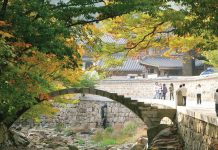
Busan fall foliage forecast 2024 — When & 6+ best places…
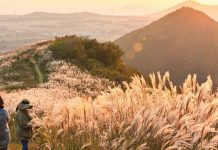
Jeju fall foliage forecast 2024 — The timeframe & 6+ best…
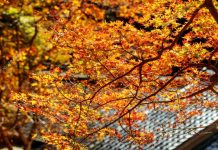
Taiwan fall foliage forecast 2024 — When & 9+ best place…

The complete Seoul subway guide: How to use, lines, fares for…

How much does it cost to travel to Korea? Tips on…

The ultimate guide to NETS FlashPay Card: What is it, how…

How much will it cost to go to Singapore? Tips on…

13 best, most famous & popular bubble tea in Taiwan

Where to eat in Penang? 17 best places to eat &…

Best bubble tea in Taiwan — Top 11 most famous &…

29+ must-try foods in Thailand

11+ best homestays in Kuala Lumpur near famous tourist attractions

Mövenpick Resort Kuredhivaru Maldives reviews. The detailed review of my vacation…

Hyatt Regency Danang Resort and Spa reviews. The resort is highly…

+7 luxury resorts you must stay in Danang, Vietnam

10 must-know things for your best first time European river cruise

Top 3 best luxury cruises in Halong Bay, Vietnam

Cherry blossom festival Korea 2024 — Top 5 cherry blossom festivals…

Ghibli museum blog — The fullest Ghibli museum guide for first-timers

Kyoto festival — Top 10 best events & most famous festivals…

National Palace Museum Taipei blog — What to see in National…

Japanese waterfall — Top 10 most beautiful waterfalls in Japan in…

19+ most beautiful towns in Europe every tourist need to visit…

Georgia travel photos — 20+ captivating photos show Georgia is heaven…

Explore Damnoen Floating Market — The oldest floating market of Thailand

Visiting Fenghuang Ancient Town — One of the most charming ancient…

Mekong Delta travel blog — Beyond rivers of Southwestern Vietnam

14 reasons why you should travel when you are young

Shigaraki Tanuki – An animal symbol of good luck in Japan

Living in the charms of cave houses in Andalucia, Southern Spain

20+ jaw-dropping tiny homes around the world
Tuscany travel blog — the fullest tuscany travel guide for first-timers.
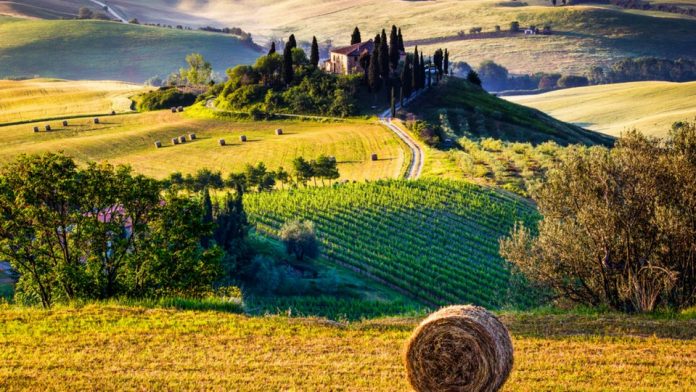
Those who have been to Florence, definitely must have heard of the poetic countrysides of Tuscany (Toscana in Italian), Italy. Cycling around Chianti, enjoying premium wine, or visit the vast countrysides of Siena. But actually, the most beautiful countrysides in Italy are located quite deep below, they are Val d’Orcia and San Quirico d’Orcia which are always covered with a endless green color of meadows, vineyards and beautiful farms on highlands and in valleys. So, what to do and how to plan a perfect budget trip to the dreamland and paradise of Tuscany for the first-time? Let’s check out our Tuscany travel blog (Tuscany blog) with the fullest Tuscany travel guide (Tuscany guide, Tuscany tourist guide) from how to get there, best time to come, where to stay, best places to visit and top things to do to find out the answer!
- Pitigliano Italy day trip — The fullest Pitigliano Tuscany travel guide for first-timers
- Italy travel blog — The fullest Italy travel guide for a budget trip for first-timers
- What to buy in Italy? — 19+ top souvenirs & best things to buy in Italy
- Sardinia travel blog — The fullest Sardinia travel guide for first-timers
- Taiwan itinerary 6 days — The itinerary of a trip to Taipei – Hualien – Kaohsiung for 6 days 5 nights
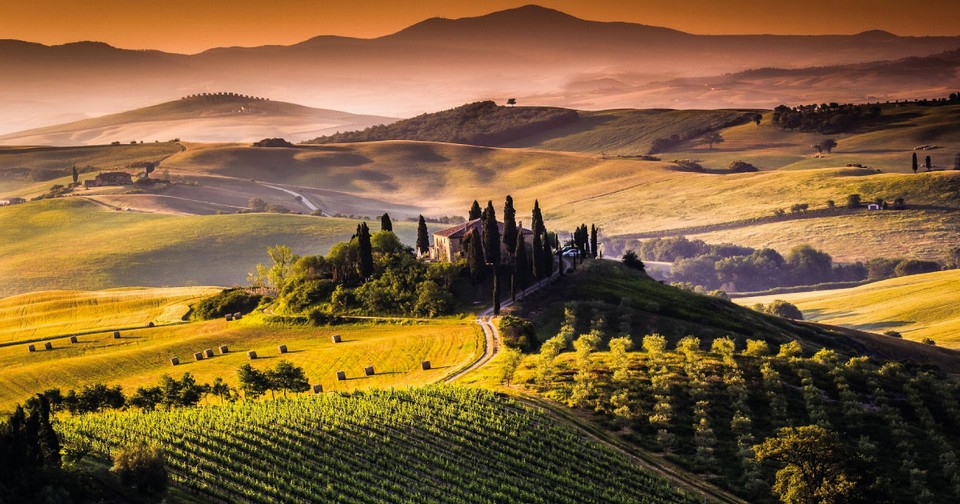
I never intended to go to Tuscany when knowing this is just the central Italian countryside, until I accidentally came to Florence and got lost in the scenes of villages, medieval towns, vineyards, olives groves with wineries, lush green vegetation. Tuscany instantly captivated me so that the first days of summer were surprisingly beautiful.
Tuscany travel blog: Overview of Tuscany
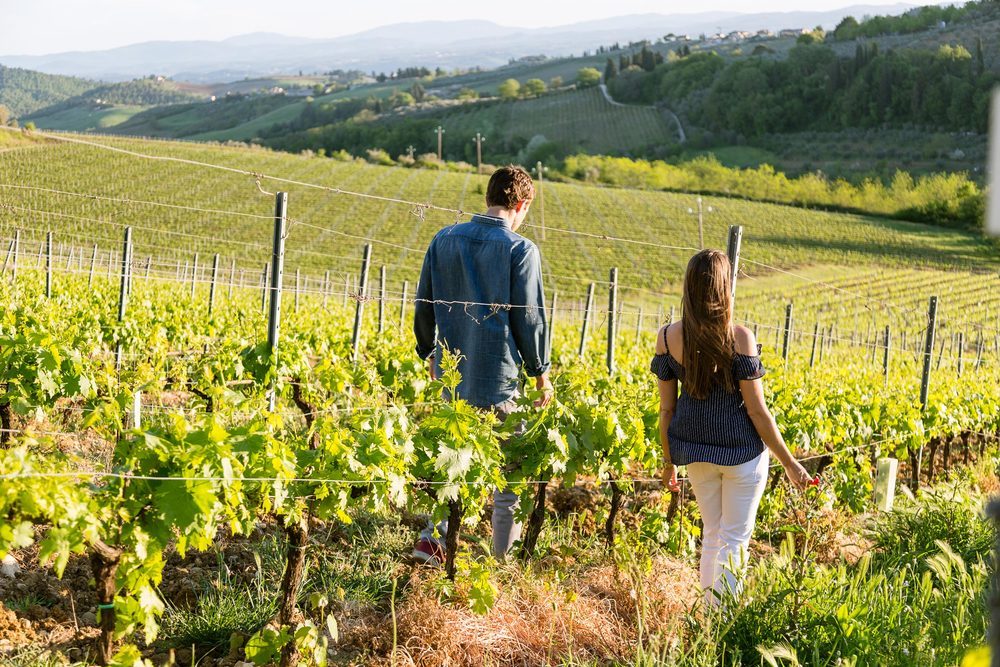
I have known Tuscany since I was a landscape photographer. That’s when I got to see the amazing photos of Val D’Orcia and San Quirico D’Orcia. If the natural beauty of Switzerland with mountains and rivers, then in Tuscany, it is majestic, poetic countryside, immense grasslands. The natural picture here is green in one color, gentle, tranquil and liberal, enough to inspire any lover or dreamer when coming here.
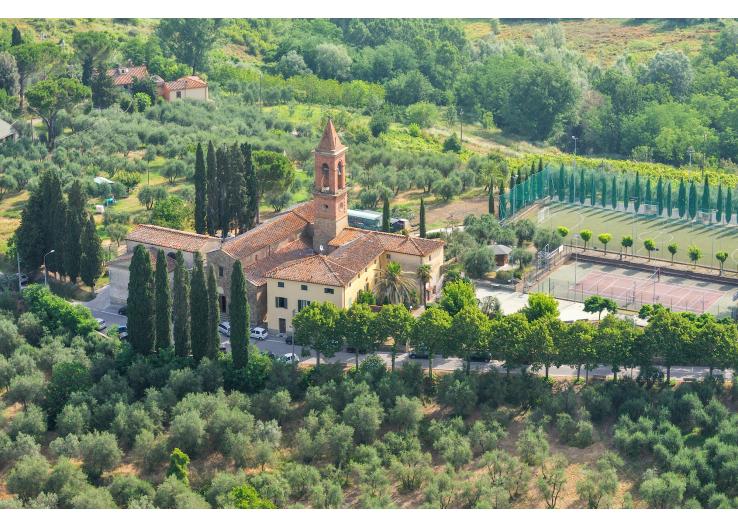
Tuscany blog: When to visit?
There are two beautiful times to consider for a roadtrip in Tuscany, which is from late April to mid-May, and autumn in Europe. In spring, flowers bloom everywhere in Tuscany, which is perfect for visiting the farms or large gardens. If you go in the fall and want to see the vast green prairies, you should go in early August, because at this time, local people will start cutting the grass and harvesting grapes. Then the hills will appear with a dry yellow color and not smooth.
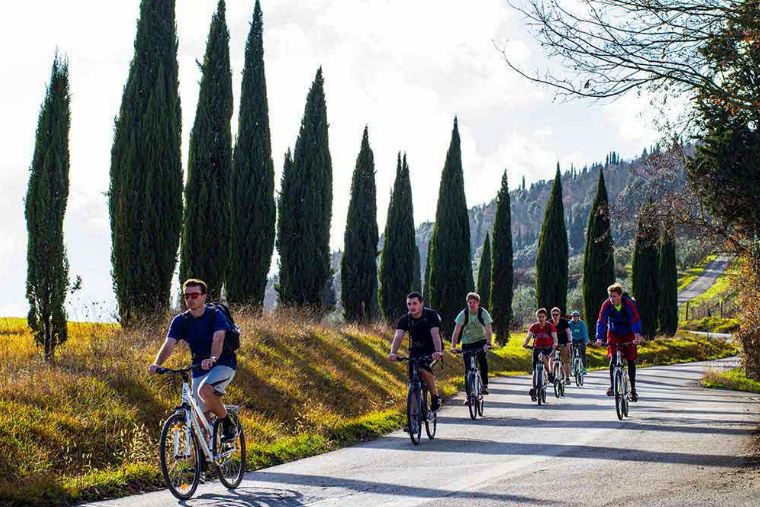
- If you want to see sunflower fields, you must go after June and before September. From early September onwards farmers have already harvested seeds to make oil.
- The most beautiful time with green fields is around June and July. From August onwards, it has started to dry. From September onwards, the scenery have turned to yellow but romantic. However, July and August are the hottest months in Italy. You must bring sunglasses, hat and sunscreen. In the summer, even though it’s really hot, it will get colder in the evening. Especially if you go higher areas.
- In addition to summer, traveling to Tuscany from March to May is also okay, very green. However, it is still cold and there are no flowers at all.
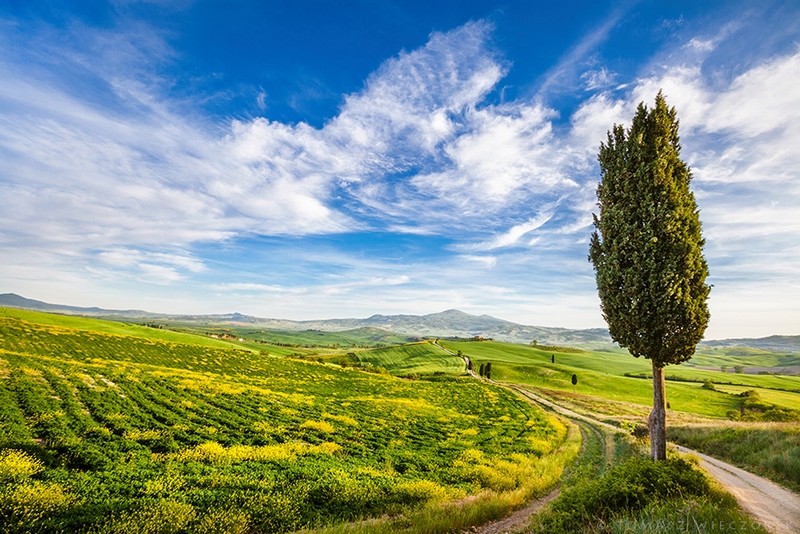
Tuscany travel blog: Where to go, what to do?
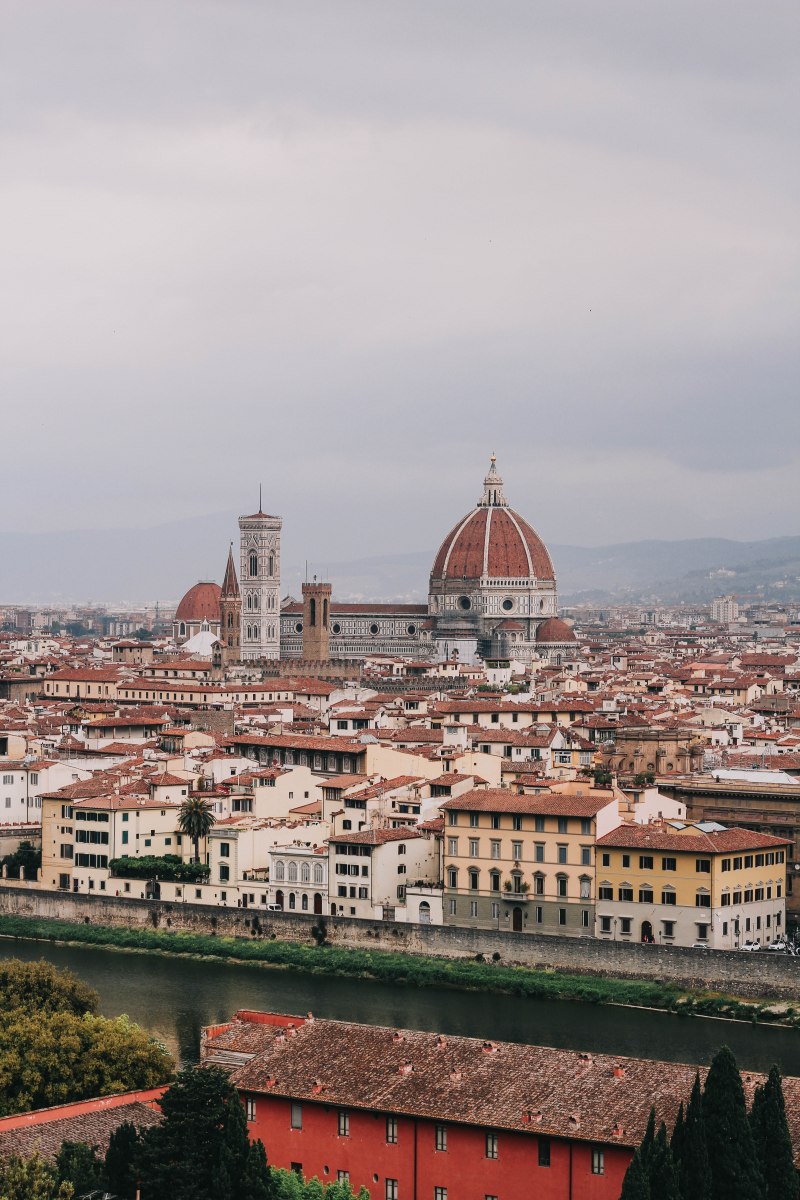
To start exploring Tuscany, Florence is a must-visit destination. The capital of Tuscany in central Italy, Florence owns everything to be voted by many prestigious travel magazines as the most wonderful city in Europe. The whole city is a giant architectural style with pastel colors of walls and terracotta roof tiles of houses, each street corner seems to be a museum with untold stories. Florence deserves many fine words. If you’ve been here, you can’t help but visit the Florence Cathedral Duomo(Cathedral of Santa Maria del Fiore), the legendary Ponte di Vecchio, the Galleria dell’Accademia, and the Piazzale Michelangelo square.
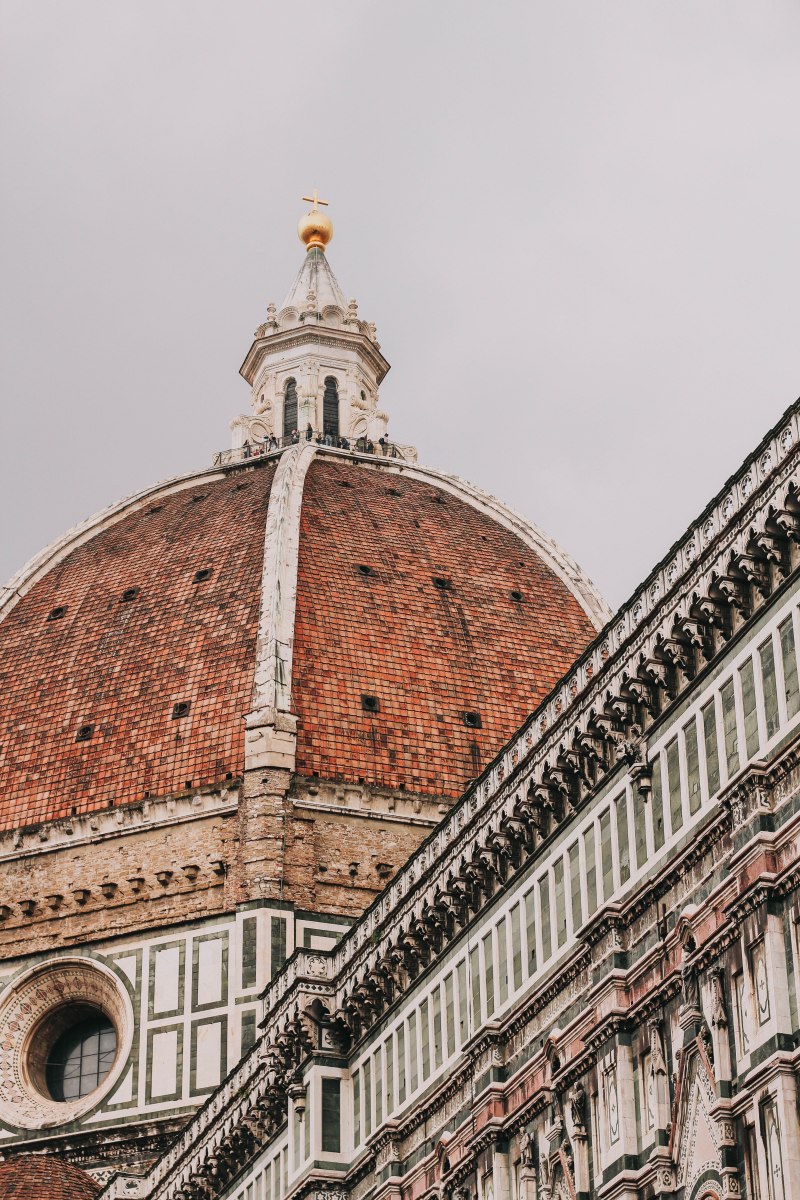
From Florence, you can travel by train to many ancient cities and towns in Tuscany, or just 30 minutes by car, you can visit a nearest olive grove and vineyard. If your time is tight to make an itinerary, as Tuscany’s most developed tourist city, Florence offers you everything with countless day tours to pick and explore all of Tuscany.
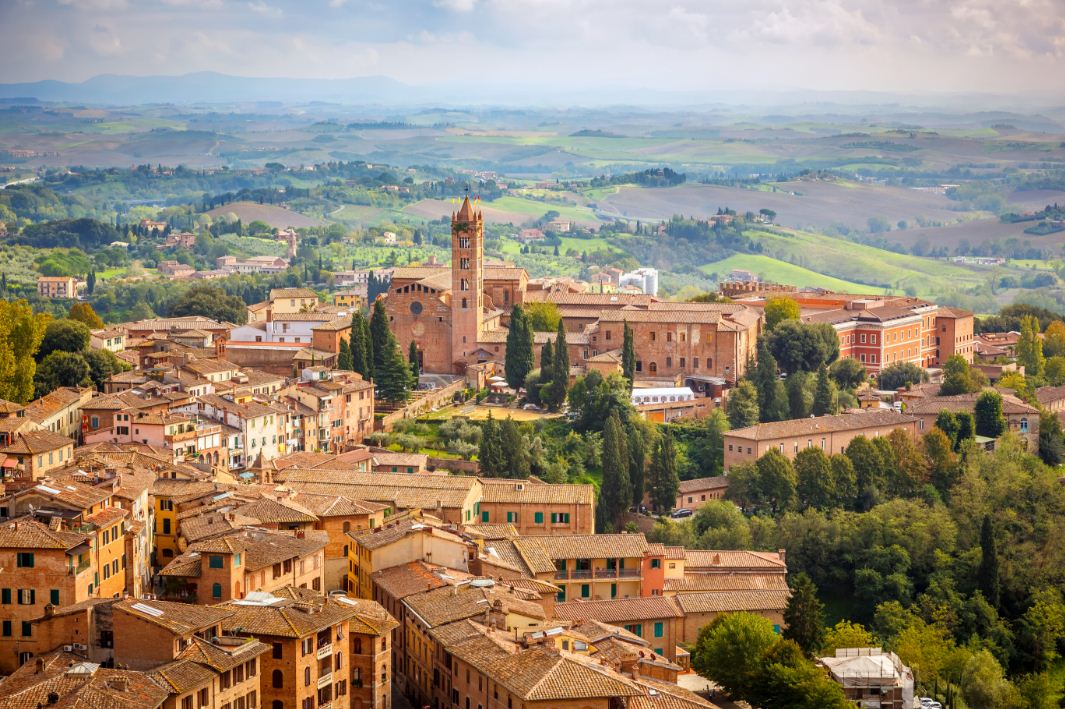
Siena used to be a large city in the Middle Ages, so the architecture of Siena is still keep intact. In the middle of the city is the town hall with the horse racing square, every year the small districts in the city will bring their horses here to race to win glory for themself. If you go to Siena on Saint Catherine’s Day on April 29 every year, or the horse racing day, the districts of the city will hang their own flags. I was lucky enough to come to Siena on the occasion of St. Catherine’s day, so I saw countless flags hanging along streets, alleys, feeling like I was watching Game of Thrones.
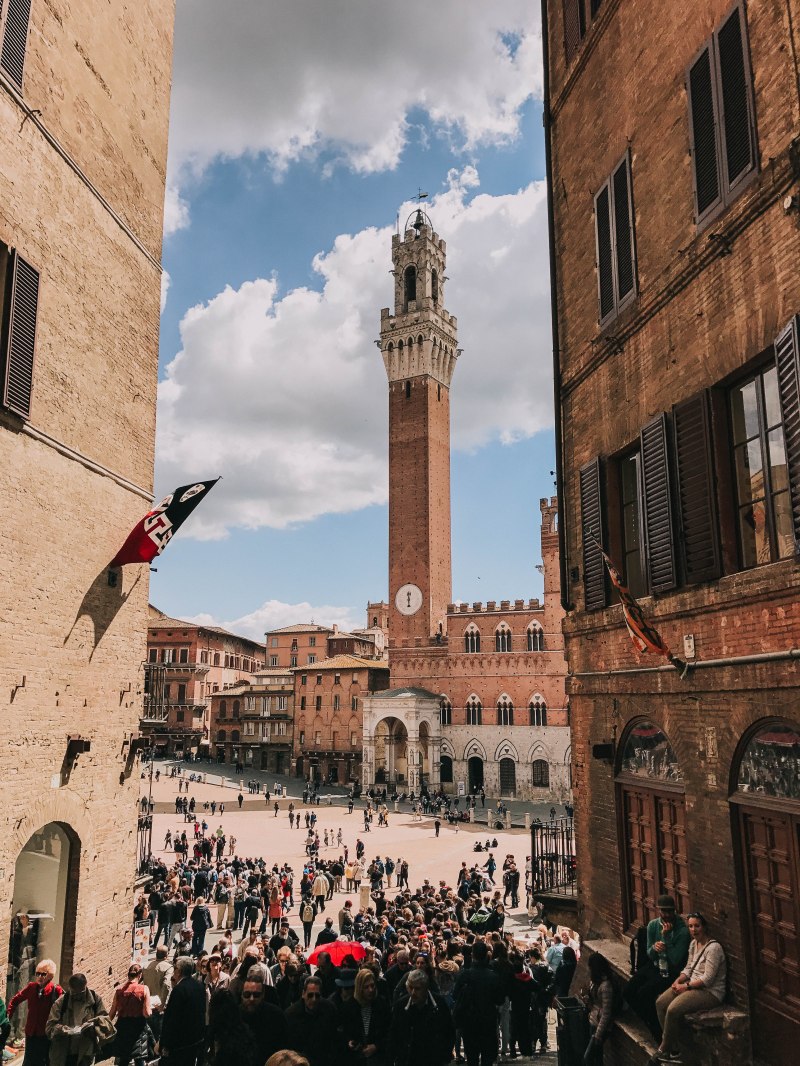
Things to do in Siena include tasting the region’s famous Chianti wine, visiting Piazza di Campo square, Siena’s church which made entirely of marble and don’t forget to go inside the church to explore the Piccolomini library which is built by Pope Pius II. The architecture inside is overwhelming and for me this is the most beautiful church I’ve been visited in Europe.
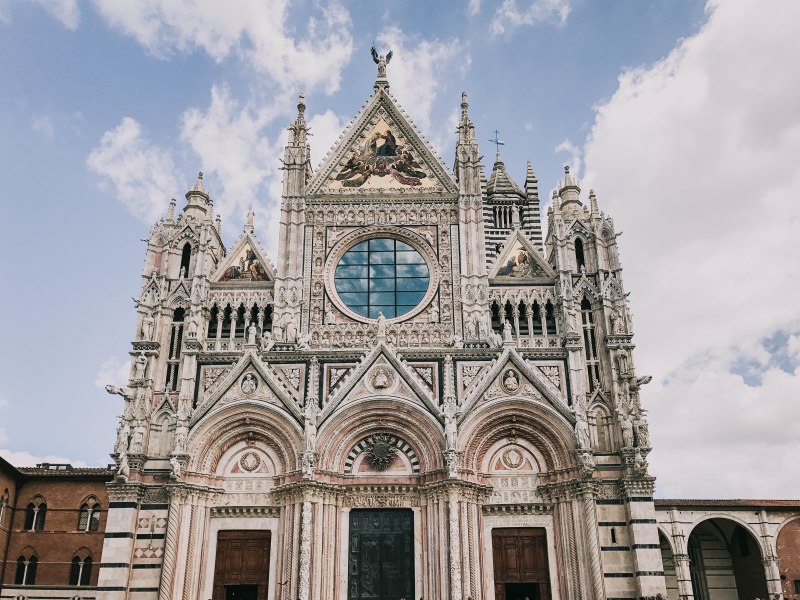
San Gimignano
A medieval town with 14 towering stone towers. In medieval times, San Gimignano was likened to today’s Manhattan in terms of prosperity. San Gimignano is quite small so you can explore in an afternoon. But don’t forget to climb a tower for a panoramic view of Tuscany to the horizon.

To explore Siena & San Gimignano, you can book a tour in Florence, or book a tour through KLOOK , I found that when buying from KLOOK the price is cheaper, so just book it and the service is very good.
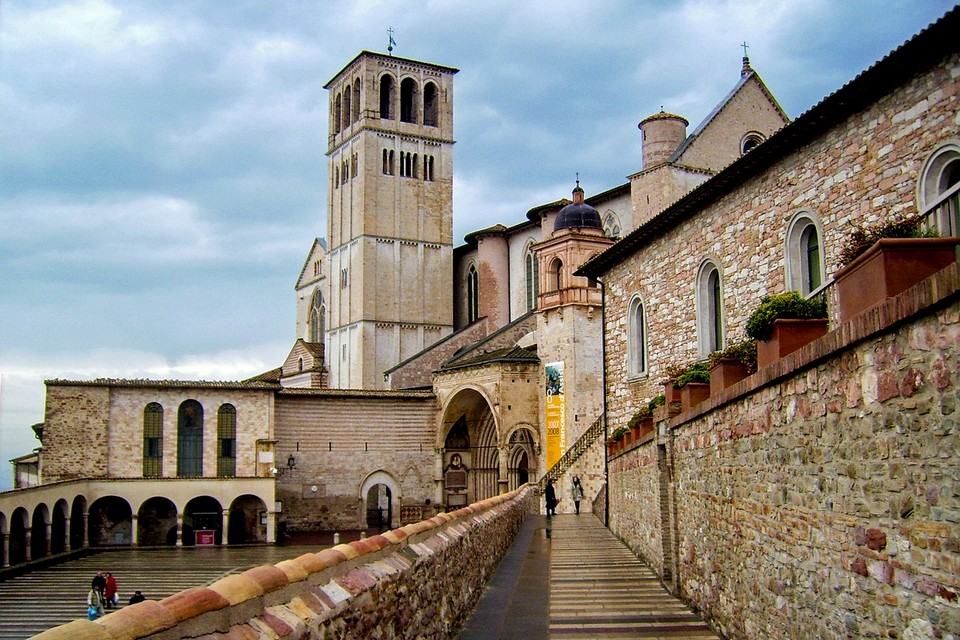
Located in Umbria, Assisi is a beautiful hill town. When hearing about a place that has existed since the Middle Ages, surely many tourists will think of a town forgotten by time, not very developed with narrow winding streets, narrow alleys, houses with stone walls and old painted wooden doors. However, unlike the imagination above, Assisi is one of the largest Christian centers in the world with beautiful churches. In which Basilica of San Francesco d’Assisi (Basilica di San Francesco d’Assisi) is the most famous cathedral in Assisi.

This ancient city is also known as a student city because there are many universities and colleges with many different disciplines. The most prominent is the University of Perugia, built in 1308, the University for Foreigners of Perugia and many other colleges such as the Academy of Fine Arts Pietro Vannucci.
Perugia is also famous as a cultural and artistic center of Italy with many festivals taking place all year round such as EuroChocolate festival, Umbria Jazz Festival, International Journalism Festival, …
Lake Trasimeno
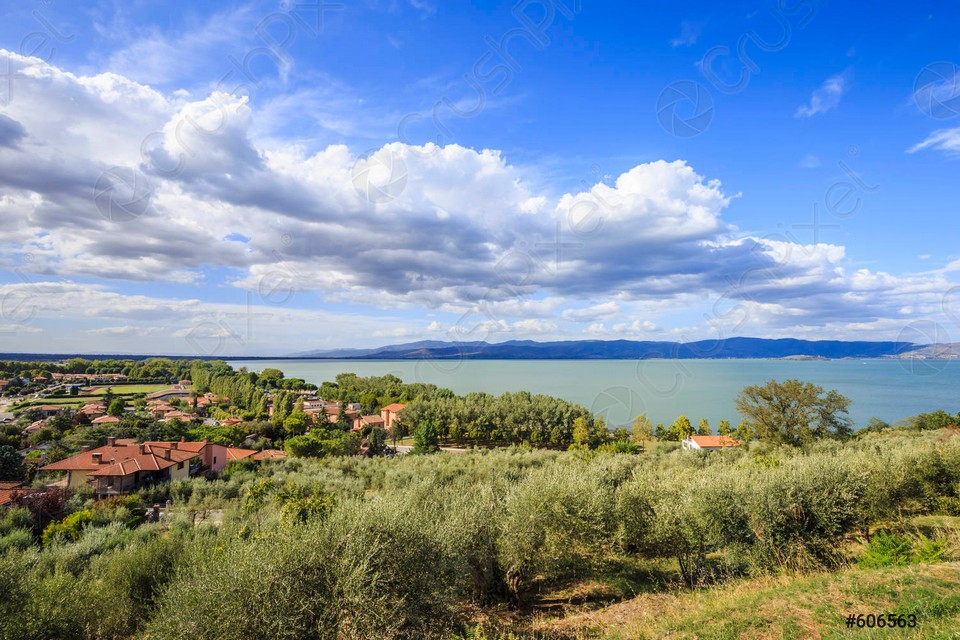
When you come to Trasimeno, you can rent a house on a farm and experience the feeling of waking up in the sunrise of the Italian countryside. Make yourself a cup of hot coffee and make a delicious and light breakfast while enjoying the poetic beauty of Lake Trasimeno.
After that, you’ll have a full day of exploring and boating on the lake. If you go in a large group, you can also organize a picnic with dishes made from fresh ingredients at the farm.
Montepulciano
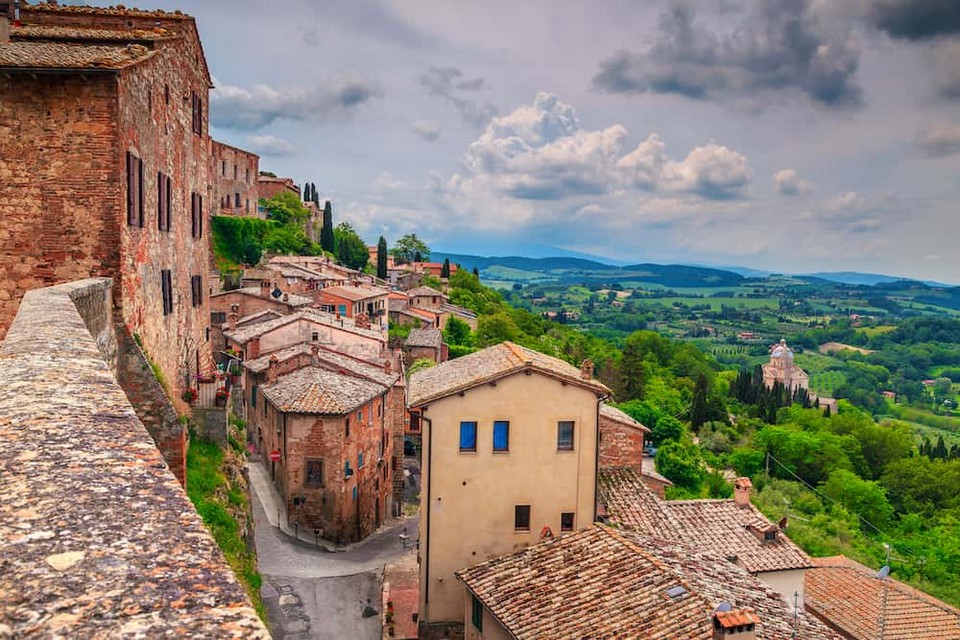
Although Montepulciano is a small town, the scenery here is extremely poetic and beautiful with brilliant sunflower fields. In addition, wine is also a famous specialty here. If you have stopped by Montepulciano, then come and enjoy wine at the bars here.
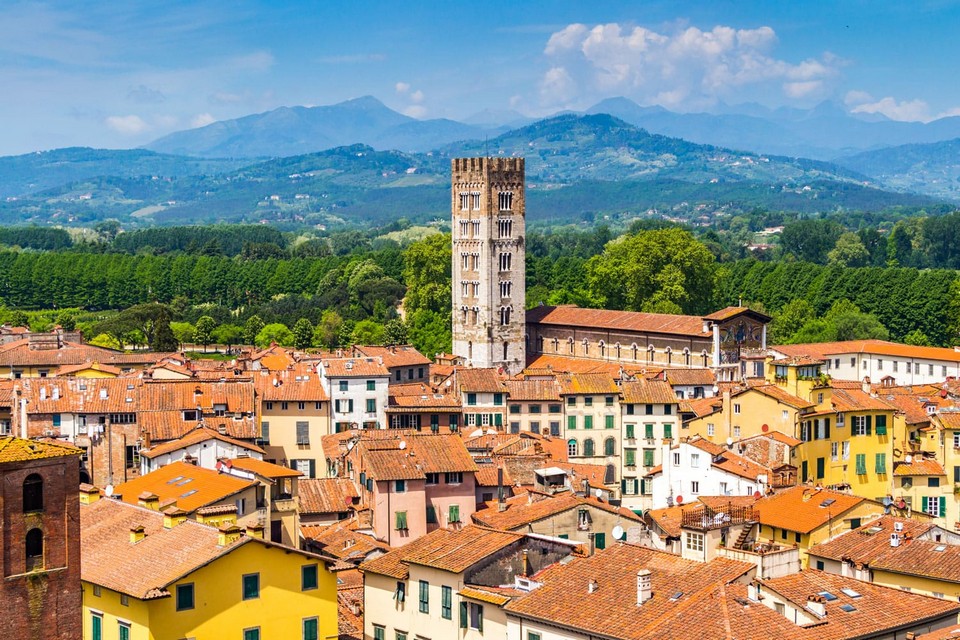
Like the Italian style itself, Lucca has a beauty that blends the modern and the antiquity of the time with fashion boutiques interspersed between immaculate ancient structures.
Lucca is also home to many famous composers such as Giacomo Puccini (with famous works of La Bohème and Madama Butterfly), Nicalao Dorati, Francesco Geminiani, Gioseffo Guami. With such a history, it is not surprising that the annual Lucca Summer festival is one of the most popular musical events in Tuscany.
In addition, Lucca is also the host city for the Lucca Comics & Games Festival, the biggest festival for comics, movies and games in Europe, attracting hundreds of thousands of fans to attend each year.
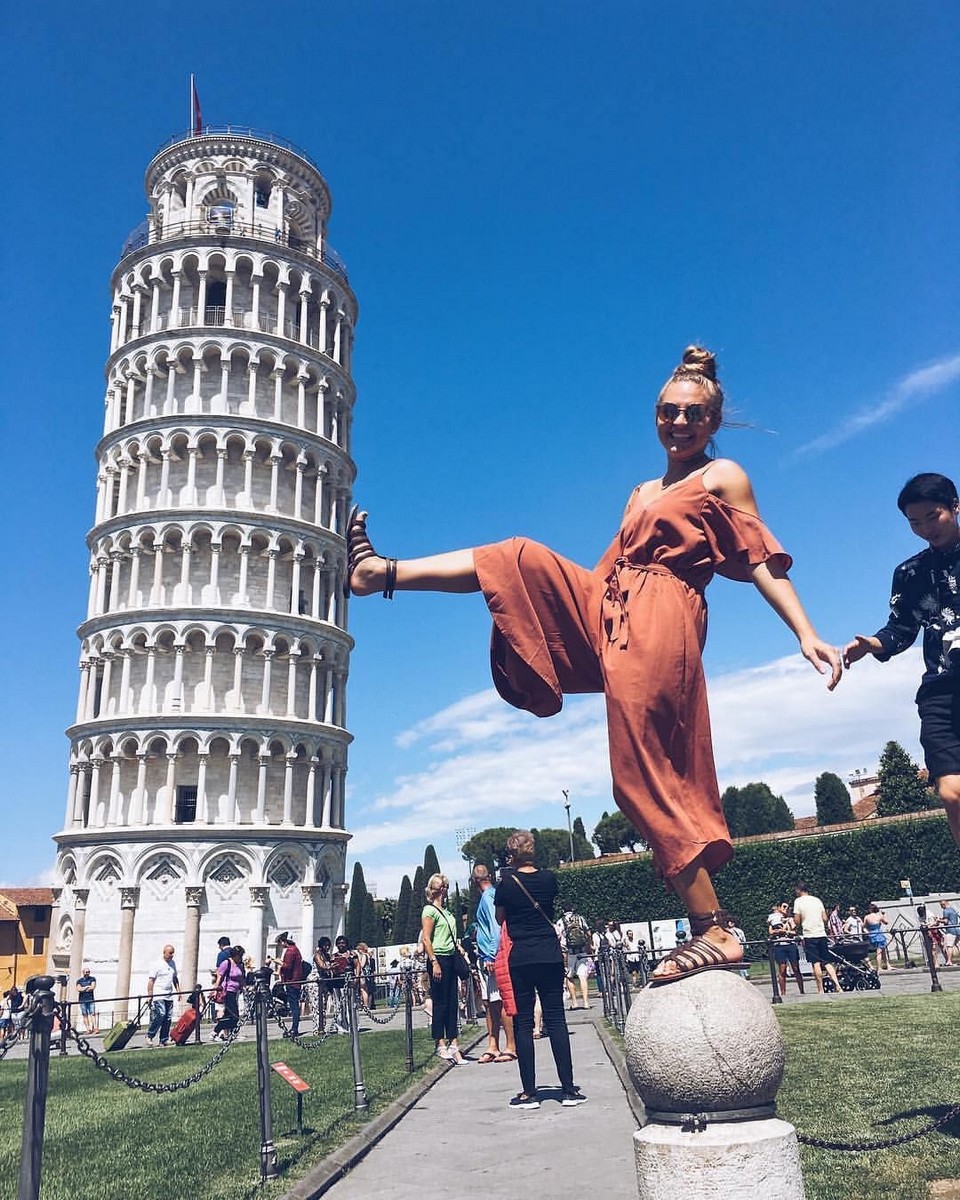
Pisa is a port city in the lower reaches of the Arno River. In Renaissance Period, Pisa was the second richest city after Florence. Today Pisa is a small city but has a unique artistic style and owns a unique architectural symbol in the world: the Leaning Tower of Pisa. From Florence, you take the 50-minutes train to get to Pisa. Then follow the flow of people to the Leaning tower of Pisa to visit.
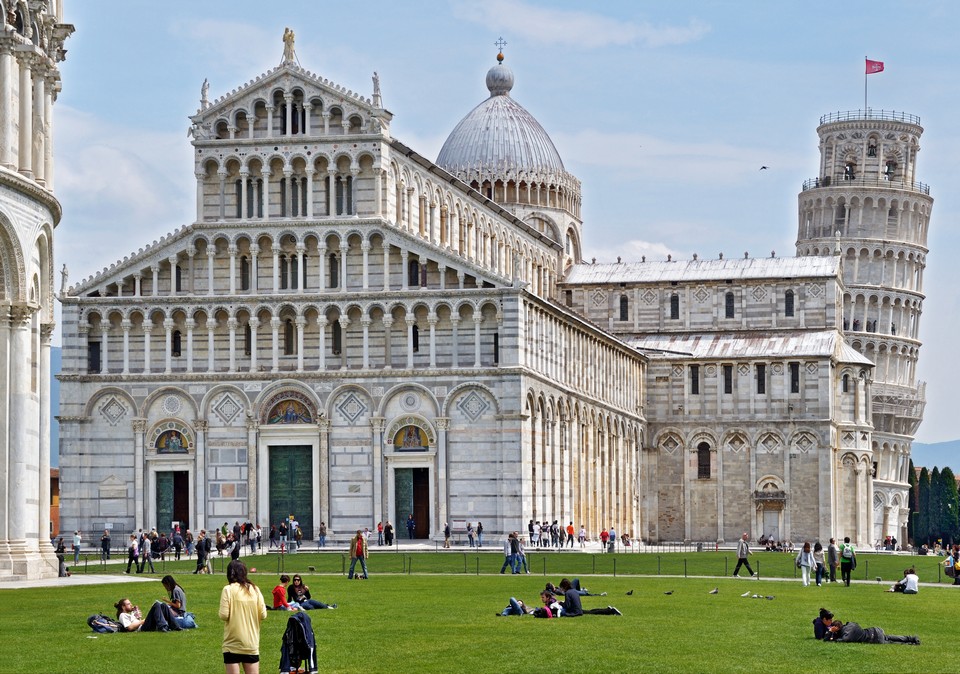
The Leaning Tower of Pisa itself is so famous but it is only part of Pisa’s Central square. Visitors come here mainly just to take hundreds of pictures from the simple to the weird with the Leaning Tower. Personally, I like architecture, so I wandered around to see this small, sparsely populated city to understand more about the most important port city in Tuscany.
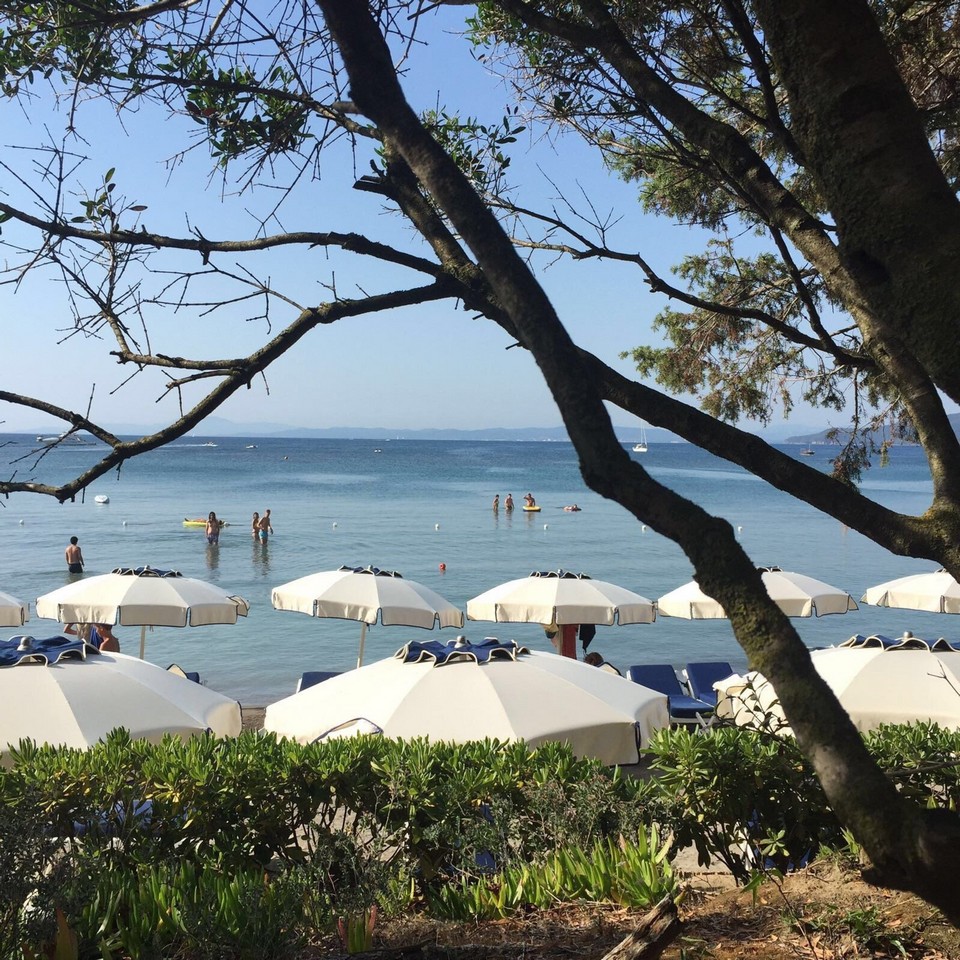
Not all of Tuscany’s hills and vineyards have the stunning coastline below. But Punta Ala is a great stop on the coastal area known as La Maremma.
Island of Elba
Elba Island (Isola d’Elba) is a romantic tourist island, located off the coast of Tirreno Sea, in the famous Tuscany country. Looking at Elba from above, you will have the feeling that the island looks like a small goldfish swimming in the sea.

Portoferraio – the main port town and also the capital of Elba – looks cute and gentle with its small houses painted in soothing pastel colors. The streets here are narrow, on both sides of the roads there are many colorful flower pots swaying in the wind, only the slopes are more pleasant than other central Italian cities such as Perugia, Siena, Assisi or Spoleto.
Enjoy Tuscan wine and olives
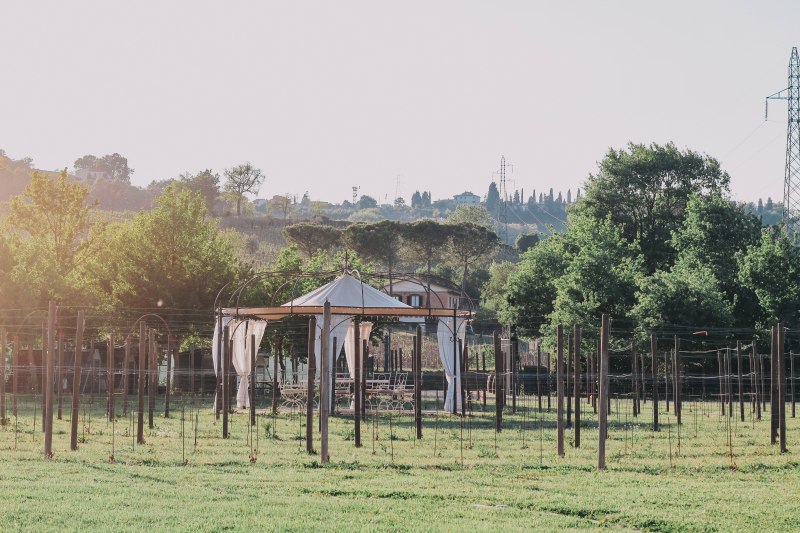
The Tuscan countryside can be seen from car, but to get a real taste of it, visit a winery and sample its fine wines. I stopped by Tenuta Torciano Winery and not only enjoyed more than 7 types of red to white wines but also used delicious vinegar and olive oil. These farms are not open to a single tourist, so you can book a tour in Florence to visit during the day, definitely a true Italian experience. There are two famous and savory Tuscan wines you should try called Sangiovese and Super Tuscan.
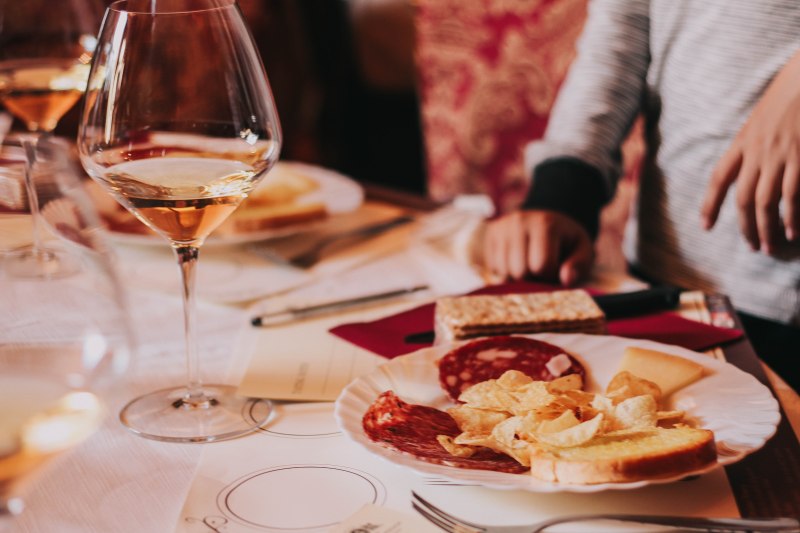
To experience this, you can buy a day tour in Florence, or book online through KLOOK to explore both San Gimignano and Siena.
Buonconvento
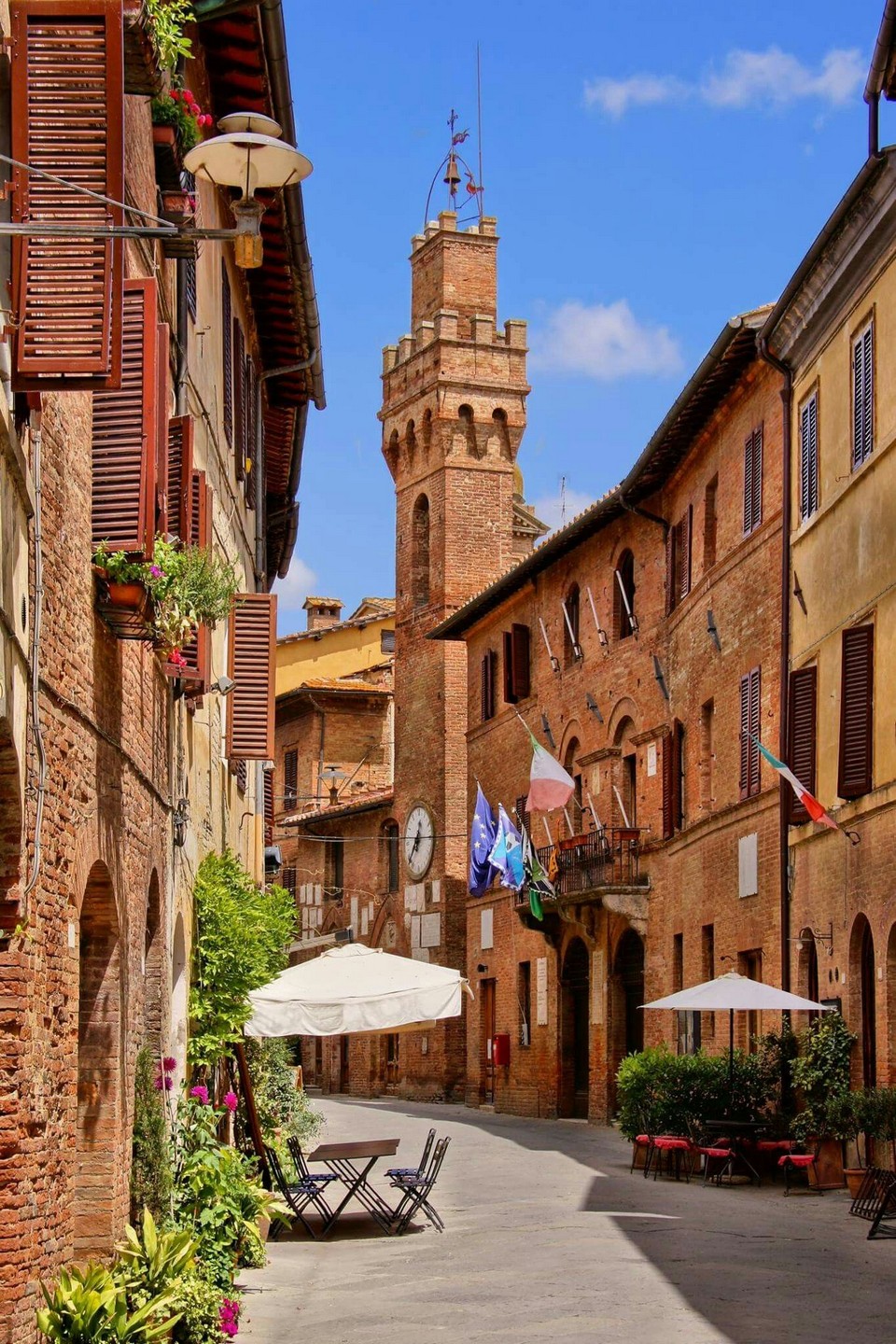
Buonconvento is a small town, just about 2-2.5 hours drive from Florence, this town is extremely peaceful, few people but has a lot of interesting things. It takes about 10 minutes to drive from Silvia’s farm (where I stayed) to the town center. Everything here is as peaceful as countrysides around it.
Another interesting thing not to be missed in this beautiful little town of Buonconvento is the delicious Gelato ice cream that we discovered located right next to Da Mario restaurant. Not only has delicious ice cream, but the salesman is also very cute, giving customers a lot of ice cream, the best Gelato I have ever tasted in Europe, the price is also cheaper than in other regions.
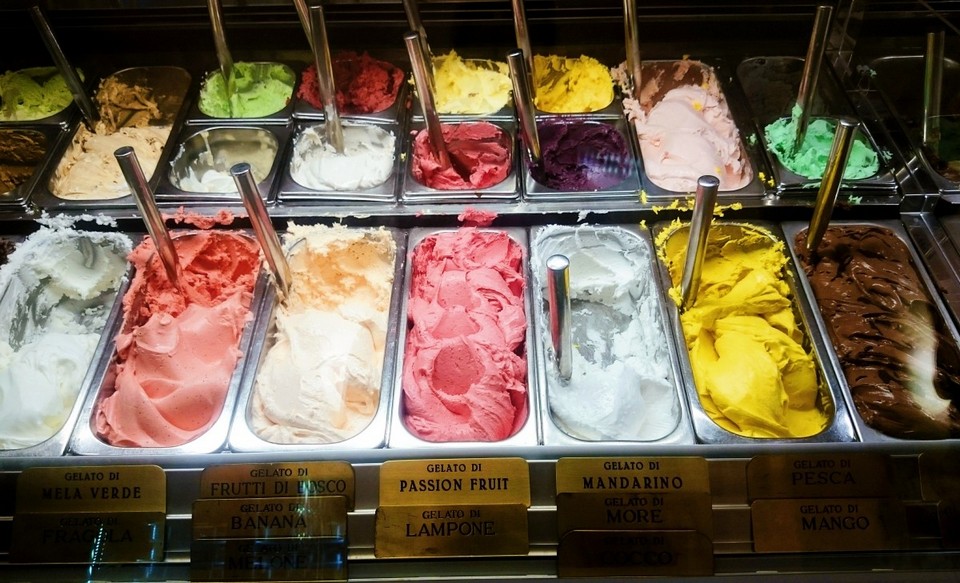
More things to do in Tuscany
In addition to visiting the Tuscany lush green prairies, there are many other places here that you cannot miss. It could be touring the small towns of the region, or going to the vineyards to enjoy fine wines.
Another route that you should refer to when traveling from Siena to Buonconvento is going through Asciano (please see on the map). On this road, the scenery on both sides is also extremely beautiful. The day I went, the grass here was almost cut, so the color could not be as beautiful as in the southern region. Alternatively, on the way from Buonconvento to Asciano, you can visit the Abbazia di Monte Oliveto Maggiore monastery. This is a monastery located on a high mountain with a beautiful view.
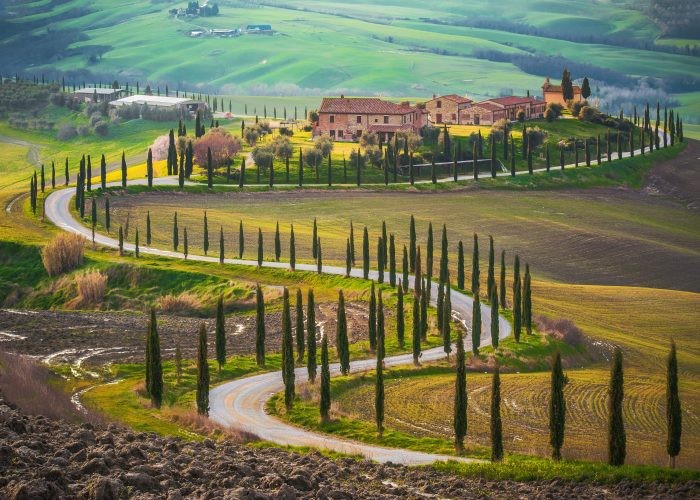
Another very beautiful place that you might consider visiting is La Foce garden located in Val D’Orcia. Entering this garden, you will feel like walking in a large royal garden of a palace, like a mix of Versailles palace and Tuileries Garden. In La Foce, the owner also has villas for rent, but the price will be quite high and require a minimum stay of 2 nights for each booking.
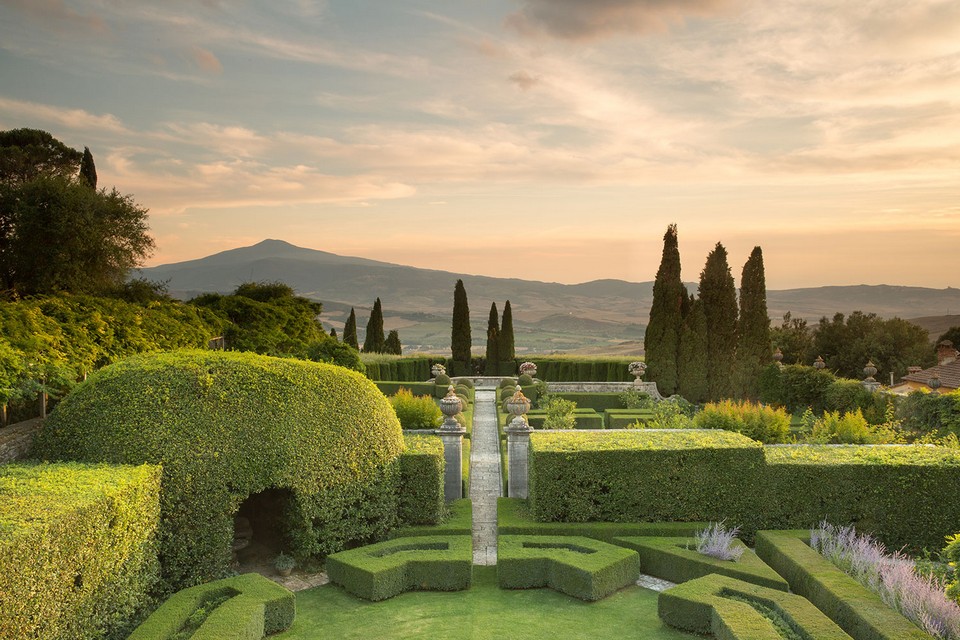
In general, with a travel time of only 2-3 days, it is difficult to fully enjoy the vast Tuscany region. If given the opportunity and conditions, I would love to stay longer than about 1 week. This place is extremely suitable for those who come with family, a fresh air and spacious space for everyone to experience together. Simply rent a large enough SUV, free to explore each road, small villages but hidden full of interesting things in this Tuscany region.
Tuscany travel blog: What and where to eat?
Enjoying pasta, pizza and wine as well as Tuscan cuisine is a fascinating experience you can’t miss! Like Italian cuisine in general, Tuscan cuisine is based on the use of the freshest and simplest ingredients of season including a variety of beans, cheeses, vegetables and fruits. And here are some suggestions for you:

- Crostini Toscani: The word crostini literally means bread, similar to a baguette, served with chopped chicken liver sauce.
- Panzanella (Tuscan-Style Tomato and Bread Salad) is a cold bread salad with the main ingredients including unsalted bread, tomatoes, red onion, basil, olive oil, vinegar, and salt.
- Lardo di Colonnata: This dish is actually pork lard produced in the town of Colonnata.
- Ribollita: Ribollita soup is one of the most popular winter dishes in Tuscany containing different types of cabbage, beans, onions, and carrots.
- Castagnaccio: It is a traditional Tuscan chestnut cake made with chestnut flour, very popular in the Apennine mountain region of Tuscany.
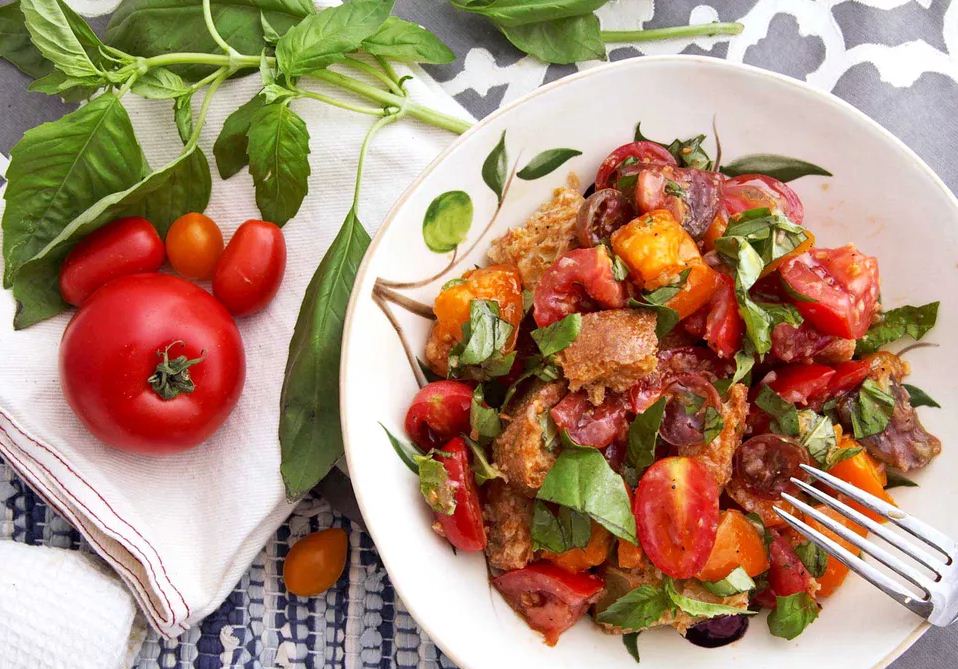
Tuscany blog: Suggested 2-day Tuscany roadtrip and how to get from Florence
As mentioned above, you can take the train to the countryside in Tuscany, but it will be quite inconvenient and take a long time. The most convenient is to rent a car in Florence and then self-drive to the south, through Siena and visit its beautiful countrysides. Rentingg a private car to drive can both be proactive in the schedule while you can go and admire the scenery on the roadside, stop whenever you like.
Details of my 2 day Tuscany itinerary:
Day 1: Took the car from Florence and drove down to Buonconvento, where I booked an overnight stay at a local farm. The itinerary will have to go through Siena so you can choose to go straight on the highway to Buonconvento because my main purpose is to visit Val D’Orcia. If you have time, you may not choose the highway but follow the SR222 road to visit more Panzano or Chianti. Dinner in town and overnight in Buonconvento.
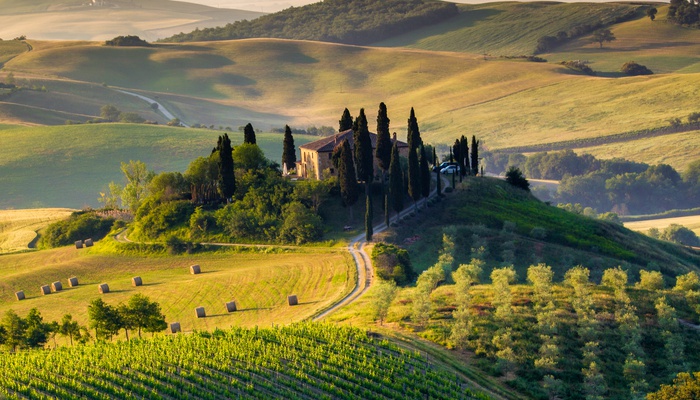
Day 2: Early morning drive to visit two regions Val D’Orcia and San Quirico D’Orcia, which have the most beautiful scenery in Tuscany (in my opinion). Then come back, resting and exploring the farm Podere Salicotto that I chose as a place to stay. On the drive back to Florence I took the route from Buonconvento through Asciano and back to Siena to access the highway to return to Florence.

The route from Florence to Buonconvento has many stops to admire the beautiful scenery on both sides of the road. If your time is tight, you should choose the highway to go for faster, the traveling time for a 150km distance is only about 2.5 hours, the highway is very beautiful and the speed is stable.
After picking up my car from Locauto rental company I started driving out from the center of Florence. The street was not too crowded and easy to go, so you can rest assured, just go according to the law. Follow Google Maps and get out of the city to access the highway. From here running straight to Siena and continue to Buonconvento. One thing to note is that if you want to be fast, you should only take the highway, and you need to pay attention to the road because it is easy to go wrong on roads in town, make the speed will be slow a lot because these roads have many traffic lights, many cars make you cannot go as fast as on the highway.
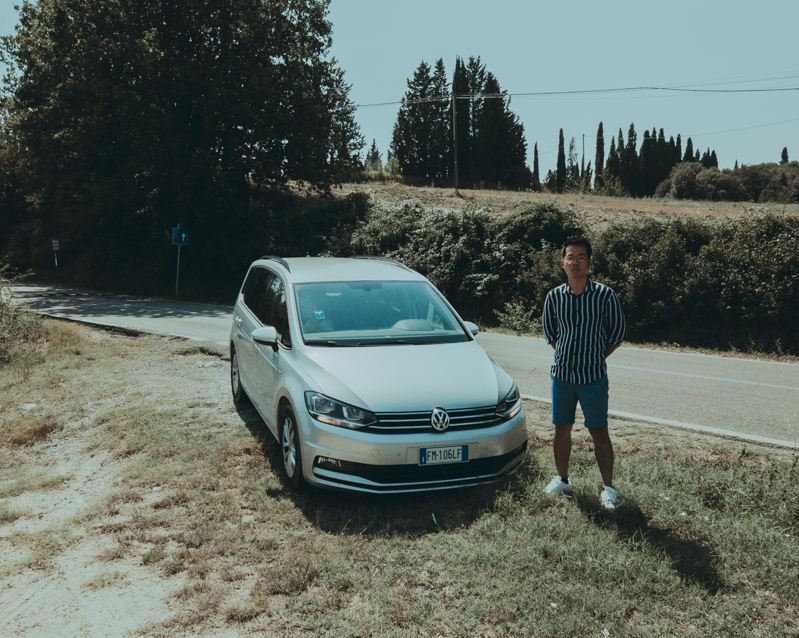
Tuscany blog: Where to stay in Tuscany?
However, coming to Tuscany, you must stay at a beautiful farm in this region.
Along the romantic swath of Tuscany are vast countrysides known for its rolling hills, cypress trees, charming old towns, stone castles and along with numerous private farms. Each farm with hectare area with quite similar architecture. Houses are built of red bricks or can be called separate villas. It took me a whole week to choose for myself the best place to stay, which is Podere Salicotto’s farm.
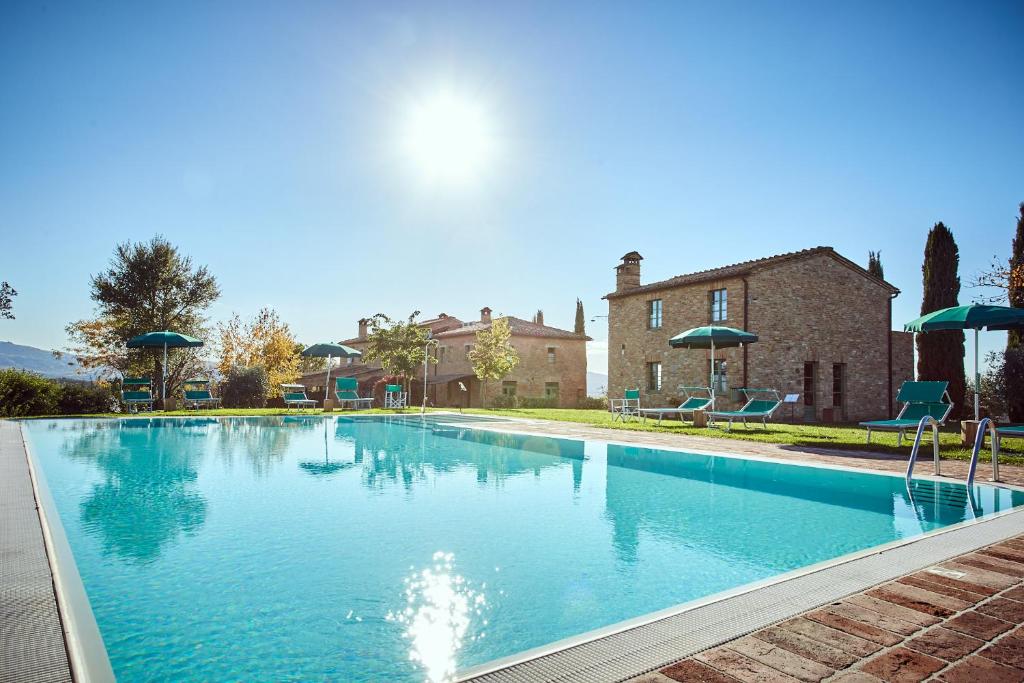
I had a very detailed review of this property here , it’s very wonderful, you can also refer to and book via Agoda.com or Booking.com .
The capital of Tuscany is Florence, so it has the largest number of rooms of all types and vary prices as well as making it easy for you to travel to many cities, towns nearby, choose the right day tours to explore beautiful Tuscany. Plus, if you want to try the local experience, it’s also easier to rent an Airbnb in Florence when you’re sharing a house with a local.
But if you like the feeling of waking up in the countryside, Siena is the better choice because the city is small and located among the vast fields of Tuscany.
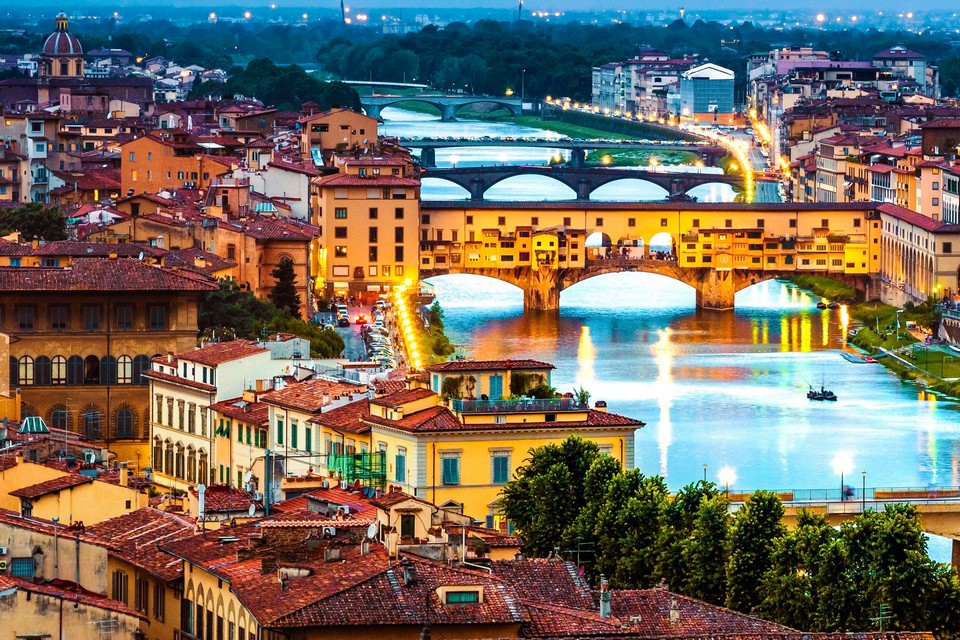
You can find more, check rates, availability & book for hotels in this city on Agoda.com or Booking.com .
Tuscany travel guide: Getting to Tuscany
You should go to Florence first because it offers many choices of hotel rooms and also convenient to travel to its surrounding areas. Florence’s services are also easy to find and relatively inexpensive. Buses can be booked at GoEuro.com and train tickets can be purchased at booths at the central station, choose Treinitali or Italo train.
Take a day tour from Florence
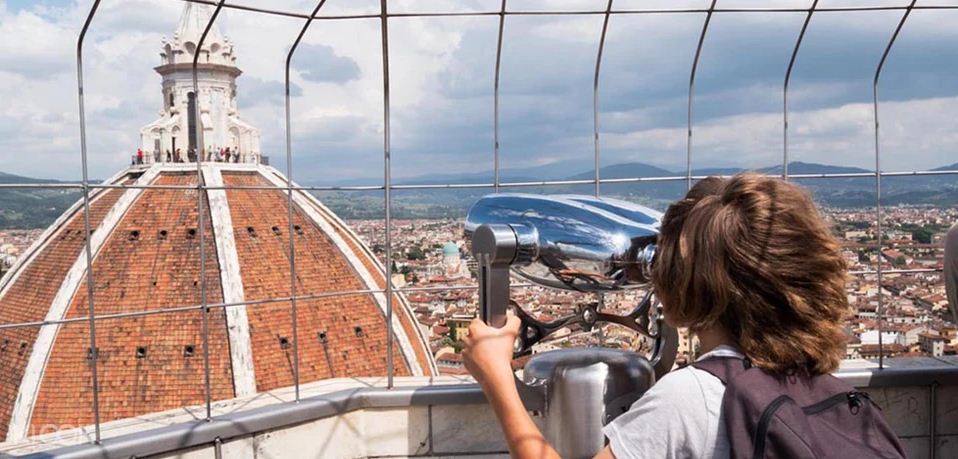
I recommend taking a tour to Siena because the cost is quite cheap but there are many interesting experiences for only 44 euros. In addition, you can book a tour to Cinque Terre to explore the equally wonderful Liguria region.
Tuscany blog: What to buy as a gift in Tuscany?
Florence is very famous for its leather goods, you just go to the ancient bridge, there are many leather goods shop with hundreds of years old to buy. In addition, Chianti red wine is also a popular choice.
Souvenirs such as statue of David or the leaning tower of Pisa are also things that tourists often buy as gifts.
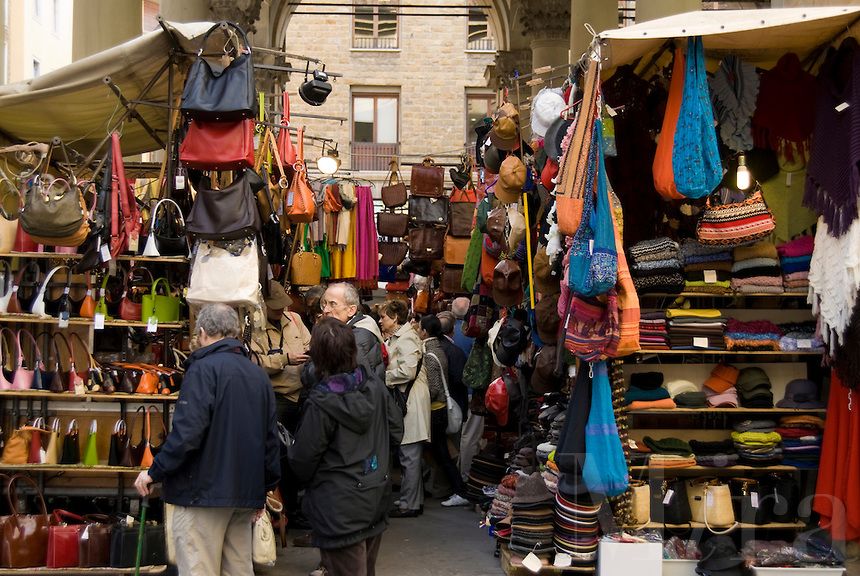
Some best day tours, trips, activities and transfer services, tickets in, from and to Florence you can refer to
- Duomo Monumental Complex Direct Access Ticket in Florence with Guided Visit
- Florence Duomo, Baptistery, and Museum Tour
- Small Guided Tour with Fast Track Entry to Duomo and the Secret Terraces
- Florence Duomo Skip-the-Line Tour with Balcony & Dome Access
- Uffizi Gallery Guided Tour with Fast Track Entry
- Accademia Gallery Skip-the-Line Ticket in Florence
- Val d’Orcia Tour from Florence
- Pisa Half Day Tour from Florence
- Florence Bike Tour with Food Tasting Experience
- Florence City Sightseeing Hop-On Hop-Off Tour (Open Top) and Leonardo da Vinci Museum Skip-the-Line Ticket
- Tuscany Day Tour with Lunch and Wine Tasting from Florence
- Rome to Florence Day Tour
- Chianti Afternoon Tour from Florence
- Excursion to Pisa through the Tuscan Countryside from Florence
- Florence Dome Tour with Skip-the-Line Ticket + Free Souvenir Old Polaroid Photo
- Florence Accademia Gallery Skip-the-Line Ticket with Tour
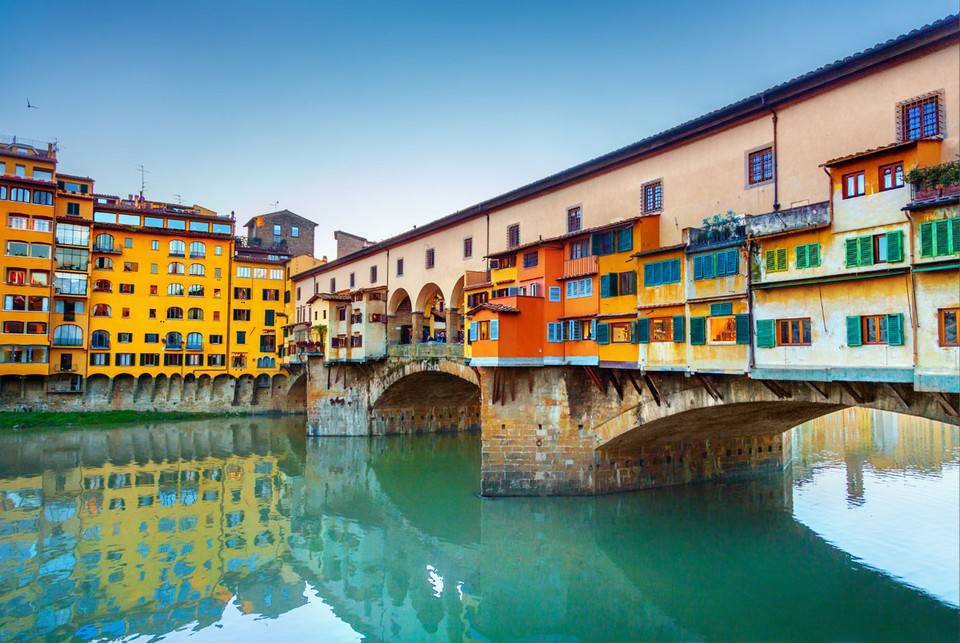
Are you looking for more top things to do in Florence: Tours, activities, attractions and other things? Let’s check it out here . And Italy travel guide here .
Related articles
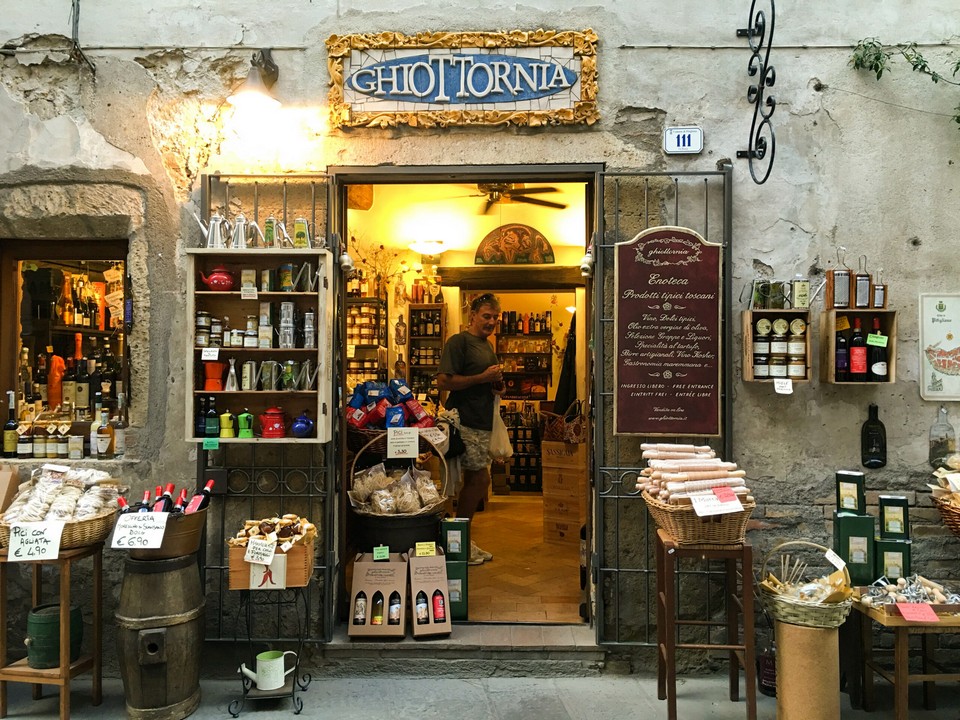
RELATED ARTICLES MORE FROM AUTHOR
Seoul autumn foliage 2024 forecast — the timeframe & 13+ best places to see autumn leaves in seoul, busan fall foliage forecast 2024 — when & 6+ best places to visit in busan during autumn, jeju fall foliage forecast 2024 — the timeframe & 6+ best places to visit & top things to do in jeju autumn foliage season, taiwan fall foliage forecast 2024 — when & 9+ best place to see autumn leaves in taiwan.
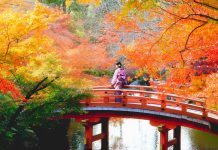
Japan fall foliage forecast 2024 — The timeframe & 41+ places to visit in Japan during autumn
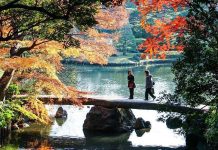
Tokyo fall foliage forecast 2024 — When & 13+ best place to see autumn leaves in Tokyo
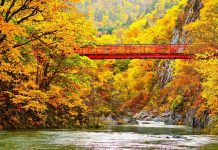
Hokkaido autumn travel blog — 15+ top things to do & best places to visit in Hokkaido during autumn
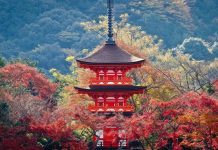
Kyoto fall foliage forecast 2024 — The timeframe & 15+ best place to see autumn leaves in Kyoto
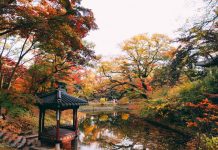
Korea fall foliage forecast 2024 — The timeframe & 16+ best place to see autumn leaves in Korea
Editor picks.

Seoul autumn foliage 2024 forecast — The timeframe & 13+ best...

Busan fall foliage forecast 2024 — When & 6+ best places...

Jeju fall foliage forecast 2024 — The timeframe & 6+ best...
Popular posts.

What to buy in USA? — 17+ must buy in USA...

What to buy in Korea? — Top +23 cheap, famous &...

Must buy souvenir in Taiwan — Top 17+ most famous, cheap...
Popular category.
- Inspiration + Guide 1529
- Trip Inspiration 468
- Food + Drink 223
- Thailand 217
- Coasts + Islands 202
- South Korea 179
- Vietnam 172
- Travel Photos 144
- Work for Us
- Terms & Conditions
- Privacy Policy

Our Eight Best Tuscany Travel Tips
Categories Destination Tips , Destinations , Italy , Italy , On a shoestring , Travel Tips
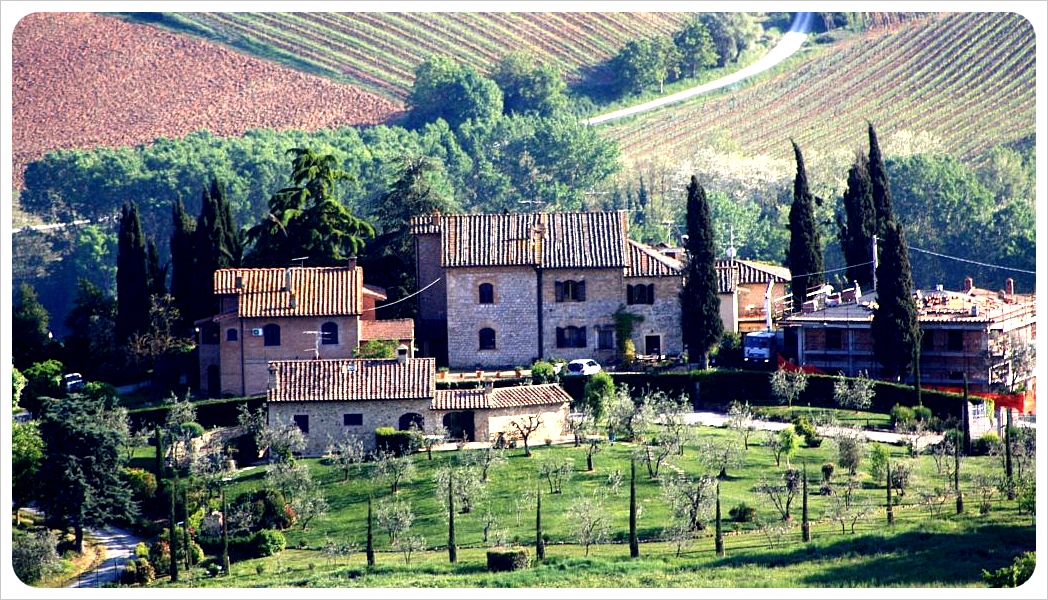
Last Updated on May 15, 2023
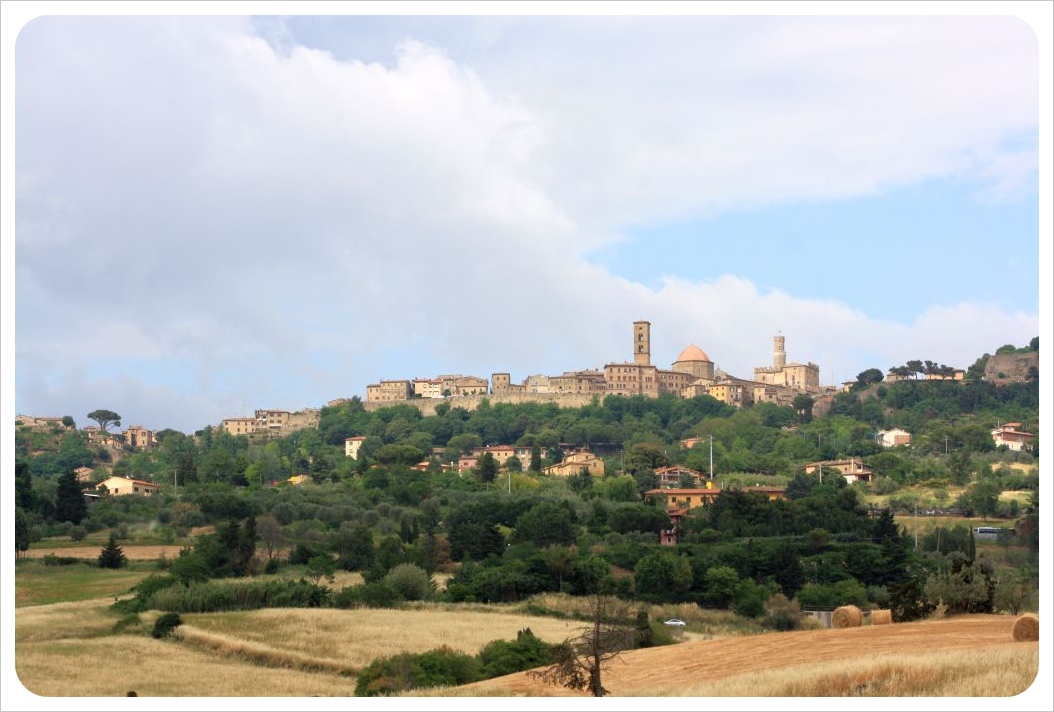
Table of Contents
The Eight Best Tuscany Travel Tips
1. fly into cheaper european hubs.
If you travel to Tuscany from the U.S. or from Northern Europe, avoid the temptation to fly right in to Florence. Airlines do not run as many deals to Florence airports as they do to major traffic hubs like Rome’s Fiumicino Airport, three hours form Florence or Milan’s airports which can be reached in under four hours. Car rentals are considerably cheaper from outlets in major Italian cities than in Florence as well.
You might even consider looking into flights further afield by flying into airport hubs in neighboring countries and then hopping over to Florence, or better still, Pisa with one of Europe’s great no frills airlines. Check flights with Ryanair , Easyjet or Euro Wings .
2. Team up!

3. What about public transportation?
There is plenty of public transportation, and certainly an option, but renting a car affords you the freedom to tour through the various Tuscan villages at your leisure and is easier for day trips. If you can share costs as we recommend above, even bette Since prices at the big car rental companies like Hertz, Budget or Avis looked too high, I checked out different car hire comparison sites. In the end, I booked through Carrentals.com . This is the way we found the best rental car deal through a site we had never used before, Argusrentals.com, for a low-priced Avis rental car.
Public transport definitely has its own set of advantages, however, the first being the cost. Public transport is cheaper than renting a car, and a good majority of Tuscan cities and towns are connected by trains and buses, which leave regularly from main stations and cost only a few Euros for short distances. If you are a solo traveler, or making mostly one way trips through the region, train travel is definitely the cheaper option. If you don’t want to take the train, no worries: there are plenty of organized tours available in Tuscany, for example:
Train travel is very cheap in Italy, if you book in advance online. Book your tickets through the Omio website which has a user-friendly English-language booking system and compares train prices for you. The other option is to buy your ticket at one of the easy ticket machines in the train station, which also have an English speaking menu and discounted tickets for purchases made 2-3 days in advance. Trains from Pisa to Lucca cost €4, from Pisa to Florence €8.90, and from Florence to Poggibonsi (for San Gimignano) are €8.50.

4. Rent a villa – seriously.
Far from a bling budget-breaker reserved for rappers or movie stars, renting a villa in Tuscany is simply a smart travel choice. Hostels in Italy are expensive, and even a bed in a dorm room will cost €20 – €30 per night. If you are traveling in a group, booking a villa or holiday apartment will work out cheaper every time. Whether you rent a villa or a holiday apartment – your group will have a private, economical stay for as little as €15 per person per night in the low season. In the high season, visitors to Tuscany will have to be ready to shell out more cash, but if you book a villa far enough in advance, you will still pay less than in hotels or even hostels unless you are traveling entirely alone.
Tip: In addition to Airbnb, check out lesser known vacation rental websites, such as Plumguide . You may find a better deal there.

5. Stay away in the summer

6. Drink wine!
That’s right. You can drink bucket-loads of the best Italian wines like Chianti, Montepulciano and Pinot Grigio. These wines are produced locally and are ridiculously affordable, available in stores for between €2-€5 per bottle. So pack your corkscrew and get ready to enjoy inexpensive wines at the beach, on a picnic, or in your villa. Even when eating in a restaurant, a half bottle of house wine costs as little as €2.50, while a full bottle, at up to €6, costs the same as two glasses of beer – so why not!
A great Tuscany travel tip for wine lovers: If you have a car, stop at the wineries around Tuscany, where you can fill up your own containers for €0.50 to €0.75 per liter – larger than the average bottle of wine! For olive oil fans, the same cheap fill-ups can be found in olive orchards throughout Tuscany as well.

7. Cook your meals
Much of the tourism in Tuscany is food-related, and with a bit of hunting you can eat on the cheap, but if you’ve got a kitchen where you are staying, cooking will save you cash. Stop in at the market and pick up great pasta, sauce and fresh Italian bread (and a lot of that wine we mentioned) and whip up a homemade meal for the whole group for under €10.
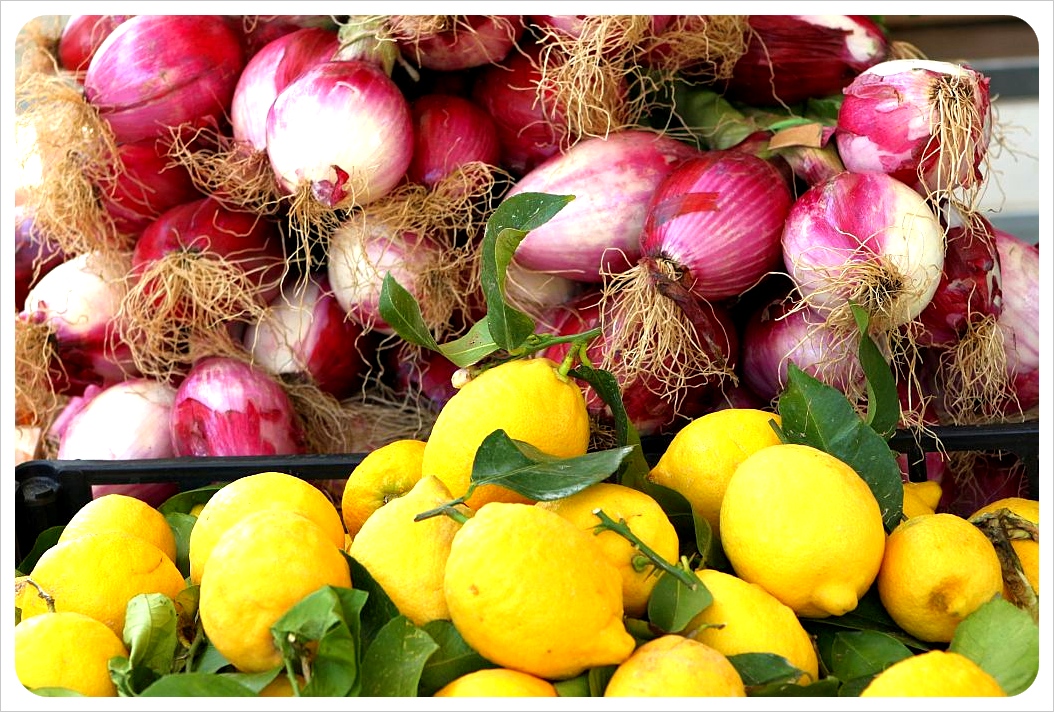
8. Find where the locals eat in Tuscany
This advice goes for travel anywhere, but especially in Italy. We had been packing in pizza nearly everyday and had no complaints, regardless where we picked it up. However, when we were exploring Siena, we walked past a hole-in-the-wall with no sign and a line of at least twenty locals – school children in uniform and office workers on their lunch breaks. We snuck in line and picked up two giant slices of the best pizza ever and a drink for $3.50. The same goes for gelato. If you develop a gelato vice like we did, you’ll want to find deals, as it can be a pricey addiction. A cone of gelato near the famous Ponte Vecchio in Florence runs at €3.20, but just a few streets further west, the same portion of creamy gelato goodness costs less than €2 for the same size portion.

9. Drink Espresso, preferably standing up
Known for its coffee culture, Italy has over 110,000 espresso bars and Italians drink over 70 million espressos each year. So immerse yourself in true Italian culture by ordering an espresso, which normally costs €0.55 and is never more than €0.90. You pay the same price for a ‘Macchiato’, an espresso topped with foamed milk, while a cappuccino is usually between €0.90 and €1.10. When you travel to Tuscany, you’ll notice that many espresso bars charge less when you drink your coffee standing at the bar, like the locals do, so forgo table service while you recharge your caffeine levels.
10. Take your time on the road in Tuscany
Unless you are in a major hurry, smart travelers to Tuscany should avoid the Italian highways, called ‘autostradas’. The roads are incredibly well-maintained and efficient, but that comes at a premium. Highway tolls can add up quickly. The one-hour ride between Florence and Lucca costs more than €7, and the four hour trip between Lucca and Milan up to €25 one way! The country roads, on the other hand, are free of charge and many run roughly parallel to the highways. When the roads do twist and turn, you’ll get the chance to pass through lesser known Tuscan villages, and you can stop wherever you want rather than speeding past on the highway.
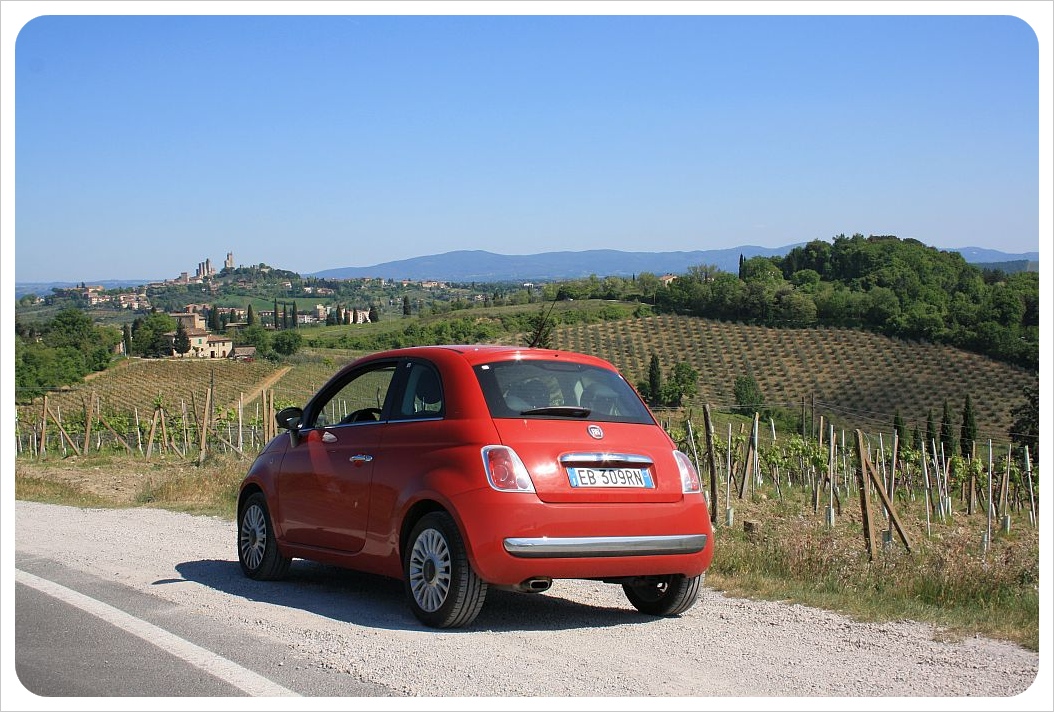
Related posts:

By using this form you agree with the storage and handling of your data by this website. *
Thursday 31st of December 2015
Hi Dani. I plan to travel to Italy alone I am a women.. is it safe for me to do that. I don't have anyone at the moment who wants to go with me. Coming from South-Africa
Tuesday 5th of January 2016
Hi Esmeralda, yes it's very safe! You might get cat calls from some men... the Italians are very fond of women ;-) I was reminded of that on a recent trip to Venice. But they would never harass you. Just beware of pickpockets in larger cities like Florence and Rome. Enjoy Italy!
Saturday 17th of August 2013
Hello ladies! Love your blog! What an awesome adventure you are living. :)
I am planning a girls trip to Tuscany for this fall. Do you have any recommendations for sites to find a good B&B? I've heard that you can stay in farm houses. That would be very cool.
Thanks for any advice you can provide. :)
Friday 23rd of August 2013
Hi Kristy, great to hear from you. Tuscany - yes! Can we come? ;-) We usually use Booking.com for good deal on B&Bs - you can filter and have them just show you B&Bs for the destination of your choice. Hostelbookers.com also has B&Bs in their listings, not only hostels (you can also filter your search by accommodation category and pick 'guesthouse') BedandBreakfast.com is probably the best-known site for B&Bs, we used it a few times in England and I think they also have lots of properties in Italy. You might also want to try Agriturismo.it, a site for all the agriturismos (vacationing in farm house resorts) - there are some quite good deals for them in the off-season and they are usually in fantastic countryside locations (considering you have a rental car), and since you mention you'd like to stay in farm houses, that might be the right site for you :) Enjoy your trip to Italy!
Wednesday 27th of March 2013
Love your tips! I've ever been told that as budget traveller, think and act most like locals. Stay with locals, eat like locals, use transportation like locals. Thanks for sharing!
Regards. http://www.jakpost.travel/
Tuesday 2nd of October 2012
Hi! I am planning to celebrate my 50th birthday, this time next year, by traveling on a shoestring to Rome and Tuscany. It will be my first trip to Italy and I am highly inclined to do it as a solo adventure. I'd be grateful for any tips, especially regarding lodging.
Wednesday 3rd of October 2012
Hi Denise, thanks a lot for getting in touch! Well, these tips here in this post are good start for Tuscany, and for the cheapest options for lodging we recommend looking into B&Bs. There are some really cute Bed & Breakfasts in all of the pretty Tuscan towns which are usually much cheaper than hotels. We also use websites like Bookingbuddy.com to find cheap hotels - the site basically compares all the major hotel booking websites for you and finds the best deals for your dates - and most hotels always run promotions on Expedia, Booking.com, etc, which they don't offer on their own website. If you are planning to see Italy on public transport, we recommend booking tickets directly on http://www.trenitalia.com/ (they have an English site) and in advance - it'll save you a lot of money. If you plan to rent a car (which makes traveling around Tuscany MUCH easier) we usually also use BookingBuddy for car rentals and let them compare all the different providers, but last time we were in Italy we found ArgusCarHire.com to have the cheapest offers. I hope this helps a bit and please feel free to get in touch again if you have more questions - enjoy your big Italy adventure next year!
Sally Stretton
Saturday 1st of September 2012
I would love to visit Tuscany one day. I appreciate the advice about which airports offer the cheapest flights. I think I am going to try to get a group of friends at work together for a trip during our fall or spring break. Perhaps if I get enough people on board and find a great deal, my portion might be little or nothing!!
- Search Please fill out this field.
- Newsletters
- Destinations
- Things to Do in Tuscany
- Essential Info for Tuscany
- Tuscany Getaways
Tuscany, Italy
Book your individual trip , stress-free with local travel experts
Select Month
- roughguides.com
- Travel guide
- Itineraries
- Local Experts
- Travel Advice
- Accommodation
Plan your tailor-made trip with a local expert
Book securely with money-back guarantee
Travel stress-free with local assistance and 24/7 support
Rakesh, USA
It was my first time using rough guides and it will not be my last. From the first time I connected with the team it had been great. They were easy to comm...
The idea of Tuscany as an idyll of olive groves, vineyards, hill-towns and frescoed churches may be clichéd, but it is largely true. Late medieval Tuscany was the birthplace of Italian culture and in many ways remains the essence of what travellers imagine Italy to be, a place where art and landscape are fused in the kind of harmony familiar from Renaissance paintings. The national language evolved from the Tuscan dialect, a supremacy ensured by Tuscan writers such as Petrarch, Boccaccio and, most influential of all, Dante – who all wrote in the Tuscan vernacular.
The best travel tips for visiting Tuscany
What to do in tuscany, best places to stay in tuscany, how to get around, how many days do you need in tuscany, what is the best time to visit tuscany, how to get here, travel ideas for italy, created by local experts.

Experience the hit TV show 'The White Lotus' in Sicily
Stay in beautiful Taormina with gorgeous views of Mount Etna and discover Sicily, including famous filming locations. Go on exclusive wine tastings, discover the Greek theater in Taormina with a private guide, visit other Sicilian towns and enjoy the crystal clear water on this week-long trip.

Enchanting Italian Lakes
Experience the picturesque lakes of Northern Italy, including Lake Garda, Como, Lugano and Maggiore; explore the charming Borromean Islands – former favourites of Ernest Hemingway – and stroll the romantic streets of Verona and Milan. All of this, and much more, with this self-drive trip!

From Venice to Florence: A Grand Tour of Northern Italy
From the atmospheric canals of Venice and the picturesque coastline of Cinque Terre, to the trendy designer boutiques of Milan and the Renaissance-infused streets of Florence, Northern Italy has plenty to offer. Experience it all with this comprehensive trip.
_listing_1475755133743.jpeg)
Florence: A Trip Back In Time
Florence. A mere mention of the name conjures up grand images of Renaissance romance, awe-inspiring art and astonishing architecture. Come and see for yourself.

Eternal Rome for the Weekend
Welcome to this whirlwind tour of Rome, also known as the Eternal City. Rome is one of the most photogenic cities on earth, so make sure you pack your camera.

Wine and food in Tuscany
Stay at a beautiful hotel in San Gimignano, a medieval hill town half way between Florence and Siena. Tuscany is known for its wines and food and that's what you'll be exploring on this itinerary - several wine and food pairings await. All hand-picked by your local travel specialist.
Indeed the era we know as the Renaissance, which played so large a role in forming the culture not just of Italy but of Europe as a whole, is associated more strongly with this part of the country than with anywhere else.
Florence was the most active centre of the Renaissance, flourishing principally through the all-powerful patronage of the Medici dynasty.
Every eminent artistic figure from Giotto onwards – Masaccio, Brunelleschi, Alberti, Donatello, Botticelli, Leonardo da Vinci, Michelangelo – is represented here, in an unrivalled gathering of churches, galleries and museums.
Siena, one of the great medieval cities of Europe, remains almost perfectly preserved, and holds superb works of art in its religious and secular buildings.
In addition, its beautiful Campo – the central, scallop-shaped market square – is the scene of the Palio, when bareback horseriders career around the cobbles amid an extravagant display of pageantry.
The cities of Pisa and Lucca have their own fair share of attractions and provide convenient entry points to the region, either by air or along the coastal rail route from Genoa .
Arezzo and Cortona serve as fine introductions to Tuscany if you’re approaching from the south ( Rome ) or east ( Perugia ).
RoughGuides tip: Planning a trip to Italy? Check our itineraries and perhaps our local experts in Italy can help you!

San Miniato town panoramic view © Shutterstock

Asciano with Val d'Orcia © Shutterstock
From falling in love with Florence to truffle hunting in the Tuscan hills, there’s plenty to do in Tuscany. These are the highlights.
#1 Climb the dome of Brunelleschi’s Duomo in Florence
Stepping out for the first time in Florence , it’s almost impossible not to gravitate straight towards the square in the centre, the beating heart of Florence, Piazza del Duomo.
You’ll be beckoned by the iconic form of Brunelleschi’s extraordinary dome, which dominates the cityscape in a way unmatched by any architectural creation in any other Italian city.
Yet even though the magnitude of the Duomo is apparent from a distance, and even though you may have seen it in a thousand photos, the first full sight of the church and adjacent Baptistry still comes as a jolt.
The colours of their patterned exteriors are a startling contrast to the dun-coloured buildings around them.

#2 Spend at least half a day exploring The Uffizi, Florence
Attracting well over two million visitors a year, the Galleria degli Uffizi is the most visited museum in Florence and even in all of Italy. In housed in what were once government offices (uffizi) built by Vasari for Cosimo I in 1560.
After Vasari’s death, work on the building was continued by Buontalenti, who was asked by Francesco I to glaze the upper storey so that it could house his art collection.
Each of the succeeding Medici added to the family’s trove of art treasures, which was preserved for public inspection by the last member of the family, Anna Maria Lodovica.
Her will specified that it should be left to the people of Florence and never be allowed to leave the city.
Considered to be the finest art collection in Italy, the three-floor gallery also contains the world's greatest collection of Italian Renaissance art.

Uffizi art gallery in Florence, Tuscany, Italy © Shutterstock
#3 Tour the wineries of Chianti
Drinking local wine is one of the best things to do in Italy, and the Chianti vineyards between Siena and Florence produce some of the country's finest wines thanks to a mild climate year-round.
Chianti scenery is stunning too so it's also the perfect place to gaze at typically romantic Tuscan views.
Hotels in Chianti are rarely inexpensive, but this is prime agriturismo territory, with scores of farms offering rooms or apartments (or even self-contained mini-villas).
The venue for Chianti’s biggest wine fair (the Rassegna del Chianti Classico, usually held in early September), Greve in Chianti is a thriving mercantile town where there’s wine for sale on every street.
Well-heeled Castellina in Chianti formerly stood on the front line of the continual wars between Florence and Siena, and its walls and fortress bear testimony to an embattled past.
The best of Chianti lies east of Castellina and the Chiantigiana, in the less domesticated terrain of the Monti del Chianti.

Vineyard in Chianti © Shutterstock
#4 Take that photo at the Leaning Tower, Pisa
For many tourists, Pisa means just one thing – the Leaning Tower, which serves around the world as a shorthand image for Italy.
It is indeed a freakishly beautiful building, a sight whose impact no amount of prior knowledge can blunt.
Yet it is just a single component of Pisa’s breathtaking Campo dei Miracoli, or Field of Miracles, where the Duomo, Baptistry and Camposanto complete a dazzling architectural ensemble.
These amazing buildings belong to Pisa’s Golden Age, from the 11th to the 13th centuries, when the city was one of the maritime powers of the Mediterranean.
It has to be said that visiting the Campo dei Miracoli in high season is not a calming experience – the tourist maelstrom here can be fierce.
Within a short radius, however, Pisa takes on a quite different character, because very few tourists bother to venture far from the shadow of the Leaning Tower.

Visiting the leaning tower in Pisa Italy is one best things to do in Tuscany © Shutterstock
#5 Ride a bike along Lucca’s city walls
Lucca has some of Europe's finest Romanesque buildings and it's an easy city to explore.
While the focus of Lucca’s compact centro storico is the vast Piazza Napoleone, its social heart is Piazza San Michele just to the north.
Once the site of the Roman forum, these days this lively square is fringed with shops and cafés.
The “long thread”, Via Fillungo, heads northeast, cutting through Lucca’s shopping district to reach the extraordinary circular Piazza Anfiteatro.
Further east, beyond the Fosso (“ditch”), lies San Francesco and Lucca’s major art museum, housed in the Villa Guinigi.
Whatever else you do, be sure to walk – or cycle – at least some of the city walls, which are crested by a broad, tree-lined promenade.
The entire circuit is four kilometres round and lined with trees. If you want to avoid crowds, visit in the mid-afternoon.

View over Italian town Lucca with typical terracotta roofs © Shutterstock
#6 Get swept up in the thrilling Siena Palio
The Siena Palio is a twice-yearly bareback horse race around the Piazza del Campo in Siena .
One of Italy’s most spectacular events, it is preceded by weeks of preparation, medieval pageantry and chicanery.
Only 10 of the 17 contrade (neighbourhoods), chosen by lot, take part in any one race; horses, too, are assigned at random.
The only rule is that riders cannot interfere with each other’s reins.
Otherwise, anything goes. Each contrada has a traditional rival, and ensuring that it loses is as important as winning oneself.
Jockeys may be bribed to throw the race or whip a rival or a rival’s horse; contrade have been known to drug horses and even to ambush a jockey on his way to the race.
Held since at least the 13th century, the race originally followed a circuit through the town.
Since the 16th century it has consisted of three laps of the Campo, around a track covered with sand and padded with mattresses to minimise injuries.

Siena Palio in Tuscany © Shutterstock
#7 Hunt for truffles in the countryside
Tuscany is well known for truffles and truffle hunting.
But one of the best things to do in Tuscany if you want to hunt down the biggest variety of the much-prized fungi is to go to San Miniato.
You'll find this famous truffle town strategically placed on top of three small hills overlooking the lower Arno Valley, between Pisa and Florence.
#8 Eat your way through the Tuscan menu
Tuscan cooking is all about the freshest ingredients, cooked simply, and has had a seminal influence on Italian cuisine.
Classic antipasti are peasant fare: bruschetta is stale bread, toasted and dressed with oil and garlic; crostini is toast and pâté.
Tuscan menus always include soup, often ribollita, a hearty stew of vegetables, beans and bread, or zuppa di farro, a thick soup with spelt.
Tuscany is not known for pasta, but many towns in the south serve pici, thick, hand-rolled spaghetti with toasted breadcrumbs.
Meat is kept plain, often grilled, and Florentines profess to liking nothing better than a good bistecca alla fiorentina (chargrilled steak), or the rustic dish of arista (roast pork loin stuffed with rosemary and garlic).
Spinach is often married with ricotta and gnocchi, and used as a pasta filling, in crespoline (pancakes) or on focaccia.
Sheep’s milk pecorino is the most widespread cheese, but Chianti’s marzolino is the most famous.

Panino and wine, I Fratellini, Via dei Cimatori, Florence, Tuscany © Shutterstock
# 9 Explore Elba, Napoleon’s island of exile
Elba has exceptionally clear water, fine sand beaches, and a wooded interior that’s superb for walking.
Almost everyone comes for the beach resorts, so the inland villages remain largely quiet even in high season.
The principal town, Portoferraio, makes a worthwhile day-trip from the mainland. At the highest point of the old quarter sits Napoleon’s residence-in-exile, the Villa dei Mulini.
The isolated village of Marciana is the oldest settlement and most alluring spot on Elba.
Its steep old quarter is a delight of alleys, arches, belvederes and stone stairs festooned with flowers.
Marciana’s main draw is 500m south – a cable car that climbs to the summit of Monte Capanne, Elba’s highest point.
No fewer than 156 beaches dot Elba’s coast, from little-visited shingly coves to broad white sand stretches.
If you don’t mind negotiating the ranks of baking bodies in summer, they offer all the facilities you could wish for.

View of Portoferraio on Elba Island, Italy © Shutterstock
# 10 Hike and swim along Italy’s last protected coastline
The Tuscan shoreline is at its best in the Maremma region, most notably in hilly Monti dell’Uccellina, 12km south of Grosseto.
Monti dell’Uccellina is recognised as the last virgin coastal landscape to survive on the Italian peninsula, and is therefore protected as the Parco Regionale della Maremma.
This breathtaking piece of countryside combines cliffs, coastal marsh, macchia, forest-covered hills, pristine beaches and beautiful stands of umbrella pine, and remains devoid of the bars, marinas, hotels and half-finished houses that have destroyed much of the Italian littoral.
The best beach here (20 minutes from Pratini, along the Strada degli Olivi) is a beautifully unspoilt, curved bay, backed by lush greenery.
The park authorities have defined half a dozen different walking itineraries; some set off from Alberese – home to the visitor centre – with the remainder leaving from Pratini, 10km into the hills, reached via hourly shuttle bus from the visitor centre.

A wild beach in the south of Tuscany © Shutterstock
With its captivating landscapes, rich history, and world-class cuisine, Tuscany beckons travelers to explore its picturesque wonders and indulge in unforgettable experiences. From charming agriturismos nestled amidst vineyards to luxurious villas perched atop rolling hills, the region offers a diverse array of best places to stay that perfectly complement the enchanting essence of Tuscany.
Florence (Firenze)
Florence has many hotels but demand is almost limitless, which means that prices are high and the tourist inundation has few slack spots.
“Low season” is defined by most hotels as meaning mid-July to the end of August (the weeks during which nearly all Italians head for the beaches or the mountains), and from mid-Nov to mid-March, except for the Christmas and New Year period.
Between March and October, booking ahead is in effect obligatory.
Boutique hotels and B&Bs have sprung up all over the city, operating under several different labels: places calling themselves relais or a residenza d’epoca are generally smart B&Bs, often located in historic palazzi.
From handsome old townhouses to reasonably-priced hotels (you'll pay more for accommodation closer to the Campo), Pisa has a range of hotels , even if most people visit on a day trip.
Siena is small enough that every hotel within the old walls is within a 15min walk of the main sights.
Anyone visiting in summer should reserve accommodation as far in advance as possible; hotels are specially booked up at Palio time (early July & mid-August) when they charge higher prices.
You’ll also be glad of air conditioning in the summer heat.
- San Gimignano
San Gimignano has too many visitors and too few locals. Hotels can be hit or miss. From tasteful mid-range hotels to lovely eighteenth-century farmhouses, there's enough to go around . Camping is also an option.
The choice is limited here , but there is a youth hostel housed in a converted monastery, a couple of smart hotels, plus camping options too.
Browse the places to stay in Tuscany.

City postcard view and towers of San Gimignano © Shutterstock
Navigating the idyllic landscapes of Tuscany is a seamless delight, as this enchanting region provides an array of convenient and delightful transportation options to traverse its picturesque countryside and historic towns.
Much of Tuscany's remarkable countryside requires a car as it allows you the flexibility to explore the region at your own pace.
Note that many historic centres have a Zona a Traffico Limitato (ZTL), a limited traffic zone which won't allow you to drive through.
The buses in Tuscany are affordable and extensive. The region offers a reasonably comprehensive bus service, including the corse rapide (express) service between Florence and Siena.
Validate your ticket as you get on the bus to avoid the risk of an on-the-spot fine.
Tuscany's rail network provides convenient connections to several captivating cities. High-speed trains link Florence, Arezzo, Cortona, Grosseto, Livorno, and Pisa. Slower regionale (regional) trains can be useful and cheap too.
To really get to know Tuscany, allocate at least five to seven days in the region. That gives you a couple of days to explore Florence, plus day trips to Siena and Pisa.
There will also be time to venture to a charming hill town or two, such as San Gimignano, Volterra, or Montepulciano.
Aim for 10 days if you want to indulge in a wine-tasting experience in the renowned Chianti region, or embark on scenic drives through the rolling Tuscan countryside.
Looking for inspiration for your trip? Check our Italy itineraries or talk to our Italy travel experts .
Midsummer in central Italy is not as pleasant an experience as you might imagine: the heat in the summer months can be stifling. From May to September the big tourist hotspots of Florence, Siena and San Gimingnano are too crowded to be really enjoyable.
If it’s at all possible, avoid August, when the majority of Italians take their holidays. This means that some restaurants and hotels close, and the beaches are jam packed.
The best time to visit Tuscany is before Easter or in the late autumn. The main towns are quieter then and the countryside is blossoming or going into harvest season.
The best time to see the fields of sunflowers bloom in Tuscany is in June or July. Winter is often quite rainy, and temperatures can drop, particularly in the hill-towns. This does, however, make it a good time to visit all the cities and major art trails.
Tuscany is perfect in August but don't miss our tips about the best time to visit Italy.

Landscape vineyard fog in Tuscany © Shutterstock
Tuscany beckons travelers from across Europe with its two main gateways: Pisa International Airport and Florence Airport. Both airports are well-connected to the wider region.
For those arriving in northern Italy, Milan is the major rail hub. The city serves as a gateway to Tuscany, welcoming European services from various destinations.
From Milan, you can easily catch onward connections to Florence and Pisa.
Buses offer an affordable overland option to Italy but are less frequent and notably slower than the train.
Find out the best ways to get to Italy .
Discover more places in Italy

- Montepulciano
- Pisa, Italy
- Siena, Italy
The Rough Guides to Italy and related travel guides
In-depth, easy-to-use travel guides filled with expert advice.

Find even more inspiration for Italy here

Planning your own trip? Prepare for your trip
Use Rough Guides' trusted partners for great rates
- San Miniato
- Portoferraio
- Porto Azzuro
written by Rough Guides Editors
updated 17.07.2023
Ready to travel and discover Italy?
Get support from our local experts for stress-free planning & worry-free travels.
- Where to stay
- Travel advice
- Tuscany Travel Guide
- Tuscany Things To Do
- Tuscany Hotels
- Tuscany Restaurants
- Tuscany Top Places
- Tuscany News
- Tuscany Gallery
- Tuscany Sights
- Tuscany Shopping
- Tuscany Performing Arts
- Tuscany Nightlife
Get FREE email communications from Fodor's Travel, covering must-see travel destinations, expert trip planning advice, and travel inspiration to fuel your passion.
- Things To Do
- Restaurants
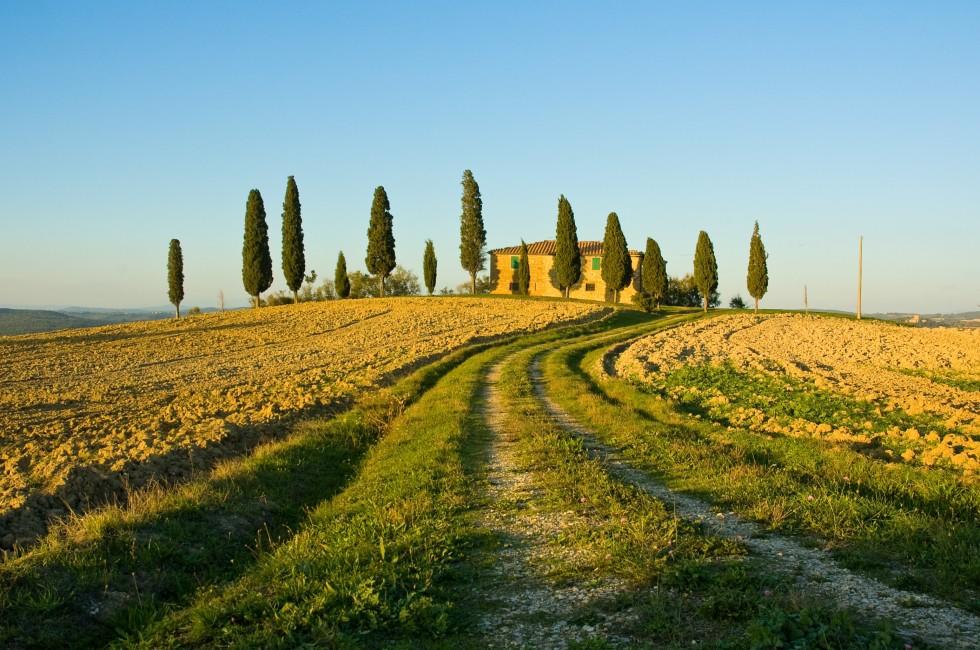
Fodor's Essential Italy 2024 For over 80 years, Fodor's Travel has been a trusted resource offering expert travel...
Midway down the Italian peninsula, Tuscany (Toscana in Italian) is distinguished by rolling hills, snowcapped mountains, dramatic cypress trees, and miles of coastline on the Tyrrhenian Sea—which all adds up to gorgeous views at practically every turn. The beauty of the landscape proves a perfect foil for the region's abundance of superlative art and architecture. It also produces some of Italy's finest wines and olive oils. The combination of unforgettable art, sumptuous landscapes, and eminently drinkable wines that pair beautifully with its simple food makes a trip to Tuscany something beyond special.
Many of Tuscany's cities and towns have retained the same fundamental character over the past 500 years. Civic rivalries that led to bloody battles centuries ago have given way to soccer rivalries. Renaissance pomp lives on in the celebration of local feast days and centuries-old traditions such as the Palio in Siena and the Giostra del Saracino (Joust of the Saracen) in Arezzo. Often, present-day Tuscans look as though they might have served as models for paintings produced hundreds of years ago. In many ways, the Renaissance lives on in Tuscany.
Recommended Fodor’s Video

FODOR'S FINEST
The best hotels in europe.
- Borgo Santo Pietro Tuscany, Italy
See All Hotels >

Quickly find Tuscany Hotels and compare prices.
Things to do, recommended things to do in tuscany see all, explore things to do.
- Sights 195 Listings
- Shopping 26 Listings
- Performing Arts 20 Listings
- Nightlife 3 Listings
Find the perfect tours and activities in Tuscany.
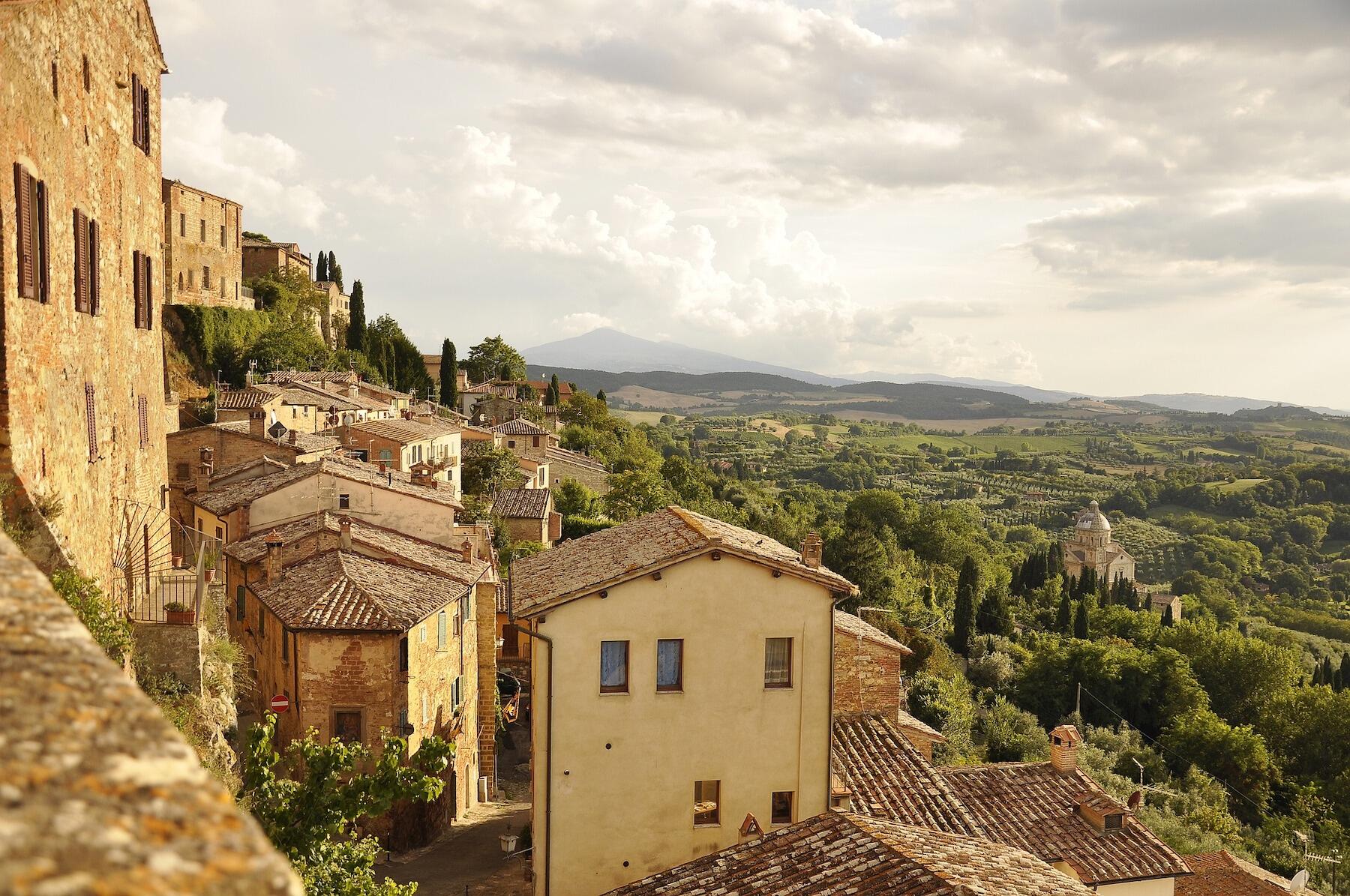
Trip Ideas | Brandon Schultz
Want your own theme song italy can help with that, where to eat, recommended restaurants in tuscany see all, restaurants by {{ strrestaurantdropdown }} neighborhood price range see all filters.
- Pisa, Lucca, and Northwest Tuscany 27 Listings
- Chianti, Siena, and Central Tuscany 5 Listings
- Greve in Chianti 4 Listings
- Lucca 4 Listings
- Arezzo 3 Listings
- $$$$ 6 Listings
- $$$ 8 Listings
- $$ 35 Listings
- $ 40 Listings
See All Filters
Find the best food tours and activities in tuscany..
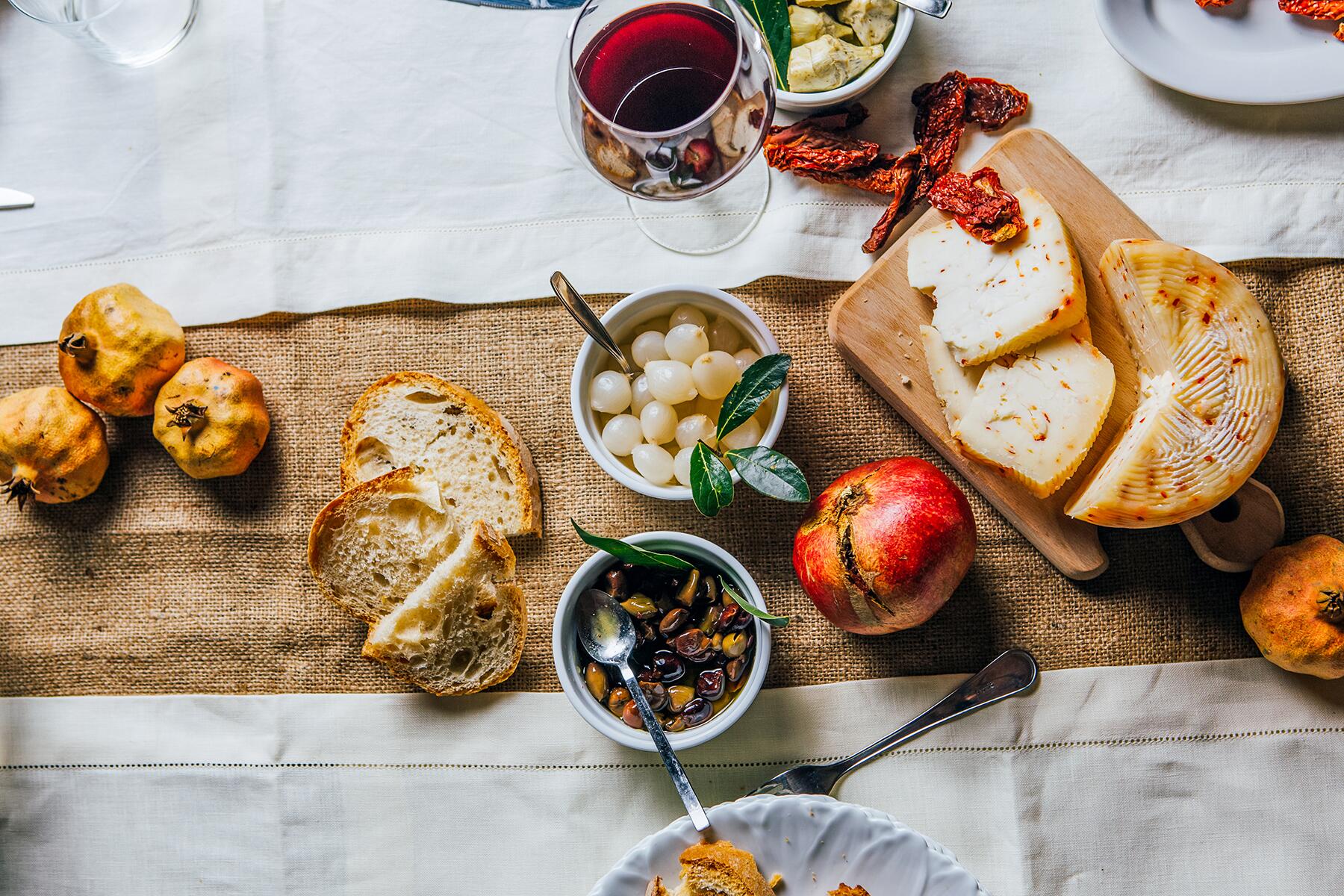
Bites | Liz Shemaria
20 things to eat and drink in florence and tuscany, need to know, nearby airports, electrical outlets, neighborhood guides.
Discover the best neighborhoods in Tuscany with curated recommendations from our editors.
Explore All
Articles See All

Want Your Own Theme Song? Italy Can Help With That A hotel in Tuscany is offering personalized preludes from a resident composer.

20 Things to Eat and Drink in Florence and Tuscany From wild game to sweet wine to pastas and creative bread dishes, these are some of the definitive flavors of Florence and Tuscany.
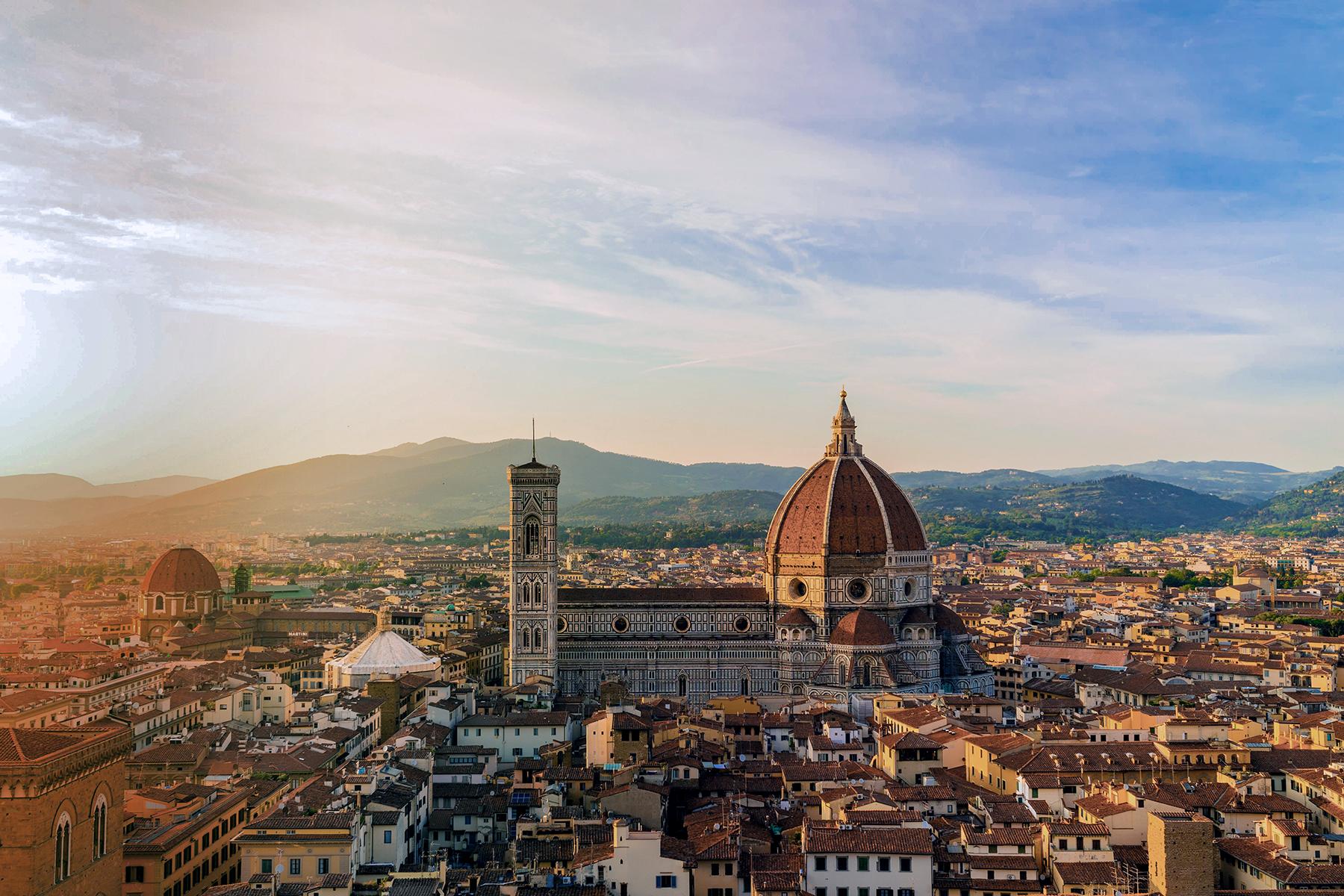
24 Ultimate Things to Do in Florence and Tuscany Museums, tower climbs, sunset views, and pigs that are good luck charms—Tuscany has it all.
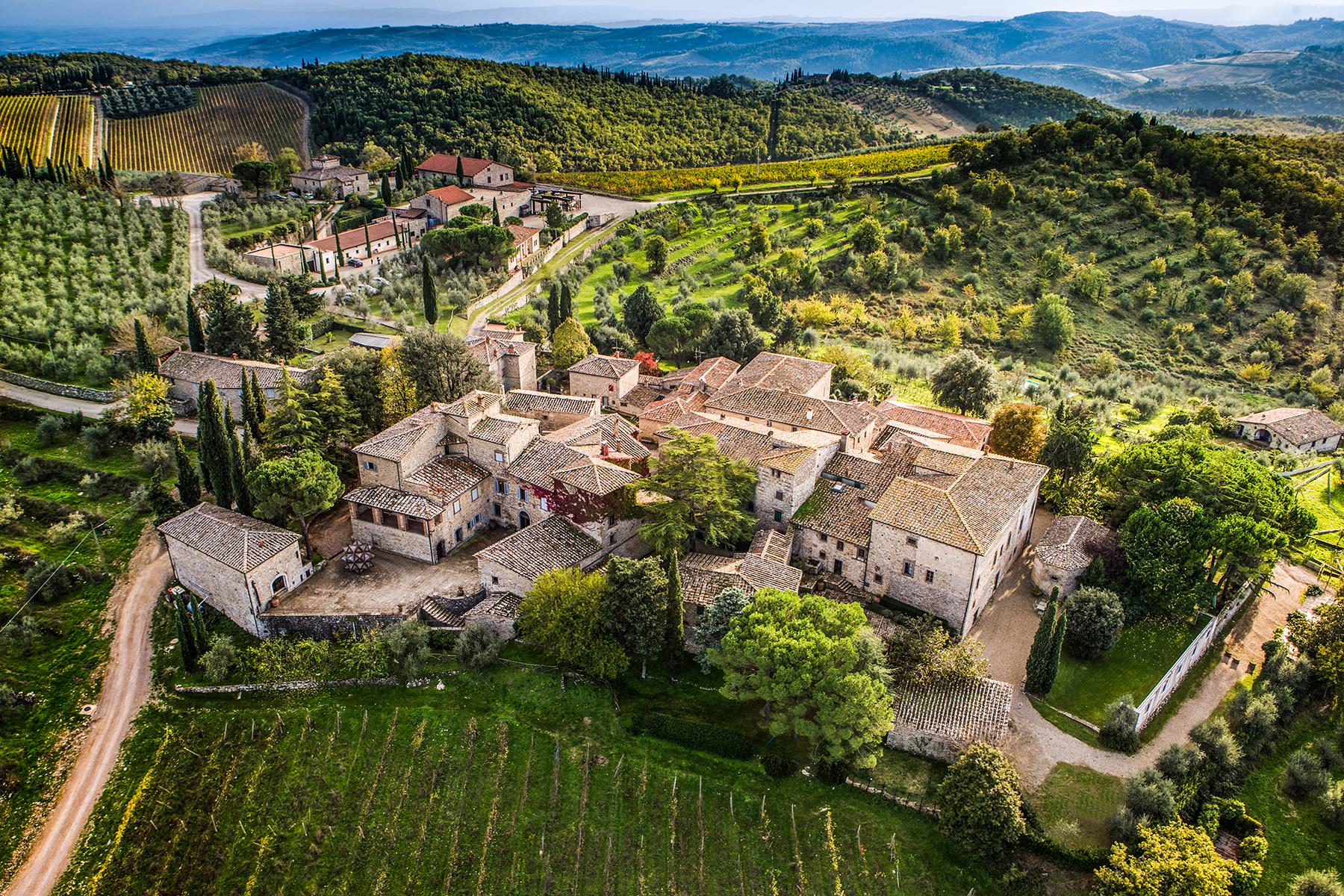
Did You Even Go to Italy If You Didn’t Visit the 10 Best Wineries in Tuscany? Sloping vineyards, charming hill towns, and gorgeous wine estates all add up to Tuscany being one of the most scenic wine regions in the world. These wineries rank for their historic settings, magnificent views, and exceptional vino.
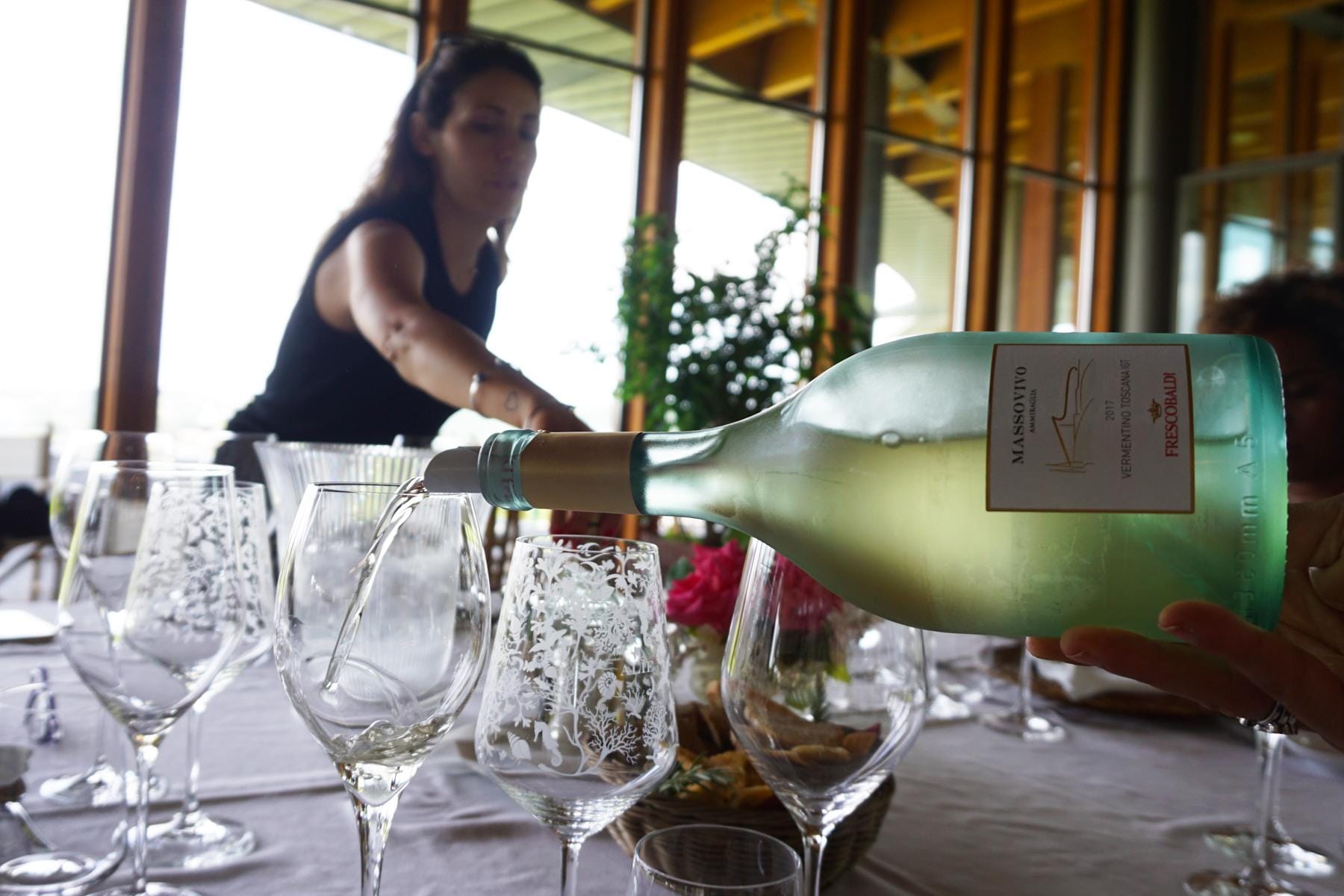
How to Rosé All Day in Tuscany Red, white, or pink?
Our worldwide travel correspondents bring you the best and most up-to-date coverage of over 7,500 global destinations.

Fodor's Best of Italy: With Rome, Florence, Venice & the Top Spots in Between For over 80 years, Fodor's Travel has been a trusted resource offering expert travel...
- Destinations
- Award Licensing
- Advertising
- Content Licensing
- Fodor’s Travel Use of this site indicates your consent to the Terms of Use. Copyright © 2024 by MH Sub I, LLC dba Internet Brands. Fodor’s is a registered trademark of MH Sub I, LLC dba Internet Brands. All rights reserved.
Thank you for your interest!

IMAGES
VIDEO
COMMENTS
21 Replies to "How to Experience the Best of Tuscany: 12 Travel Tips for Italy's Heartland" Rick Spring says: July 31, 2019 at 4:46 pm. Cameron, Just wondering if you, Sarah Corfield, or any of the guides (including Rick) have been to 'Basco della Ragnaia', just outside the village of San Giovanni D'Asso? It's an interesting art ...
The Apuan Alps. The Parco Naturale delle Alpi Apuane stretches across two areas of northeastern Tuscany that few people take the time to visit, Lunigiana and Garfagnana. The rugged Apuan Alps take their name from their resemblance to the actual Alps, although they are much smaller in size with peaks under 2,000 meters.
13. Plan to eat late at dinner, but make sure you're on time at lunchtime! Since lunch is always around 1pm (restaurant kitchens start closing up around 2.30-3pm), make sure you are on time for lunch. Otherwise you will be going around looking for a place to eat and only find ready-made panini at bars and such.
Go truffle hunting. Among the more unique things to do in Tuscany is truffle hunting: you, a dog, and the forest on a quest to find truffles-what a perfect way to spend an afternoon in Tuscany! Truffles are not only delicious and expensive but they also can't be farmed. READ NEXT.
Tuscany. With its manicured fields, rustic farms, cypress-lined driveways, and towns clinging to nearly every hill, Tuscany is our romantic image of village Italy. Venture beyond the fringes of Florence and you'll find a series of sun- and wine-soaked villages, each with its own appeal. Stretching from the Umbrian border to the Ligurian Sea ...
Planning Your Trip. Best Time to Visit: April through October is when Tuscany's at its best, but it's also among the most-crowded times to visit. If you visit during November, you'll strike a happy medium of good weather and fewer crowds. (Added bonus: November is also truffle season!) Language: Italian, which developed in Tuscany and was ...
Traveling by train to Tuscany is easy from the major Italian cities. Take the high speed rail services and you can be in Florence in 90 minutes from Rome, 2.5 hours from Venice, under 2 hours from Milan and around 40 minutes from Bologna. If you're driving, you can reach Florence from Rome along the A1/E35.
Tuscany. Italy, Europe. Check out this year's Best in Travel winners. With its lyrical landscapes, world-class art and a superb cucina contadina (farmer's kitchen), the Tuscan experience is perfectly in symbiosis with the land. Attractions.
Day 2: Florence (sleep in Florence) Day 3: Florence (sleep in Florence) Day 4: Florence (sleep in Florence) Day 5: Bus to Siena (1.5 hours; sleep in Siena) Day 6: Siena (sleep in Siena) Day 7: Rent car, drive Crete Senesi route to Montepulciano (sleep in Montepulciano) Day 8: Follow our guidebook's "Heart of Tuscany Drive," with a stop in ...
Guide to the best hotels and things to do in Tuscany, Italy. Maps, travel tips and more.
Step 2: Start in Florence. Florence is a great starting point. You'll probably arrive in Italy via Rome, but I don't recommend driving in Rome if you've not been before. You can take a train to Florence in less than two hours and navigate easily from there.
One Week Tuscany Itinerary Day 1 - Florence. Florence is one of the most beautiful cities in Italy and is not to be missed in any Tuscany itinerary.. One full day is the minimum that you need in order to see the main highlights of Florence.You can find more information, tips, and advice for visiting Florence in some of the more detailed guides to the city on our blog.
In a rustic, 12th-century building, this beloved taverna serves traditional Tuscan dishes like ribollita, pappa al pomodoro, handmade pici, and cinghiale (wild boar) when it's available. Be sure to book in advance, as it's ever-popular with locals and travelers alike. Via Giovanni Duprè, 132. +39 0577 42286.
More Tuscany travel info: If you could use some one-on-one help planning your trip to Tuscany, schedule a Tuscany travel consultation with one of our Local Experts! Private guided tours in Tuscany. 7-day Tuscany itinerary. Chianti Classico travel guide. Val d'Orcia travel guide. Guide to Florence. Guide to Siena. Guide to Cortona. Guide to ...
Start your Tuscany road trip and drive to Lucca. Laidback and charming, colorful Lucca is the perfect first stop on your Tuscany road trip and an excellent place to grow accustomed to the ins and outs of driving and parking in Tuscan towns. Lucca is not too big, not too small, and parking is fairly easy to find right outside the city walls.
The up-to-date information and useful tips in this online travel guide to Tuscany will help you to better plan your trip. And get the most from each area. We also try to suggest places that you might not have thought of visiting. Our advice is to mix the most obvious sights, like the Leaning Tower of Pisa or the Uffizi Gallery, with some of the ...
Tuscany travel guide: Getting to Tuscany. You should go to Florence first because it offers many choices of hotel rooms and also convenient to travel to its surrounding areas. Florence's services are also easy to find and relatively inexpensive.
The Eight Best Tuscany Travel Tips. 1. Fly into cheaper European hubs. If you travel to Tuscany from the U.S. or from Northern Europe, avoid the temptation to fly right in to Florence. Airlines do not run as many deals to Florence airports as they do to major traffic hubs like Rome's Fiumicino Airport, three hours form Florence or Milan's ...
A Travel Guide for Italy's Forte dei Marmi. Puccini House Museum in Lucca. Visiting Vinci. The 10 Most Adventurous Things to Do on Tuscany's Elba Island. The Best Time to Visit Tuscany. The region's map reads like your favorite trattoria's wine list: Chianti, Montepulciano, Brunello.
The best travel tips for visiting Tuscany . Indeed the era we know as the Renaissance, which played so large a role in forming the culture not just of Italy but of Europe as a whole, is associated more strongly with this part of the country than with anywhere else.. Florence was the most active centre of the Renaissance, flourishing principally through the all-powerful patronage of the Medici ...
Get information on Tuscany Travel Guide - Expert Picks for your Vacation hotels, restaurants, entertainment, shopping, sightseeing, and activities. Read the Fodor's reviews, or post your own.